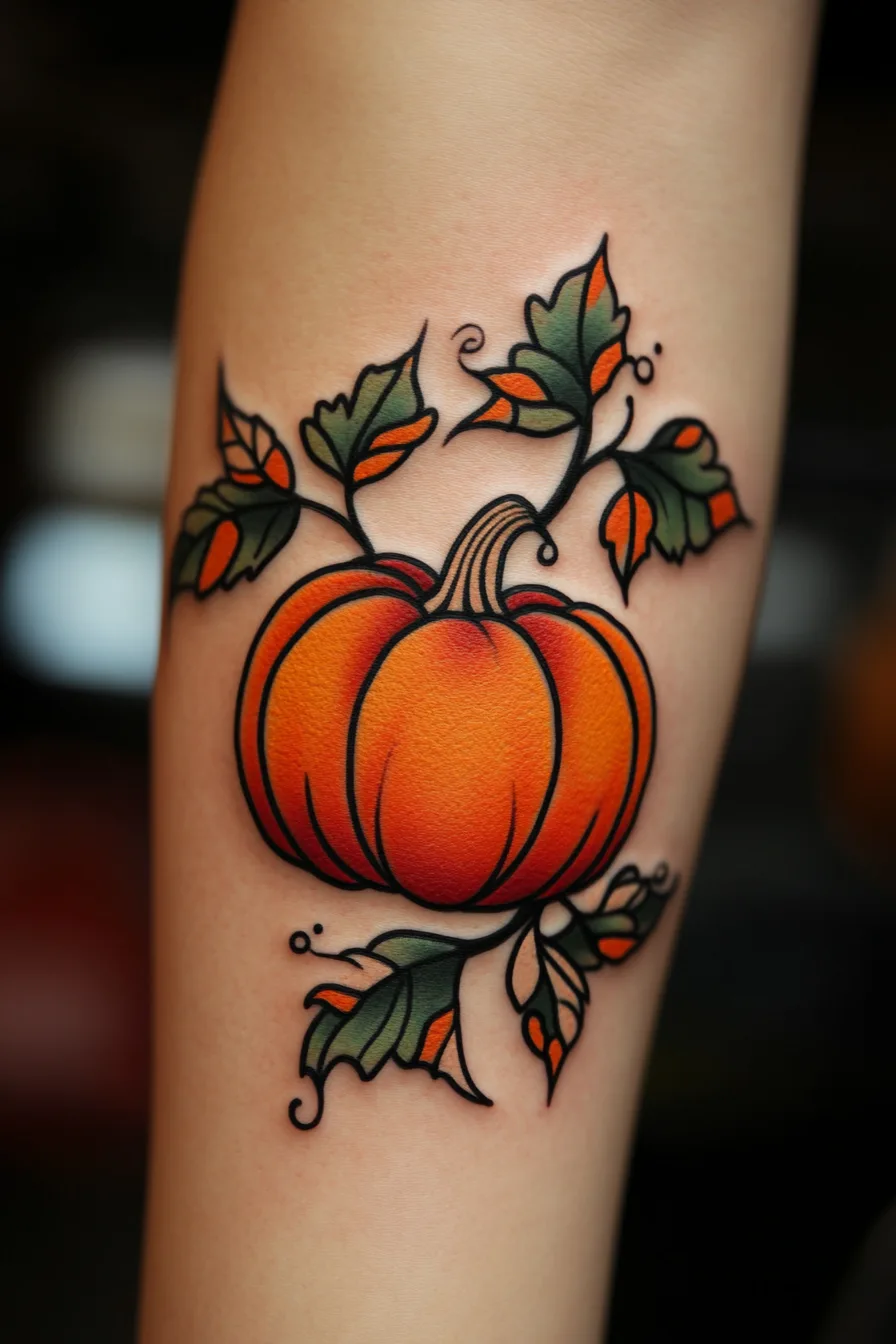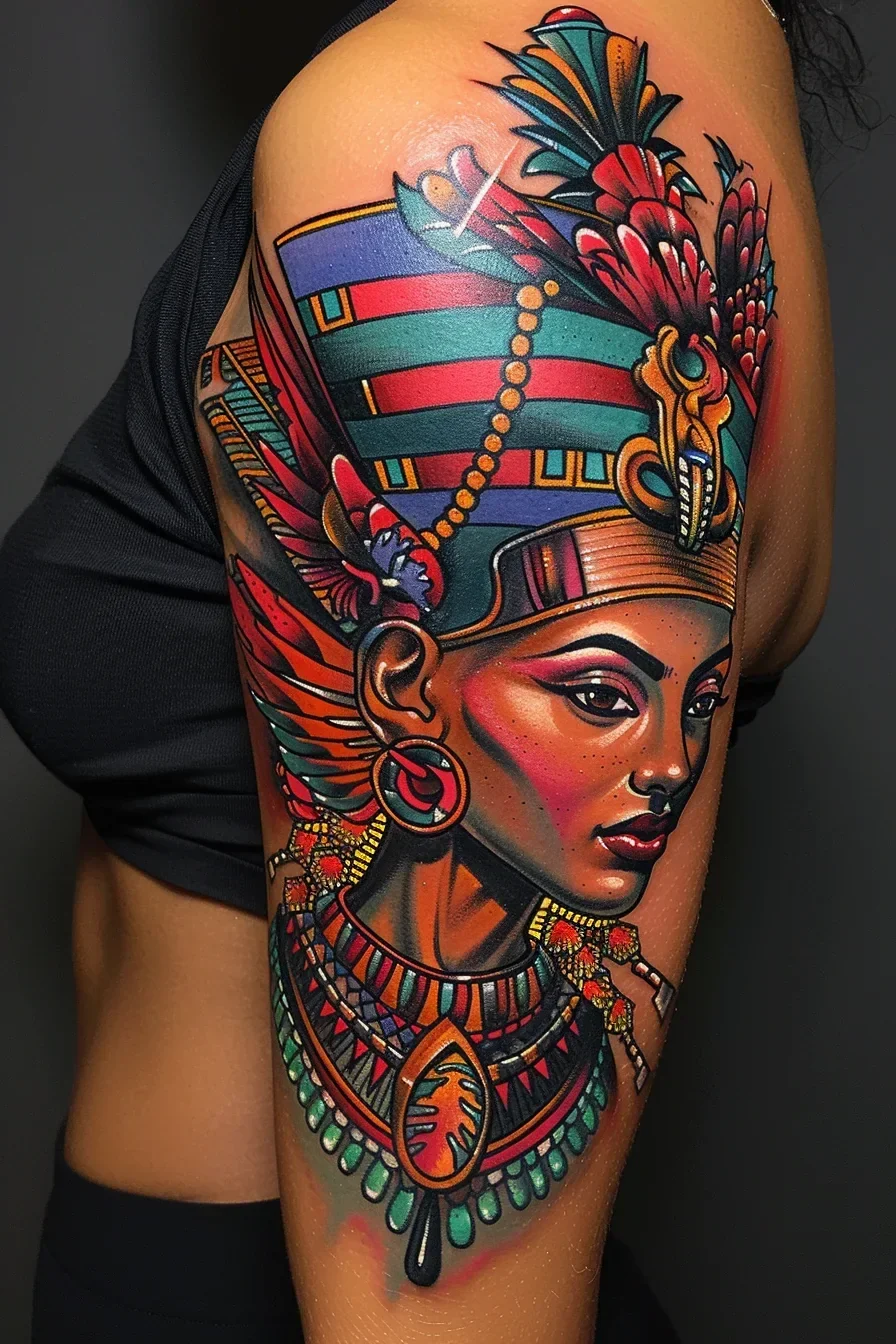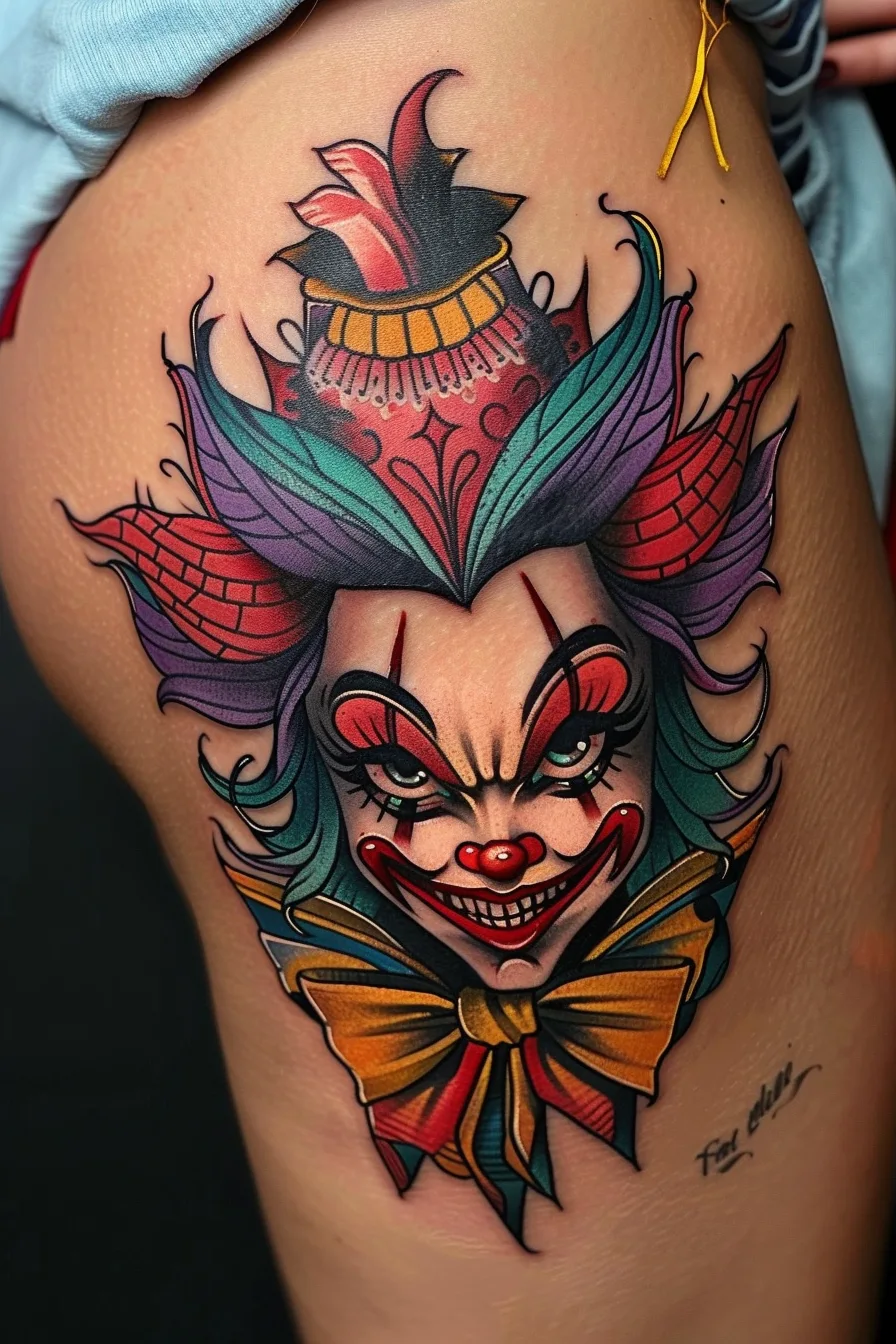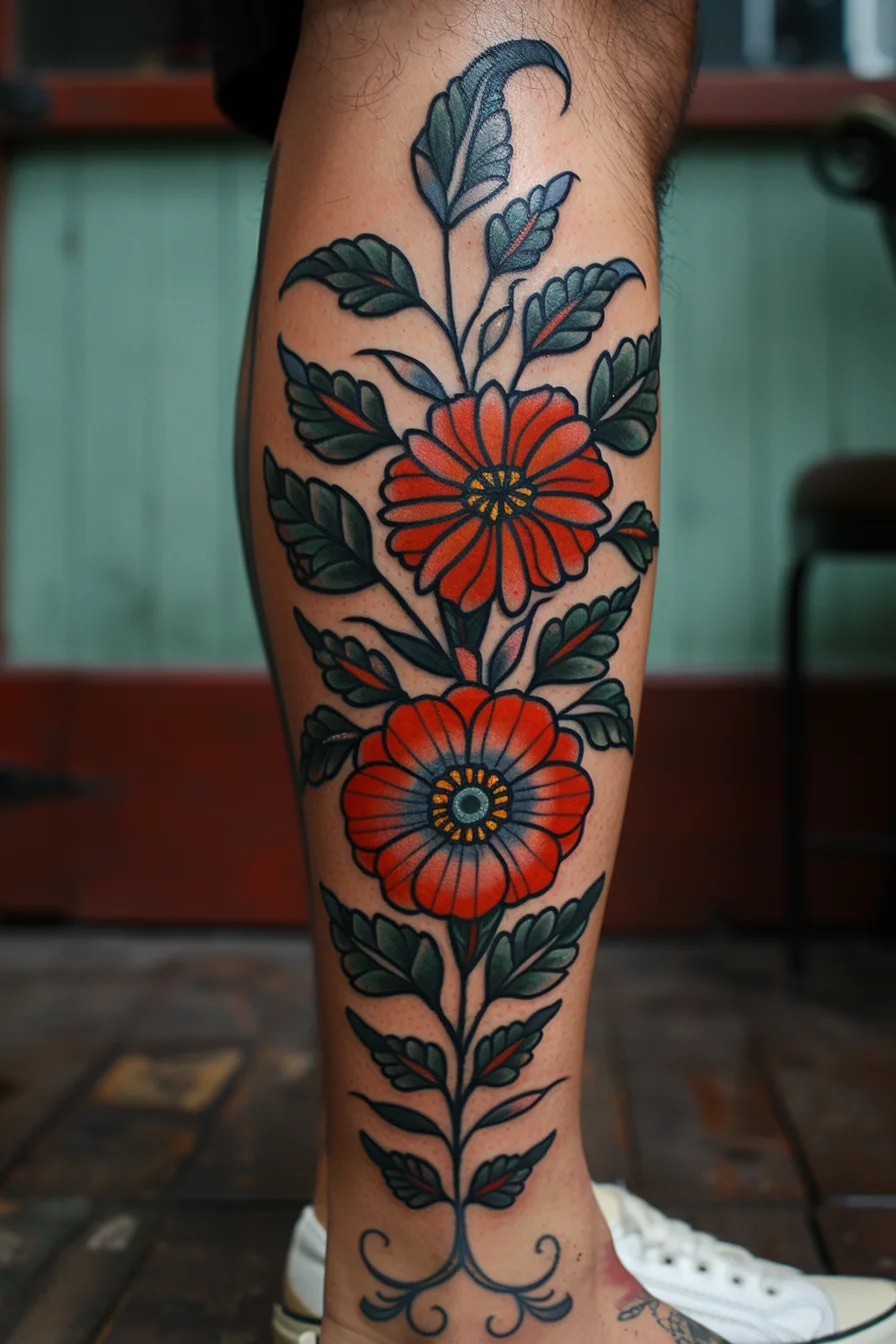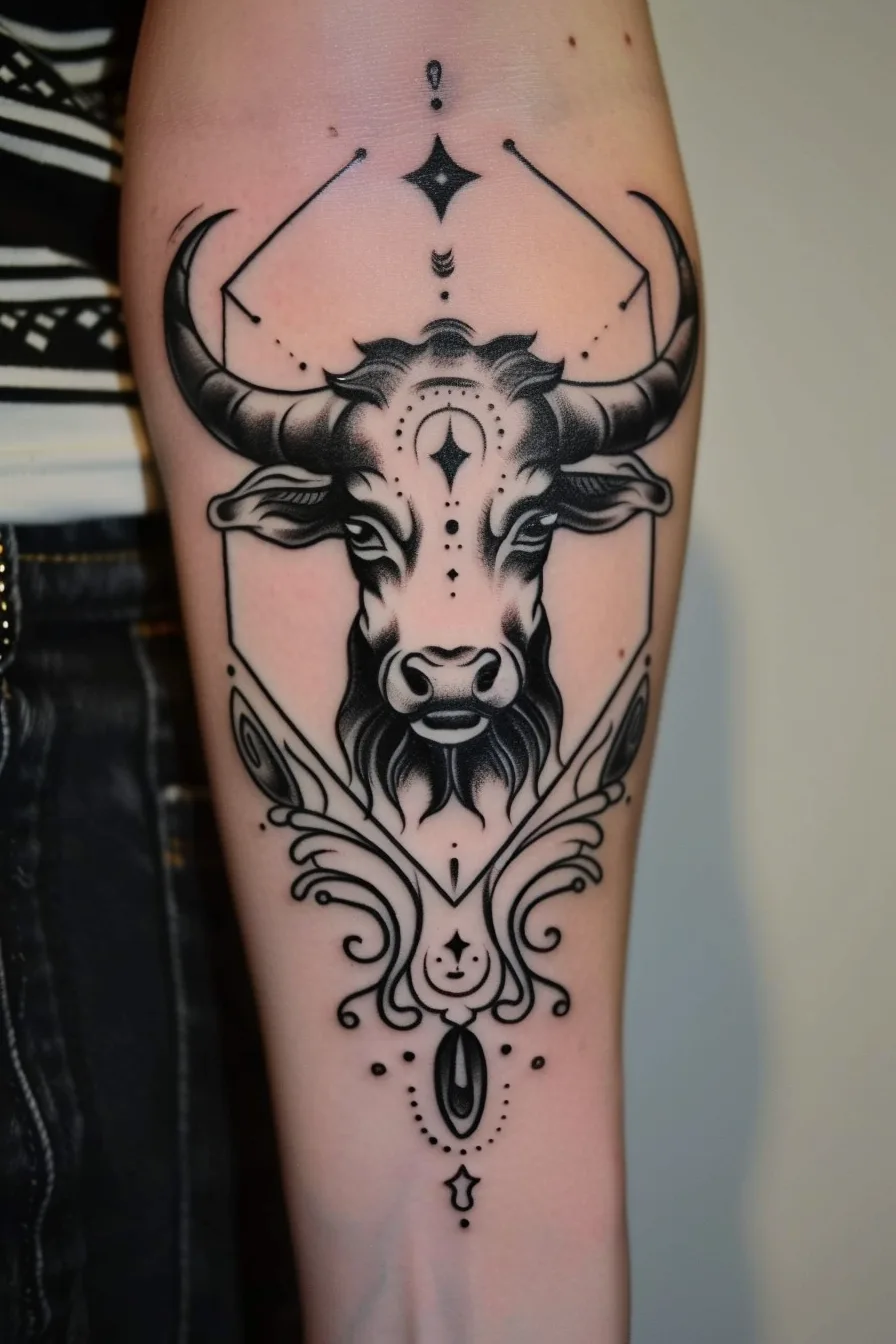The King Tut tattoo is a powerful symbol deeply rooted in ancient Egyptian mythology and the divine rule of the pharaohs. This tattoo represents themes of rebirth, immortality, and eternal power. The design styles can range from watercolor to geometric to realistic, reflecting the rich artistic heritage of ancient Egypt. Color choices like green, black, and orange carry symbolic meanings of renewal, fertility, and life-giving energy.
Common design elements include the ankh, hieroglyphics, the Eye of Ra, and the scarab beetle - all of which have profound cultural significance.
Whether placed on the chest, back, or hand, a King Tut tattoo serves as a lasting tribute to this legendary figure and the enduring legacy of ancient Egypt.
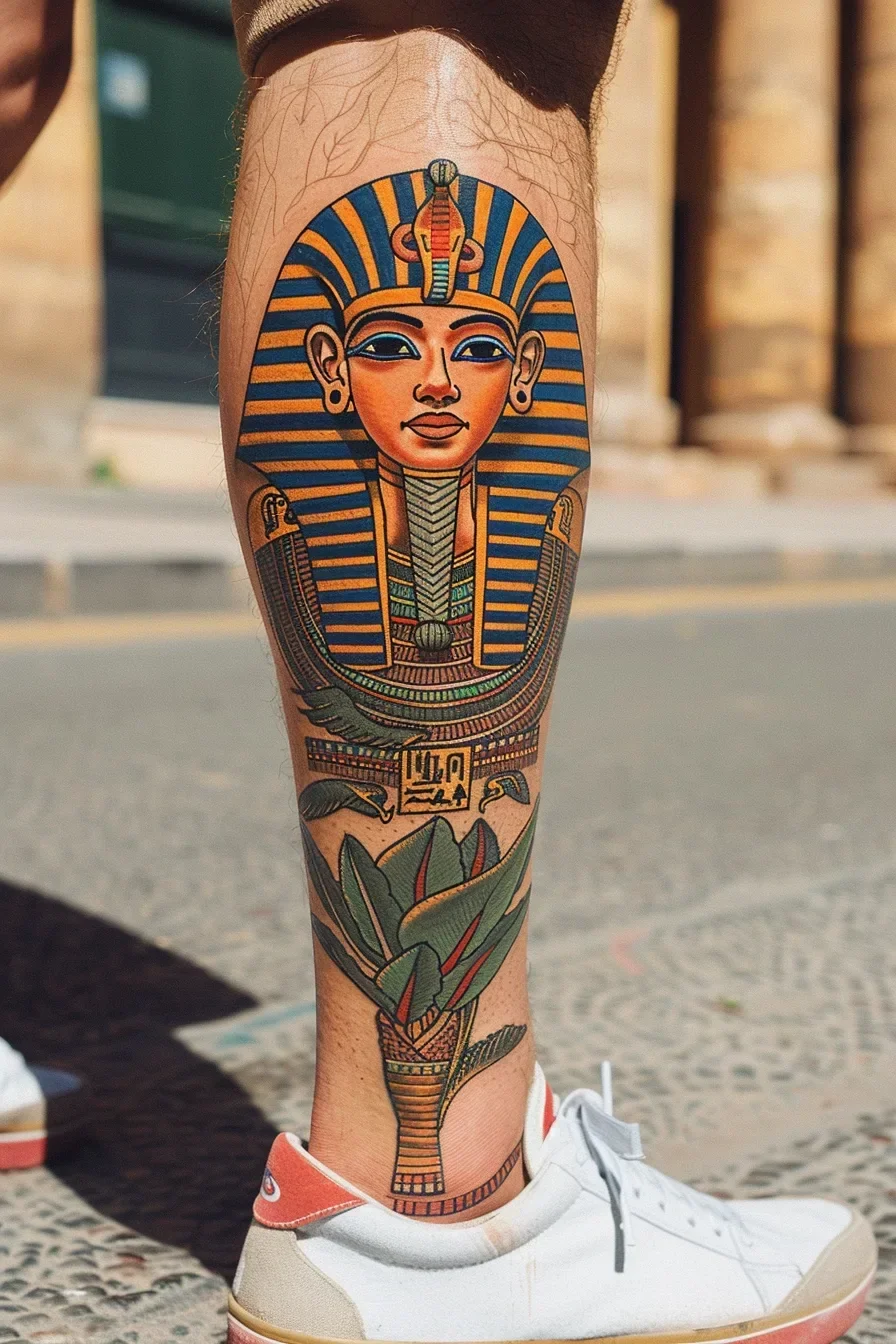
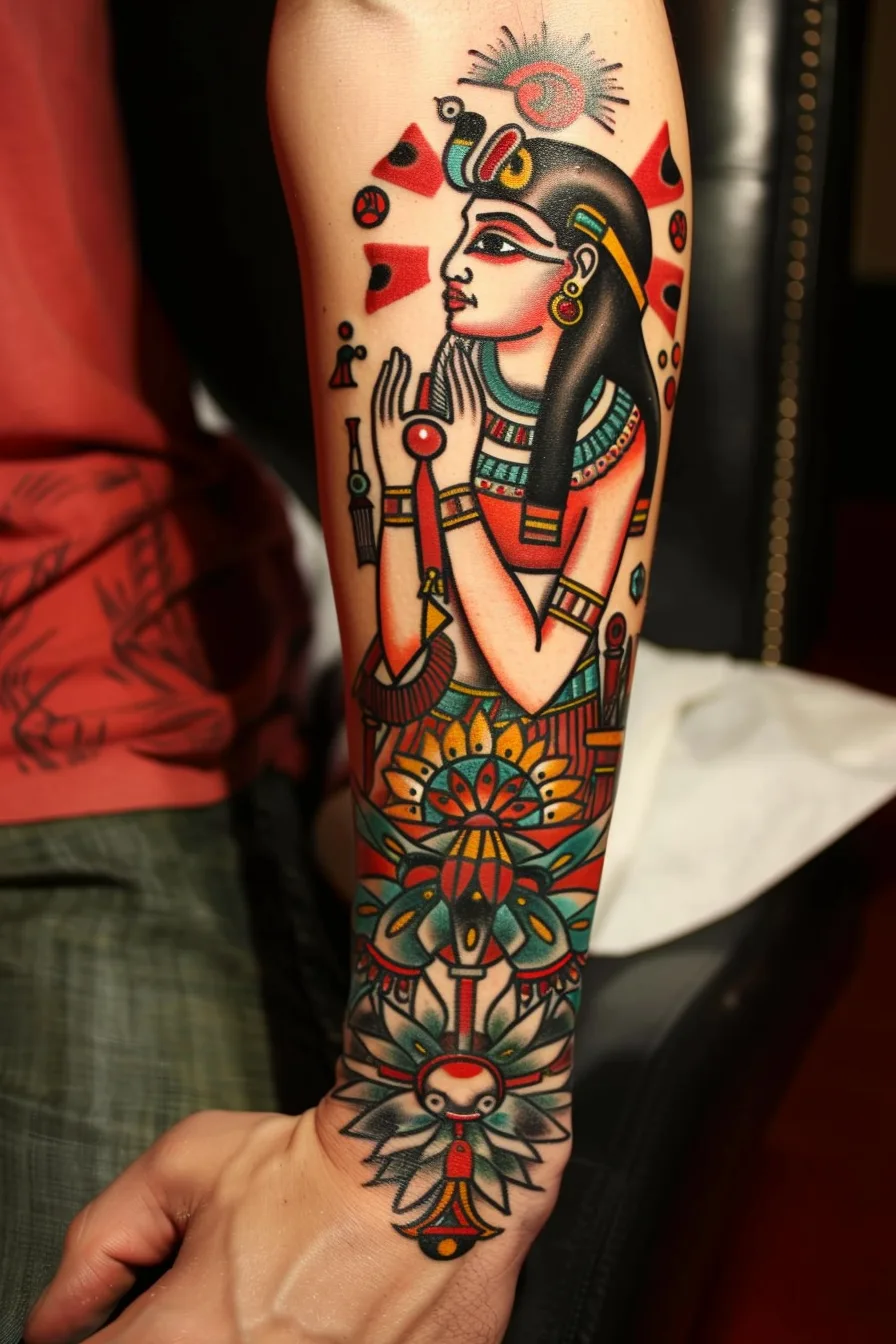
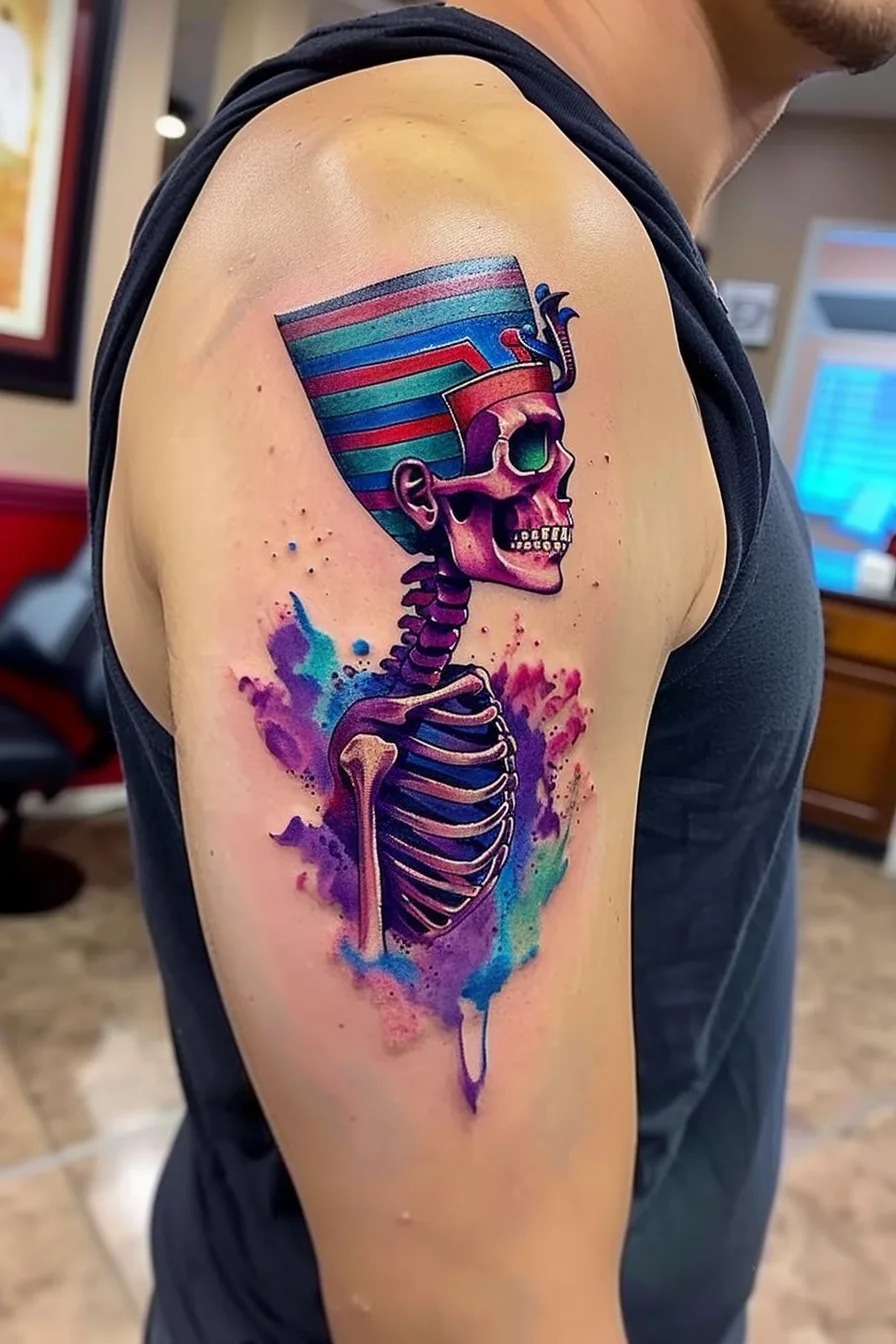
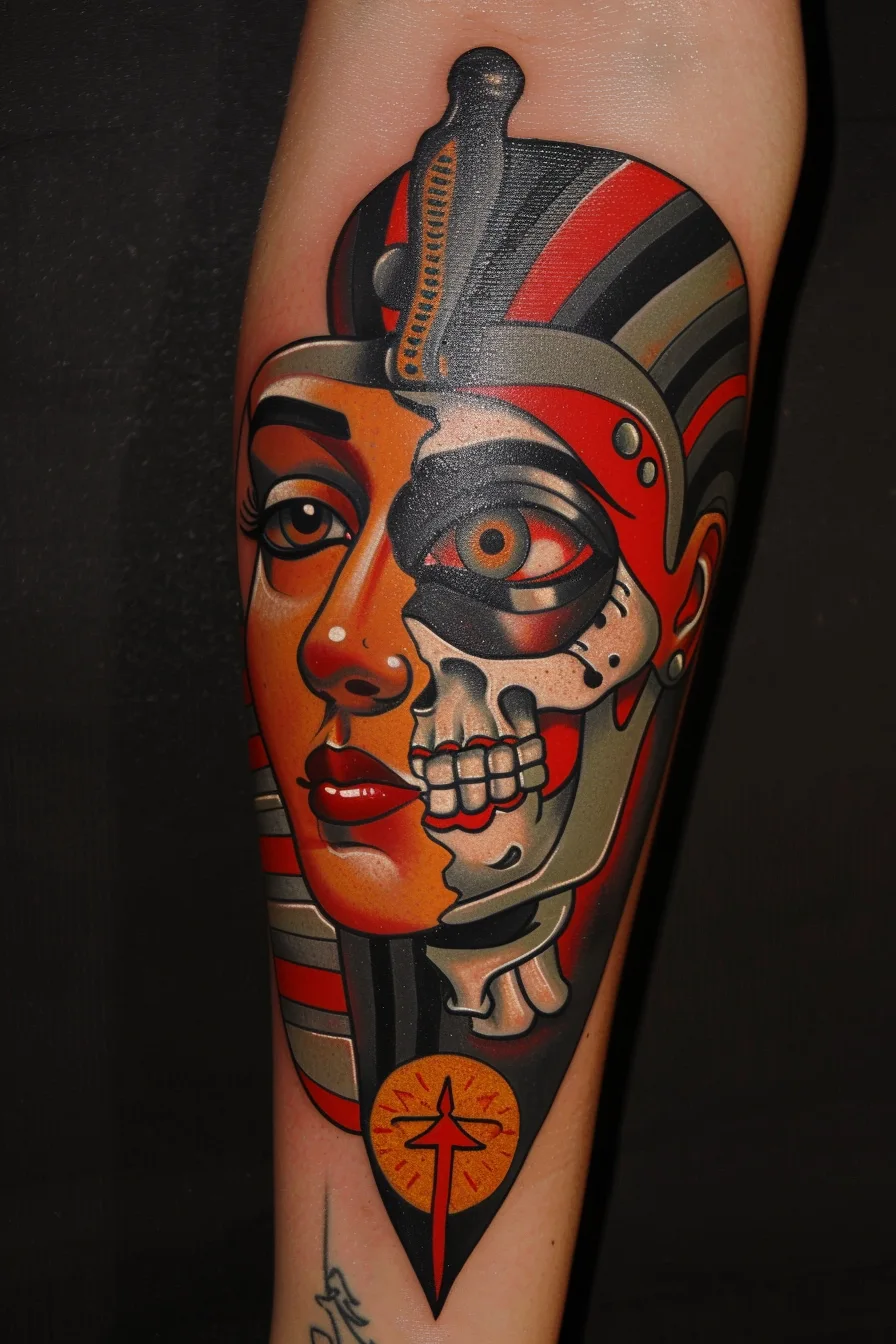
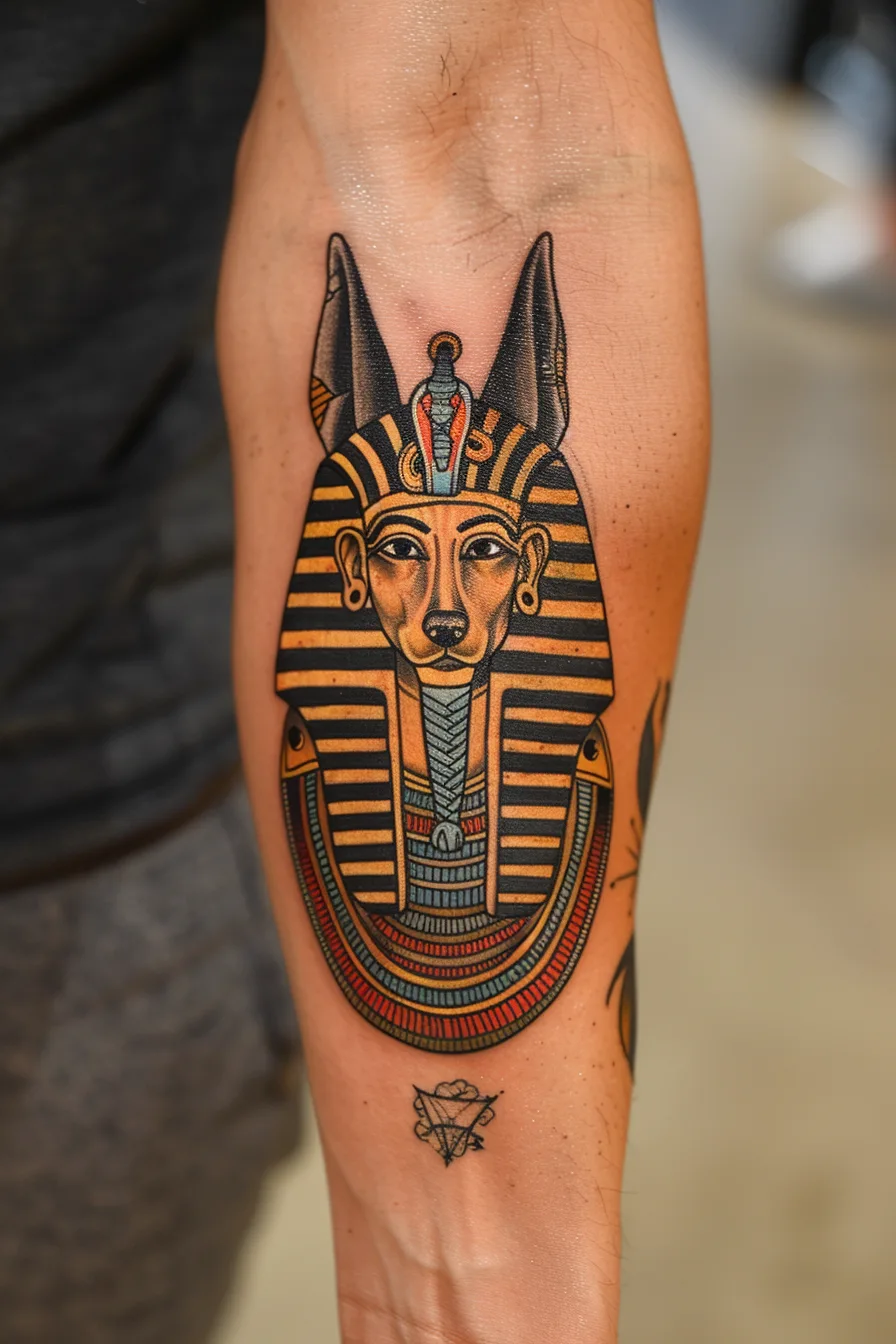
Ancient Egyptian Pharaoh Symbol
The ancient Egyptian pharaoh symbol is deeply imbued with powerful meanings. It represents the concepts of rebirth and immortality, as well as eternal power and prestige.
Moreover, this iconic symbol is closely tied to spiritual enlightenment and transformation, making it a captivating choice for those seeking to honor the enduring legacy of King Tutankhamun.
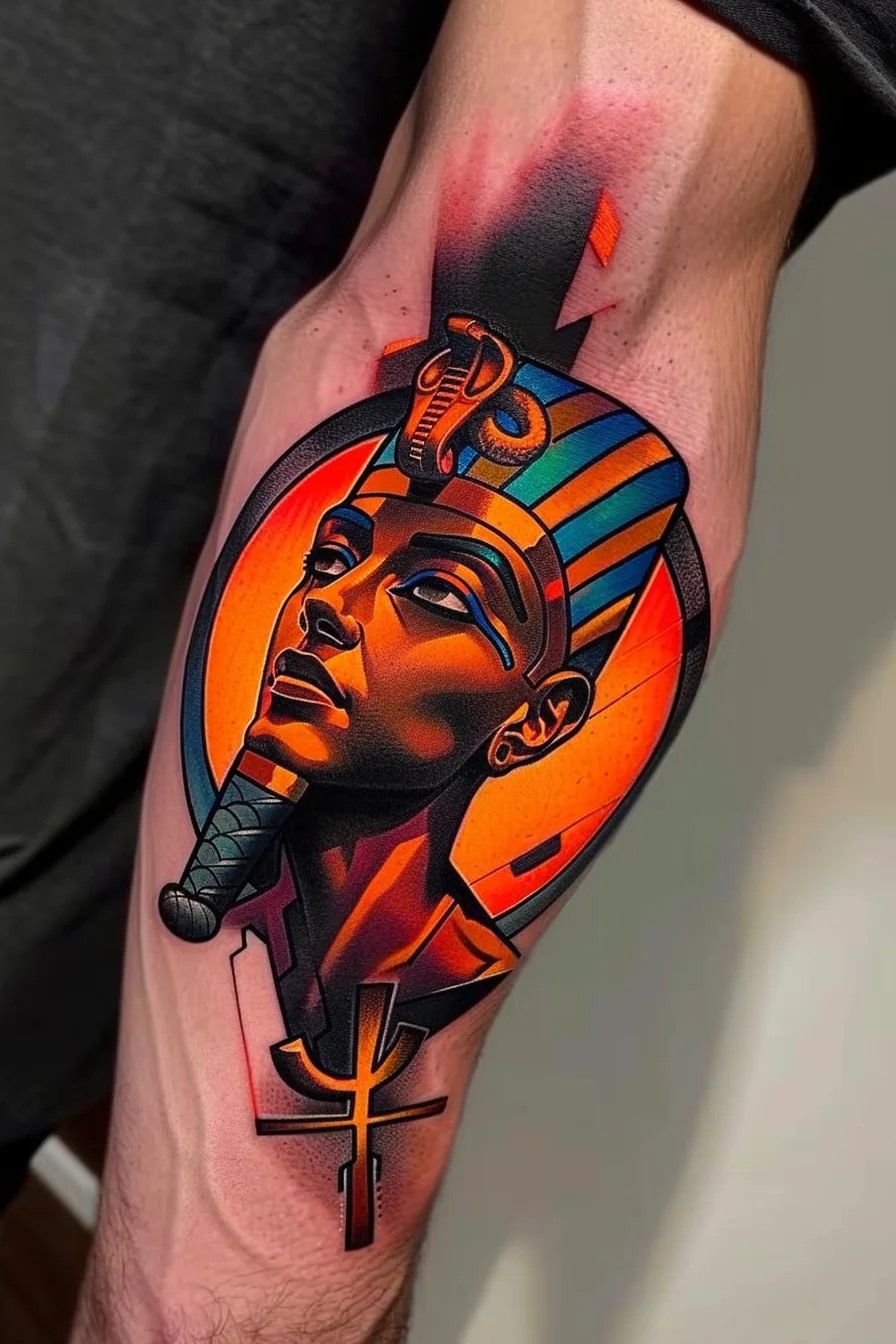
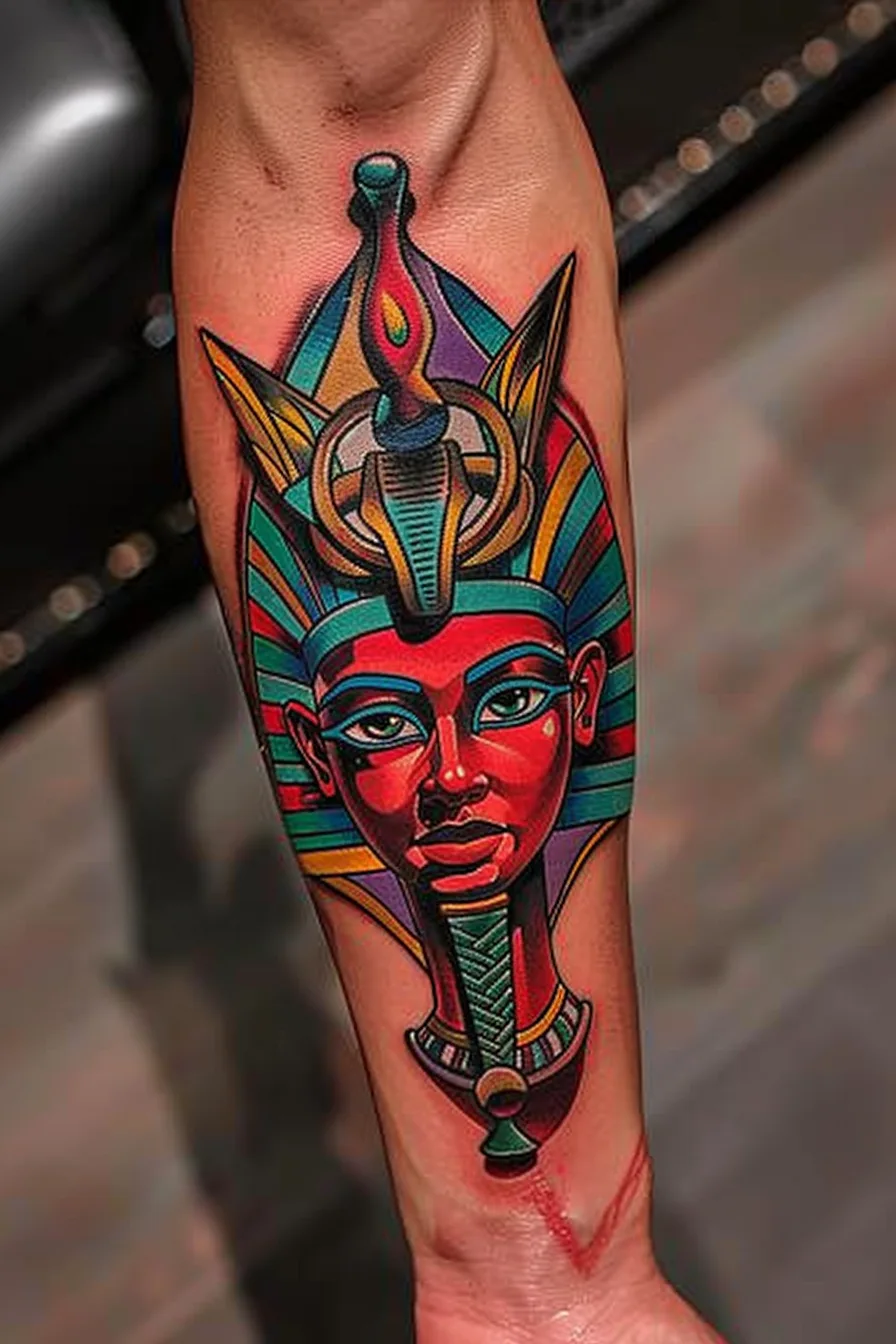
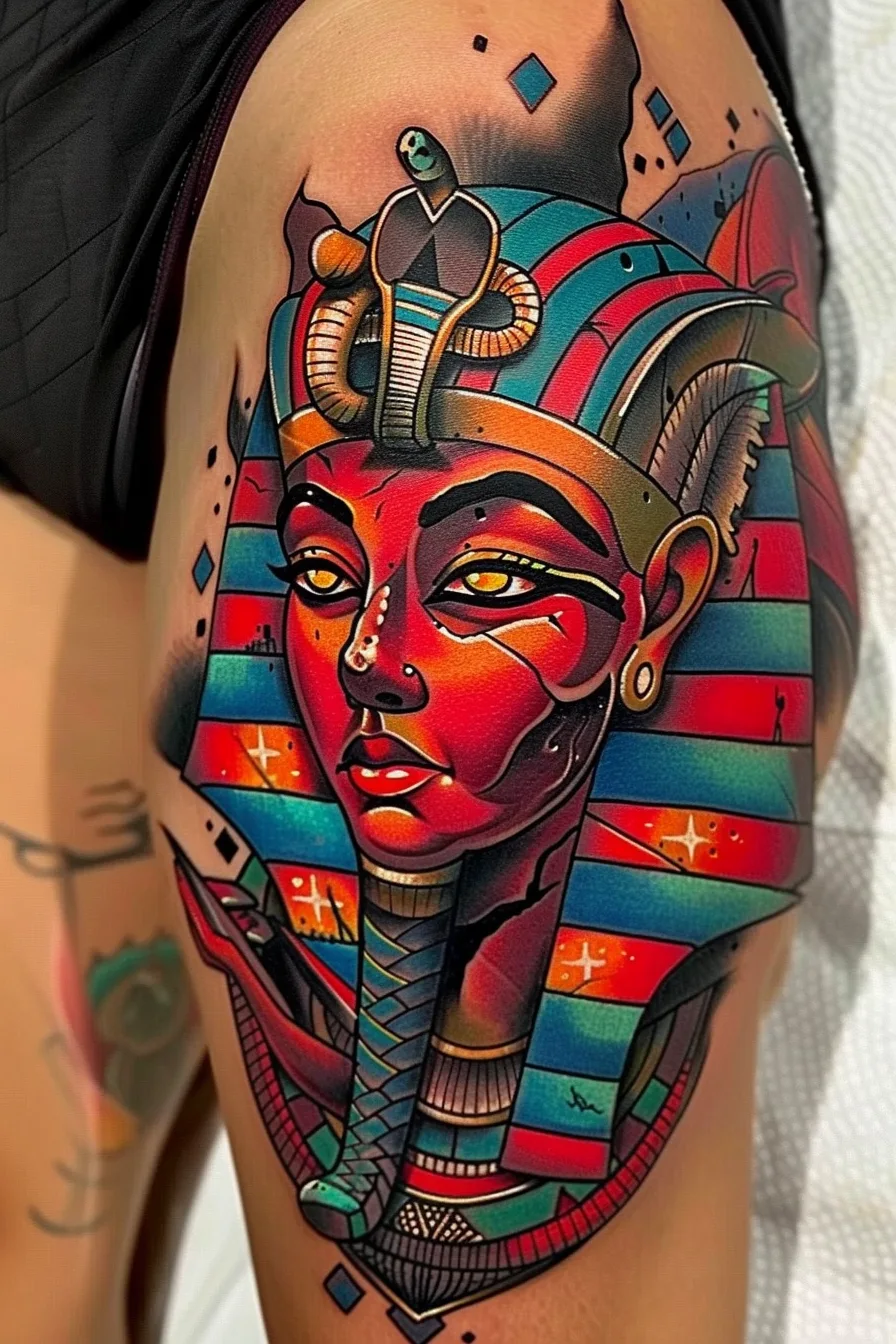
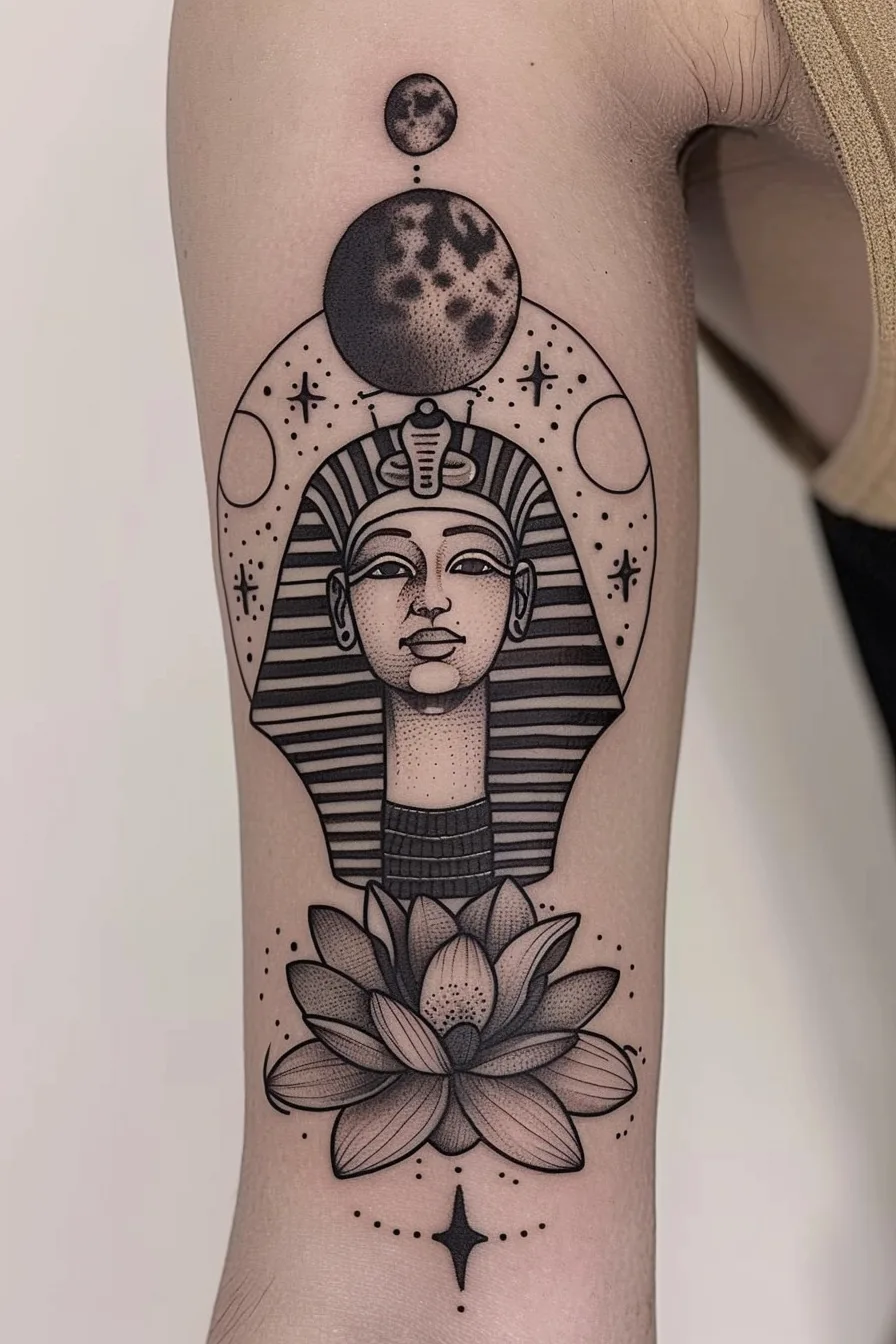
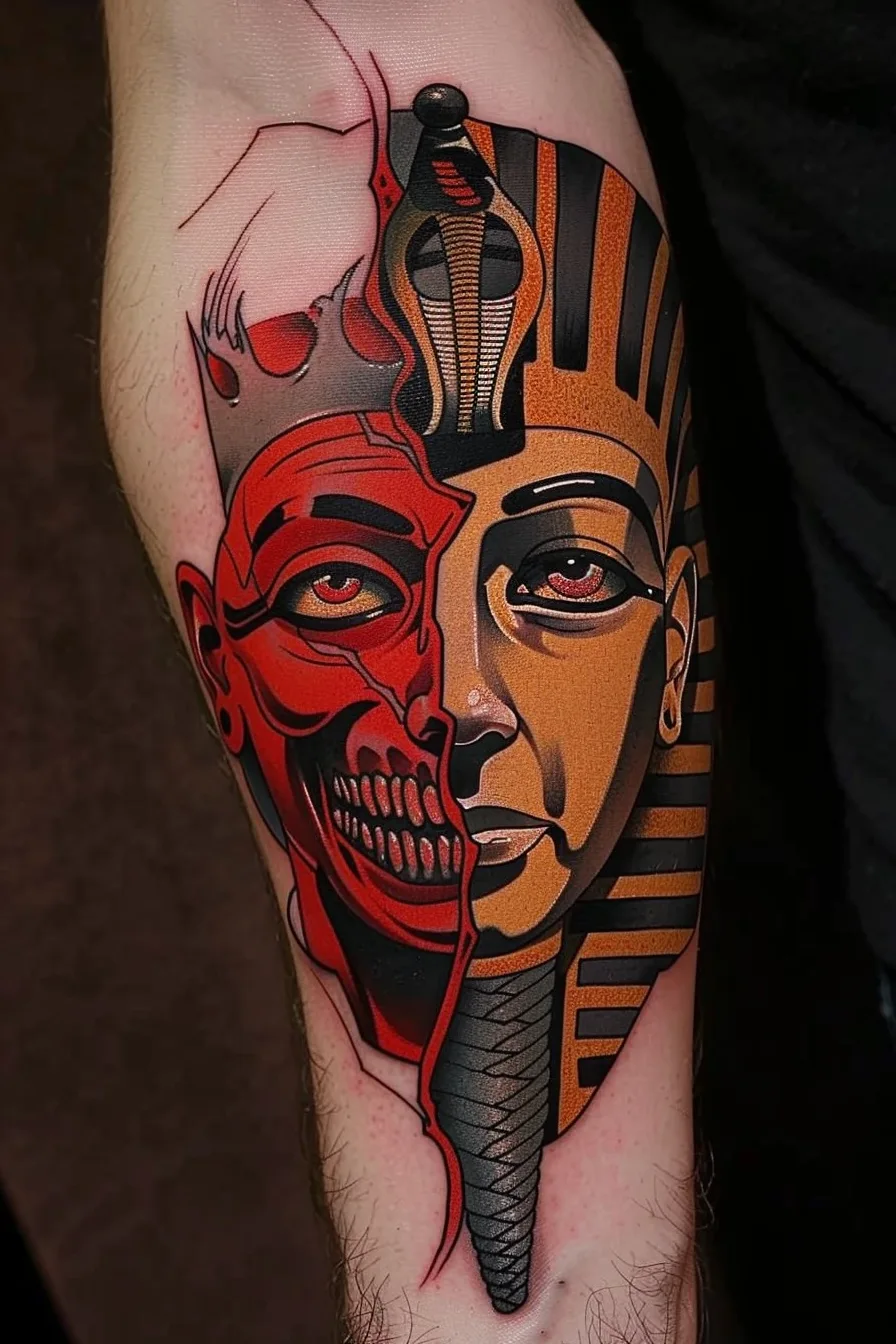
Rebirth and Immortality
In the ancient Egyptian belief system, the image of a pharaoh was closely associated with the concepts of rebirth and immortality. The pharaoh, as a divine ruler, was seen as a living god on Earth, with the power to ensure the continued prosperity and renewal of the kingdom.
The iconic image of King Tutankhamun, with his distinctive headdress and regal pose, has become a timeless symbolism of this cultural significance. The pharaoh's journey through the afterlife, as depicted in the elaborate tombs and funerary rituals, was believed to secure their eternal existence and the continuation of the cycle of life.
This profound connection to the divine and the eternal has made the King Tut tattoo a powerful representation of these ancient beliefs.
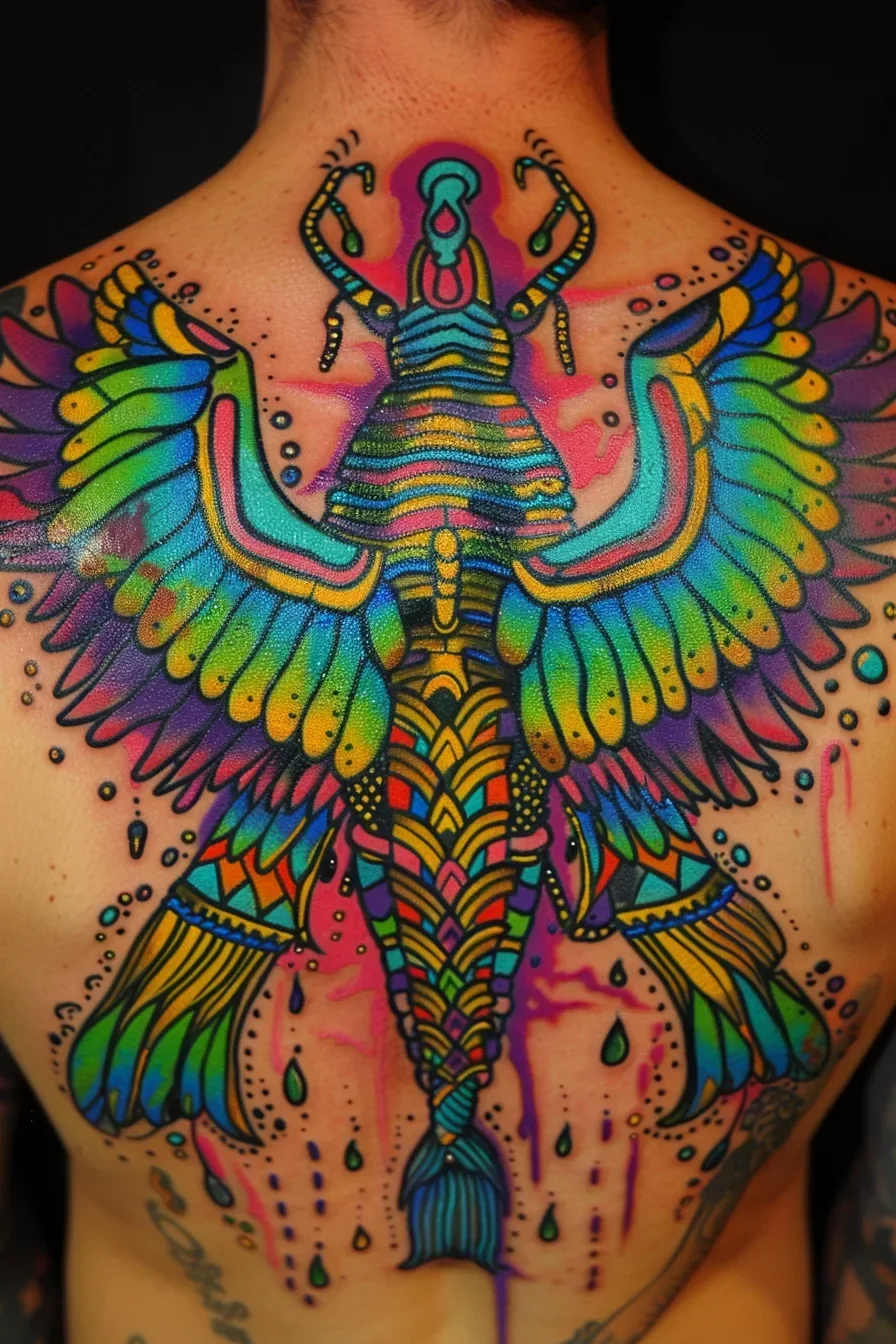

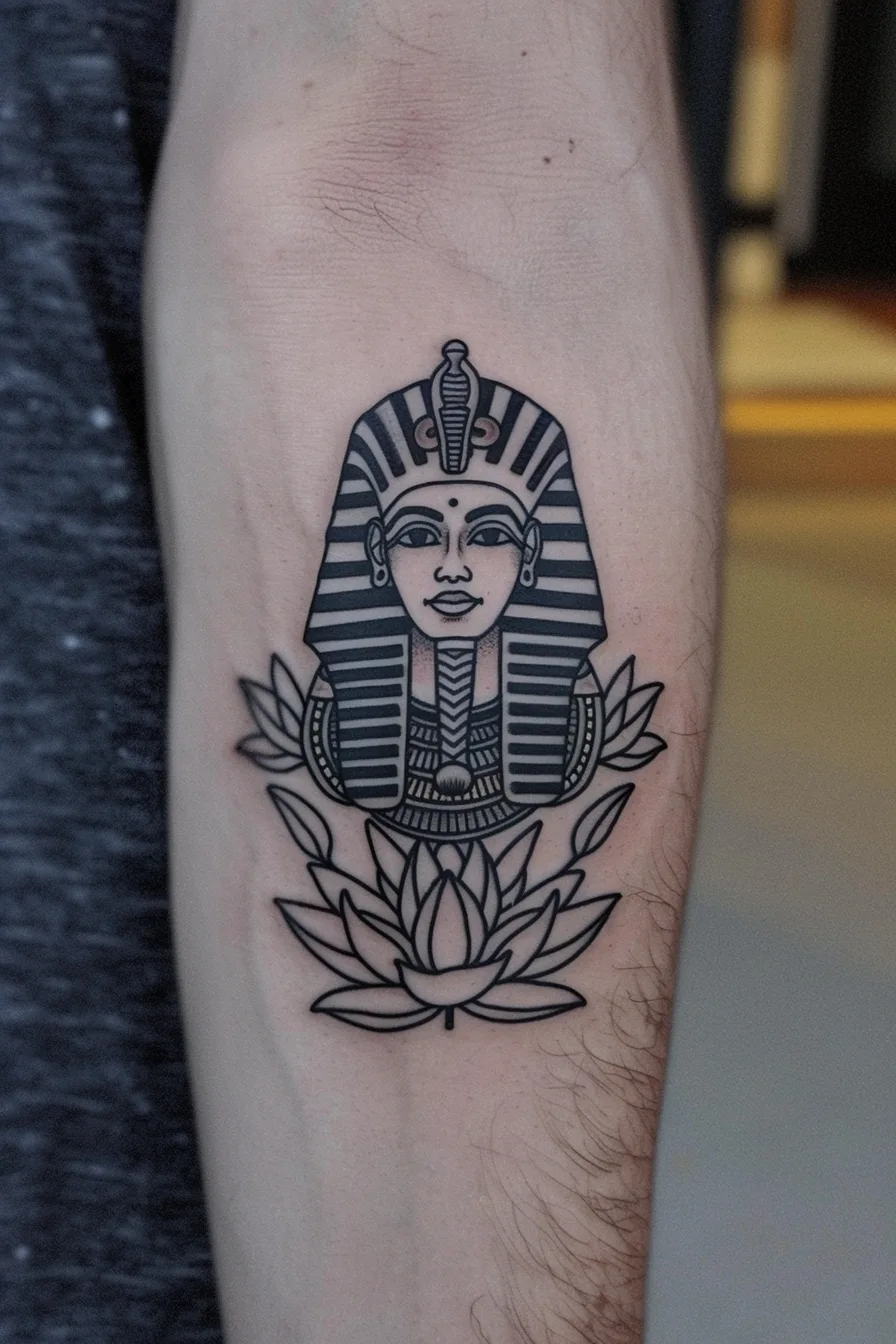
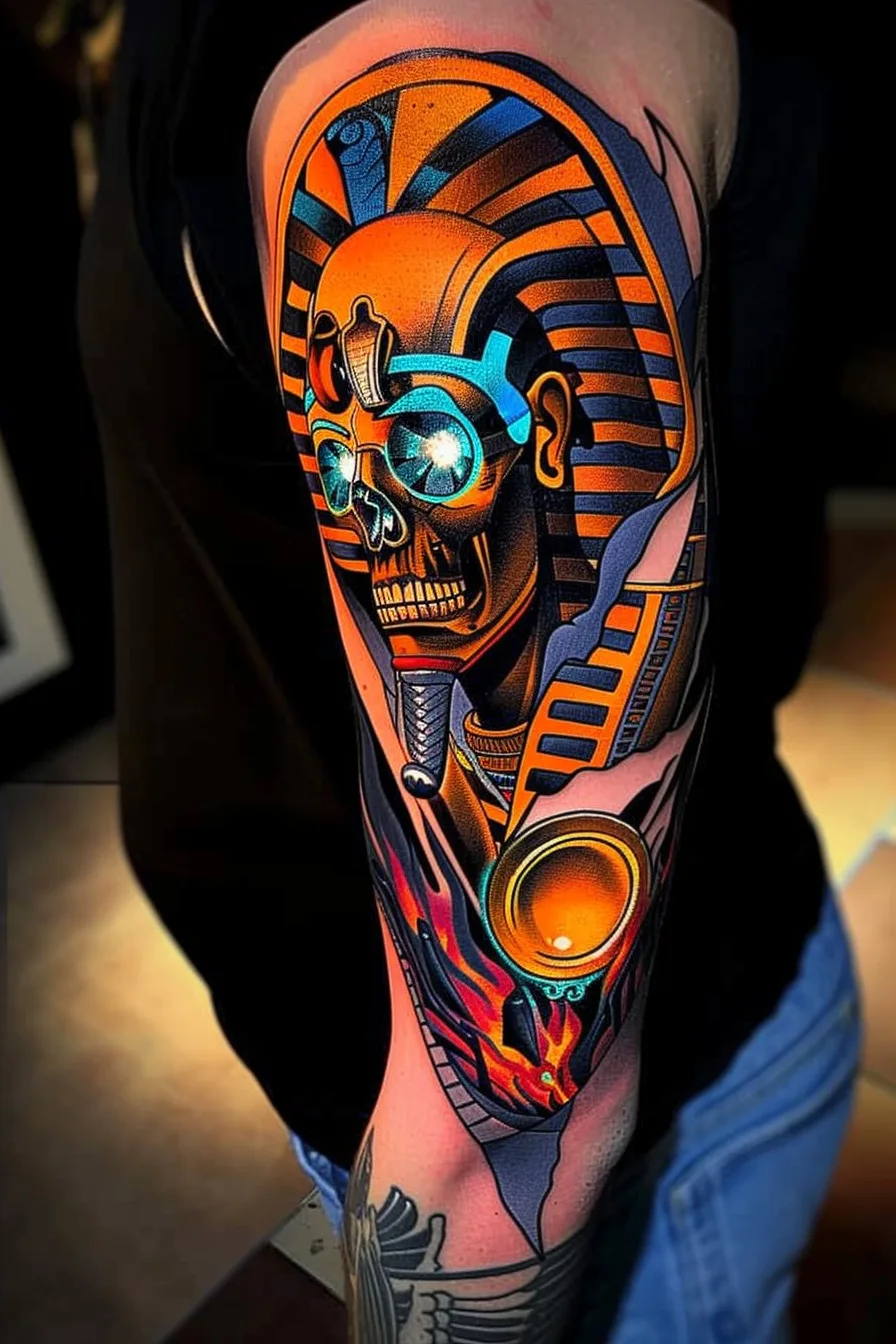
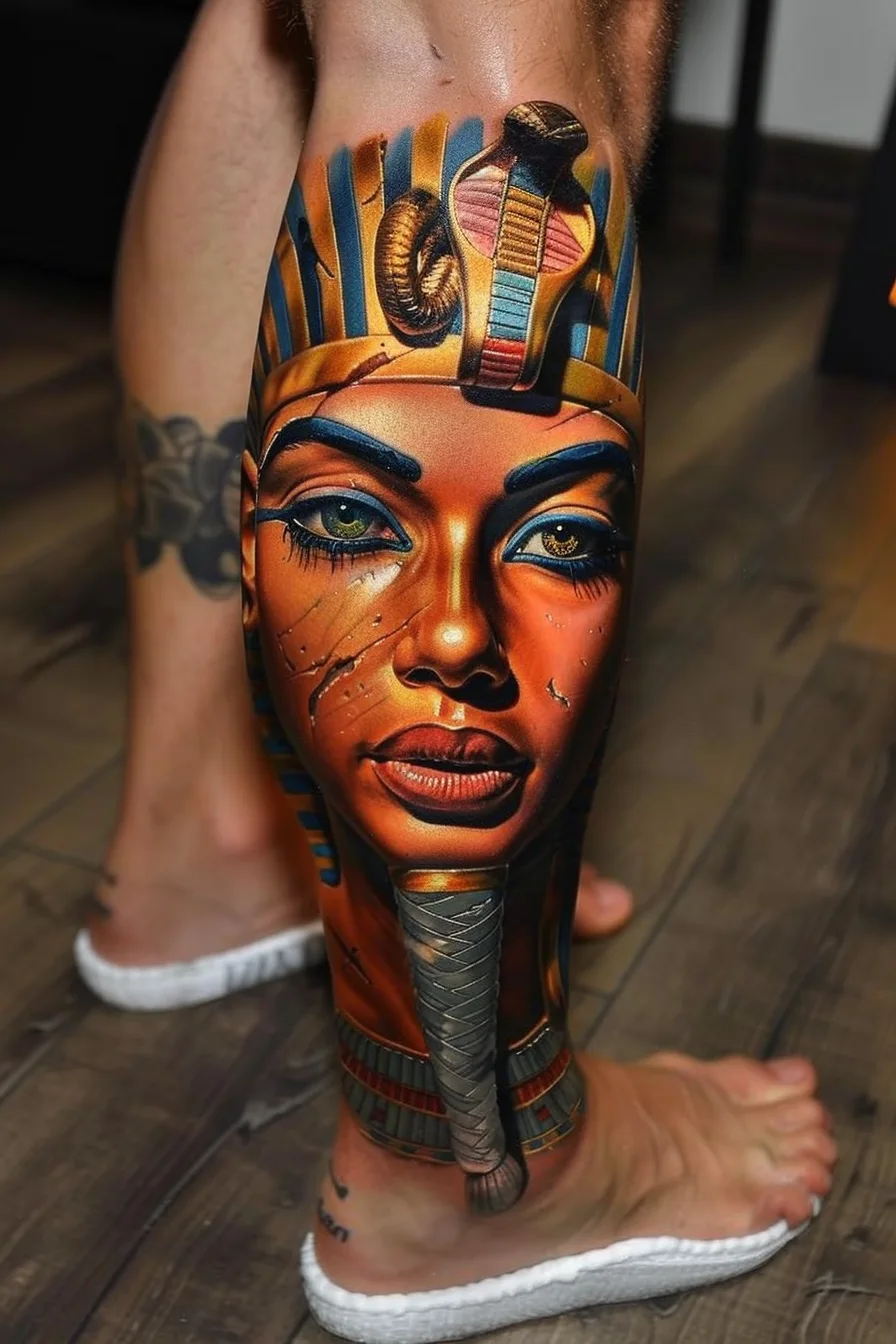
Eternal Power and Prestige
As the divine ruler and living god on Earth, the ancient Egyptian pharaoh embodied eternal power and prestige that extended far beyond the mortal realm. The pharaoh's regalia, including the iconic headdress, represented their exalted status and the divine authority they wielded over the kingdom.
This cultural significance and historical importance were deeply rooted in the pharaoh's role as the intermediary between the gods and the people, ensuring the prosperity and stability of the Egyptian civilization. The pharaoh's eternal power and prestige were often symbolized through the use of specific imagery and motifs, such as the ankh or the cobra, which reinforced their connection to the divine and their position as the supreme leader of the land.


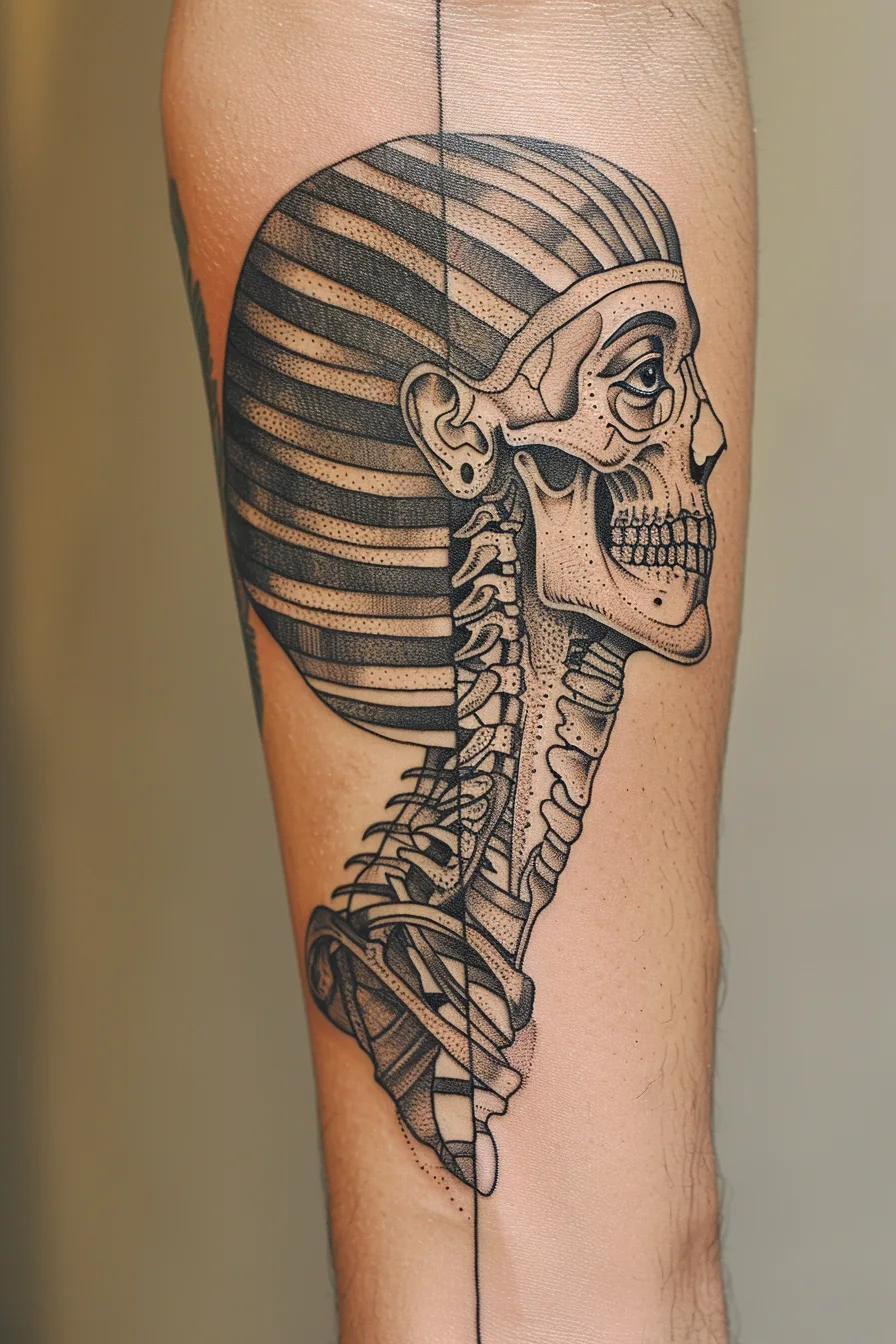
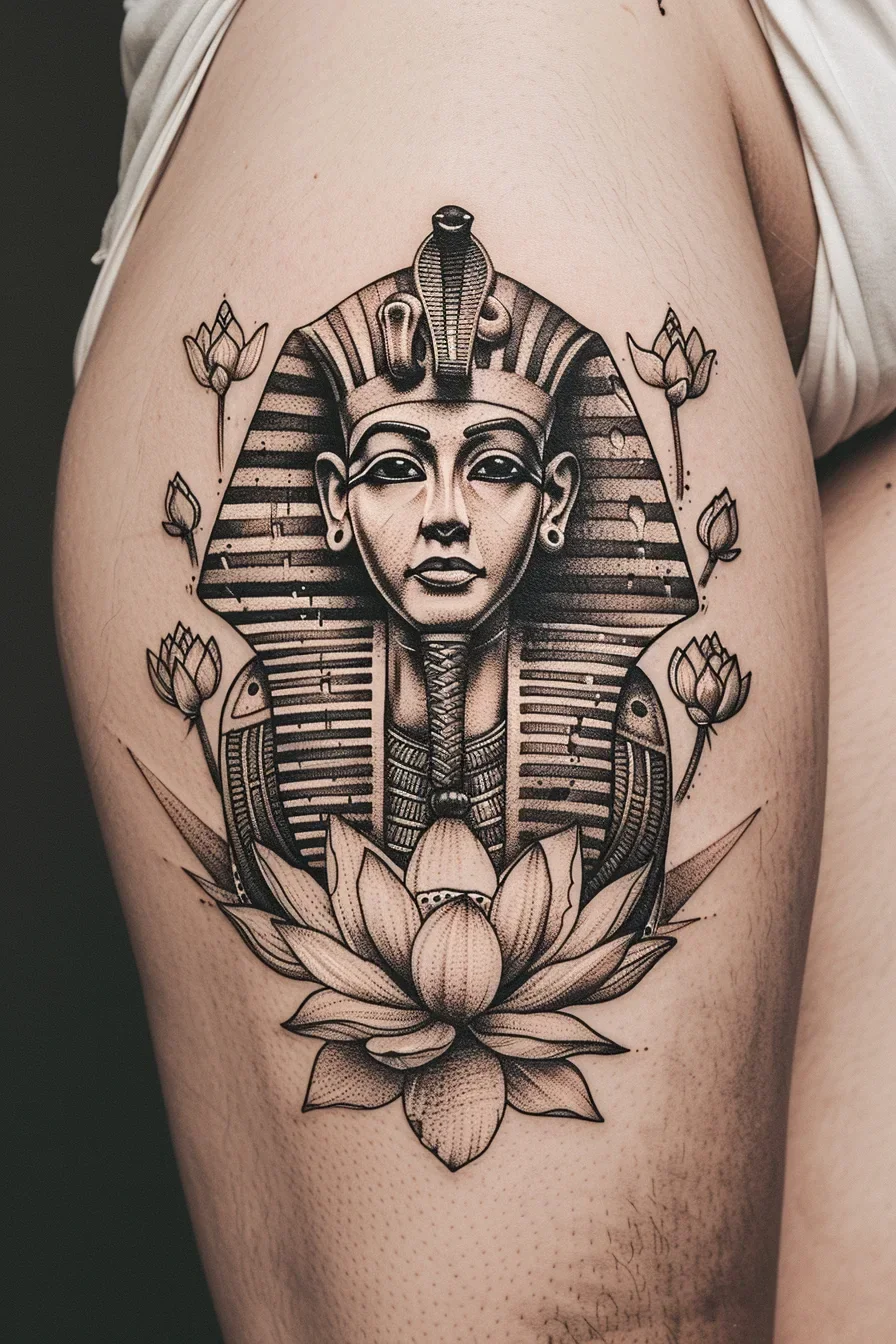
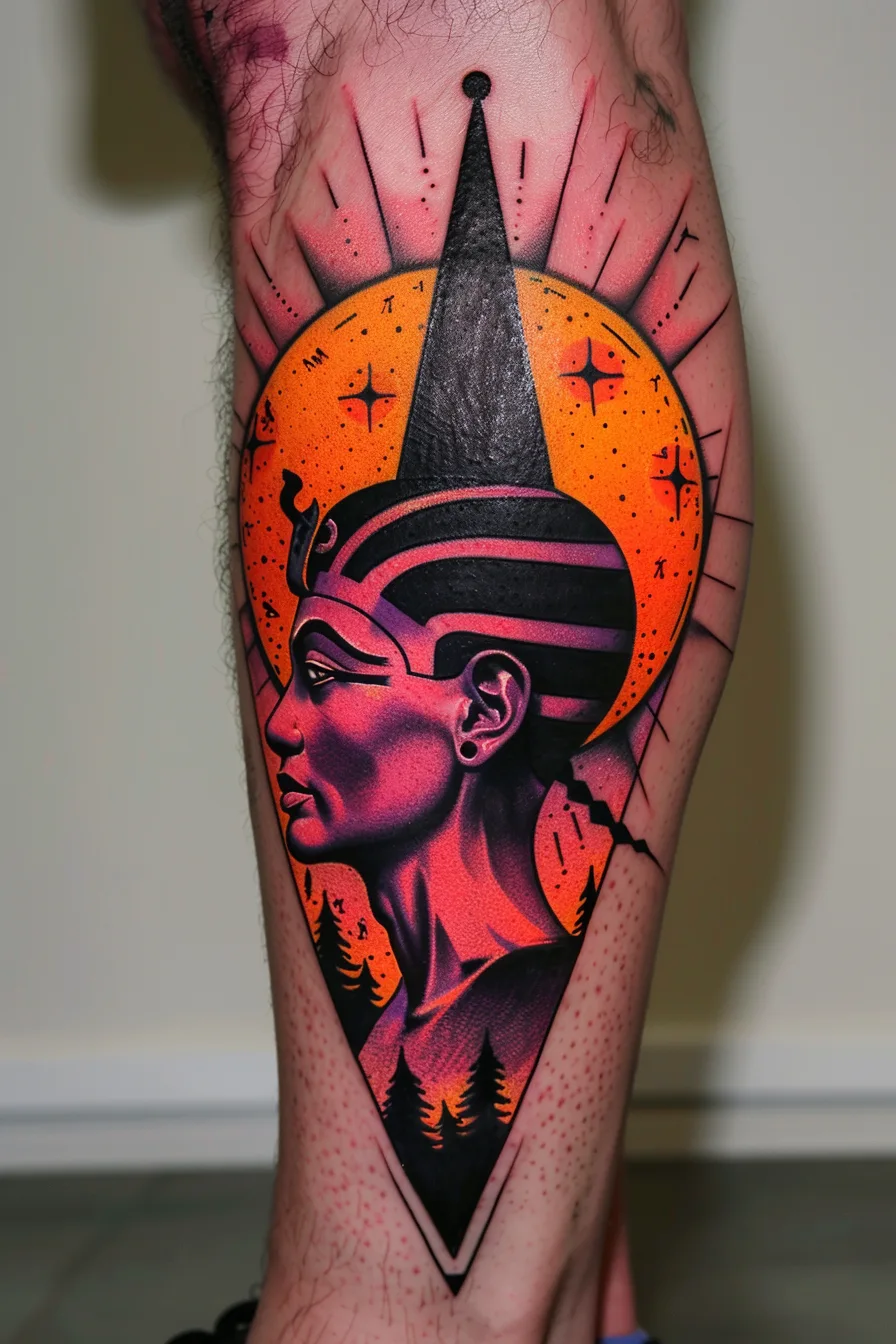
Spiritual Enlightenment and Transformation
Beyond the pharaoh's earthly power and prestige, the ancient Egyptian symbols associated with their rule also held profound spiritual significance. The iconic headdress and other regalia were imbued with deeper meanings, reflecting the pharaoh's role as a conduit between the divine realm and the mortal world.
The ankh, for instance, symbolized the key to eternal life, representing the cosmic consciousness that flowed through the pharaoh. The vulture goddess Nekhbet, depicted on the headdress, embodied the divine feminine principle, guiding the ruler's spiritual transformation and enlightenment.
These ancient symbols continue to captivate us, reminding us of the rich tapestry of Egyptian spirituality and the timeless quest for deeper understanding of the human experience.
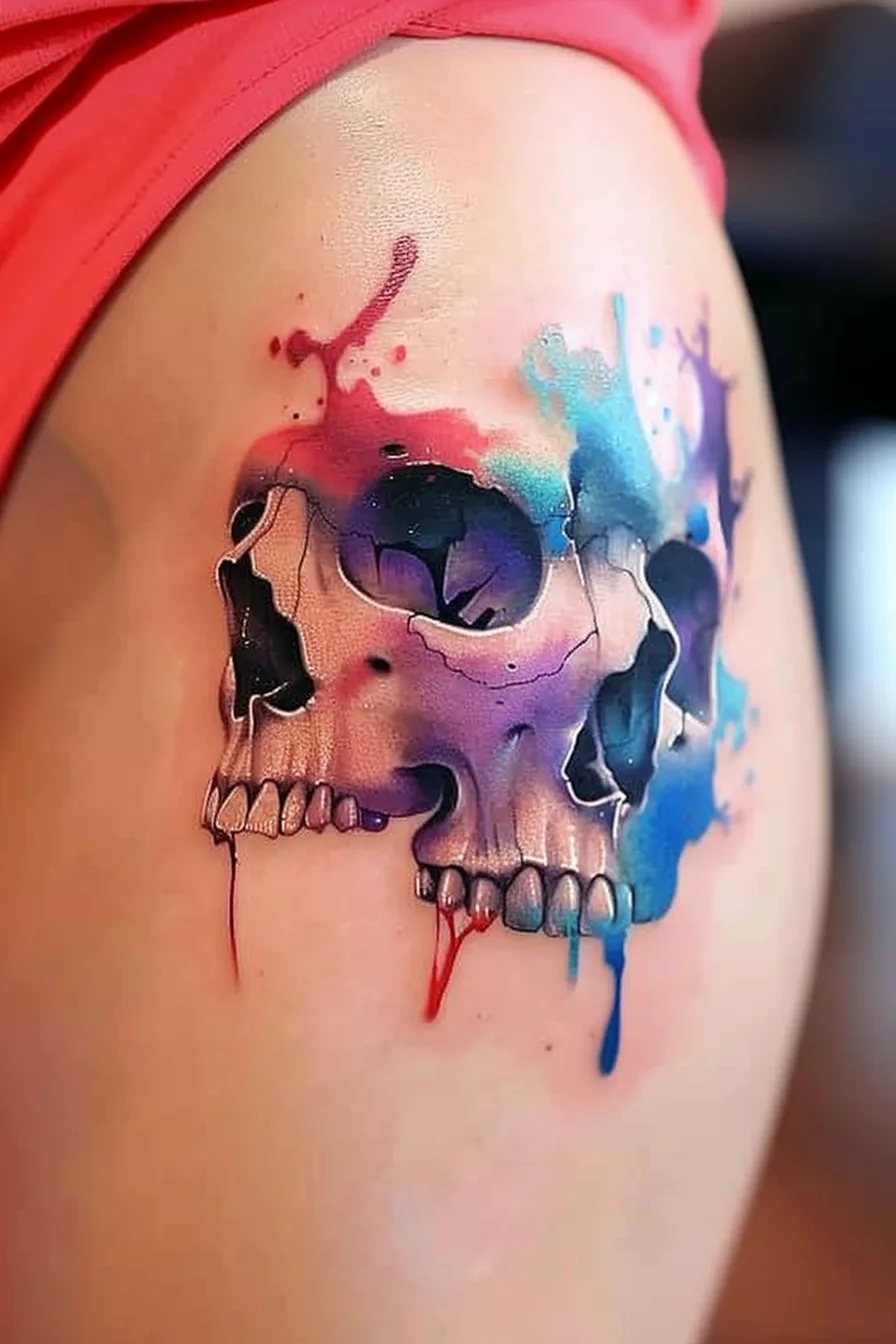
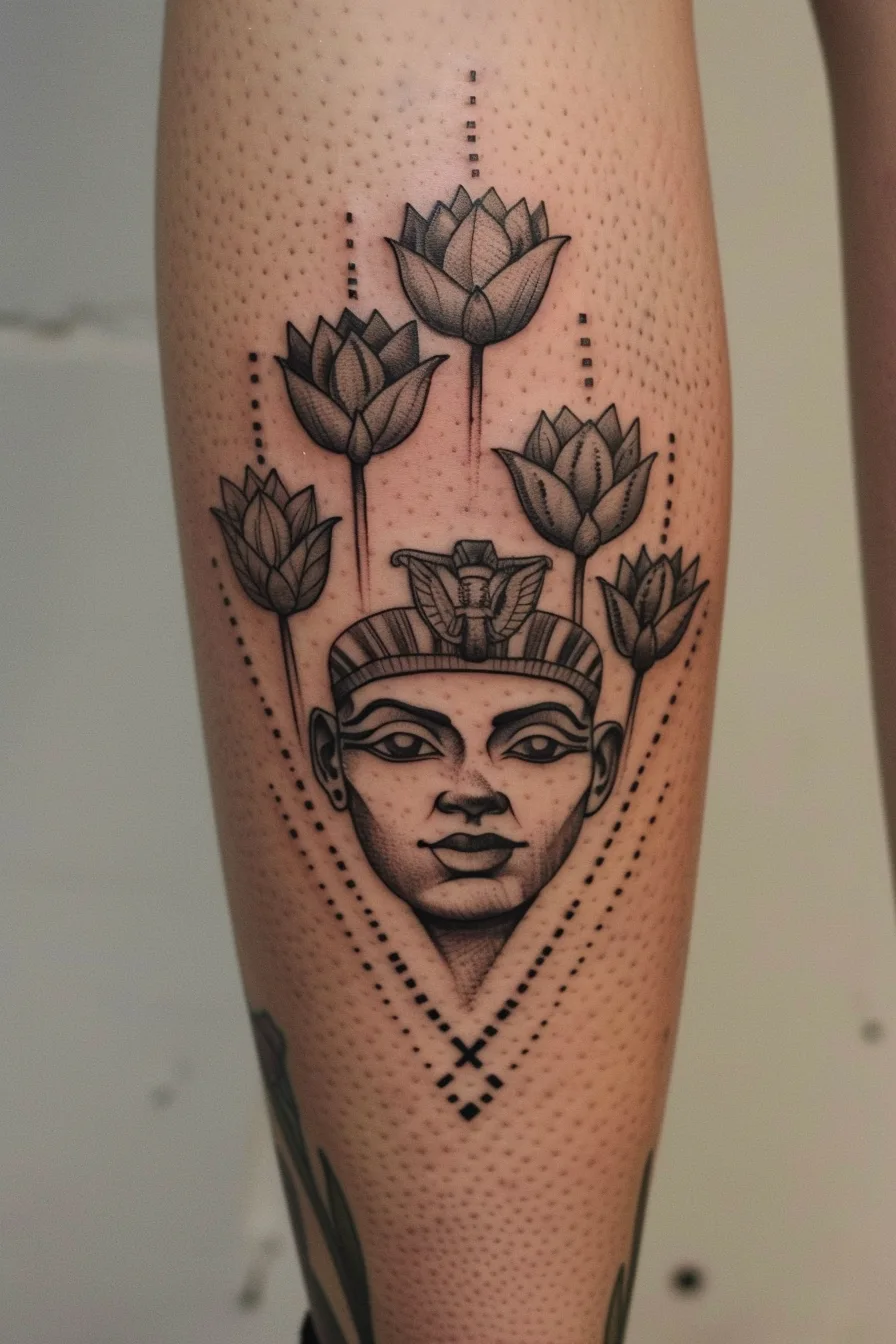
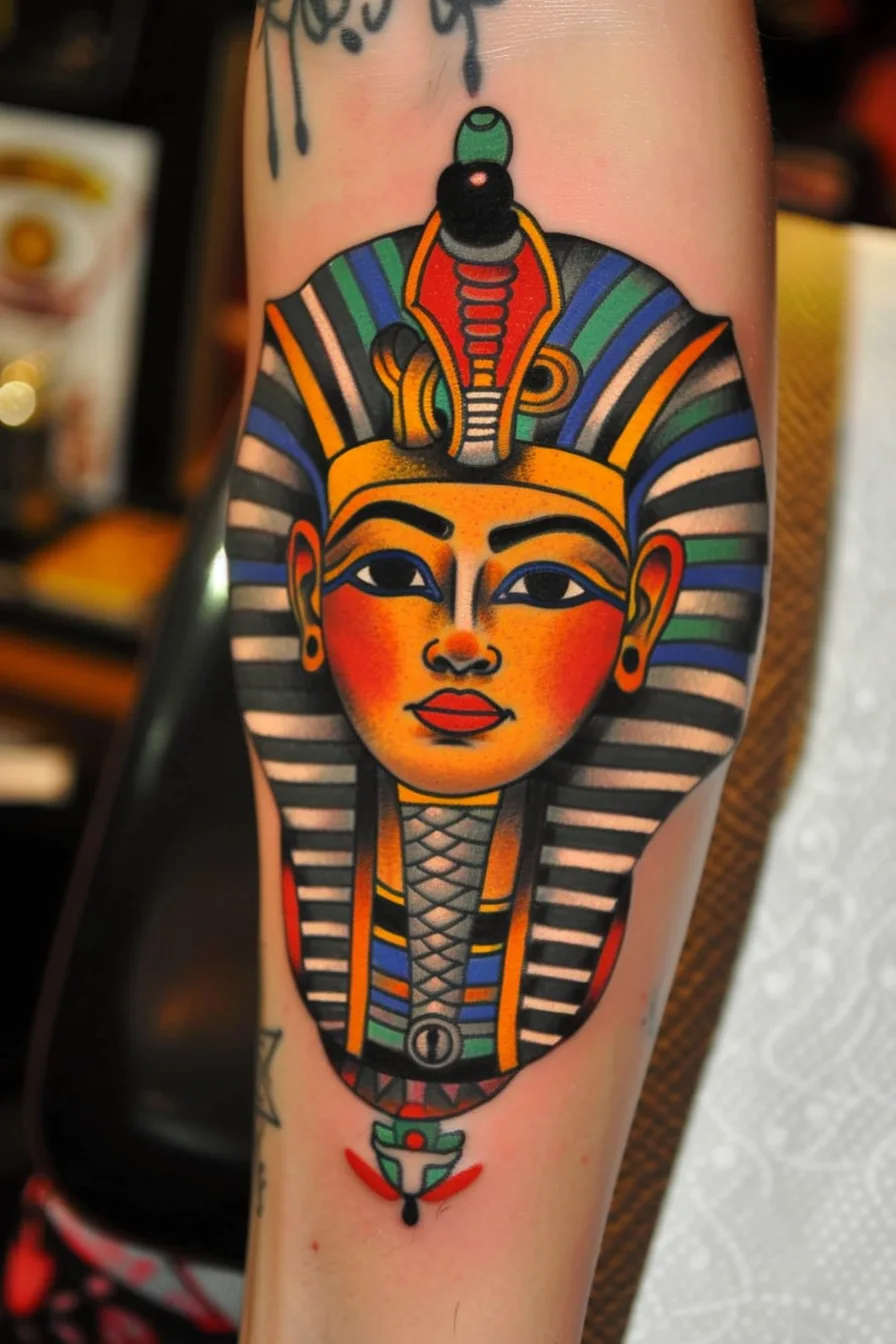
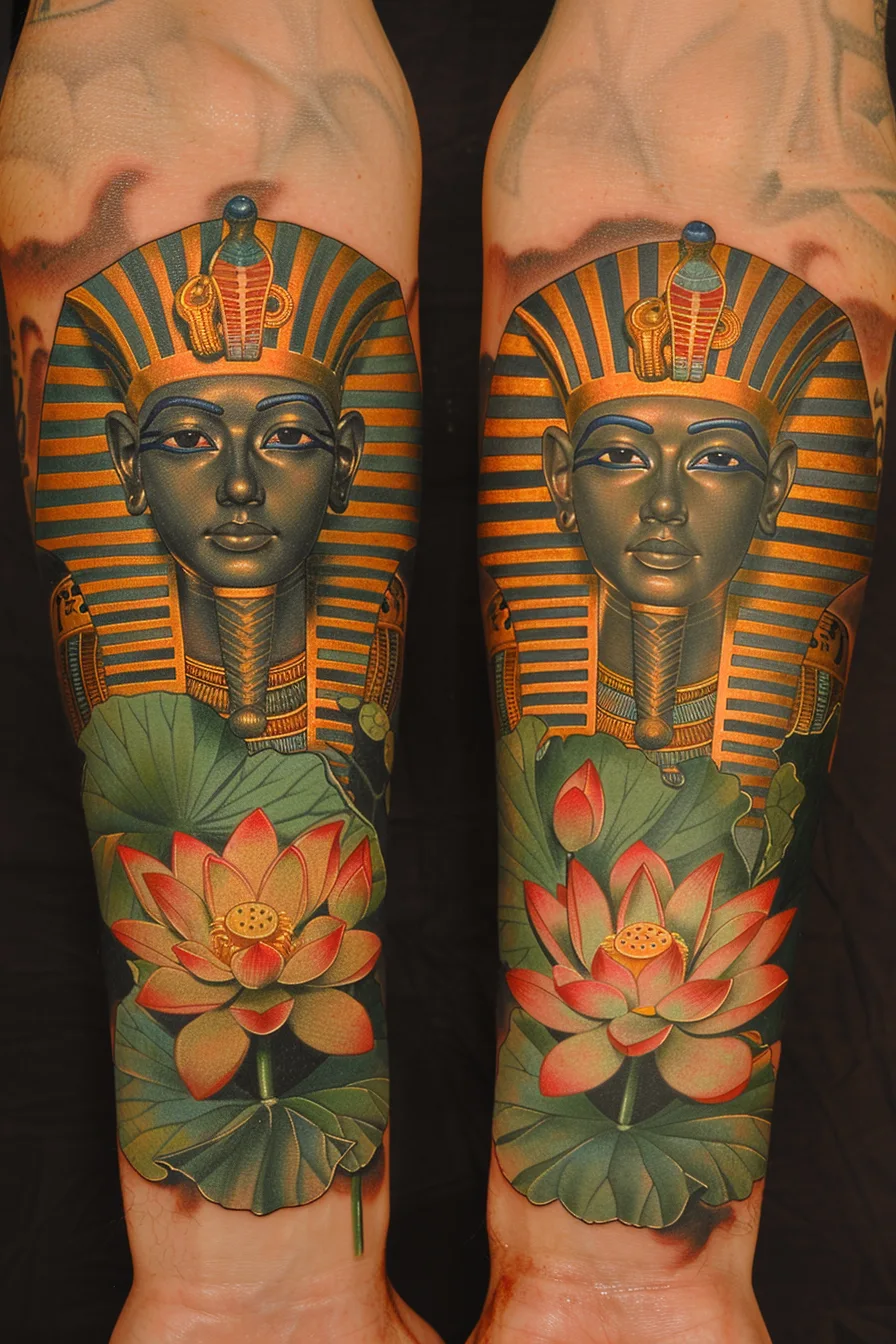
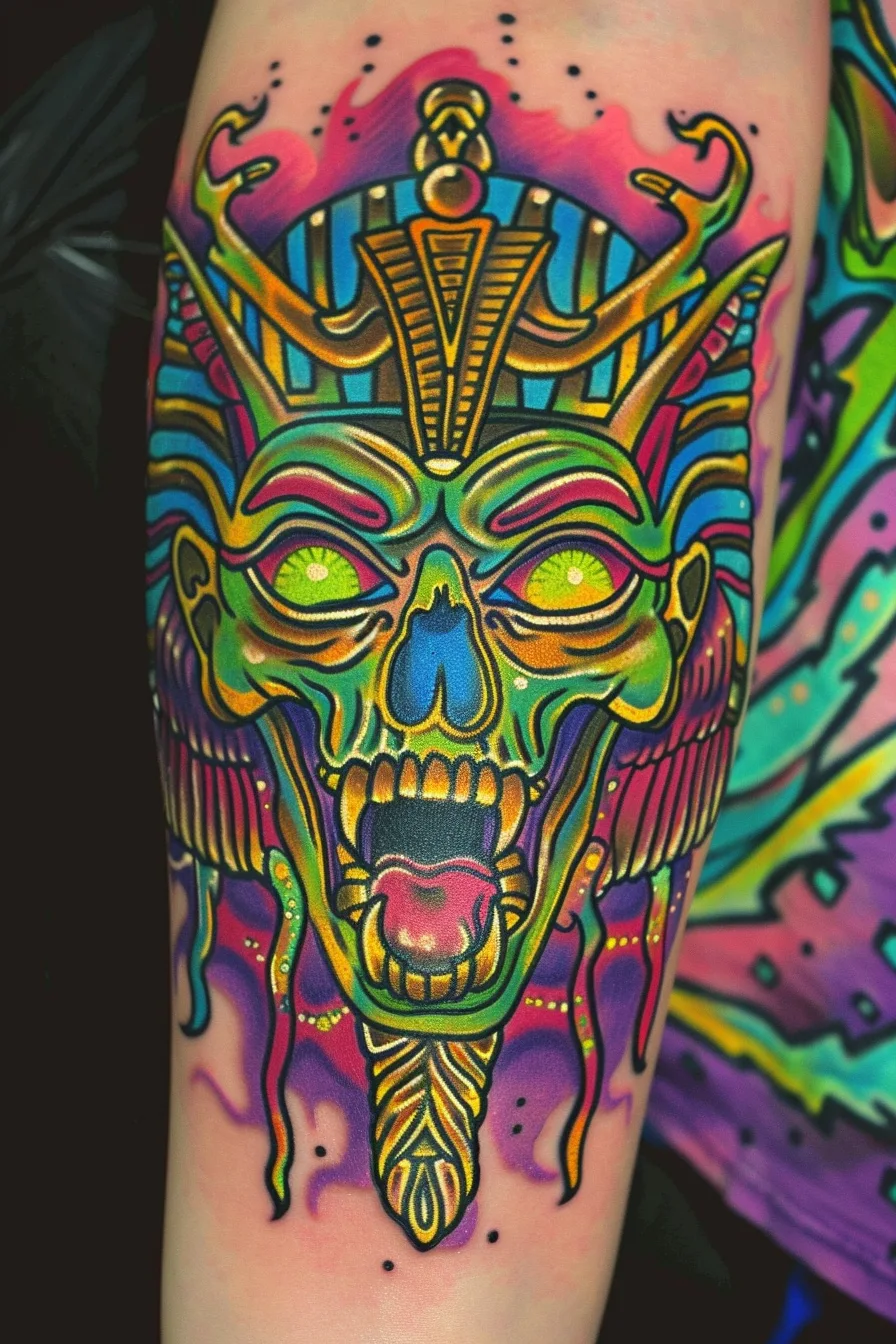
Common Design Styles Of This Tattoo
When considering a King Tut tattoo, there are several popular design styles to explore. From the vibrant hues and fluid brushstrokes of watercolor, to the clean lines and geometric shapes of a more minimalist approach, the options are diverse.
Individuals may also opt for a highly detailed, realistic depiction of the iconic pharaoh or a bold, solid blackwork interpretation, each offering a unique way to showcase this captivating ancient Egyptian symbol.
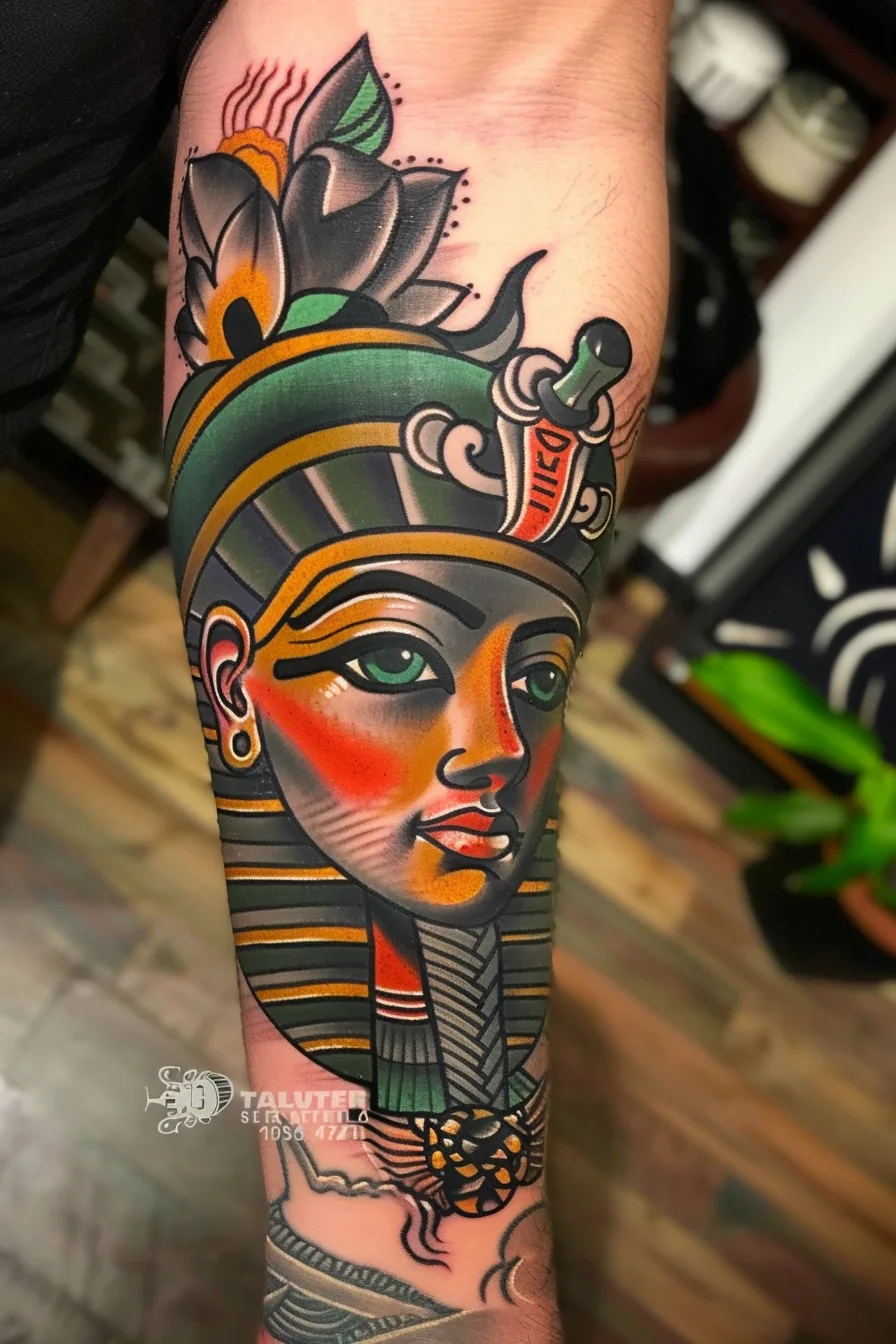
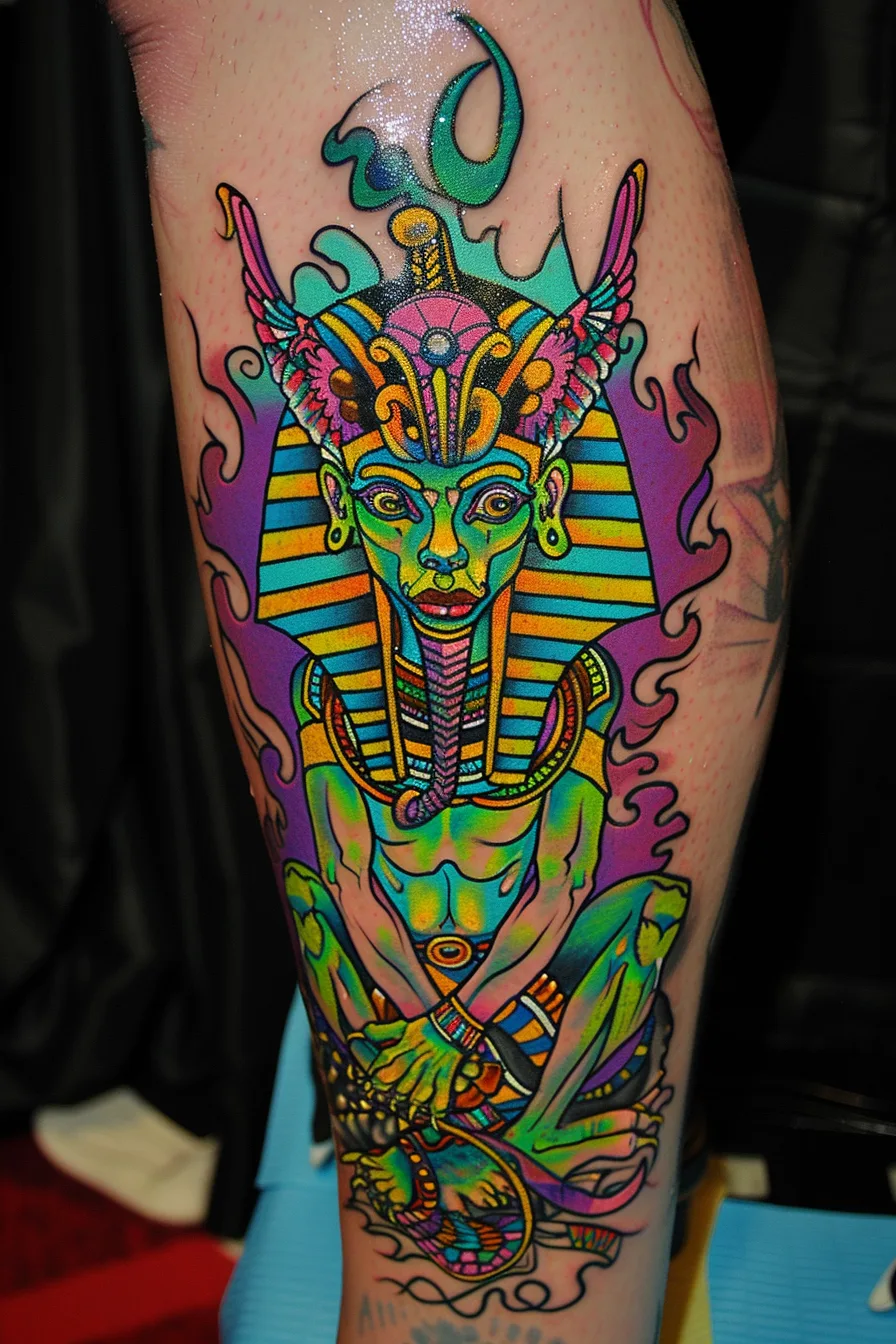

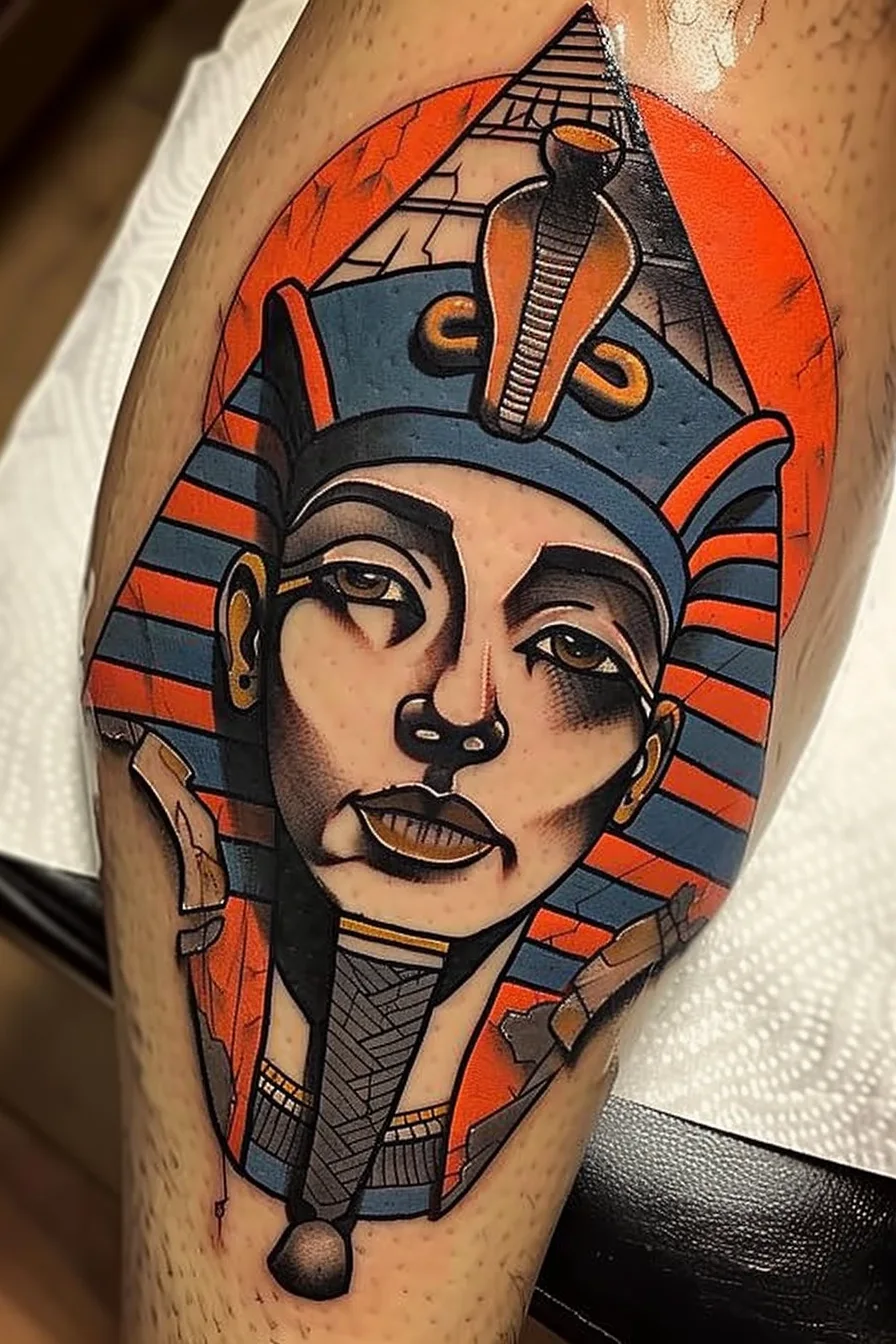
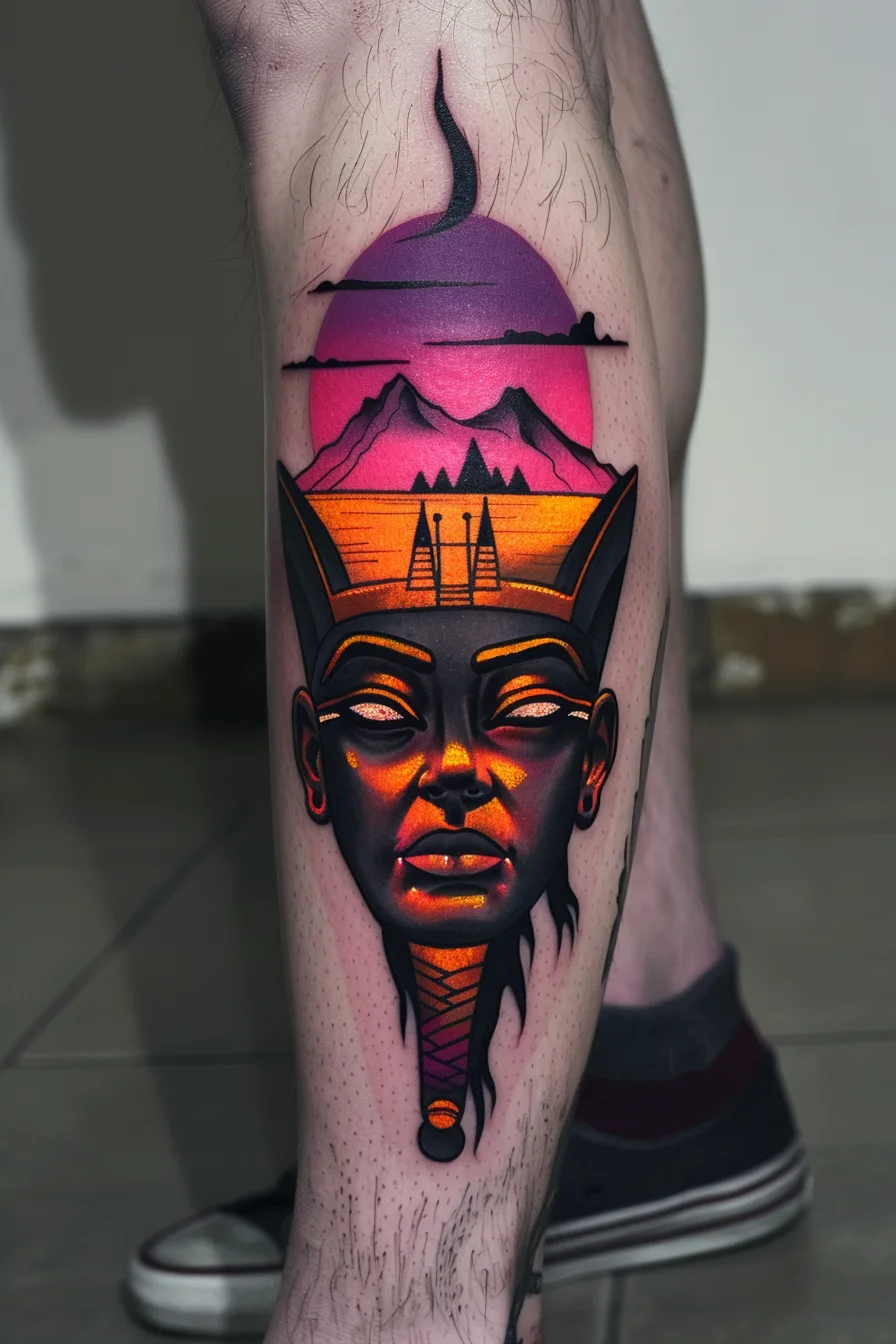
Watercolor Style
A popular design style for King Tut tattoos is the watercolor technique, which captures the vibrant and ethereal essence of ancient Egyptian art. This creative approach utilizes seamless tone blending techniques to produce a one-of-a-kind look, often featuring unique color palettes inspired by the rich hues found in Egyptian imagery.
The watercolor style lends itself beautifully to the intricate details and symbolic elements commonly associated with King Tut tattoos, creating a visually stunning and deeply meaningful piece of body art. Whether depicting the iconic pharaoh himself or incorporating other Egyptian motifs, the watercolor aesthetic adds an enchanting, almost mystical quality to these captivating tattoo designs.
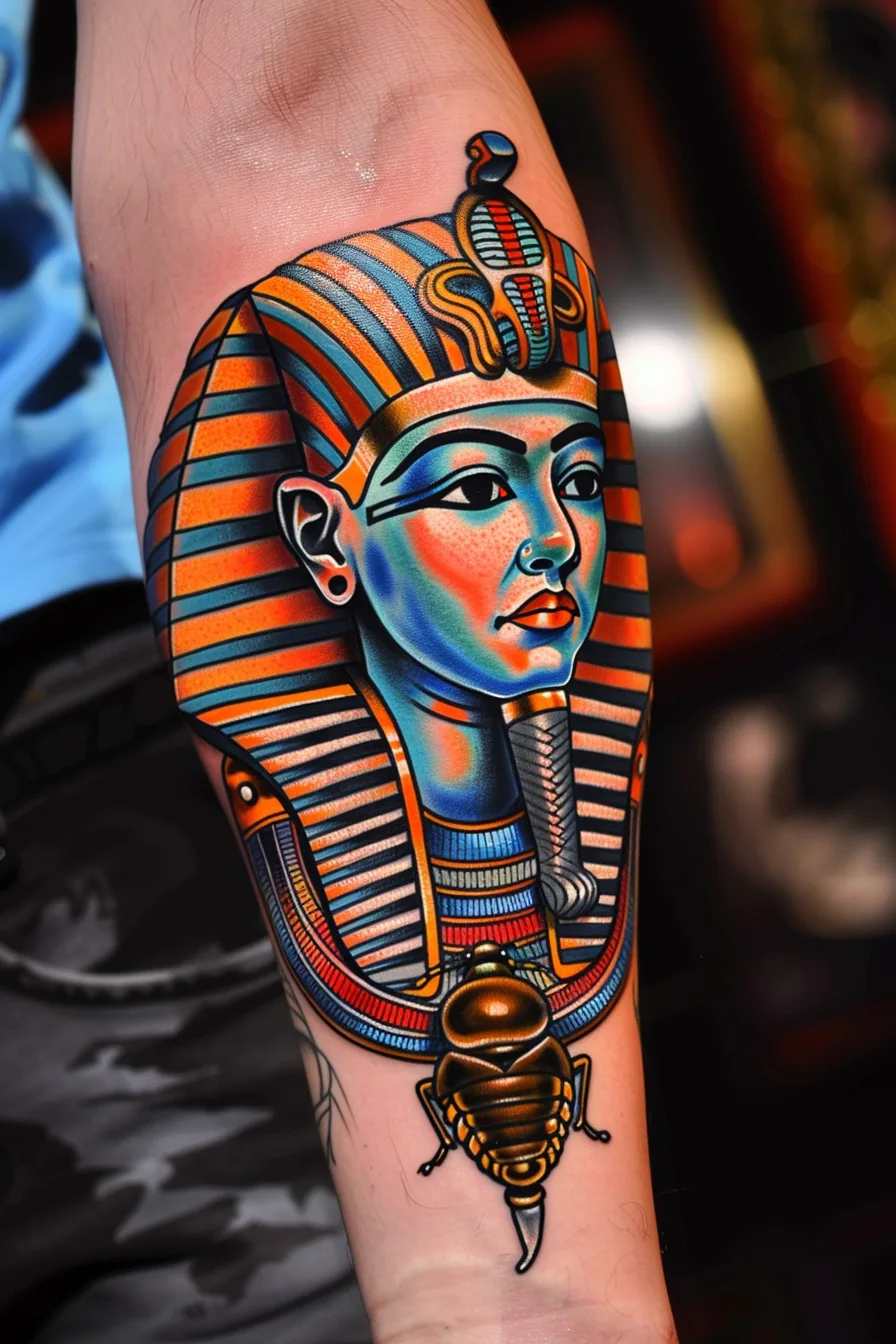
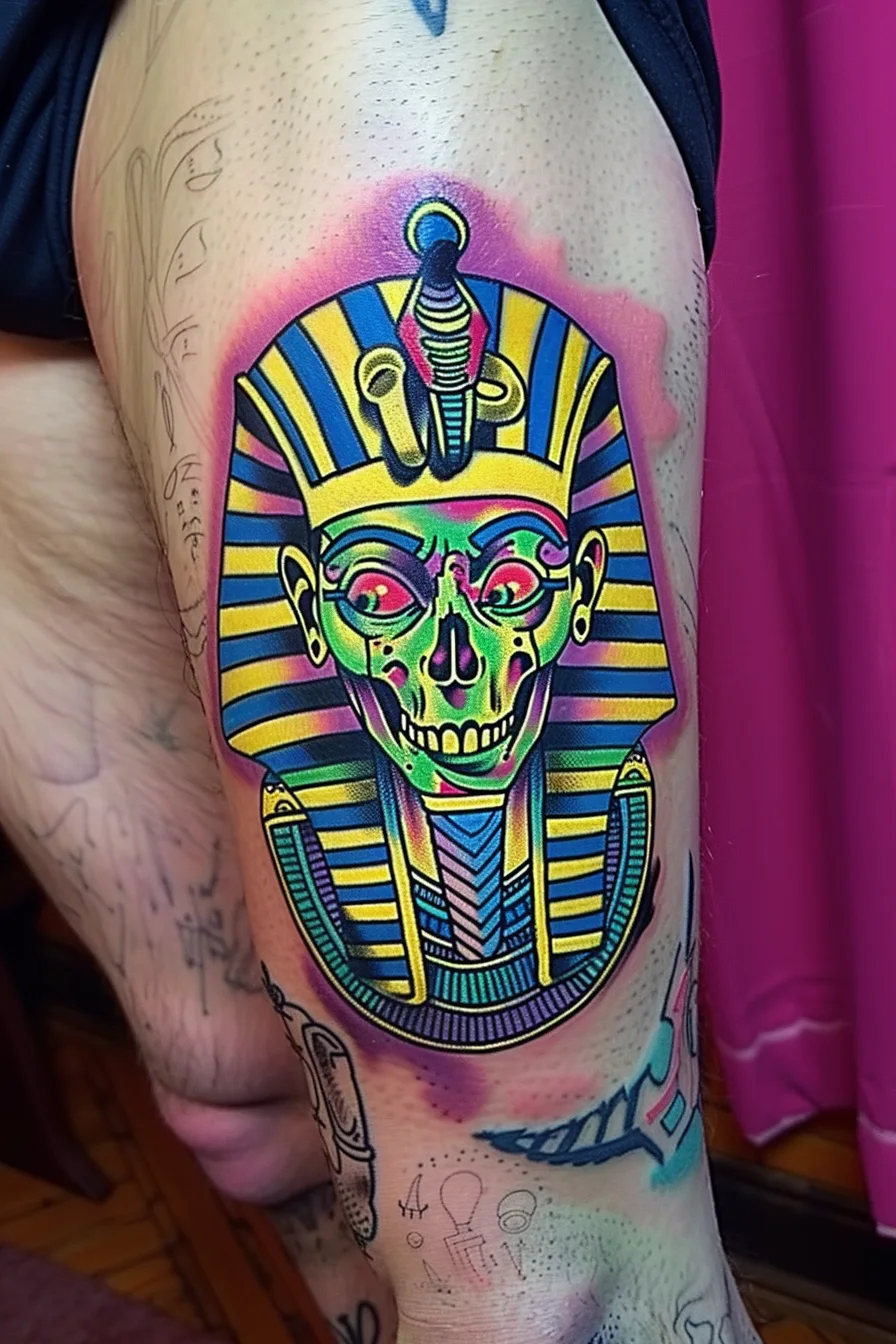


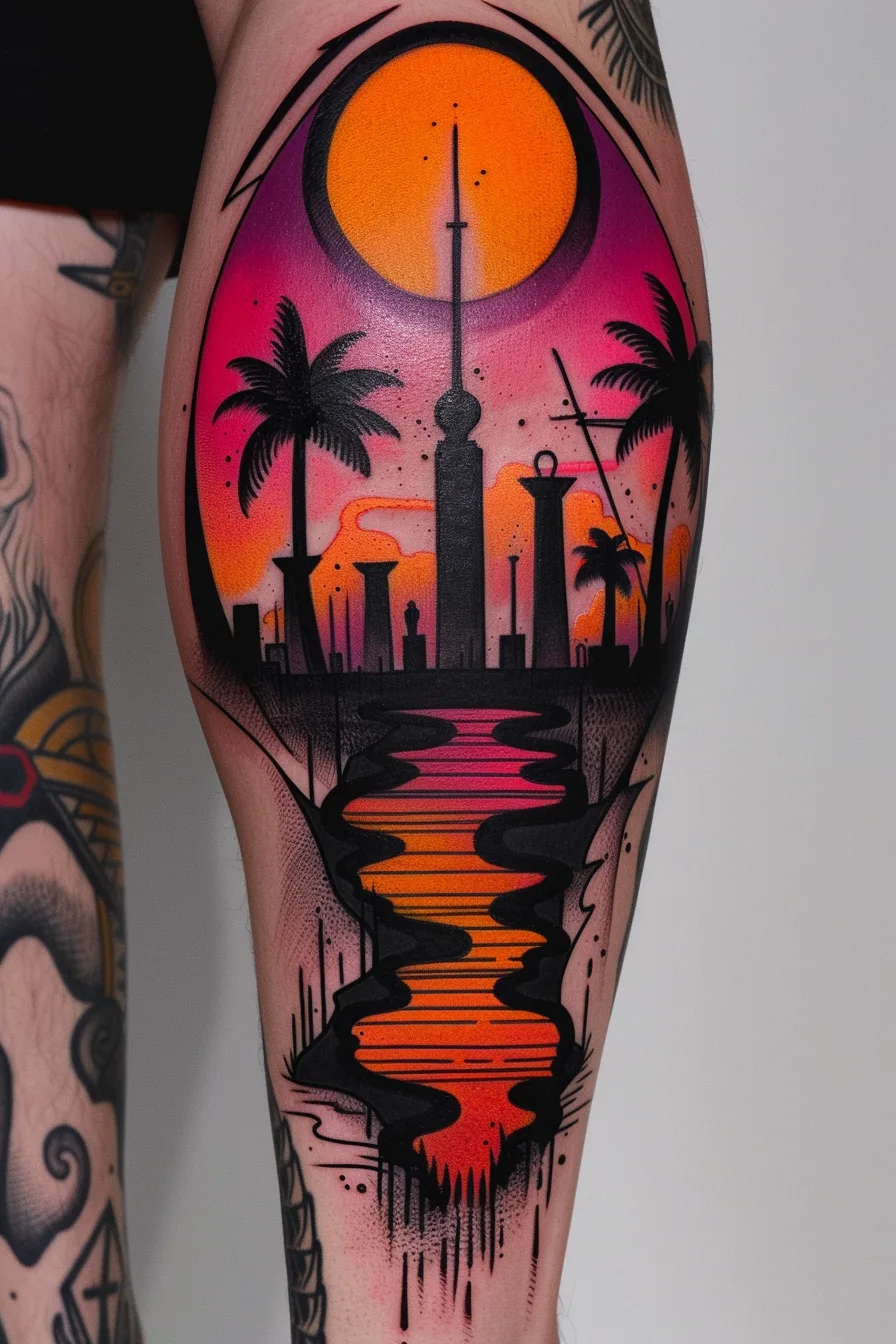
Geometric Style
In contrast to the fluid, ethereal qualities of the watercolor style, some King Tut tattoos opt for a more geometric, structured aesthetic that pays homage to the architectural marvels of ancient Egyptian civilization. These designs often feature ornate patterns inspired by the intricate reliefs and hieroglyphics found on the walls of ancient temples and tombs.
By embracing a minimalist geometry, the tattoo artist can capture the essence of Egyptian art through clean lines, sharp angles, and a balanced composition. This style appeals to those drawn to the elegance and precision of ancient Egyptian design, offering a striking alternative to the bohemian flair of the watercolor approach.
The result is a tattoo that commands attention with its bold, unapologetic presence.
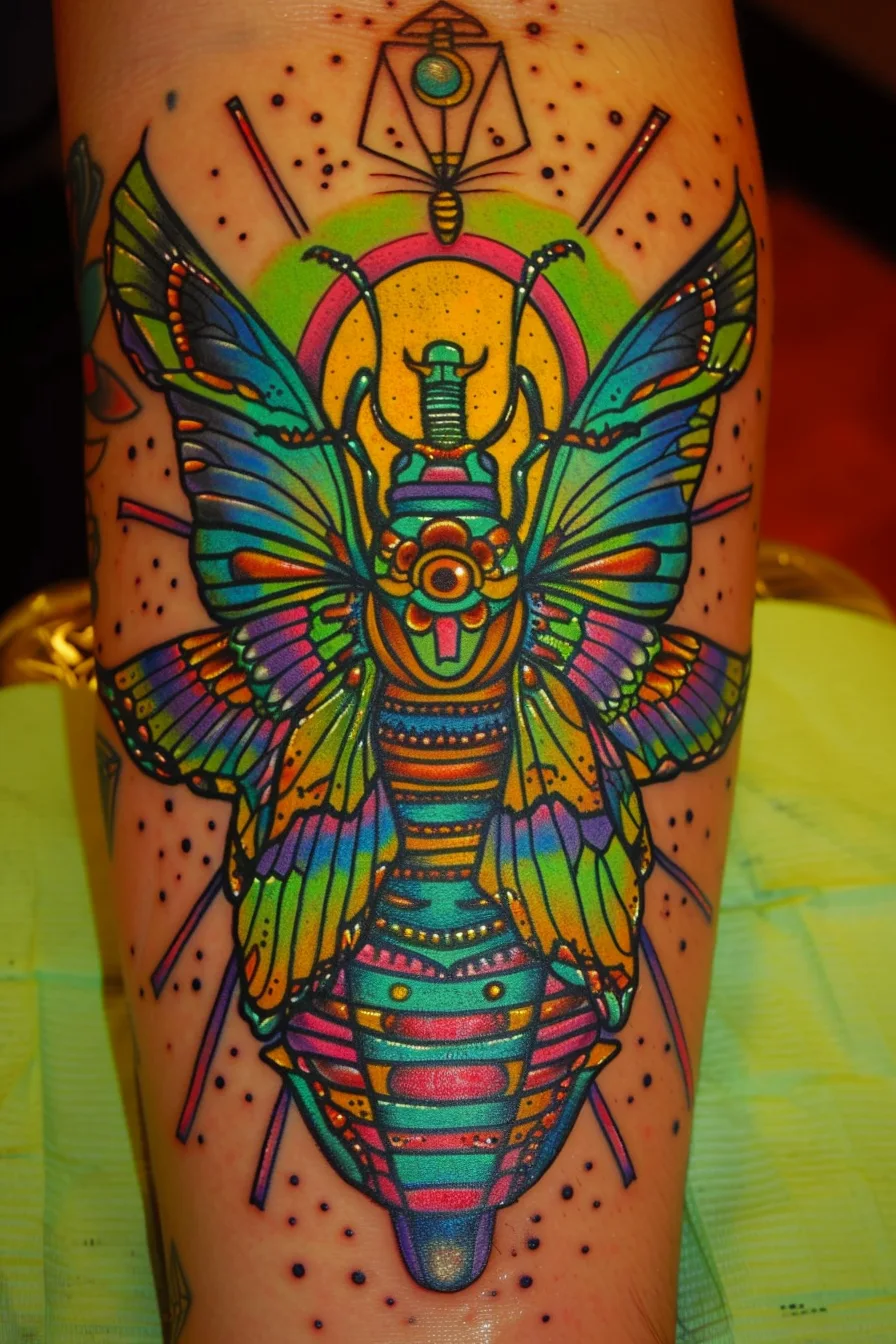

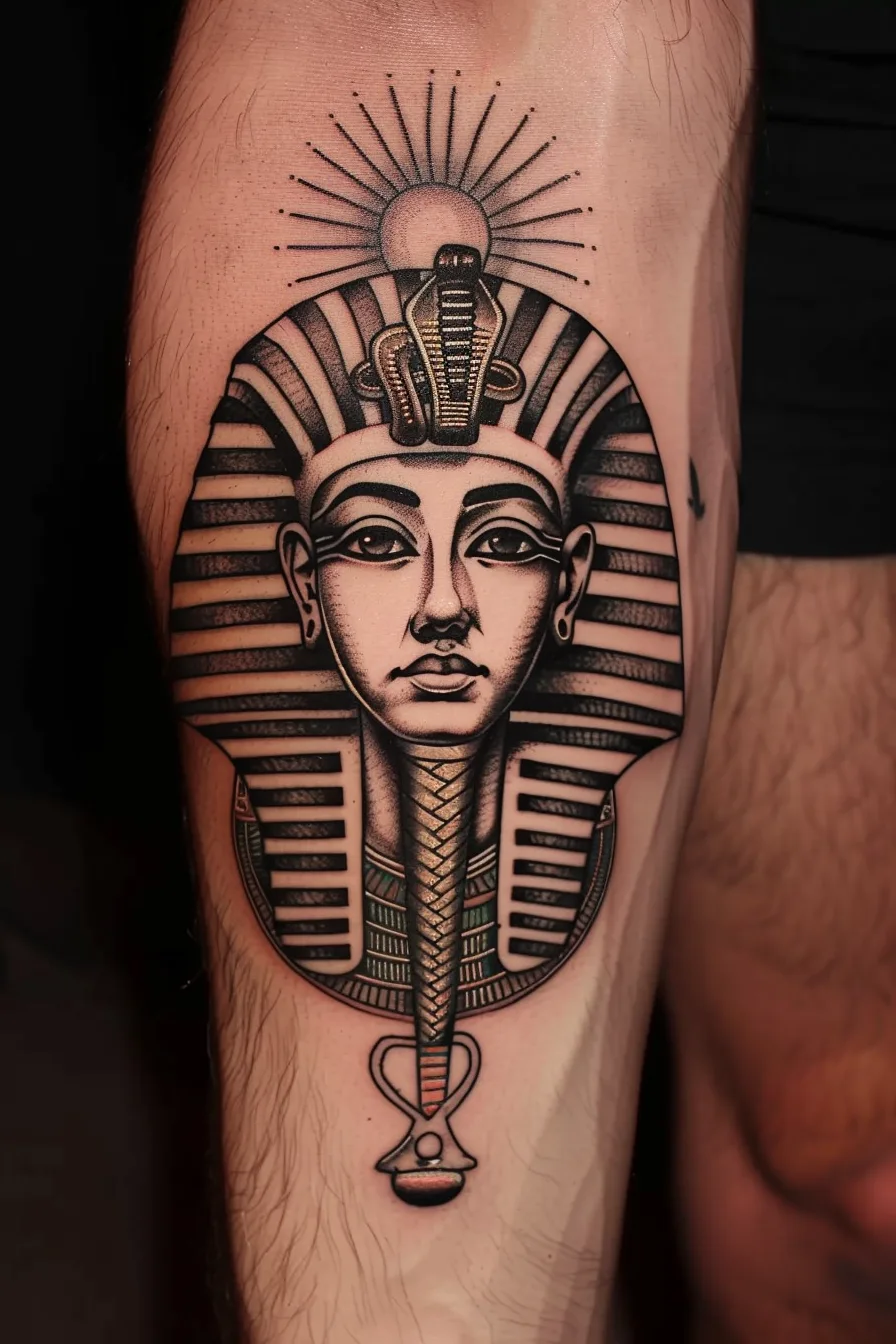
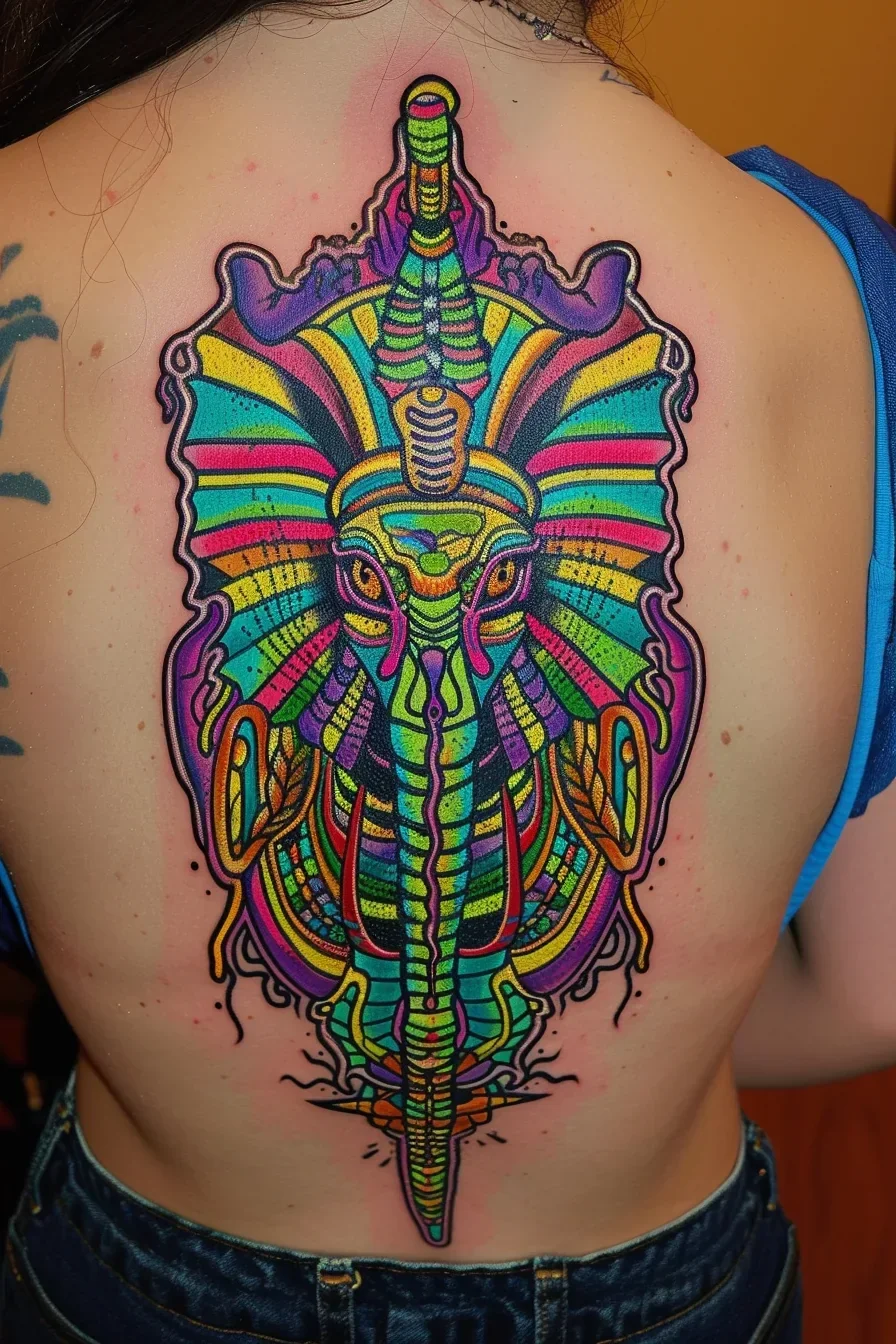

Realistic Style
Alternatively, some King Tut tattoos embrace a realistic style, aiming to capture the pharaoh's likeness with meticulous detail and accuracy. These tattoos often feature vibrant colors and unique shading techniques to bring the iconic image to life.
The attention to detail in a realistic King Tut tattoo can be truly impressive, with the artist meticulously rendering the intricate patterns and symbols associated with the ancient Egyptian ruler. This approach can result in a striking and visually captivating tattoo that commands attention and conveys the grandeur and significance of the subject matter.
For those seeking a tattoo that truly does justice to the legacy of King Tut, the realistic style is a compelling option.
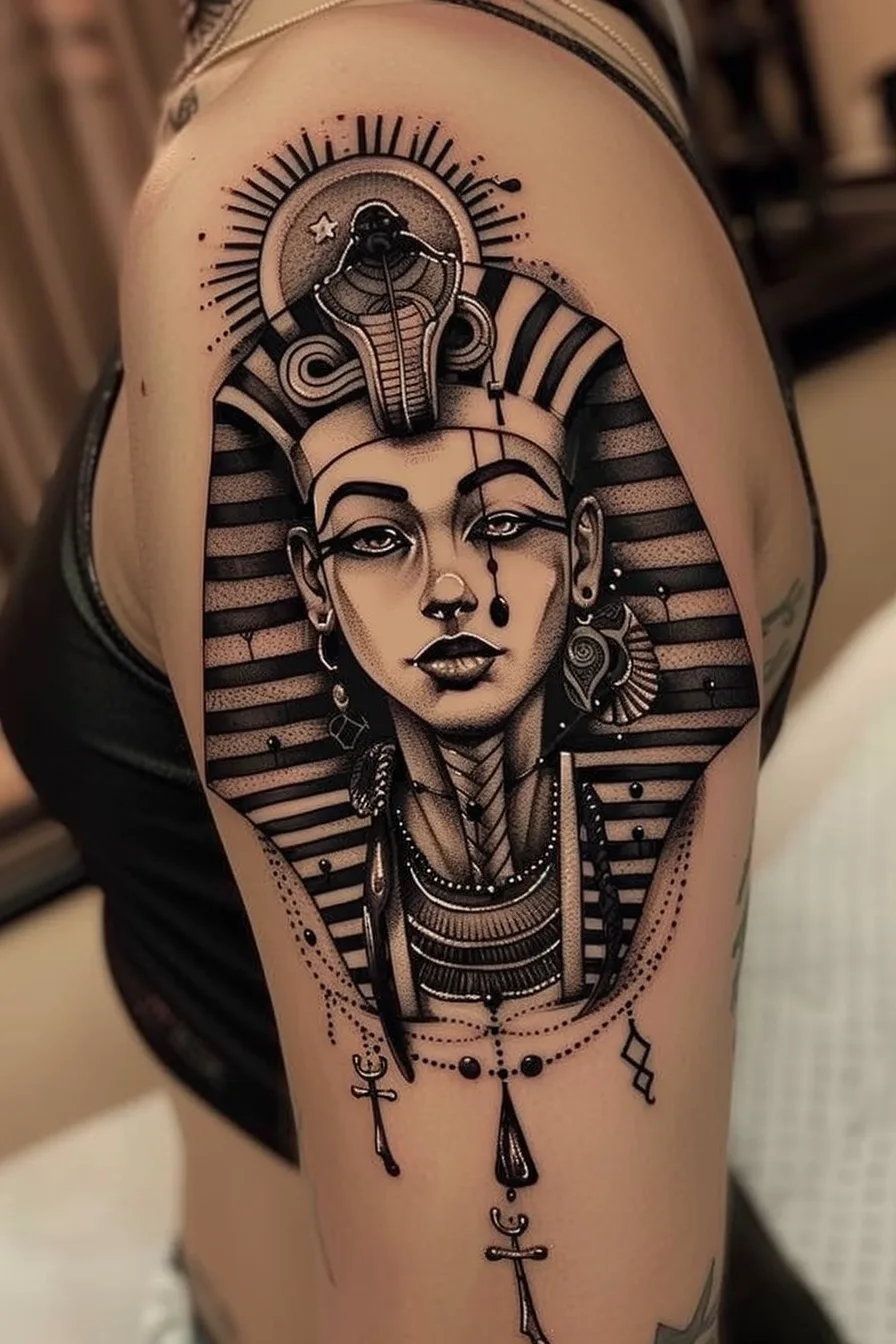
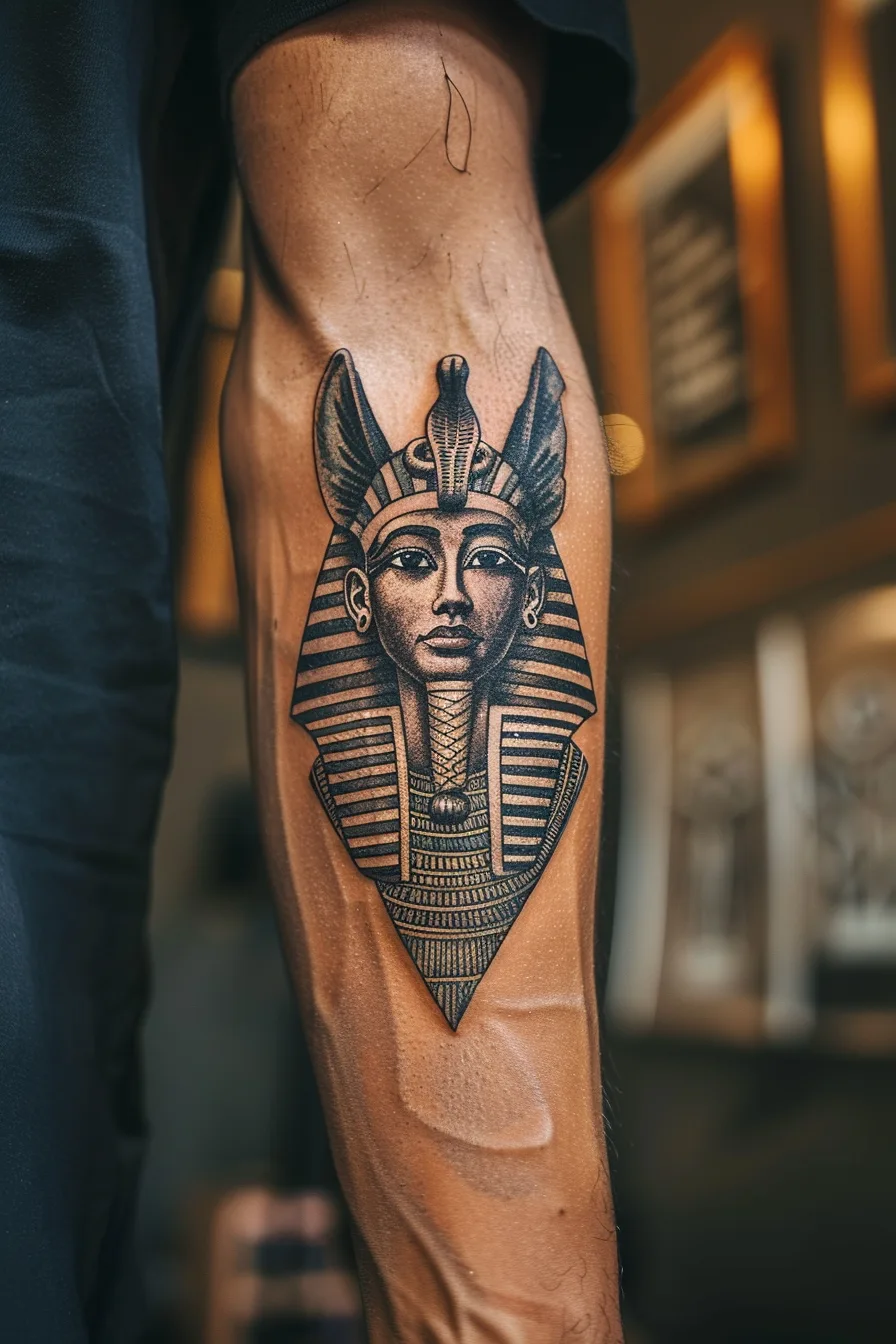
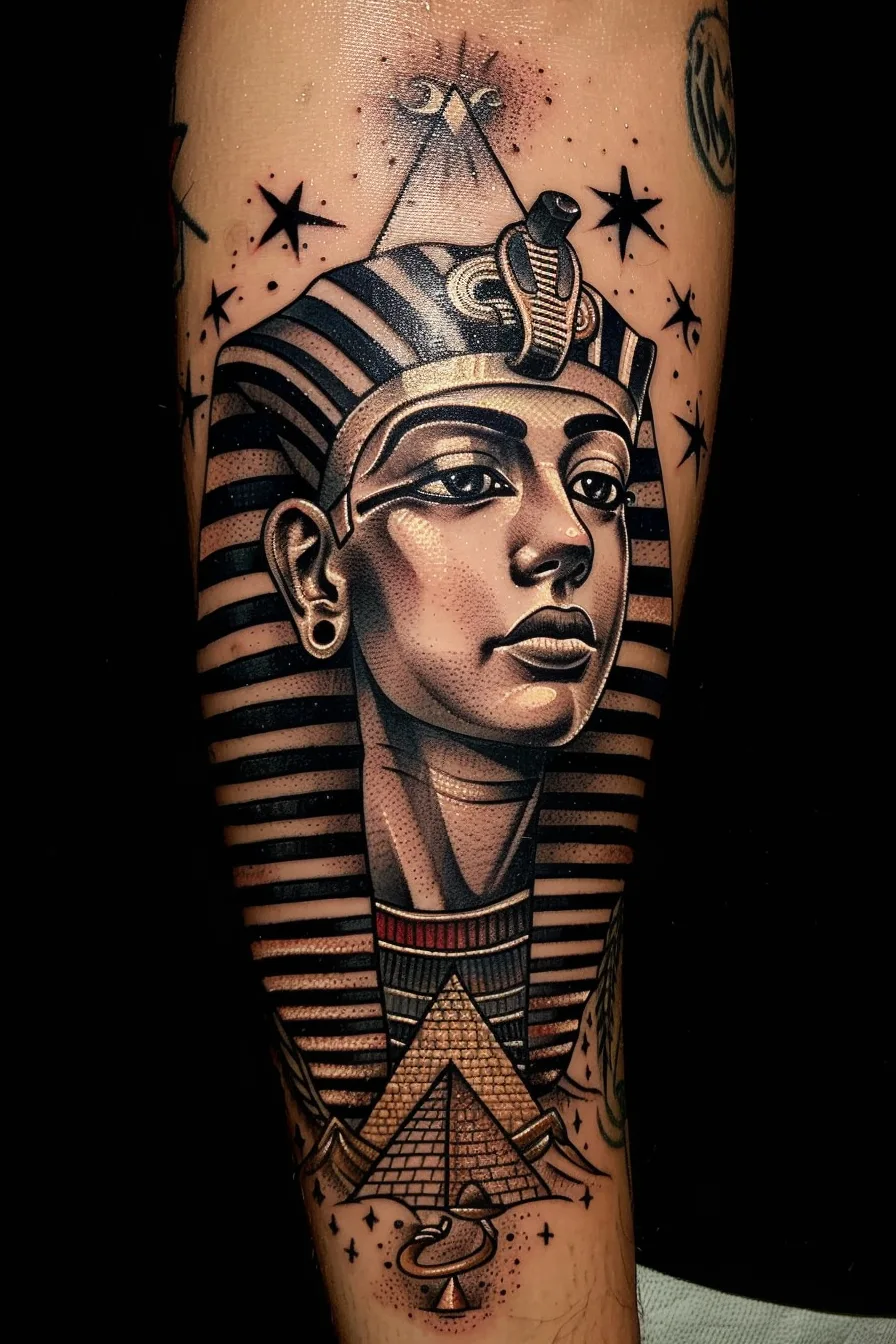

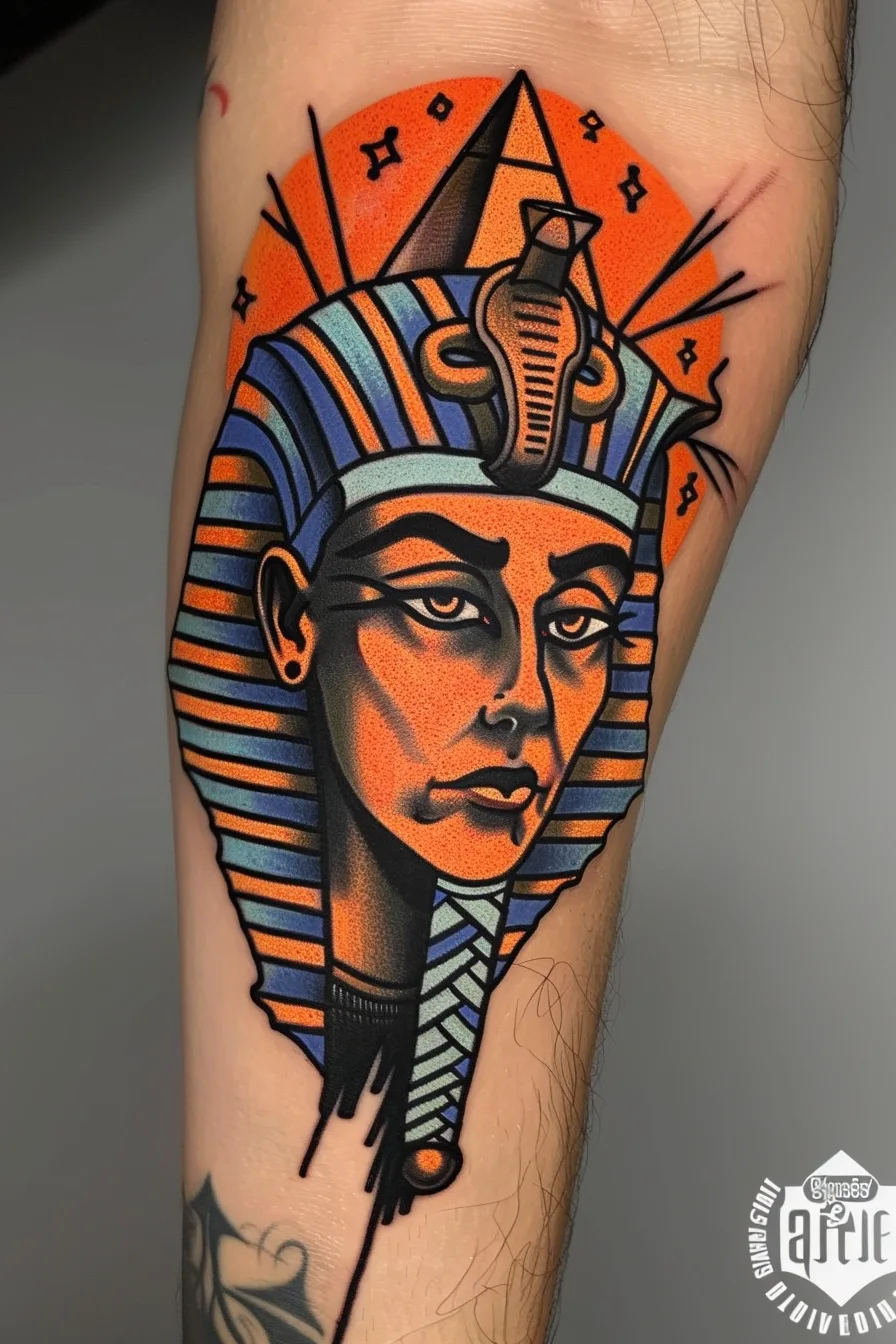
Blackwork Style
Another prominent design style for King Tut tattoos is the blackwork approach, which emphasizes bold lines, solid black fills, and minimalist compositions. This style often incorporates sacred geometry patterns, such as intricate triangles and hexagons, to create a visually striking and conceptually meaningful tattoo.
Minimalist linework designs are also popular, featuring clean, simplified depictions of King Tut's iconic headdress, sarcophagus, or other Egyptian symbols. The blackwork style is appealing for those seeking a bold, graphic, and timeless tattoo that pays homage to the rich history and cultural significance of King Tutankhamun.
The simplicity and strong, confident lines of this style make it a versatile choice for placement on various areas of the body.
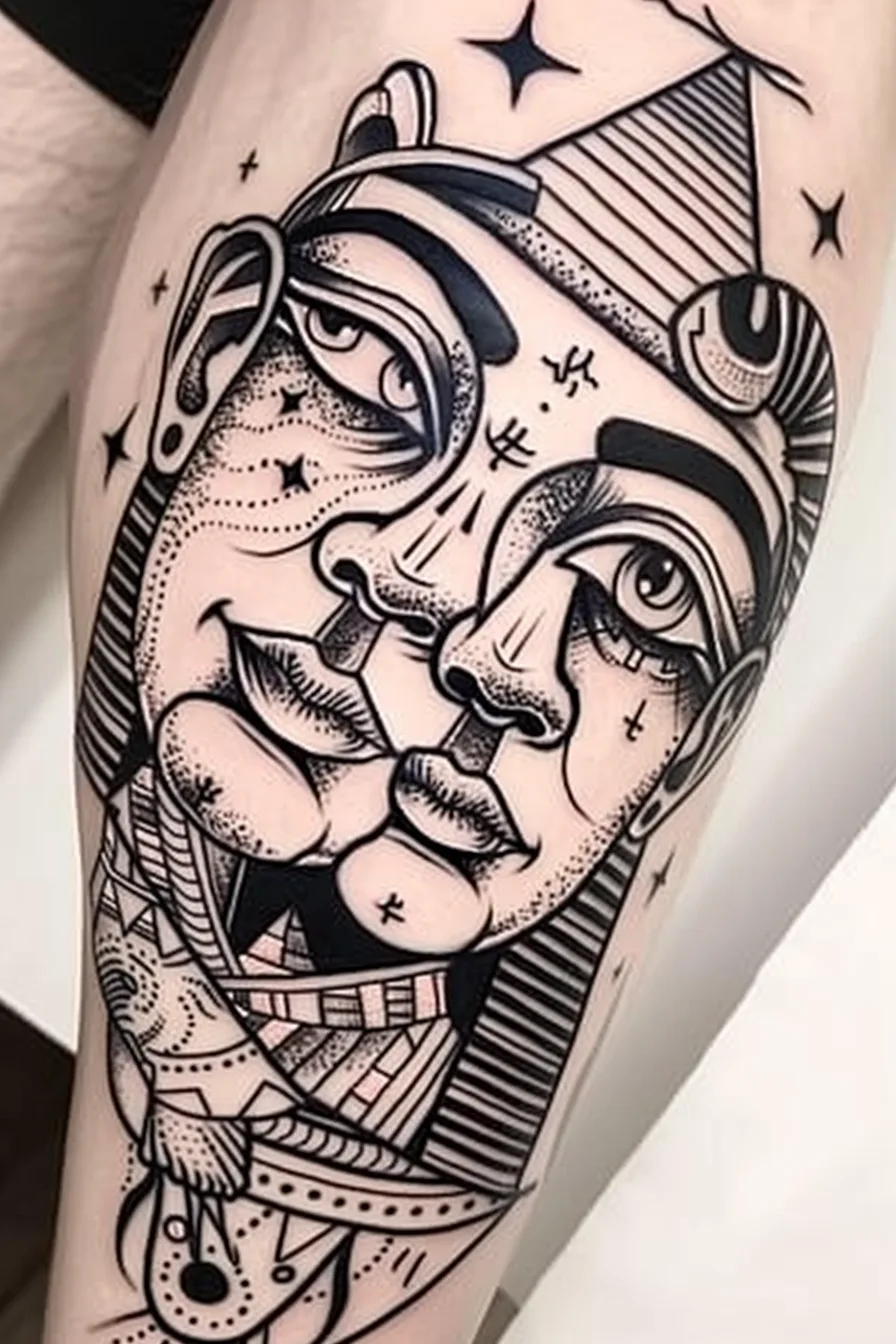
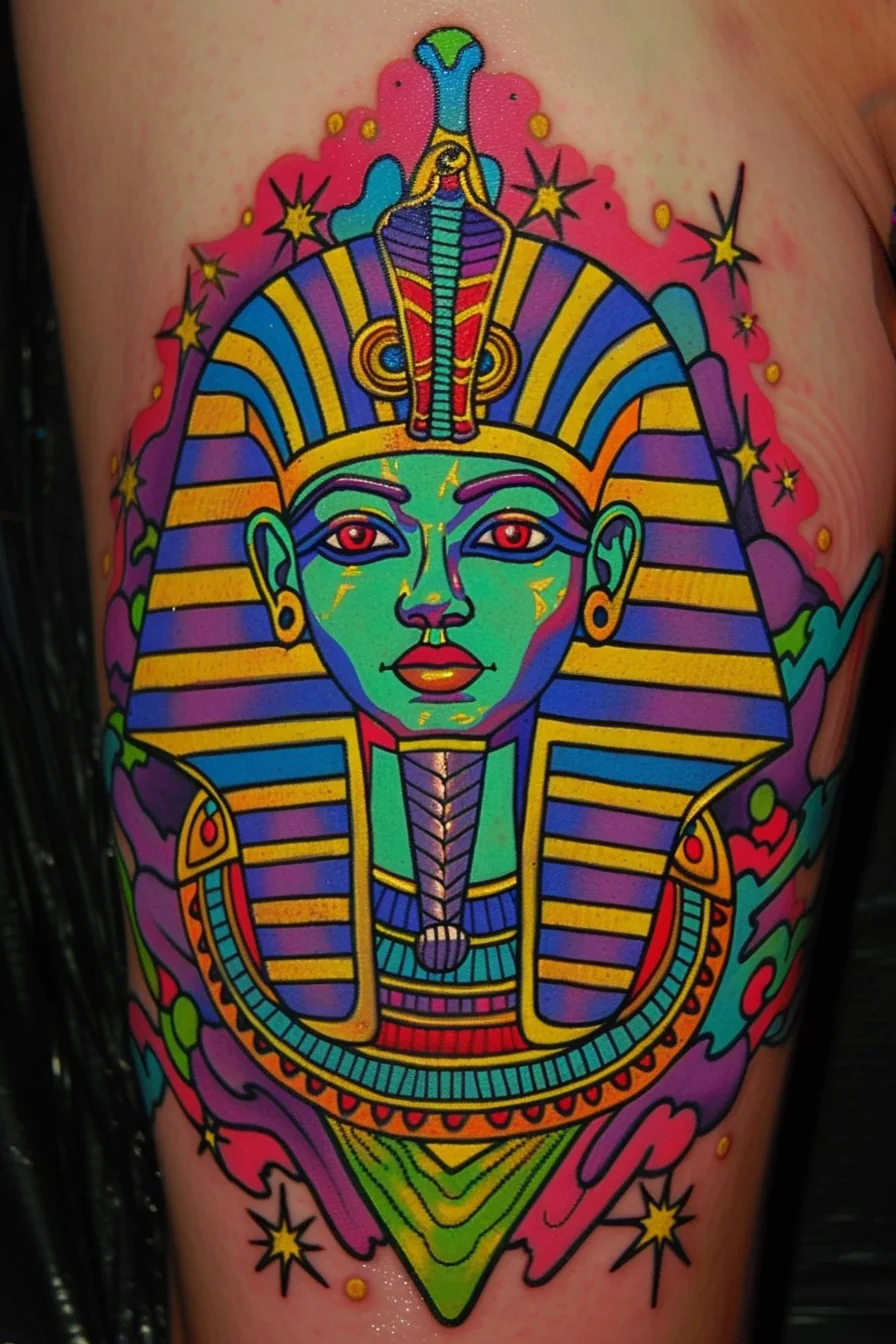
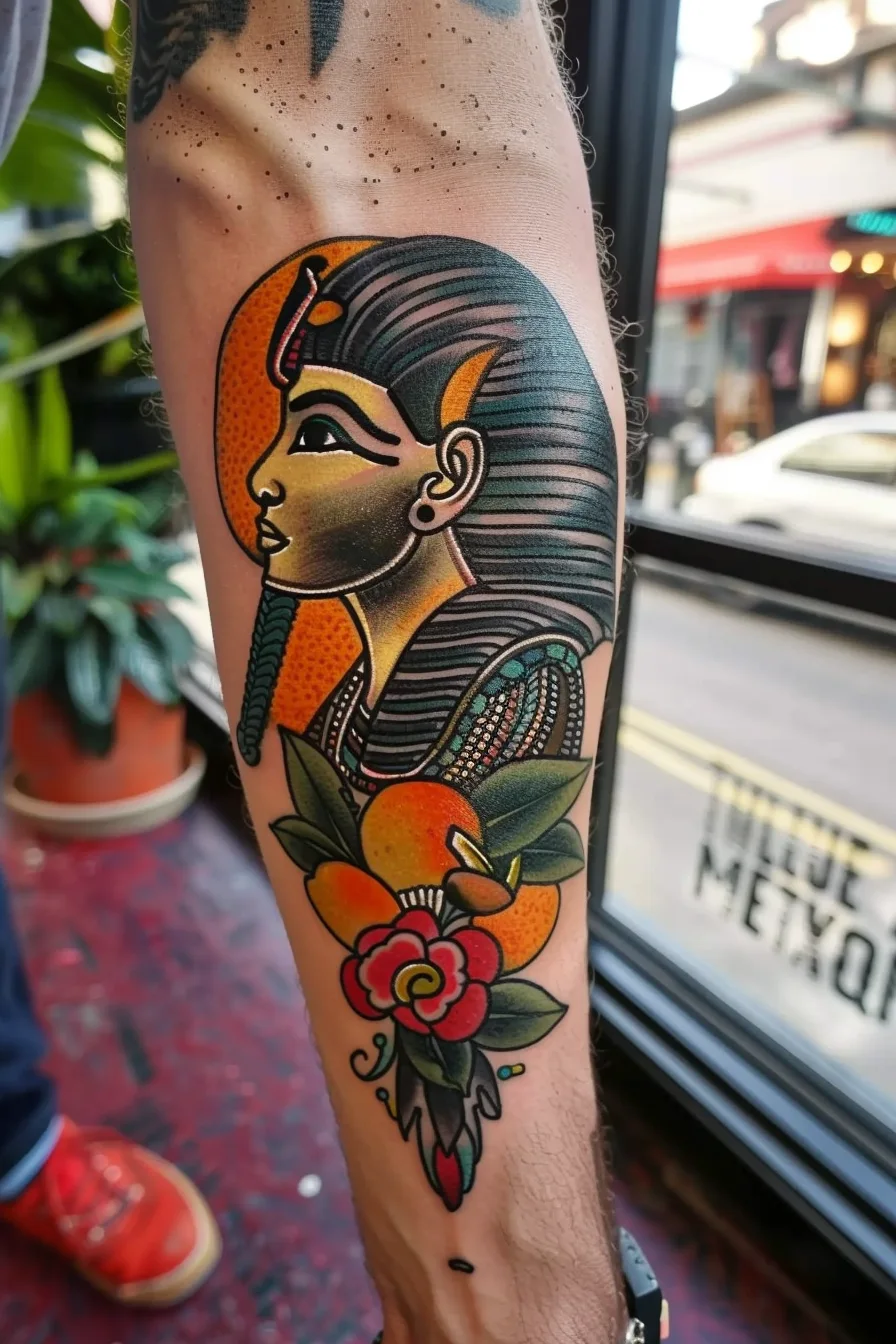
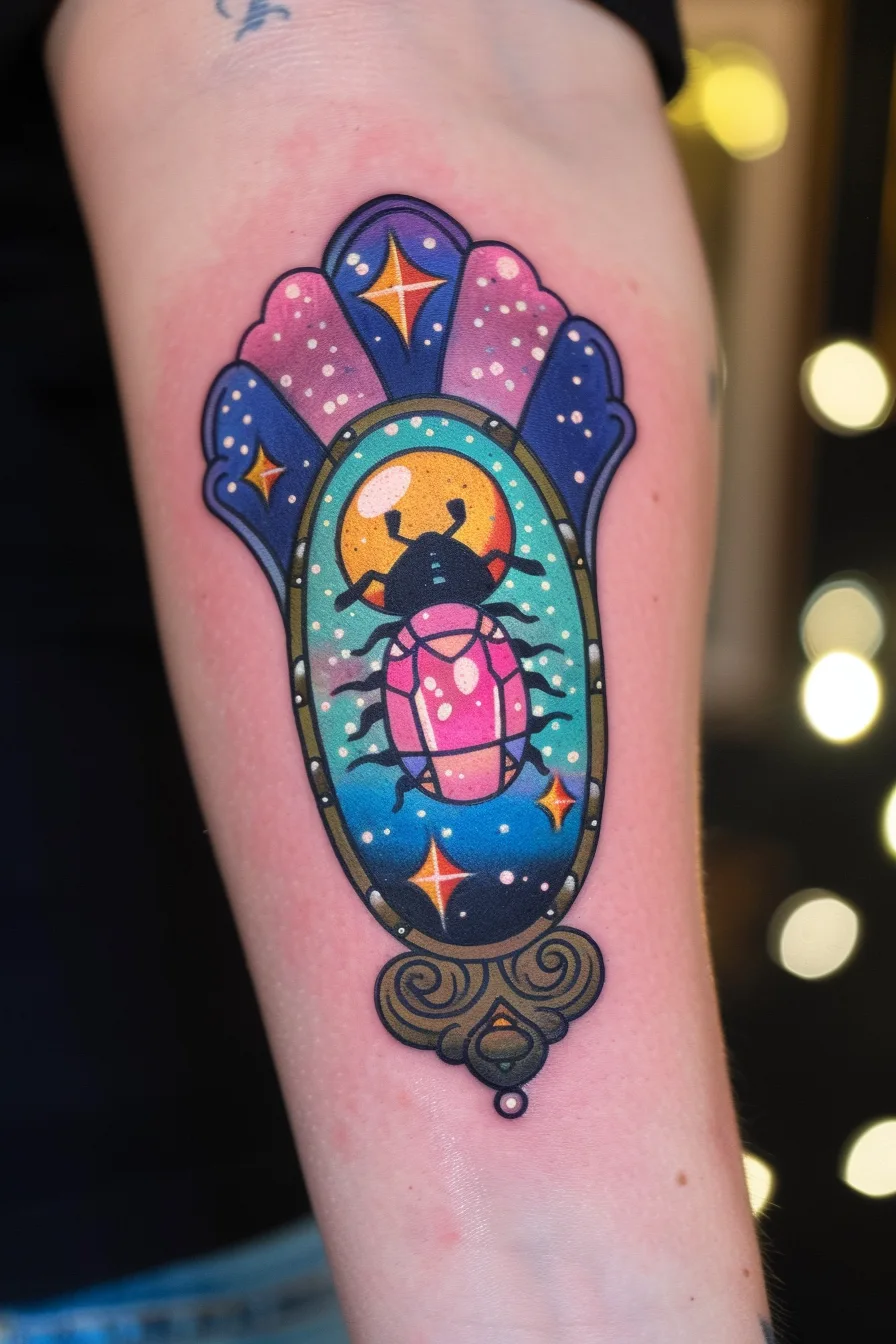
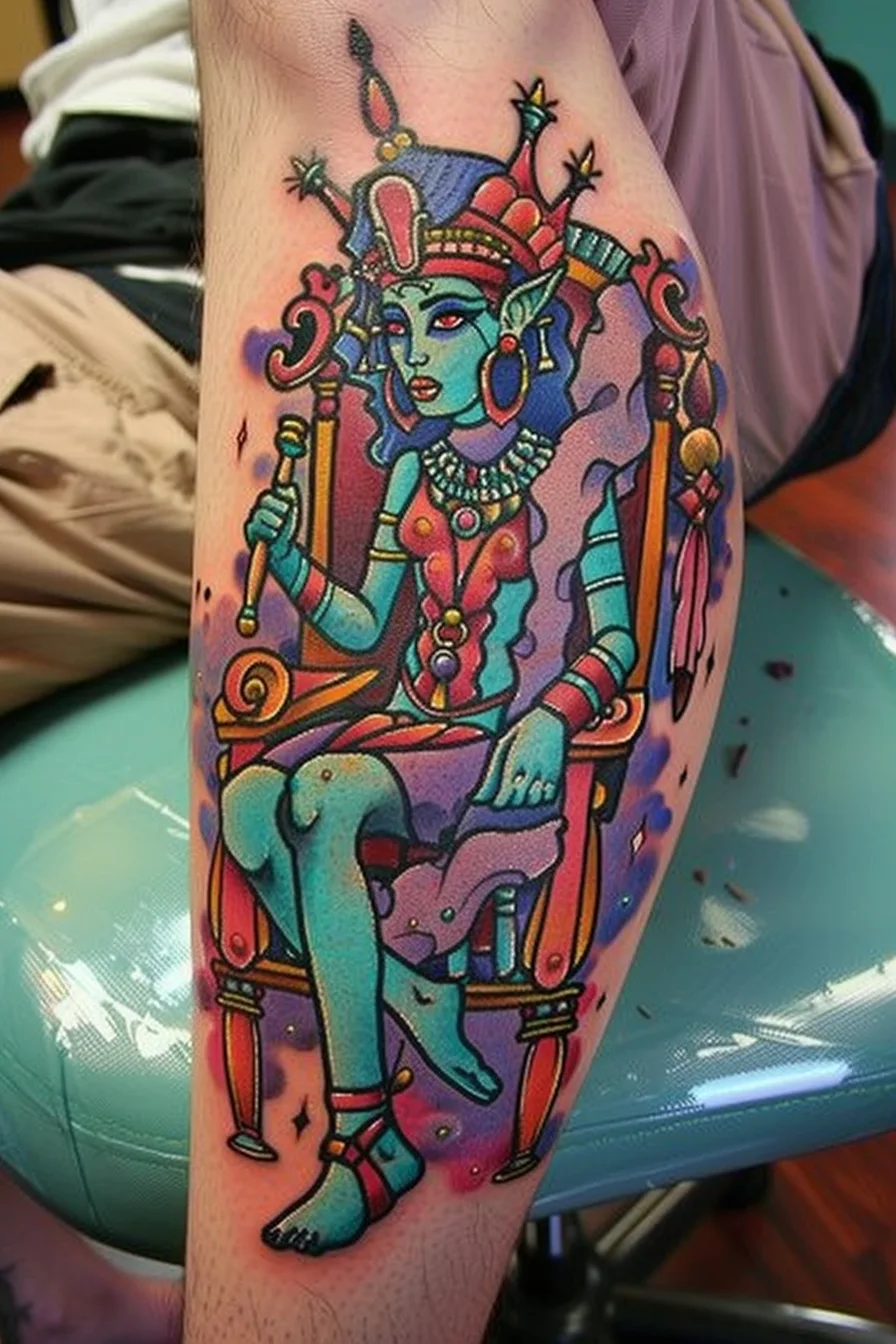
Minimalist Style
The minimalist style for King Tut tattoos often features simple, elegant depictions of the pharaoh's iconic symbols, such as the distinctive double crown or the sarcophagus shape. This approach emphasizes clean lines, negative space, and a focus on the core elements of the design, creating a visually striking and understated tattoo.
Minimalist line art and simplified hieroglyphic motifs are common in this style, capturing the essence of King Tut's legacy with a modern, pared-down aesthetic. The simplicity of the minimalist King Tut tattoo allows the powerful symbolism to shine through, making a statement with a subtle yet impactful design.
This style appeals to those seeking a refined, timeless tribute to the legendary Egyptian ruler.
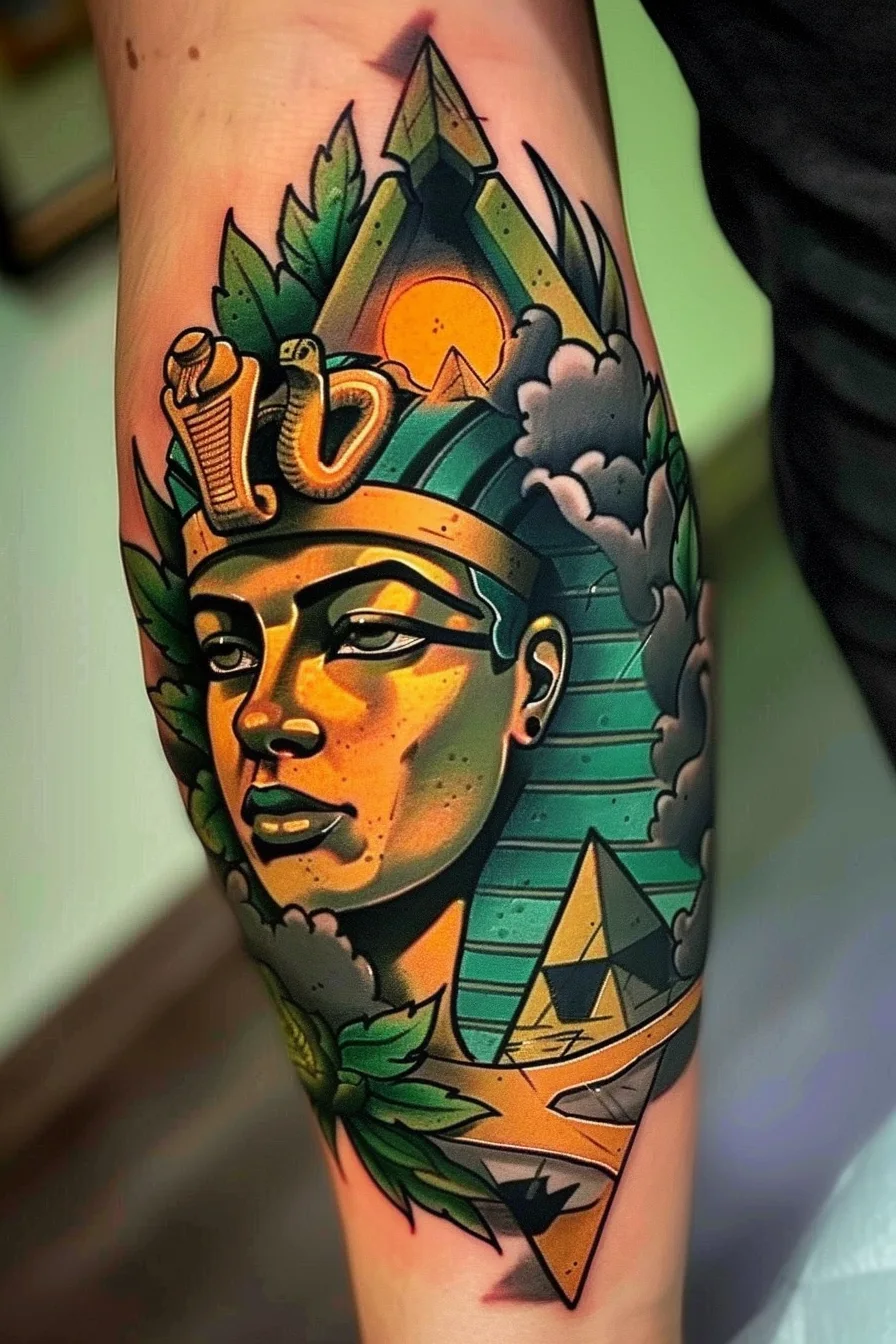
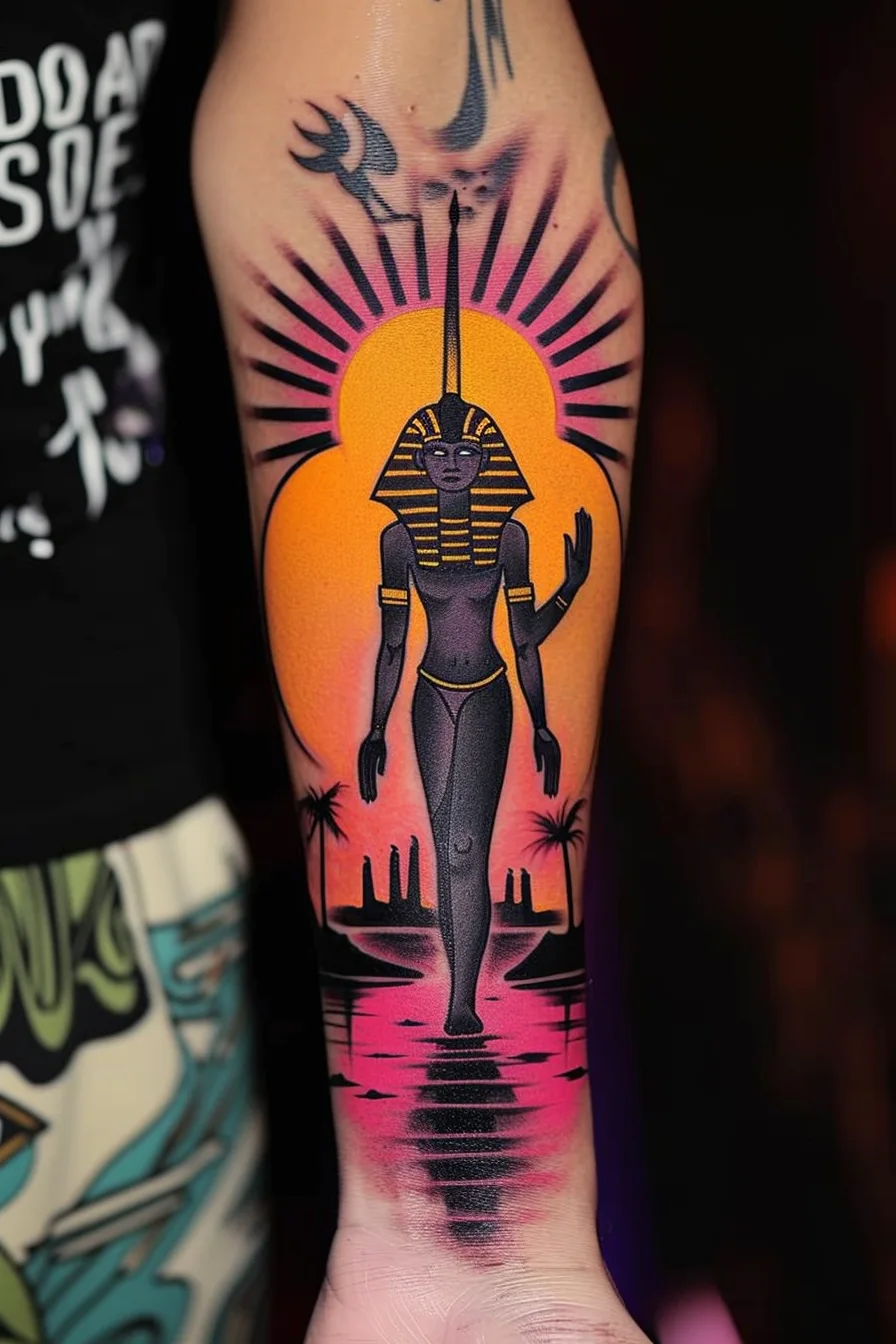
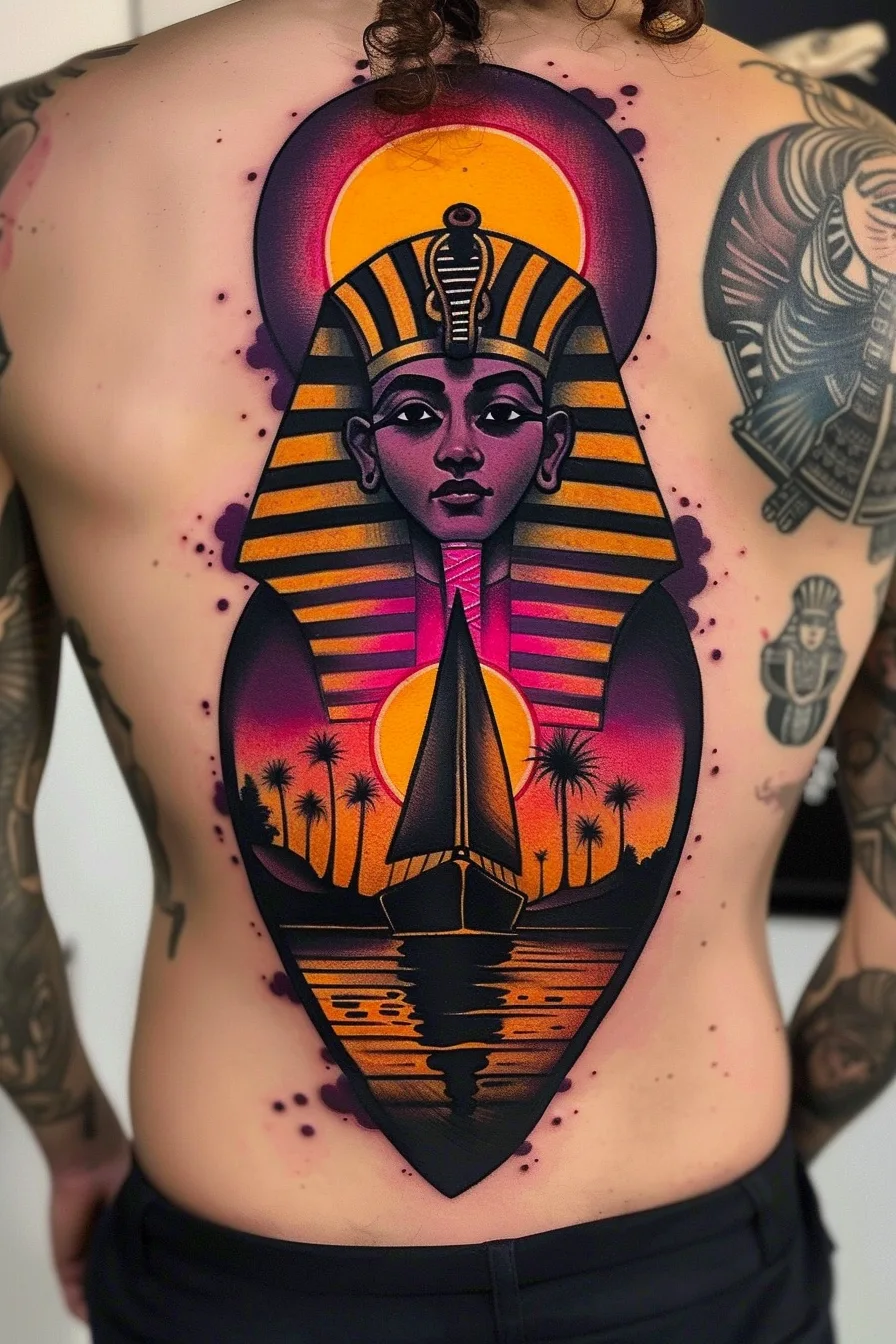
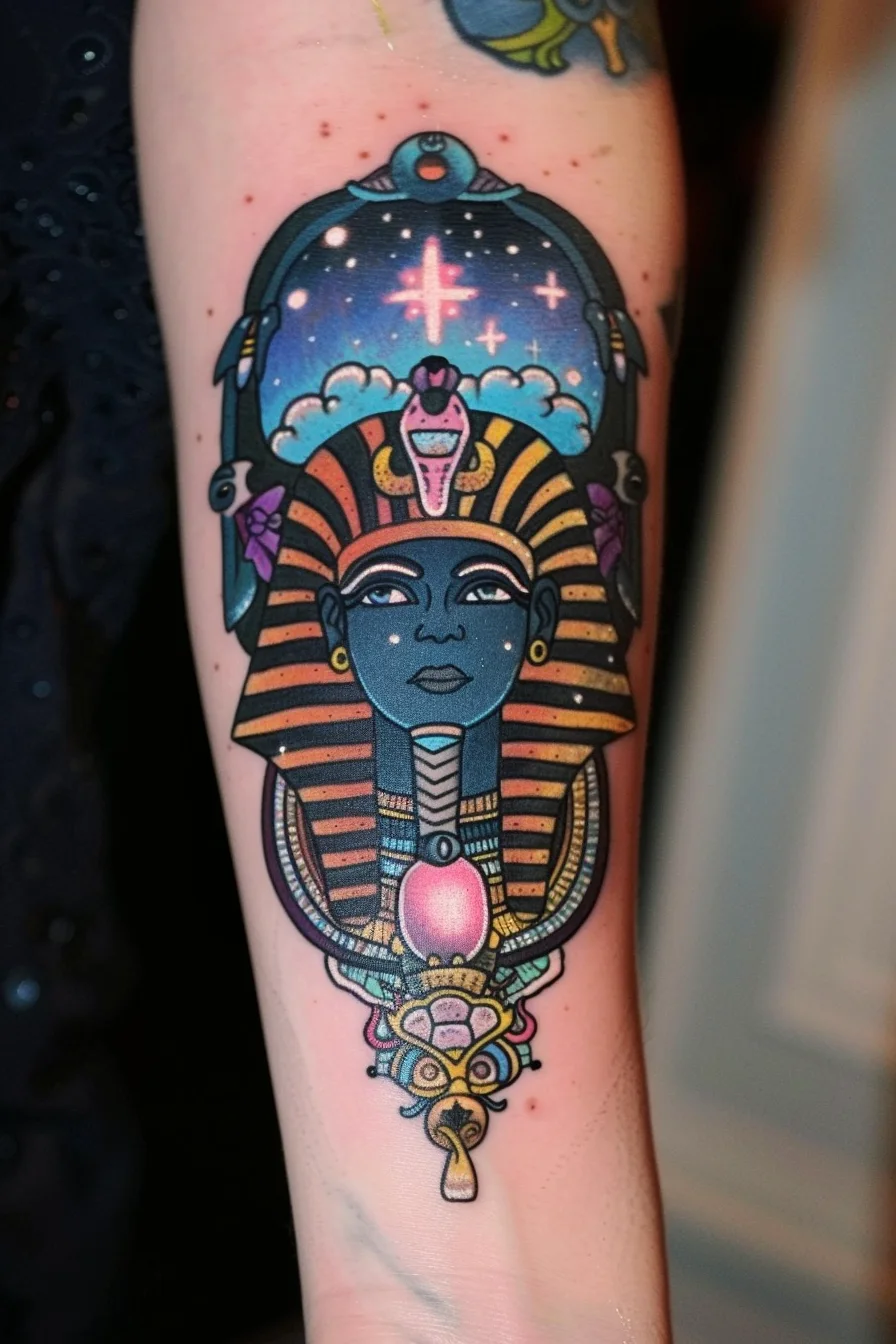
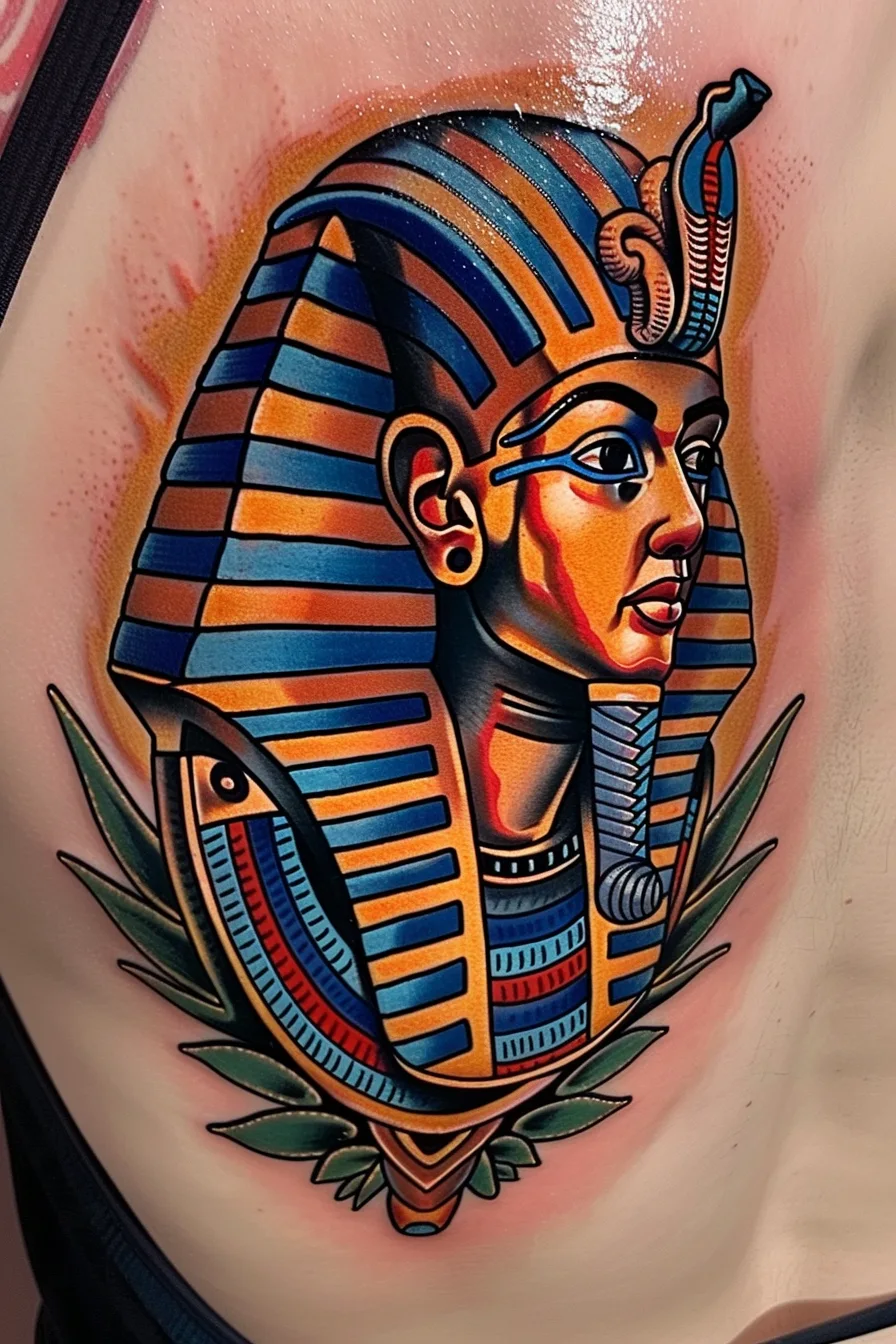
Mandala Style
Building upon the minimalist approach, the mandala style of King Tut tattoos often incorporates intricate, symmetrical patterns that draw inspiration from ancient Egyptian design motifs.
These elaborate compositions typically feature the pharaoh's sarcophagus or other iconic symbols, such as the ankh or the eye of Horus, situated within a circular, geometric framework reminiscent of traditional mandala structures.
The mandala's sacred geometry and tribal patterns create a visually striking and meaningful design that connects the wearer to the rich cultural heritage of ancient Egypt.
This intricate style requires skilled artistry to execute properly, resulting in a truly captivating and spiritually-infused King Tut tattoo.
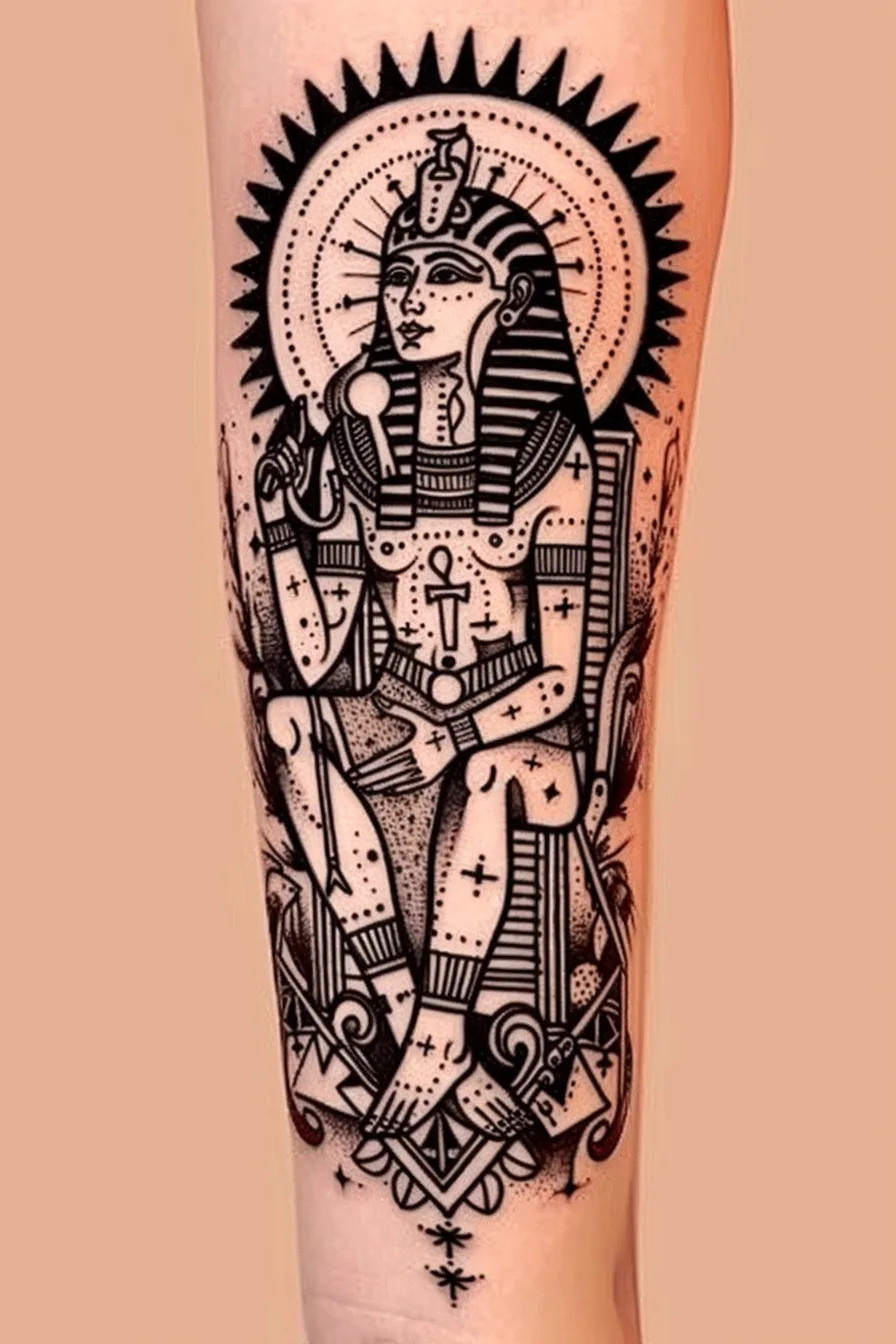
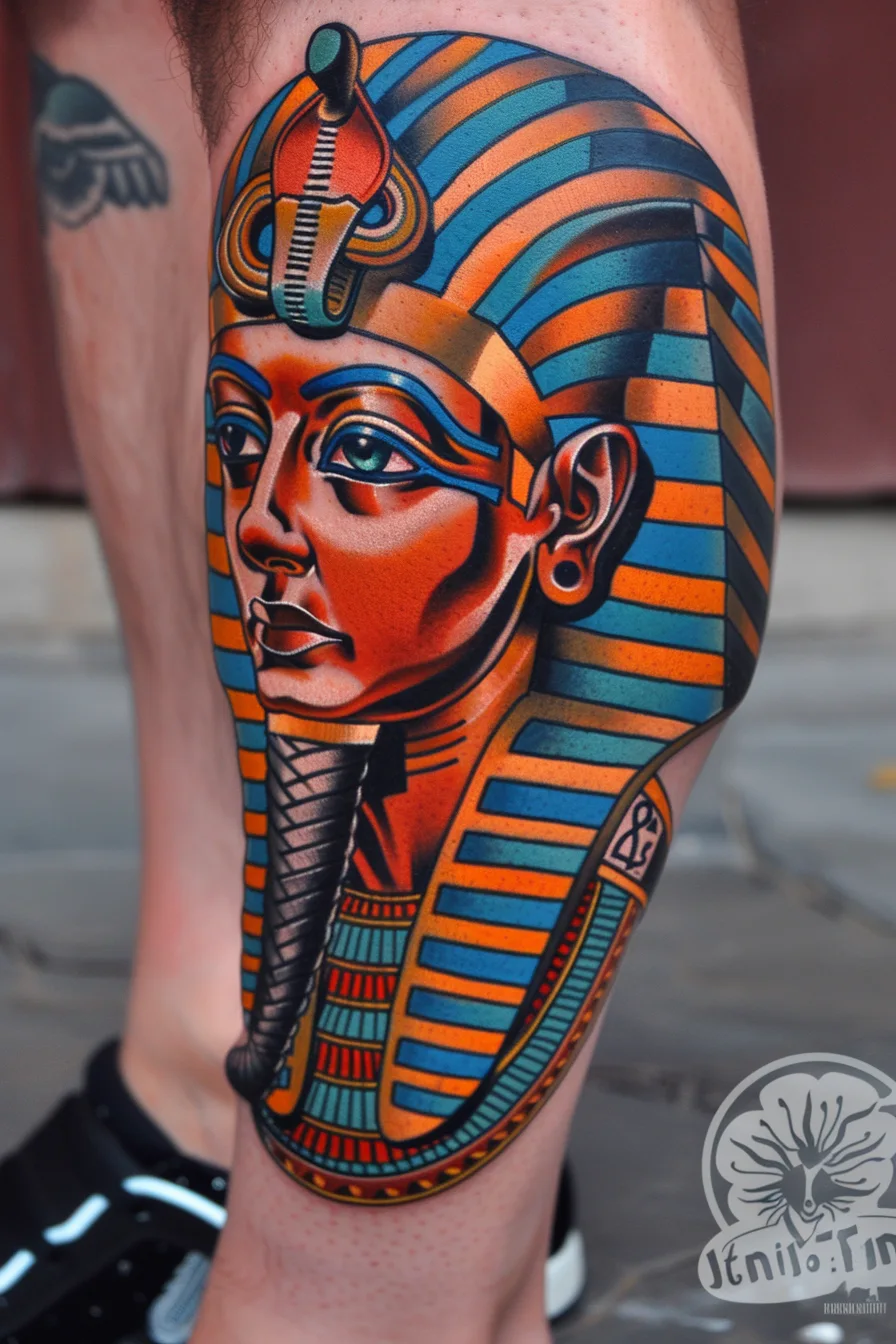
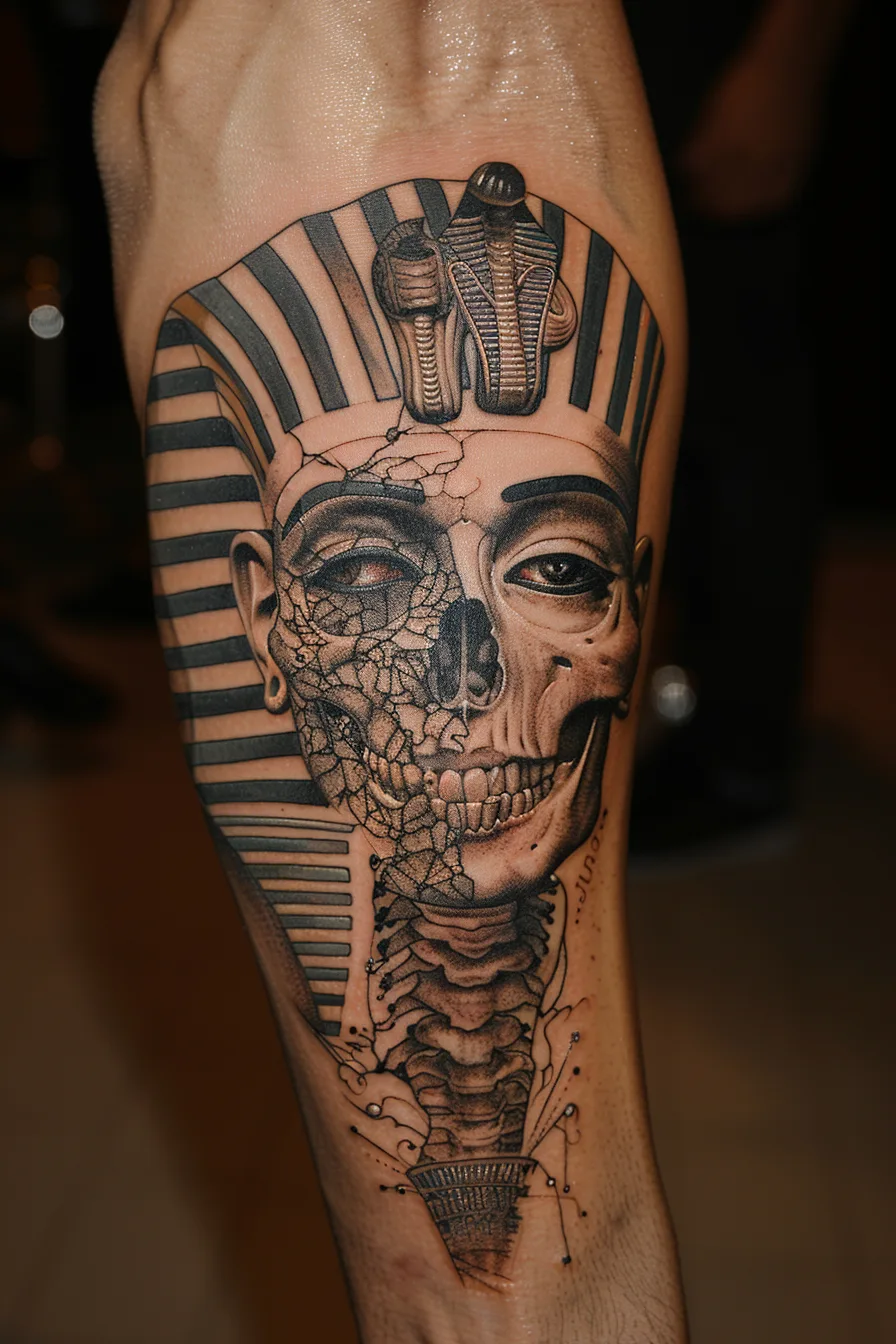
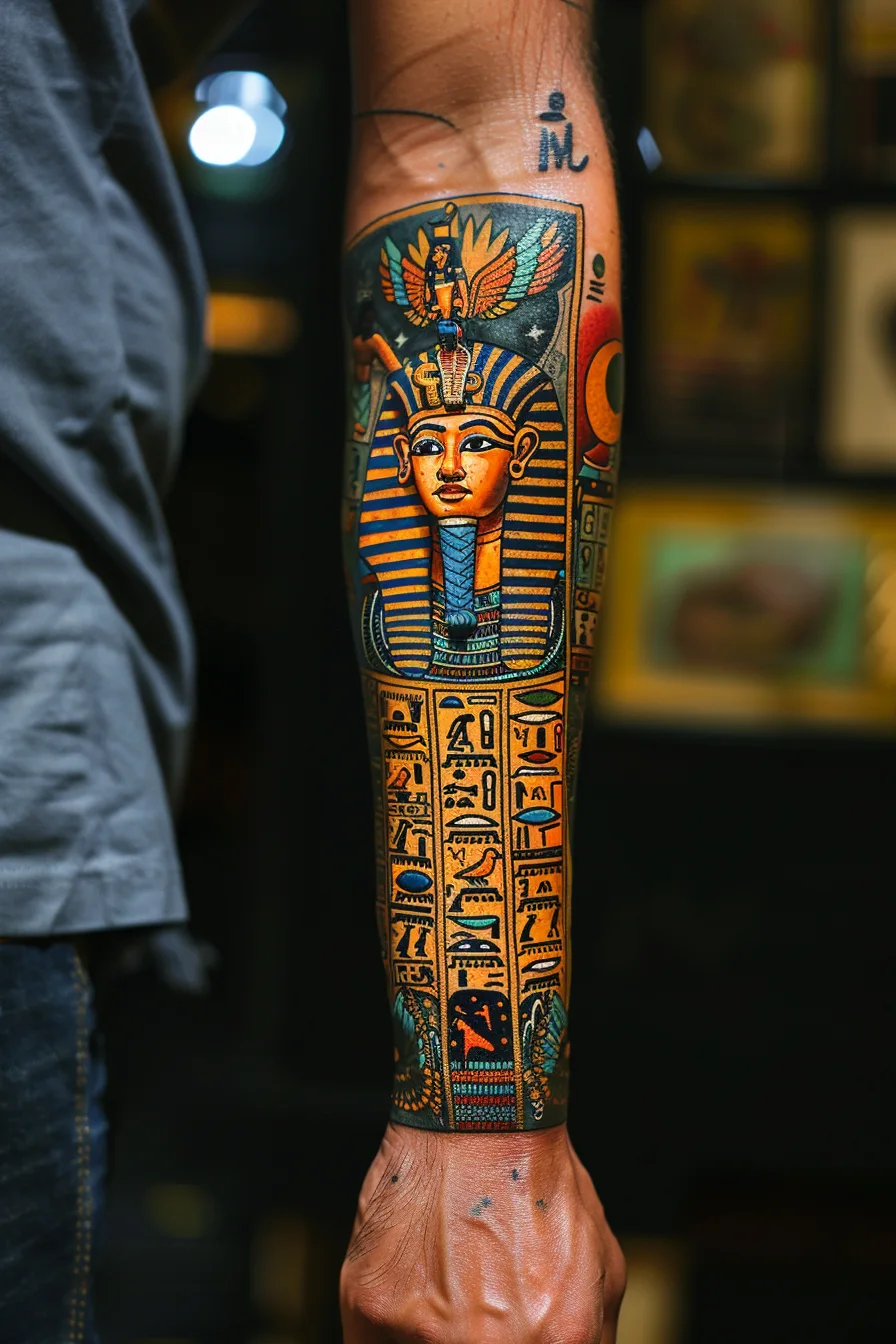
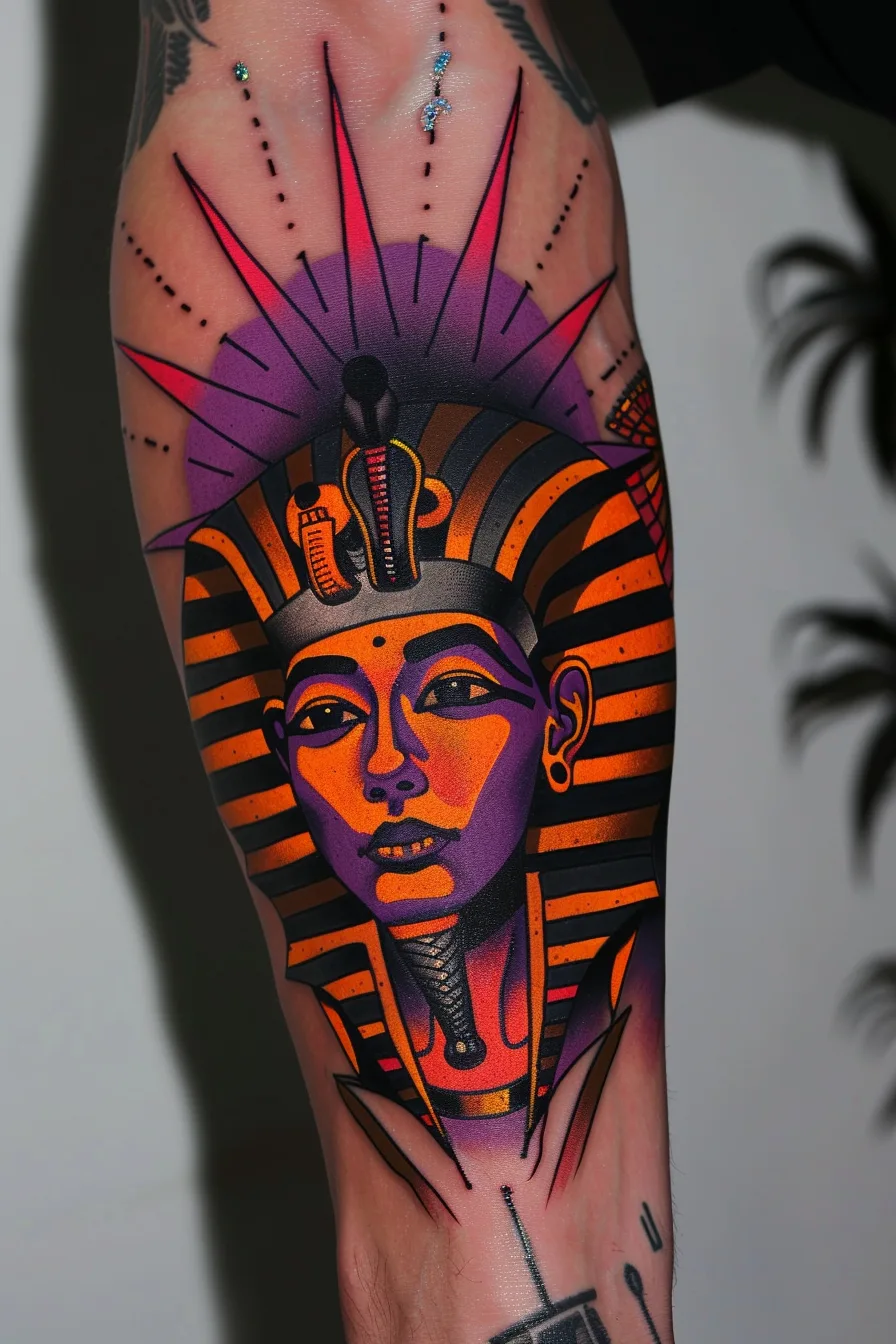
American Traditional Style
In contrast to the intricate and symmetrical mandala-inspired designs, the American traditional style of King Tut tattoos embraces a bold, minimalist approach that emphasizes the iconic imagery associated with the legendary Egyptian pharaoh.
This style typically features distinct black outlines, a limited color palette, and a focus on symbolic elements like the pharaoh's headdress, the ankh (the Egyptian symbol of life), or the iconic profile of King Tut himself.
The cultural significance of these motifs is captured in a timeless, classic aesthetic that has endured through the decades, making American traditional King Tut tattoos a popular choice for those seeking a bold, visually striking representation of this ancient Egyptian legend.
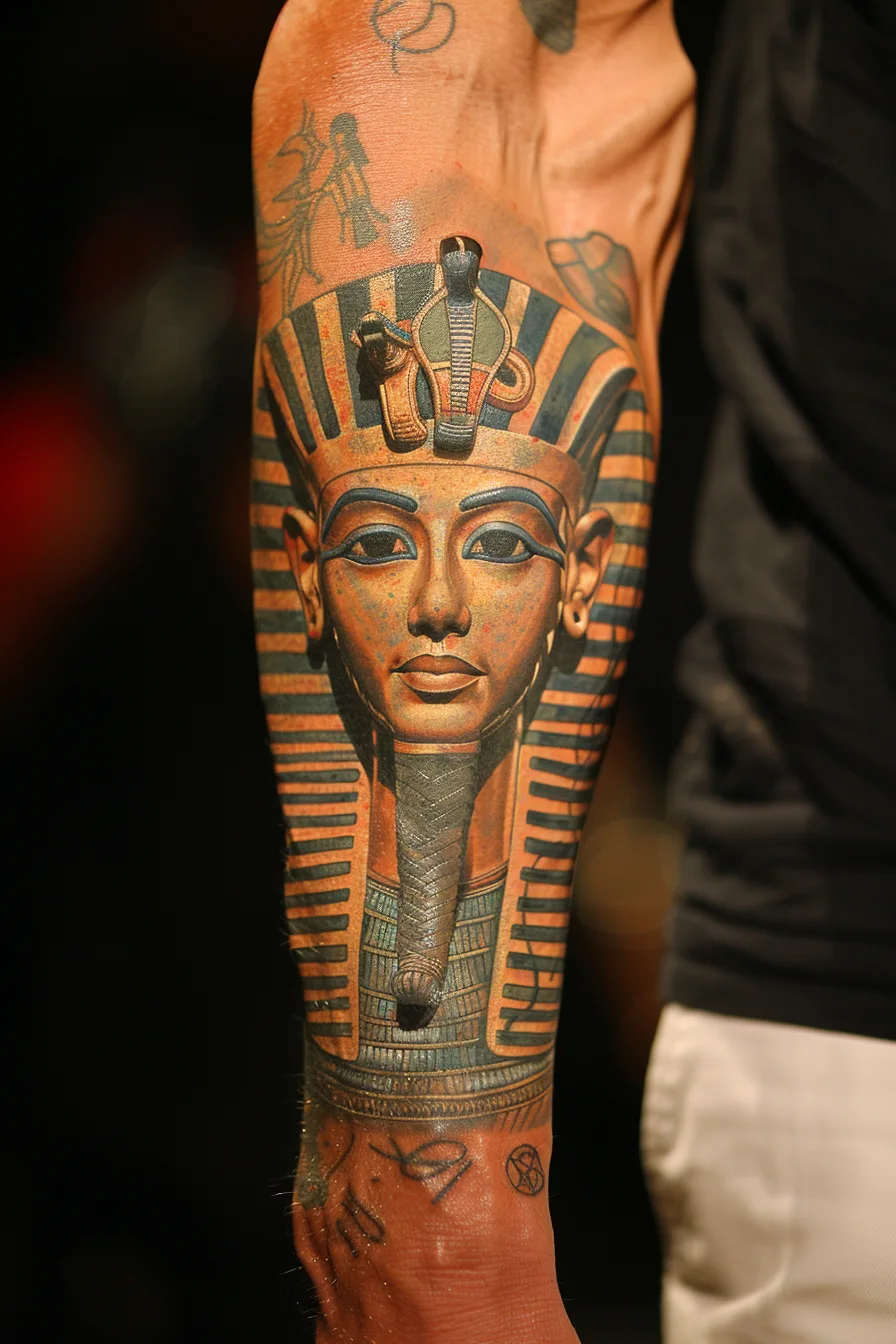
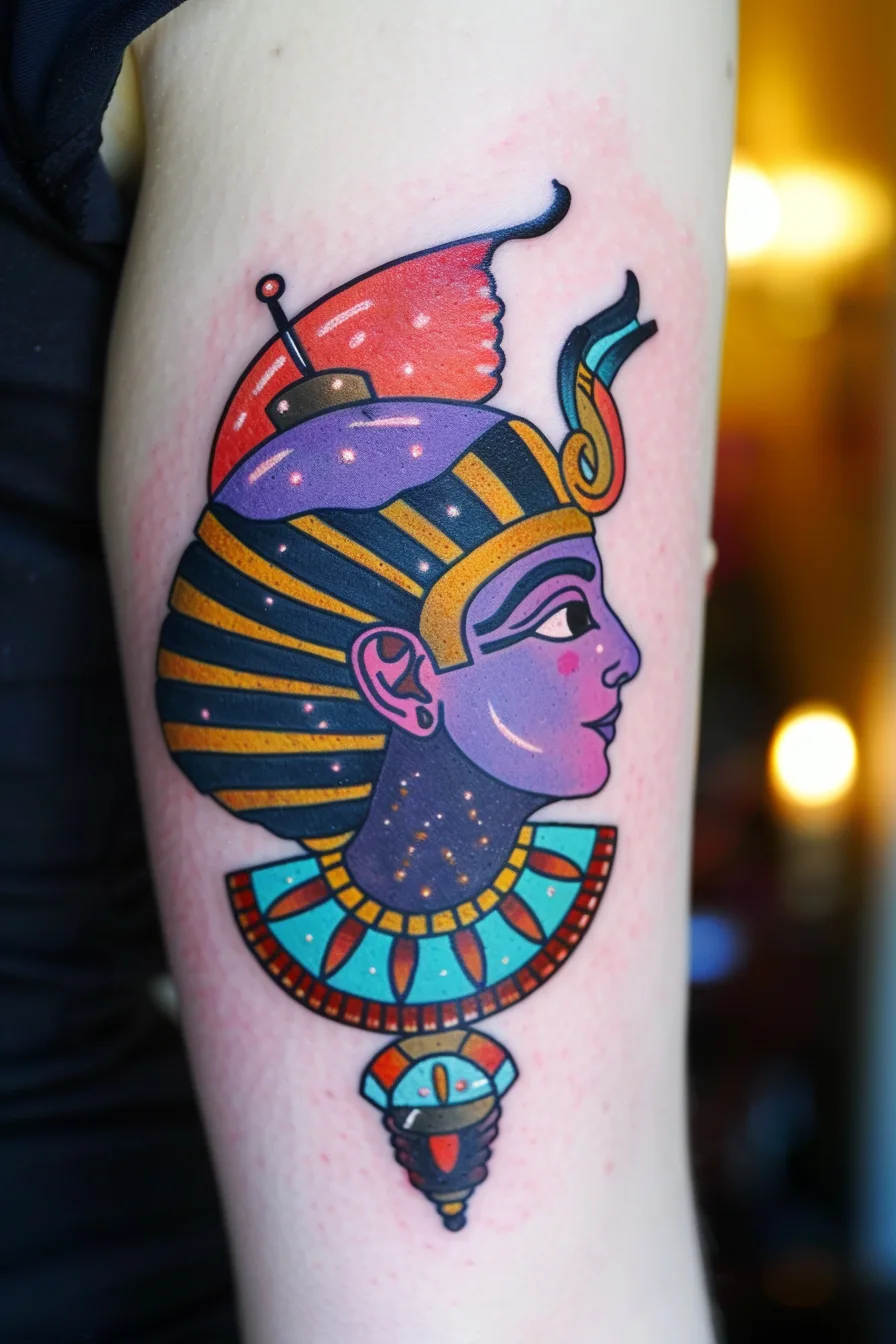
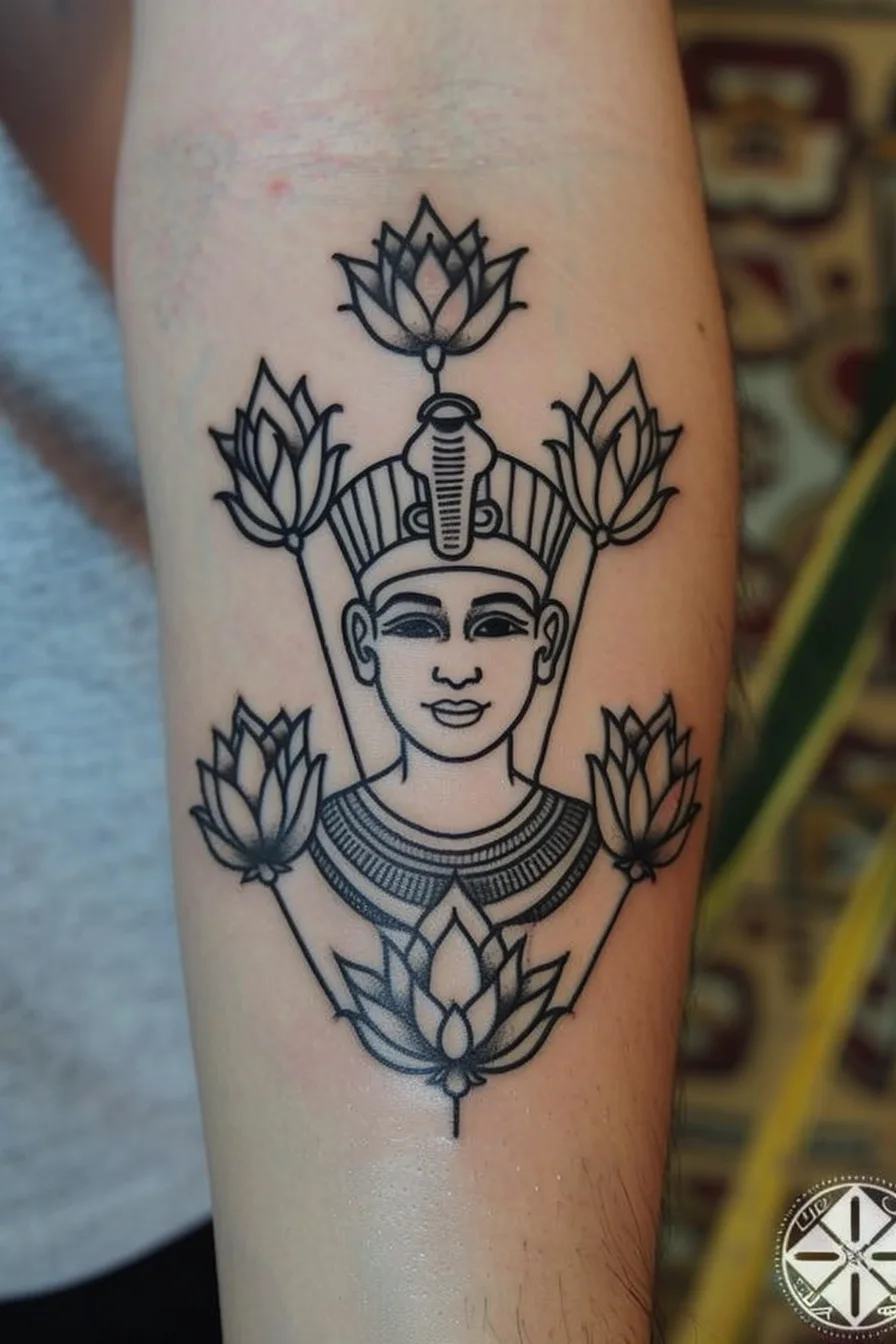
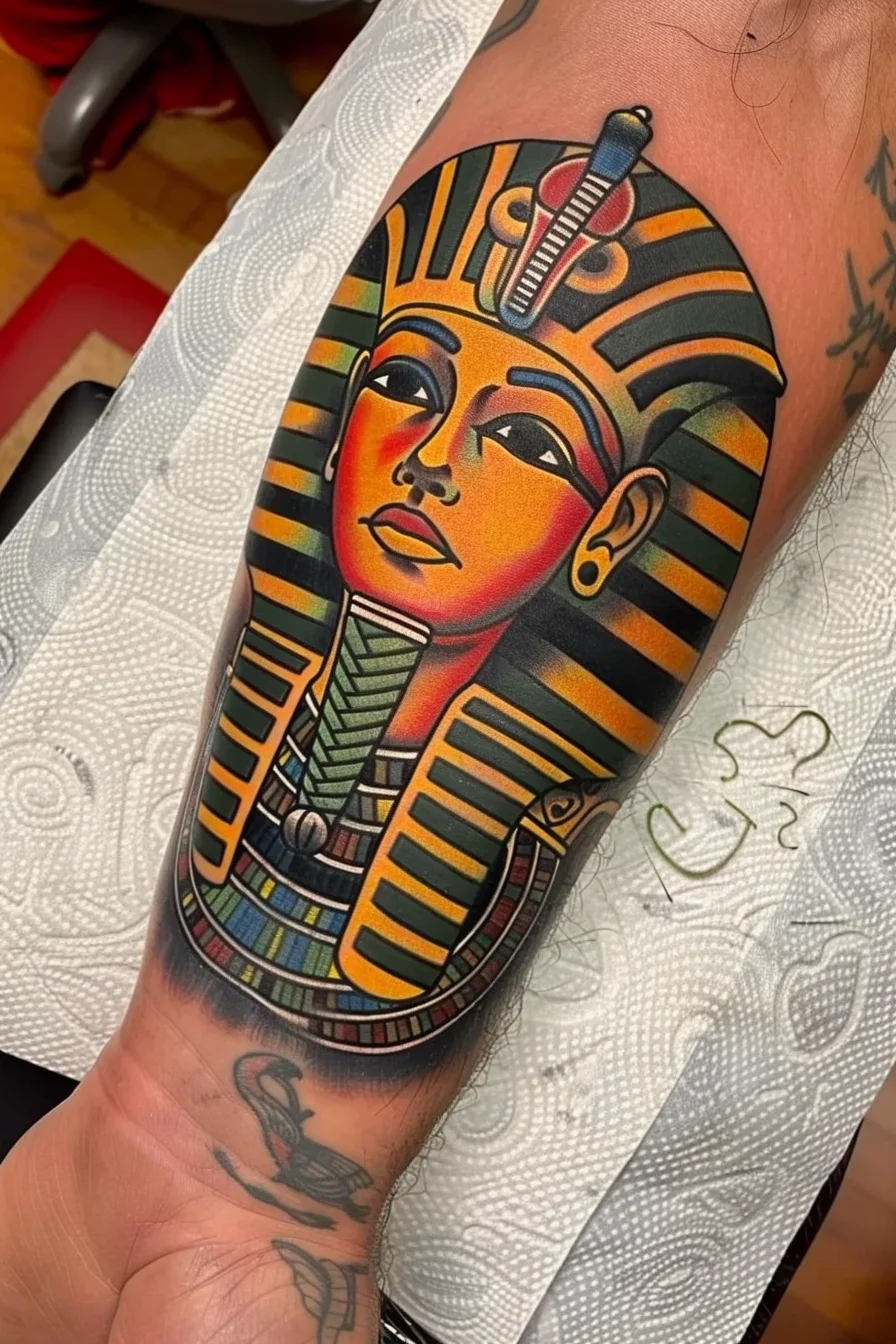
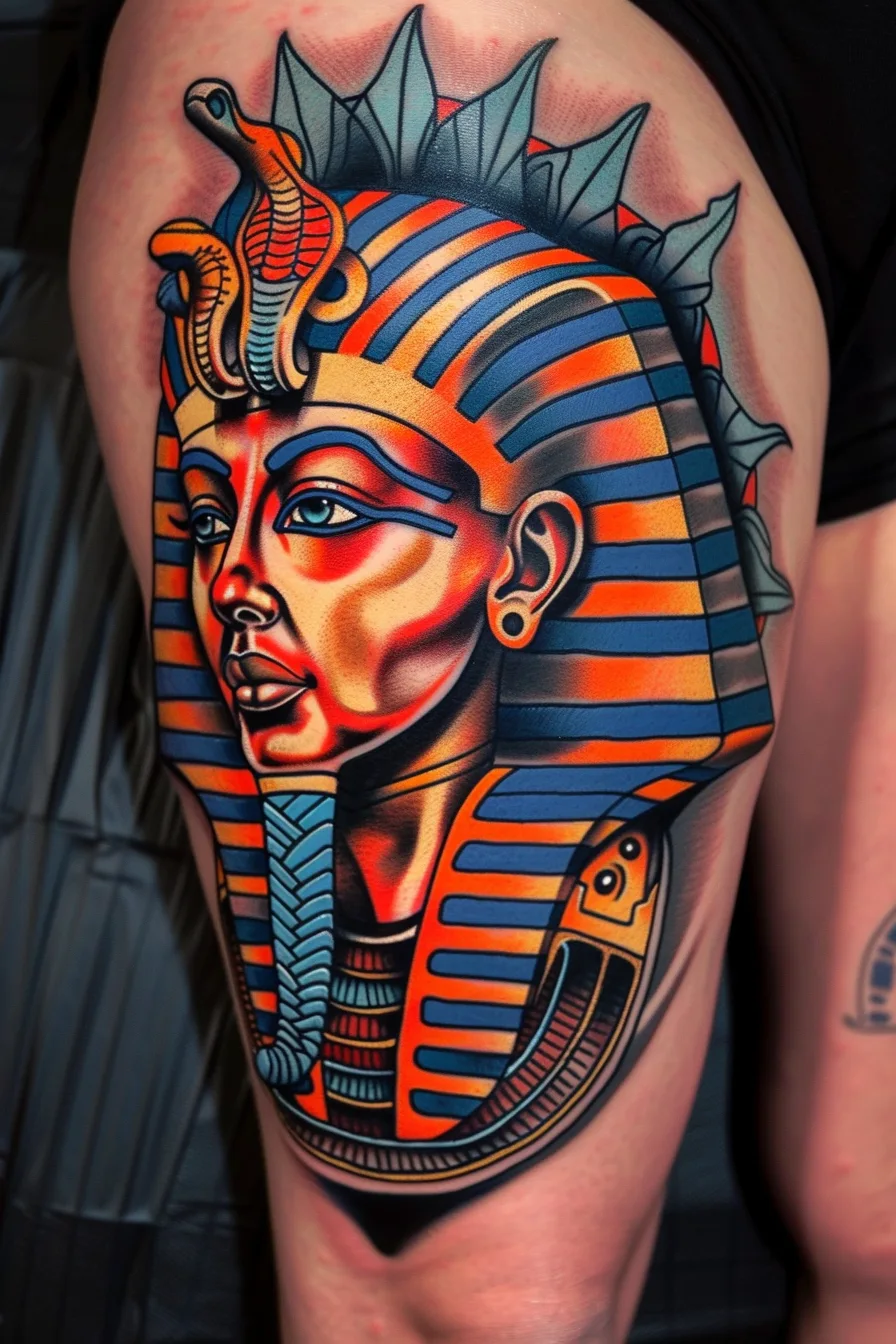
Neo-Traditional Style
Alongside the American traditional style, the neo-traditional approach to King Tut tattoos embraces a more contemporary aesthetic while still drawing inspiration from the iconic imagery associated with the legendary Egyptian ruler.
These modern tattoo interpretations often feature a blend of ancient Egyptian influences and a bold, graphic style that appeals to a wide range of tattoo enthusiasts.
The neo-traditional King Tut design may showcase vibrant colors, clean lines, and a stylized representation of the pharaoh's likeness, capturing the essence of his legacy in a fresh, visually striking manner.
This versatile approach allows tattoo artists to create unique designs that resonate with both traditionalists and those seeking a more avant-garde expression of this timeless subject matter.
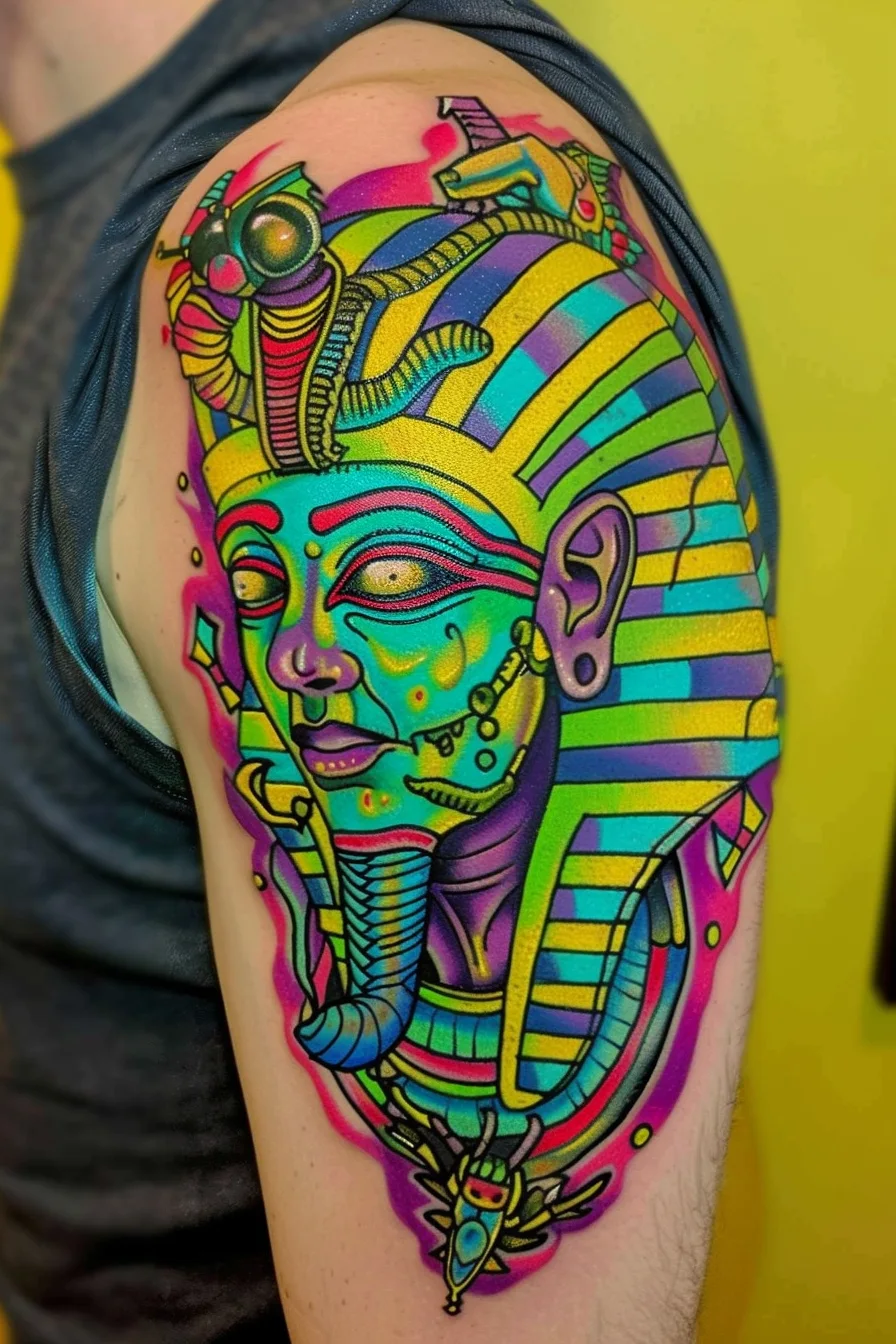
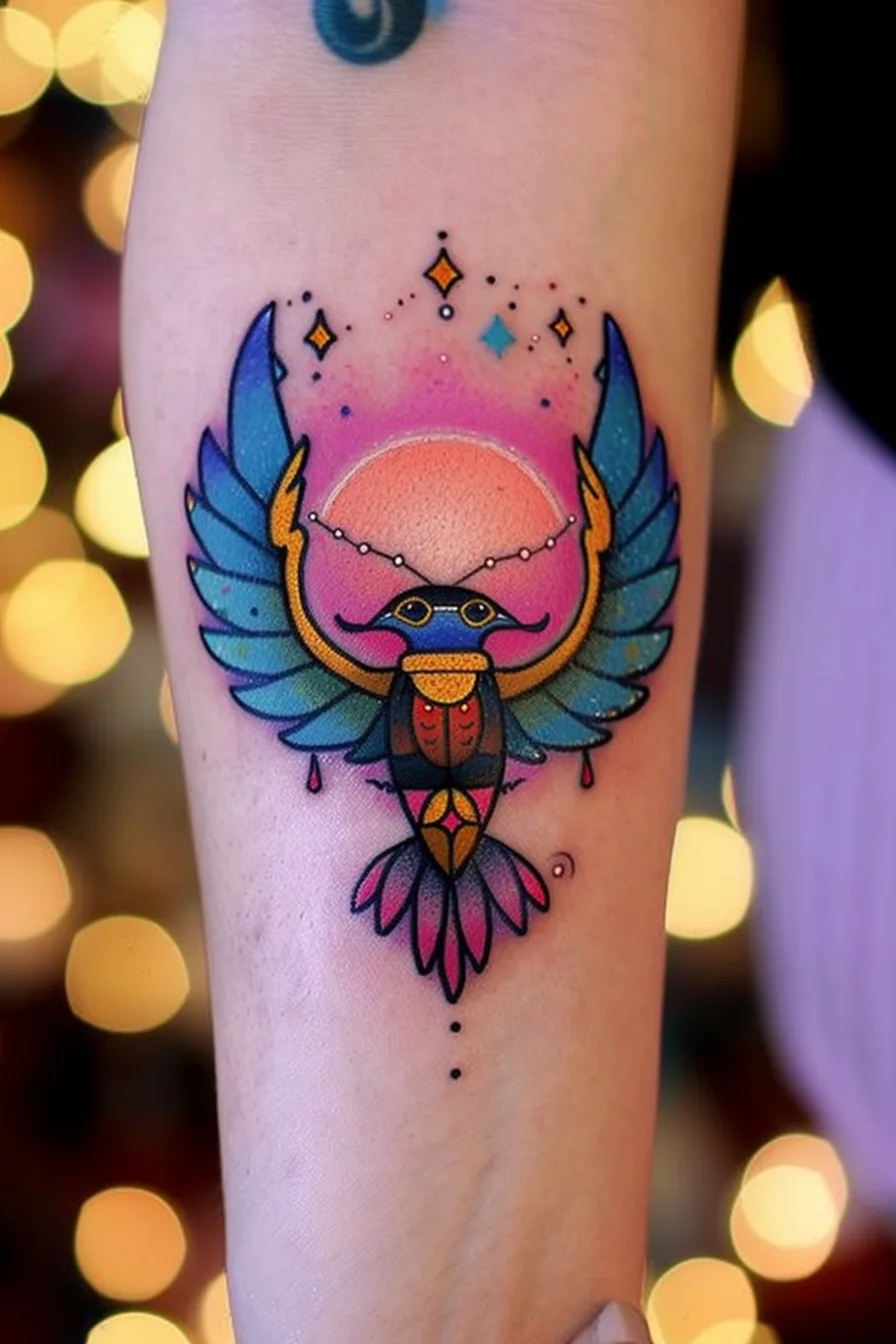
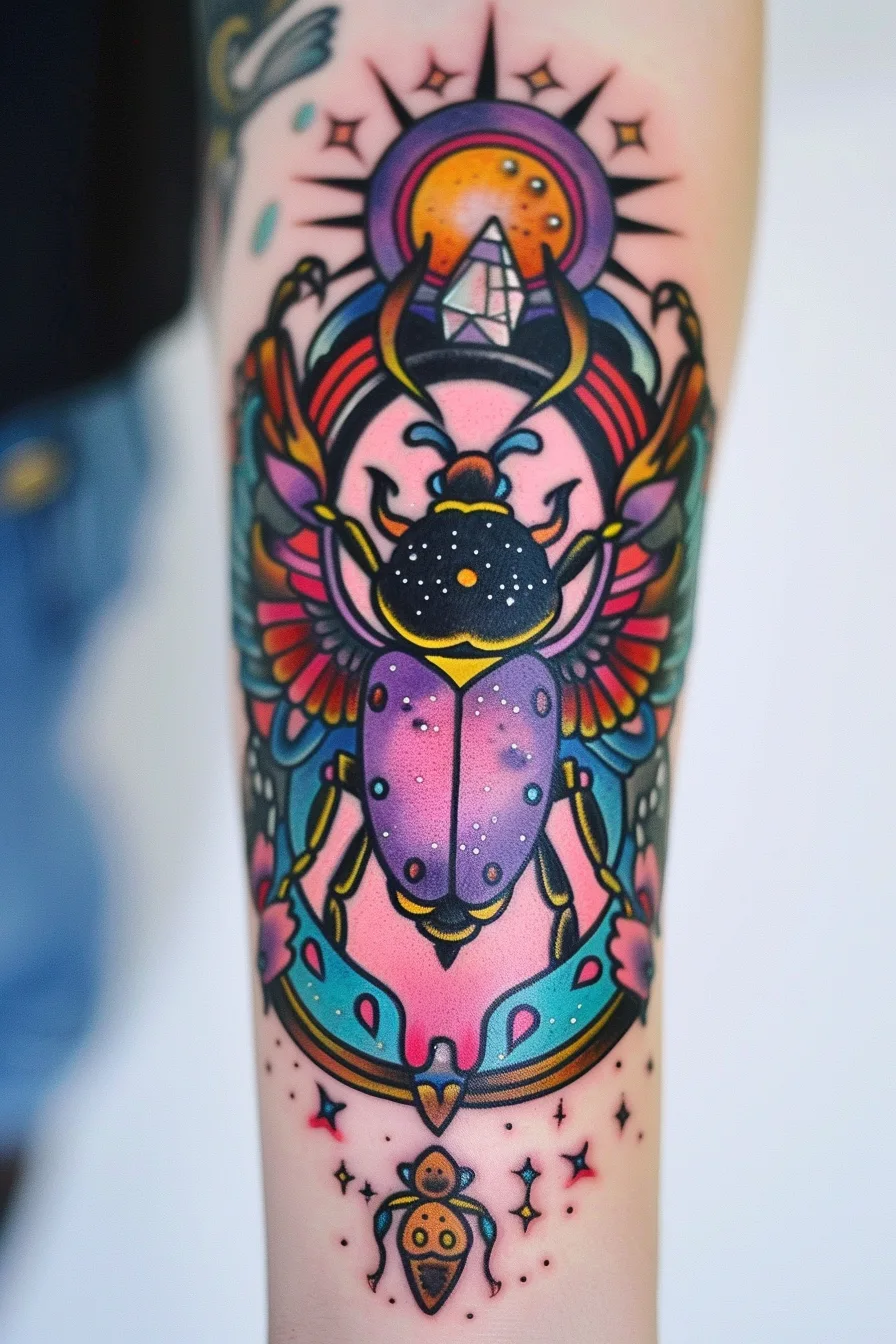

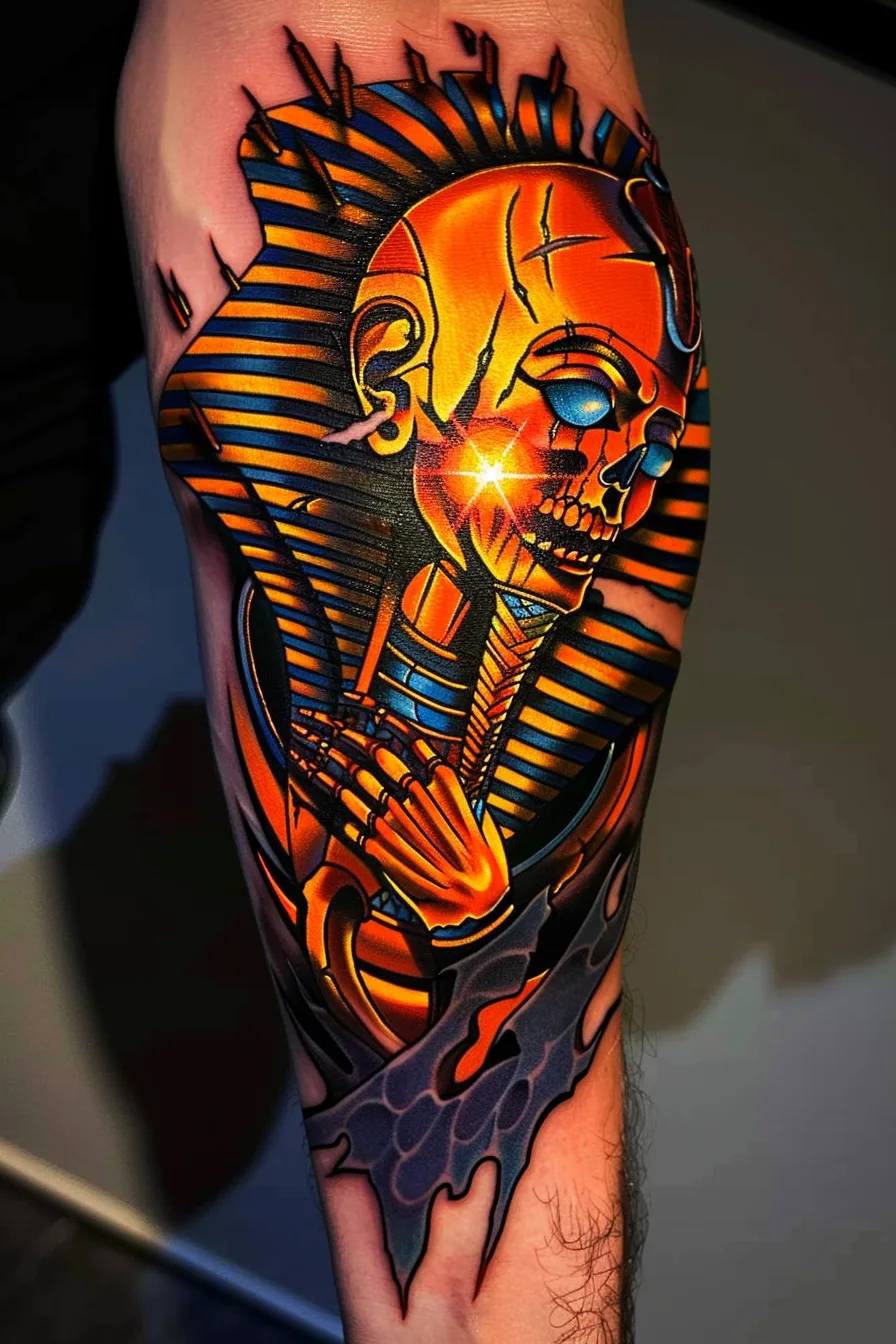
Line Art Style
Another common design style for King Tut tattoos is the line art approach, which embraces a minimalist and elegant aesthetic. This style features clean, precise lines that outline the key elements of the pharaoh's iconic imagery, often with a focus on the distinct features of his headdress, facial characteristics, and regal posture.
The line art King Tut tattoo typically forgoes intricate details or vibrant colors, instead relying on the graceful and refined execution of the linework to capture the essence of the subject matter. This style of tattoo can be a great option for those seeking a simple yet impactful representation of the legendary Egyptian pharaoh, as the line art inspiration can create a striking and visually captivating design.
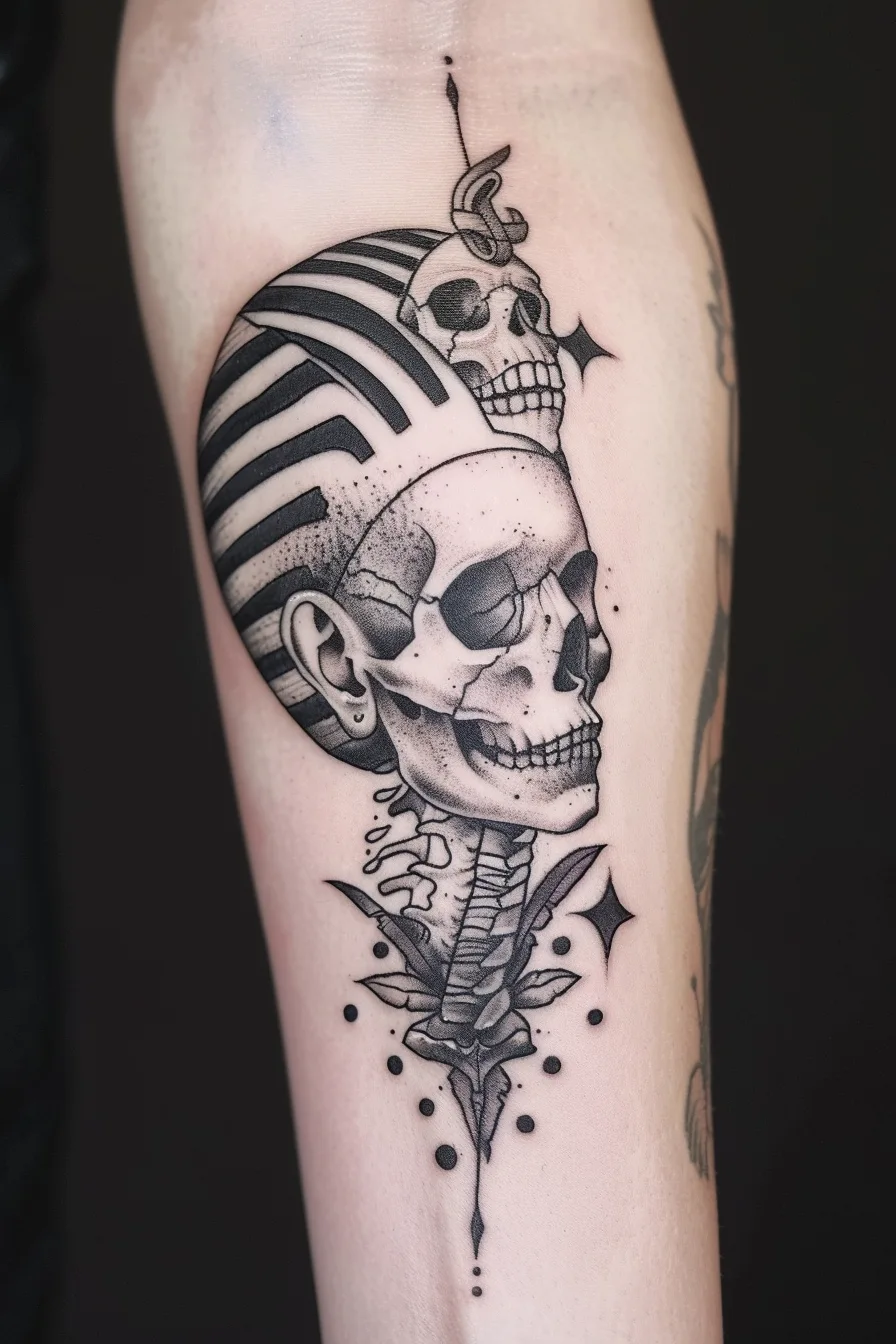
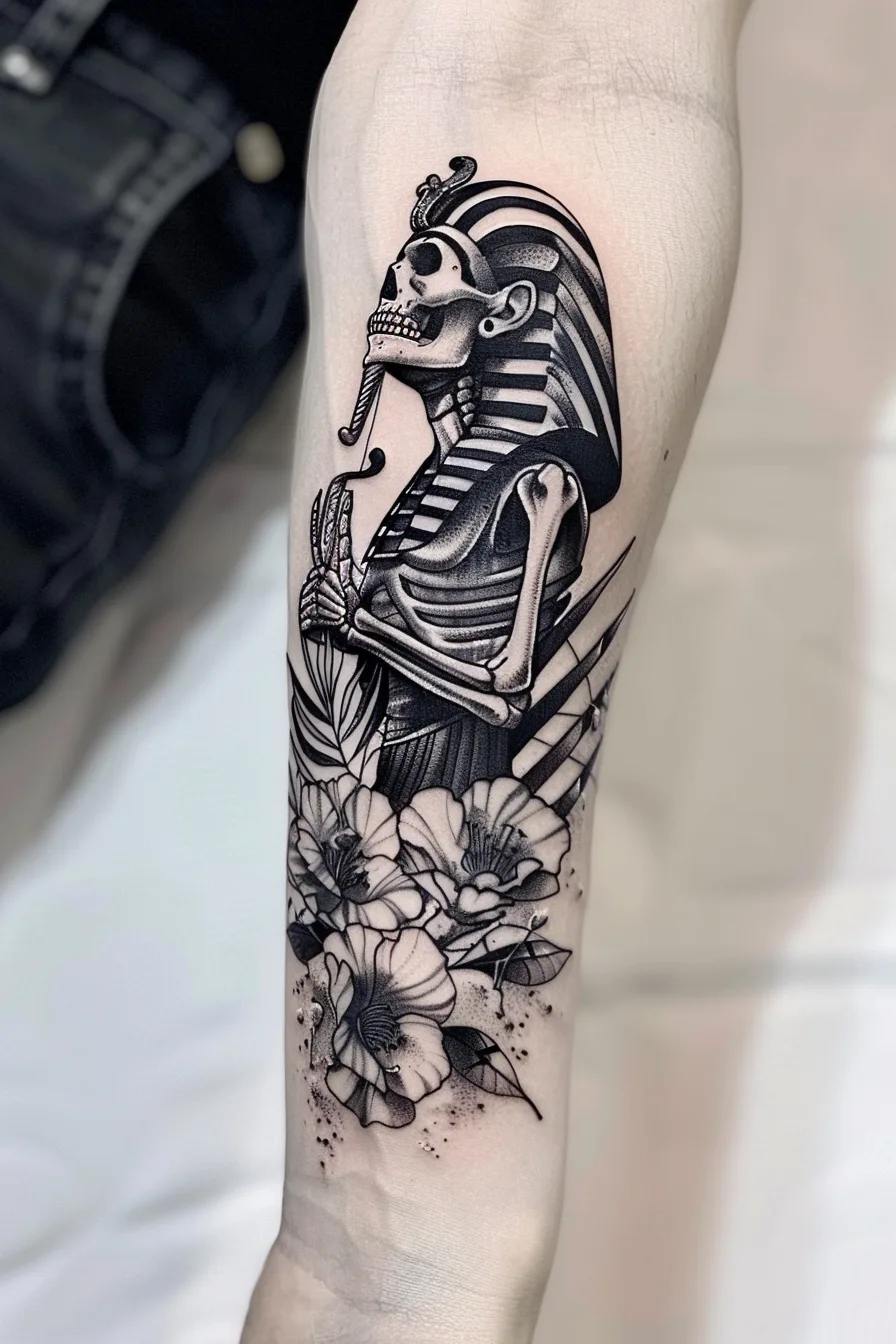

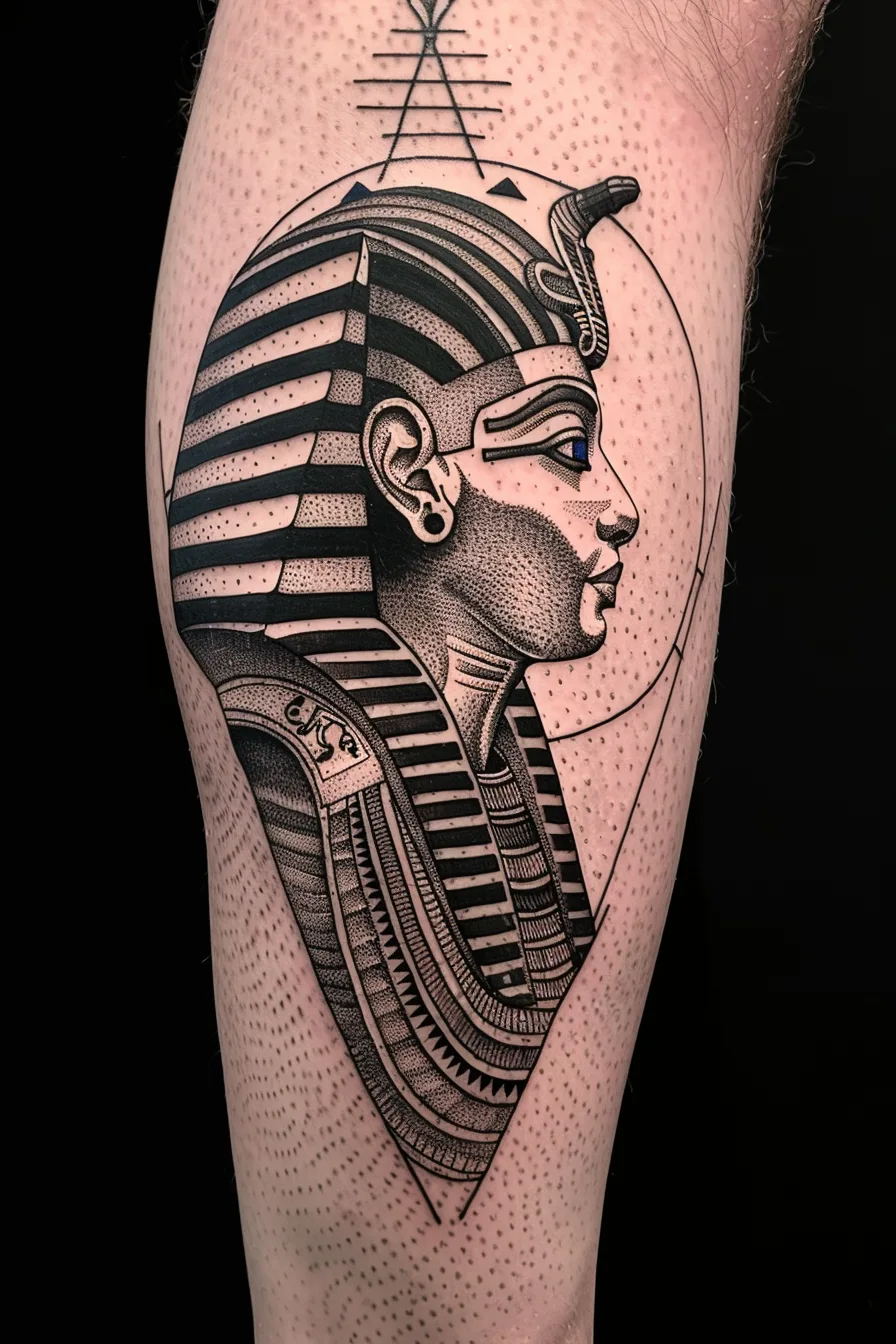
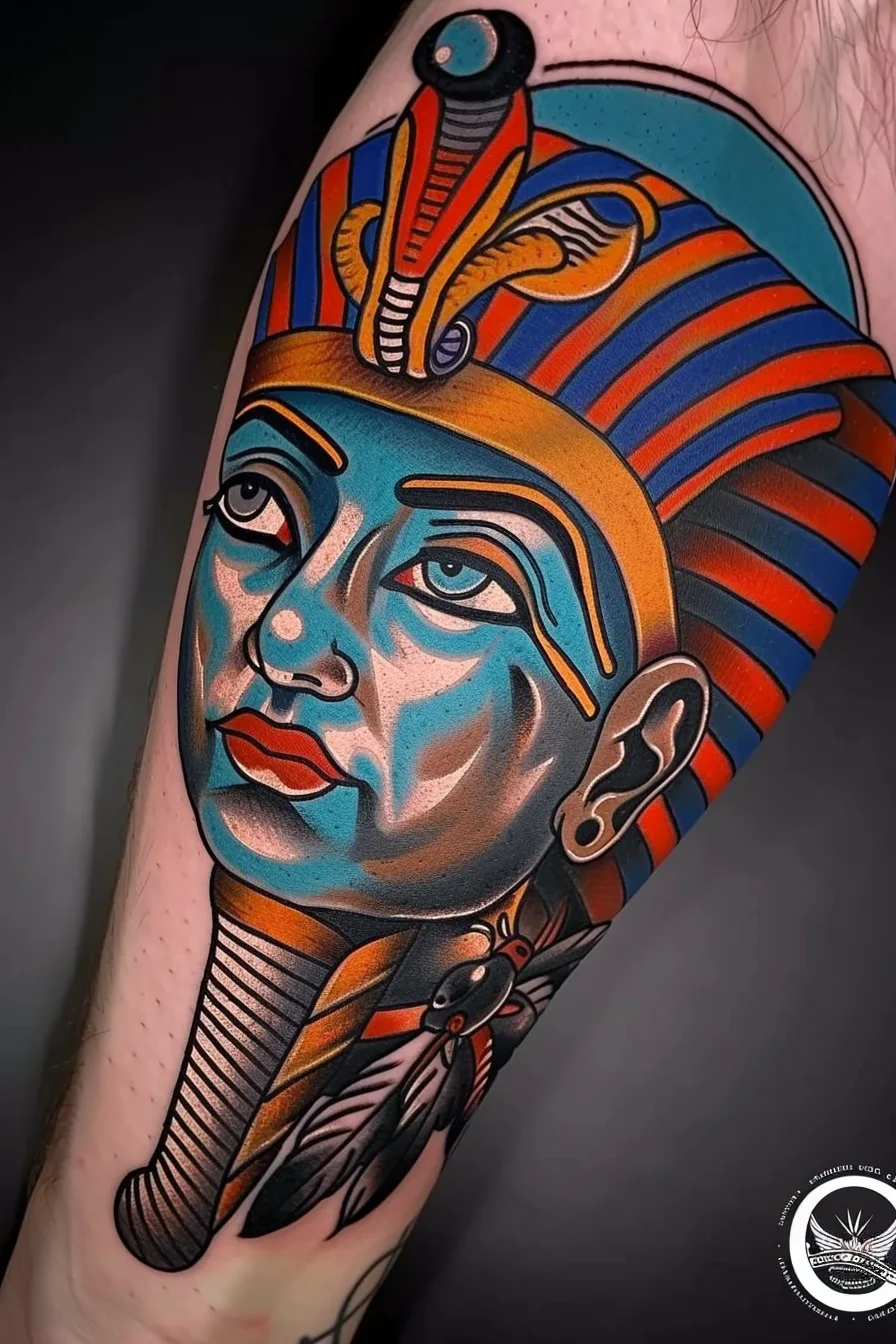
Color Variations & Meanings
The King Tut tattoo can be found in a variety of colors, each with its own symbolic meaning.
Green is often associated with fertility, life, and renewal, while black represents the power and mystery of the ancient Egyptian pharaoh.
Yellow may denote the sun and the divine, red can signify strength and courage, and blue can symbolize the Nile River and the vast expanse of the sky.
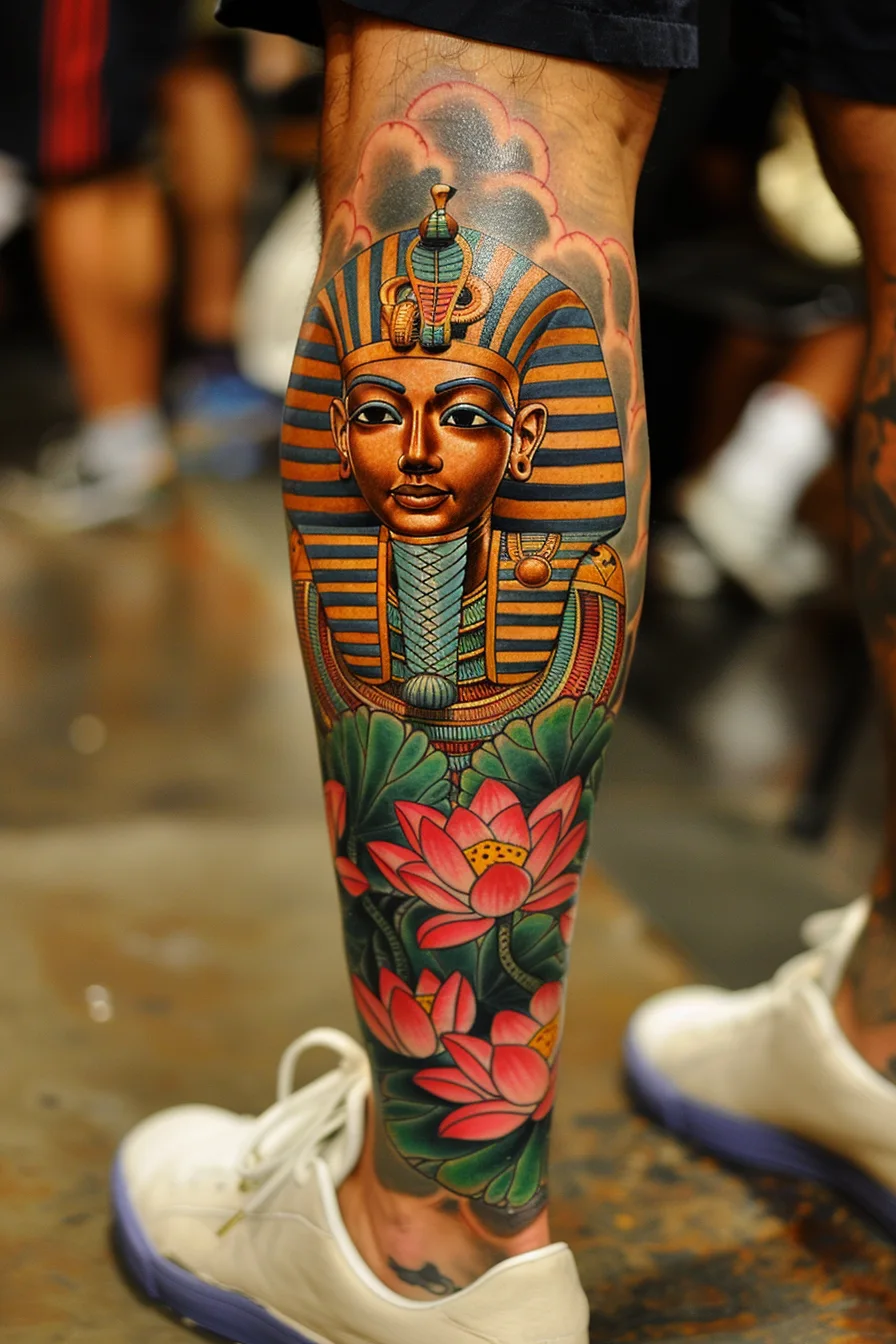
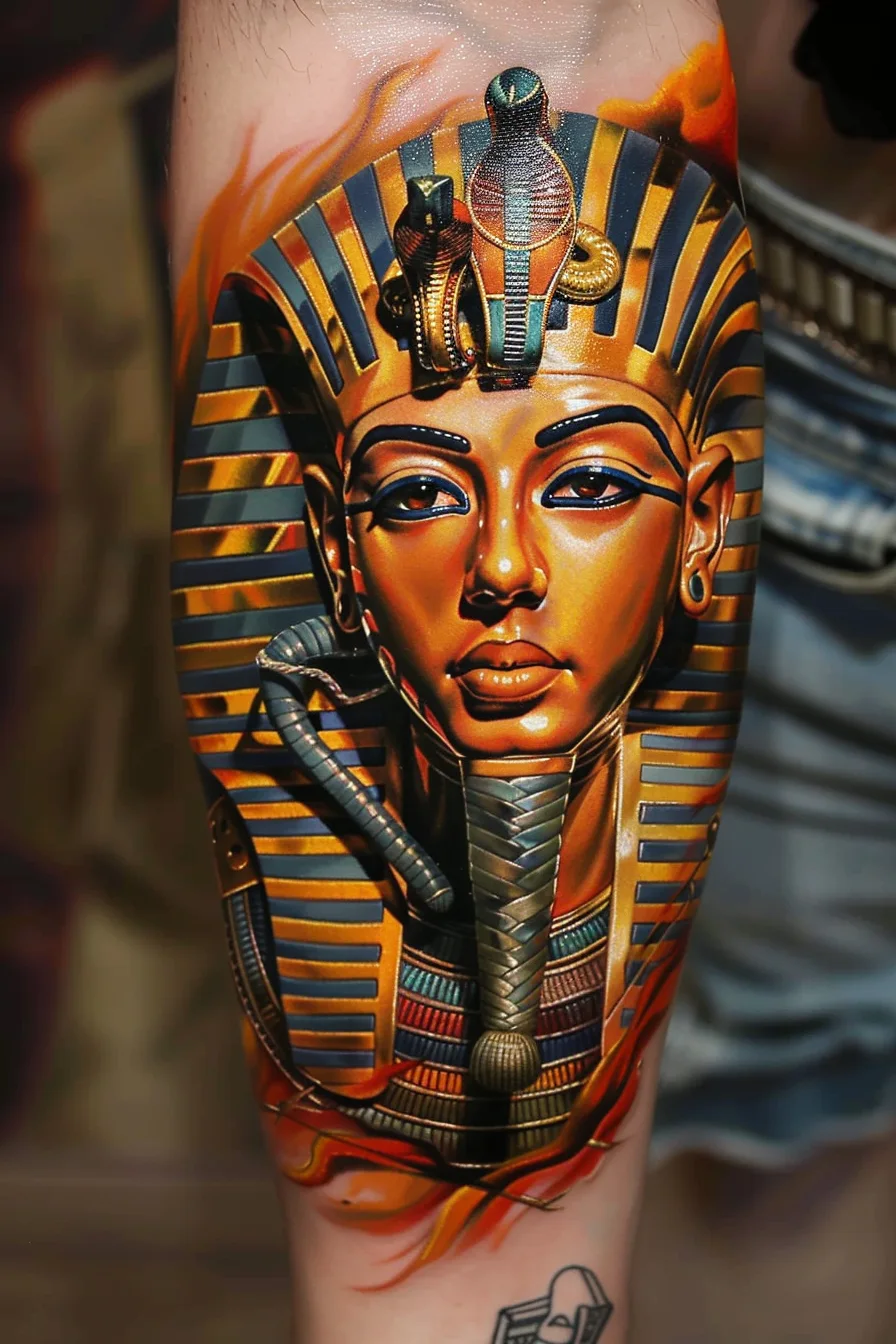

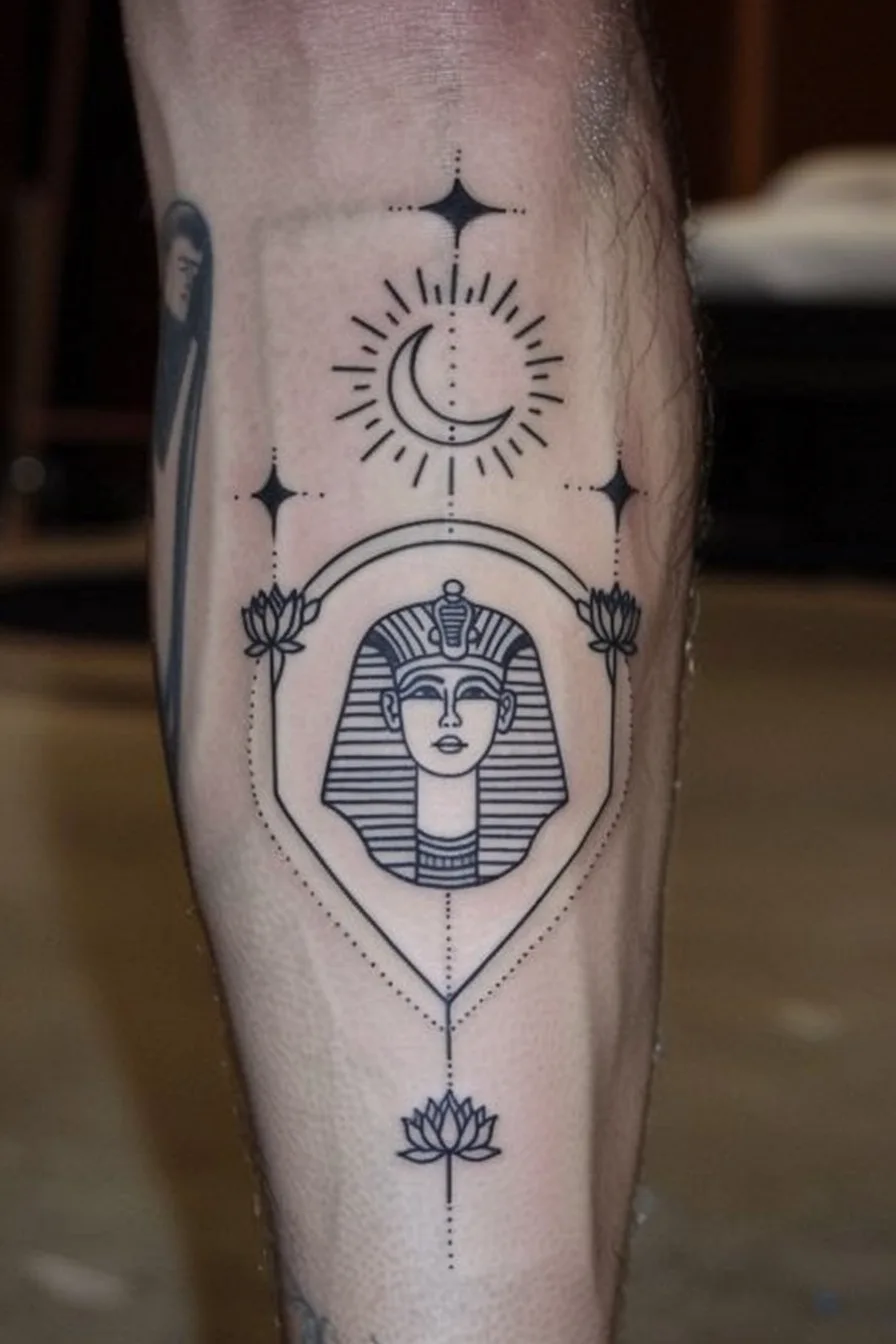
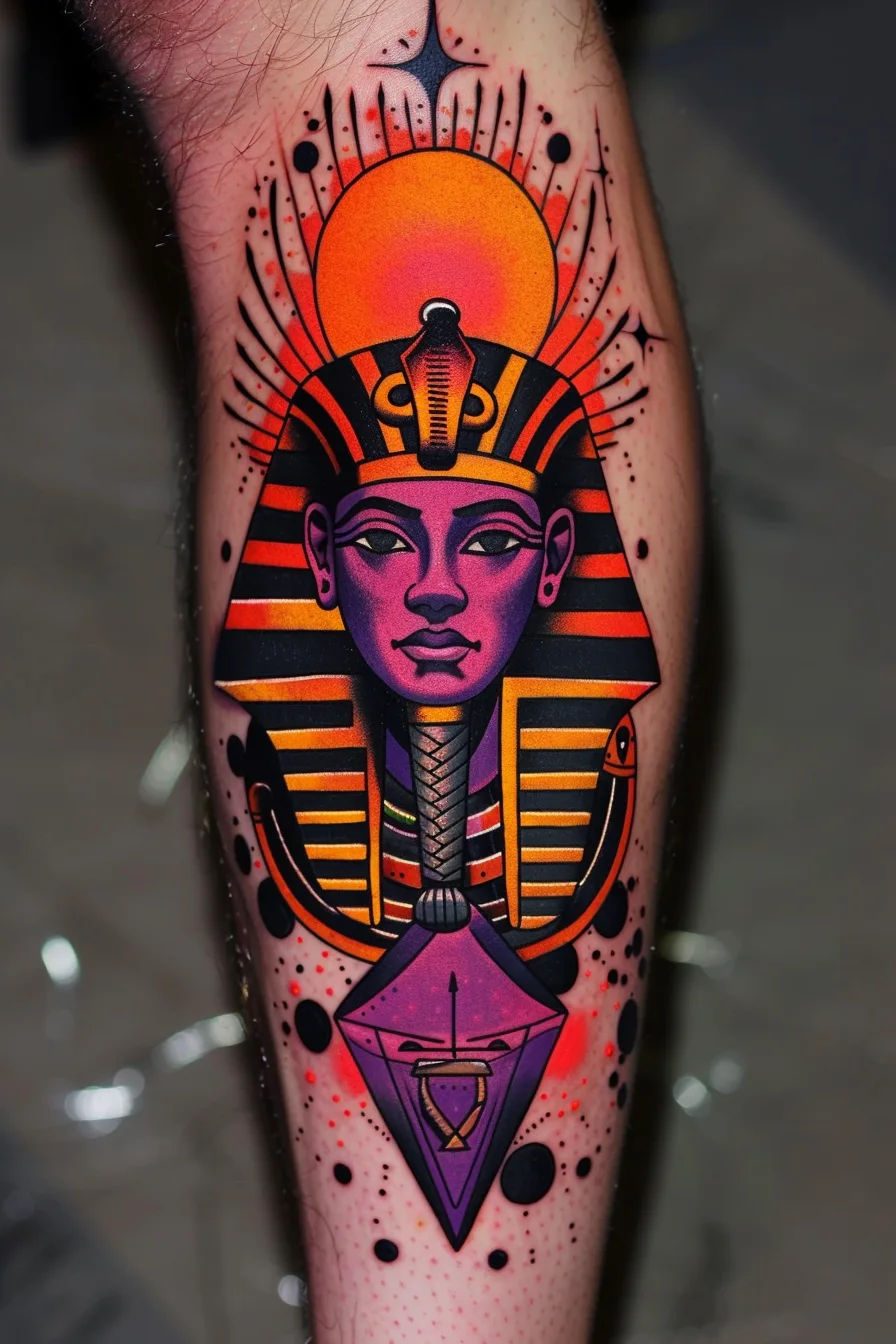
Green
Green is a versatile color that encompasses a wide range of hues, each with its own distinct variations and symbolic meanings.
In the context of King Tut's tattoos, the color green holds rich symbolism, deeply rooted in ancient Egyptian hieroglyphics and mythology.
The ancient Egyptians revered green as a representation of rebirth, fertility, and the lush vegetation along the Nile River. This vibrant hue was often associated with the god Osiris, the ruler of the underworld, and was used to adorn the pharaoh's tomb and artifacts.
Incorporating green into a King Tut-inspired tattoo can symbolize themes of regeneration, growth, and the enduring legacy of this iconic figure from Egypt's storied past.
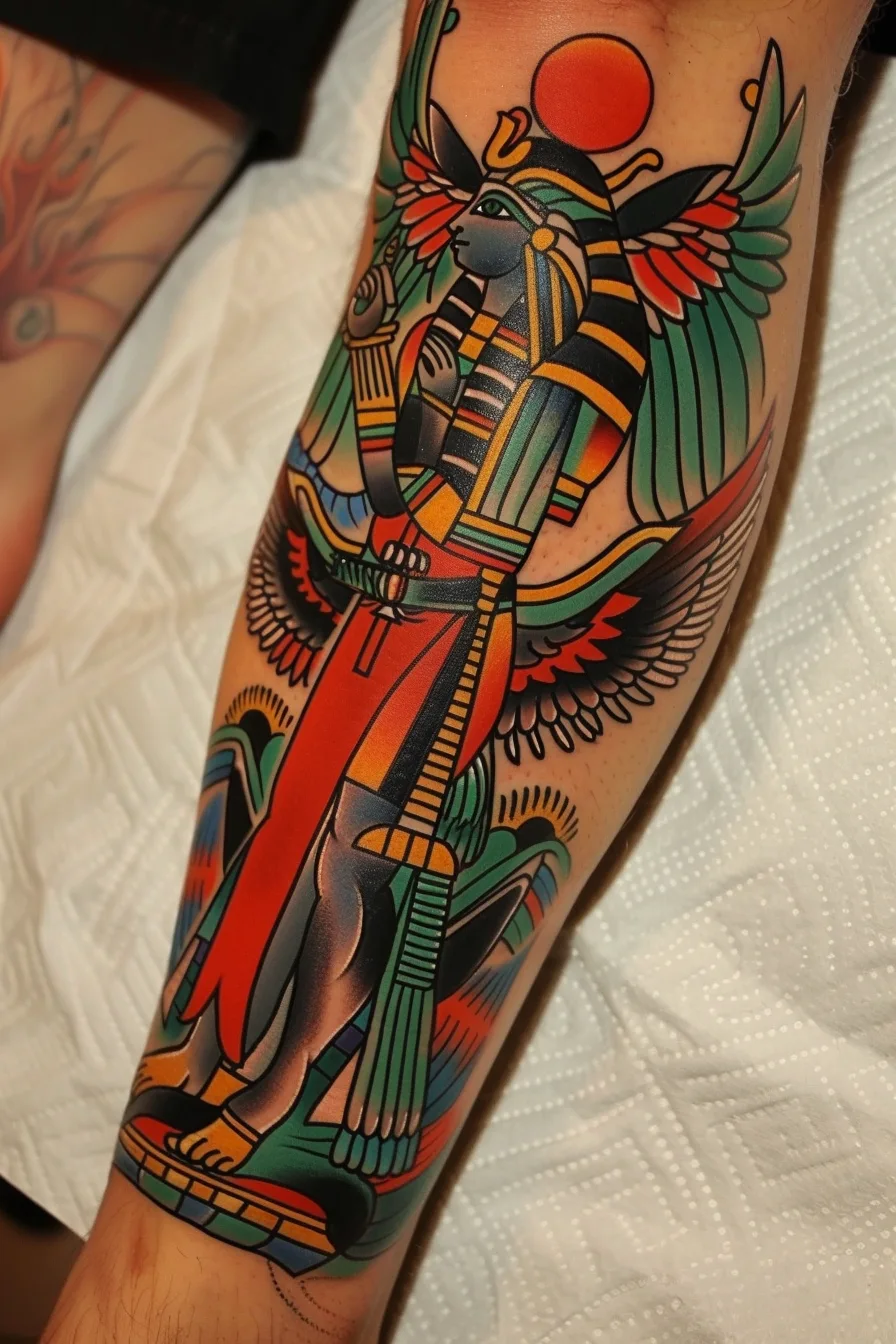
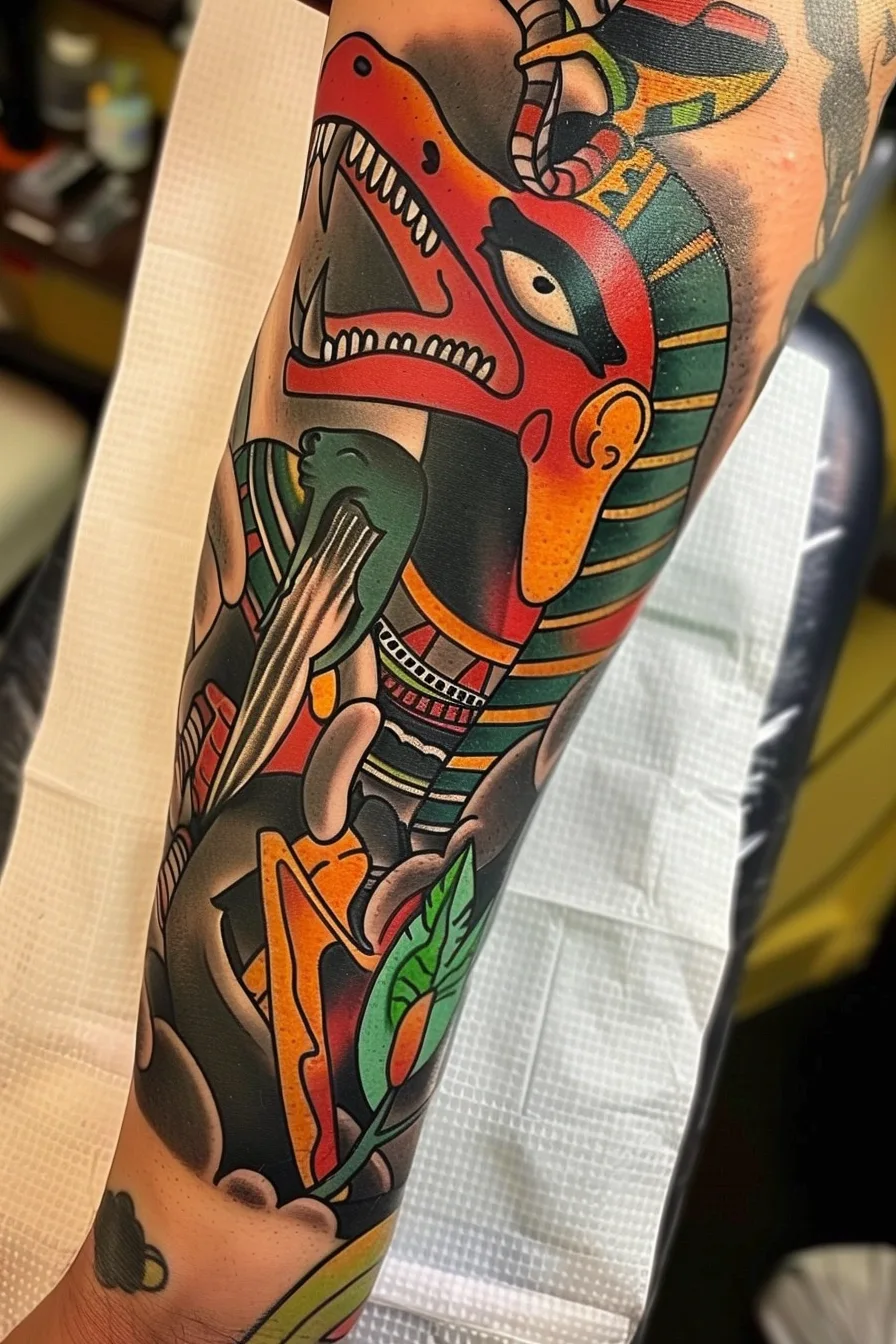
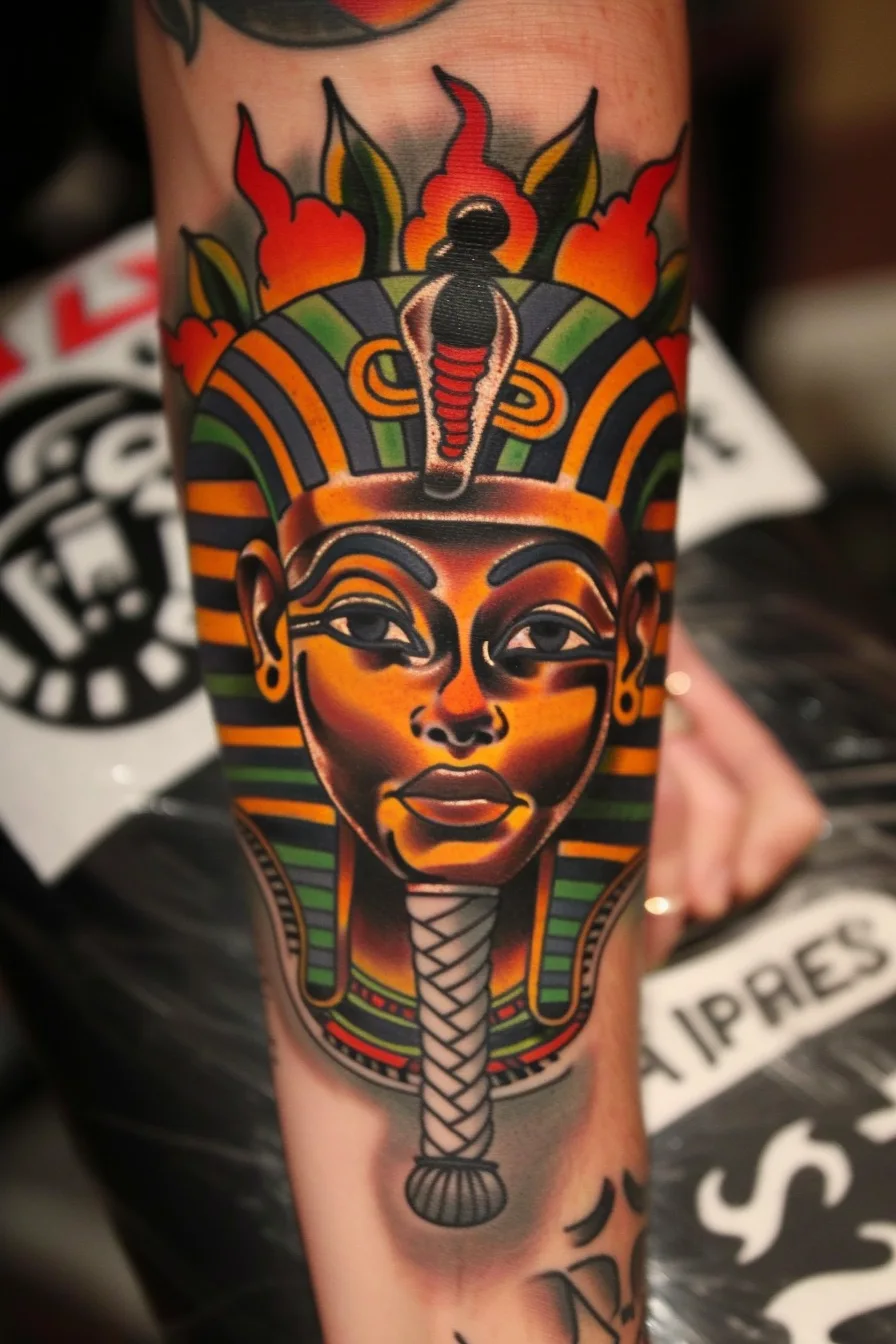

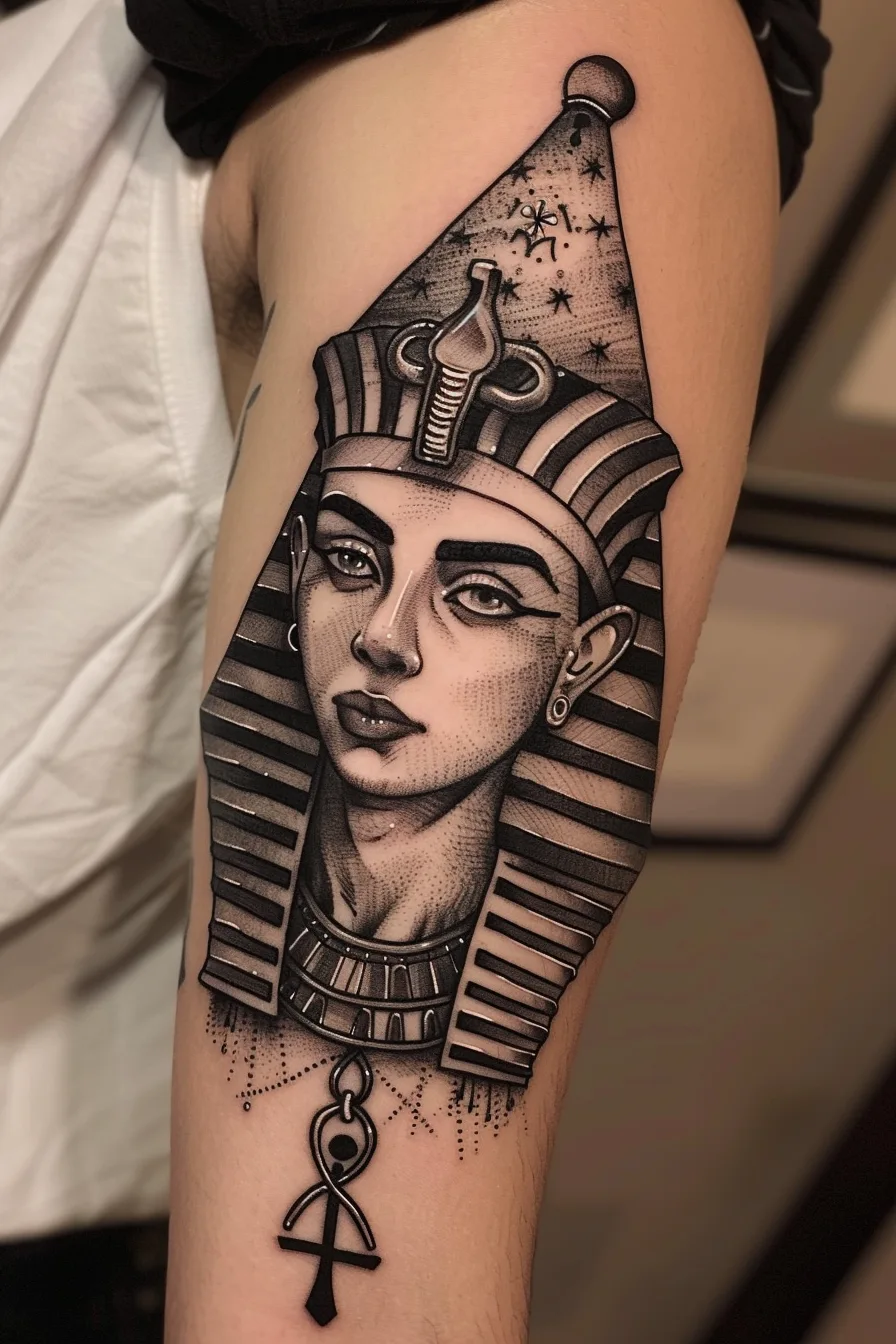
Black
Black, a color that evokes a range of symbolic meanings, holds a prominent place in the iconography surrounding King Tut and ancient Egyptian art. This powerful hue was often used to represent the fertile soil of the Nile River, a source of life and prosperity in the region.
Additionally, black was associated with the underworld and the transition from life to the afterlife, a critical aspect of the Egyptian belief system. The cultural significance of this color is reflected in the intricate black details found in many of King Tut's artifacts, serving as a visual representation of the deep symbolic imagery woven throughout ancient Egyptian society.
Embracing the depth and richness of black can help us better understand the profound meaning behind King Tut's iconic tattoo designs.
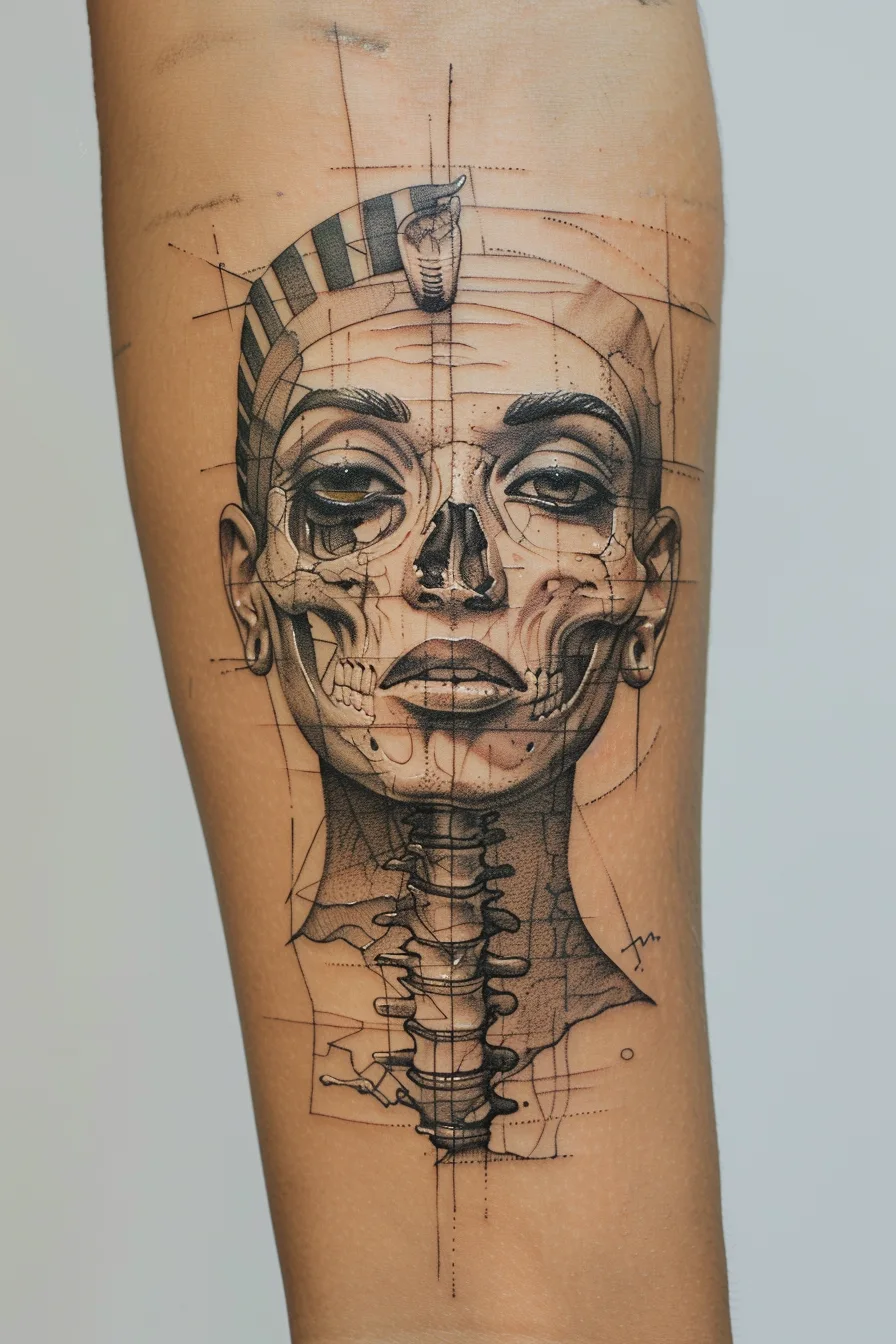
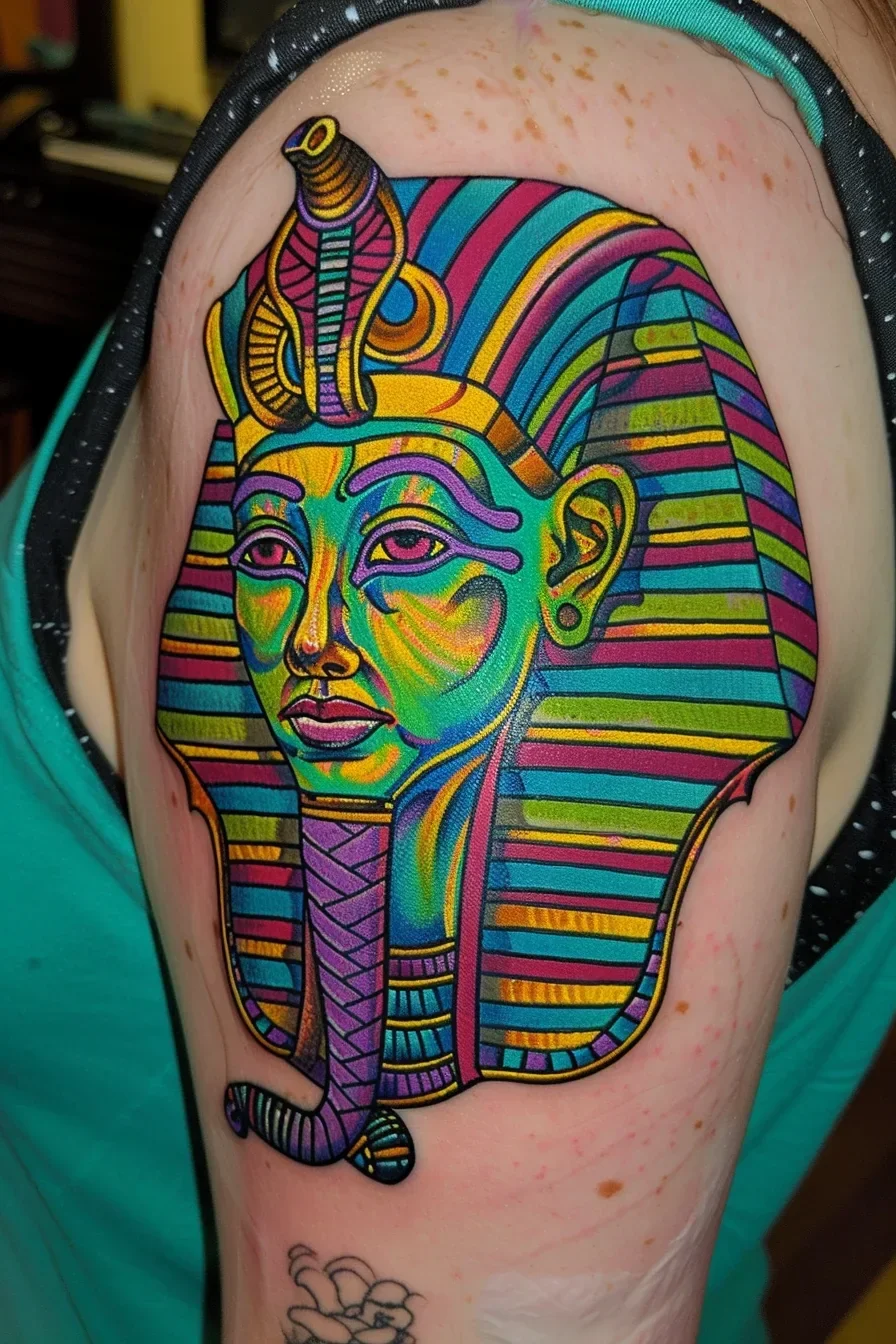
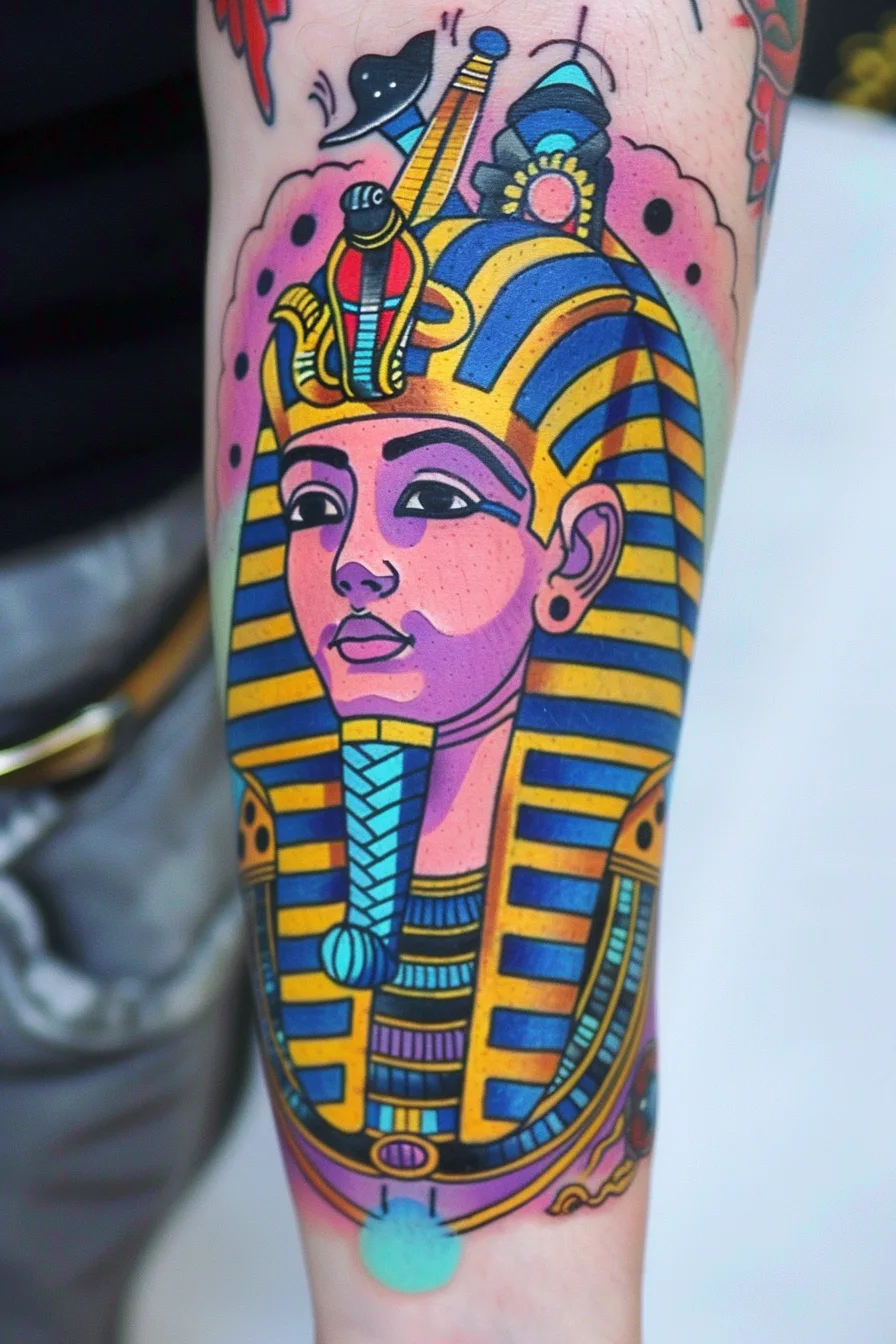
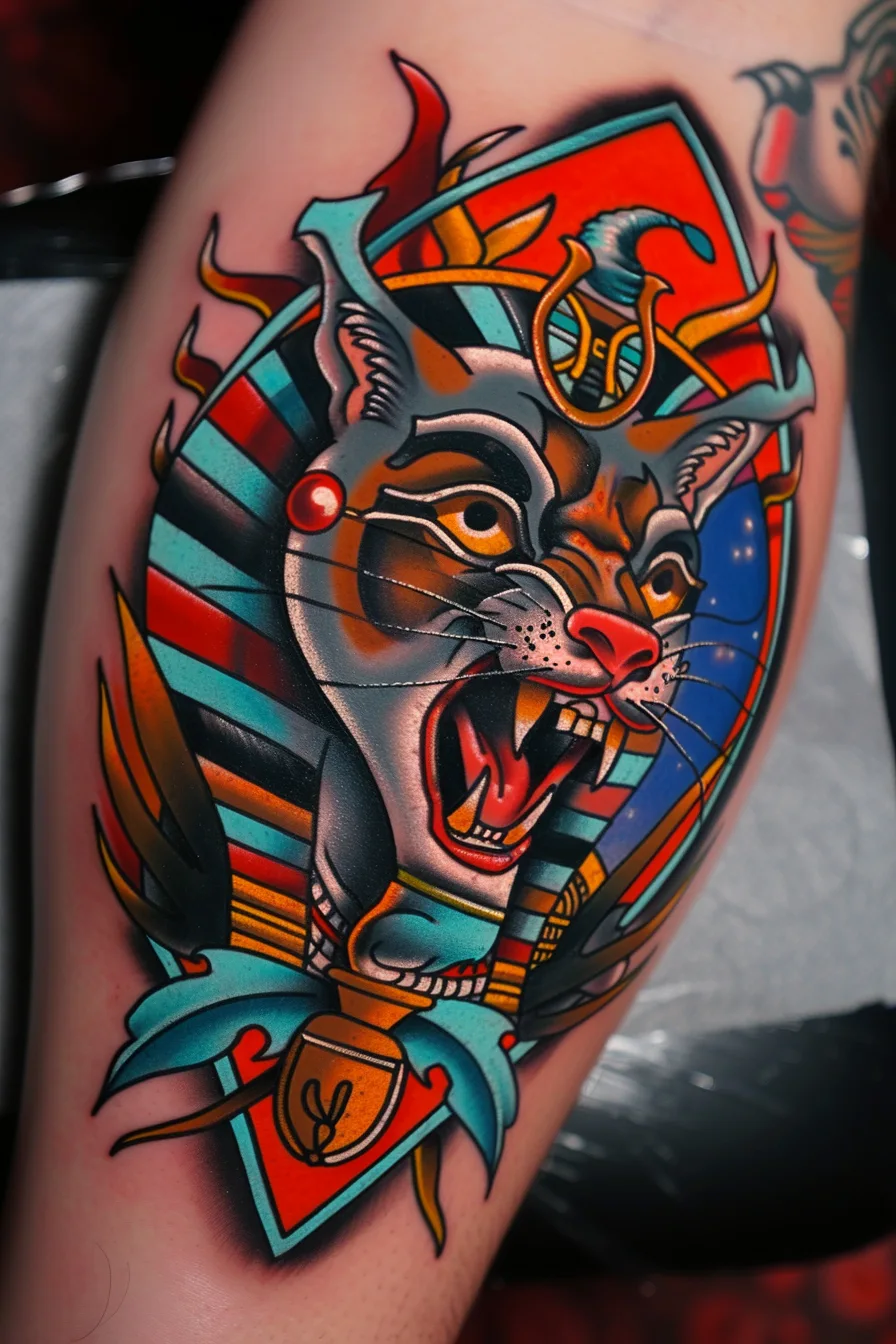
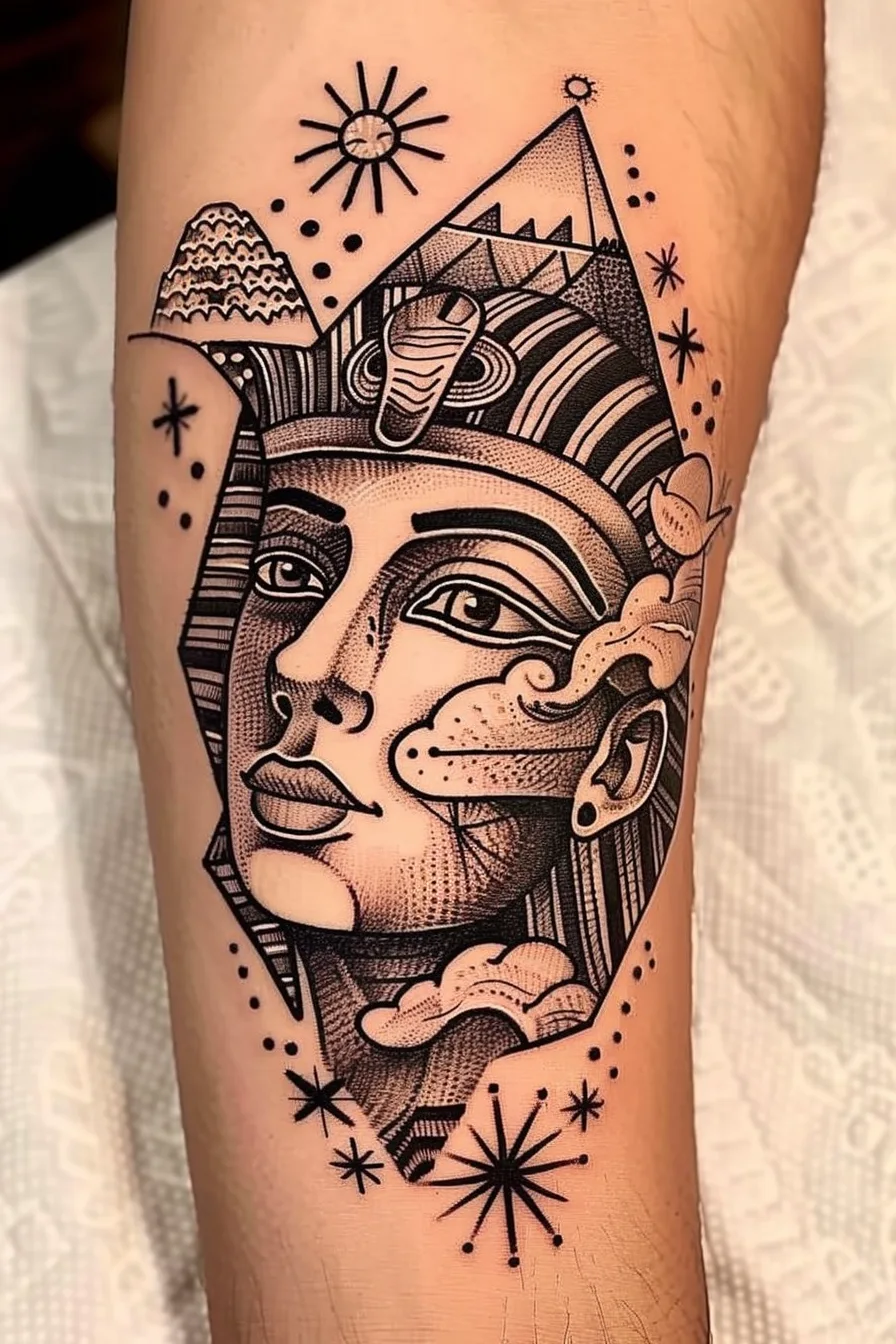
Yellow
Vibrant hues of yellow, ranging from soft buttery tones to bold, brilliant shades, held substantial symbolic significance in the context of ancient Egyptian art and culture. Golden hues were closely associated with the sun, a powerful deity, as well as with the divine pharaohs who were believed to be descendants of the sun god.
These vibrant tones were extensively used in the decoration of royal tombs, temples, and various religious artifacts, imbuing them with a sense of radiance, warmth, and divine authority. The versatility of yellow allowed it to symbolize a wide range of concepts, from fertility and new beginnings to intellectual enlightenment and spiritual illumination.
Embracing the rich cultural legacy of this captivating color can add depth and meaning to a King Tut-inspired tattoo design.
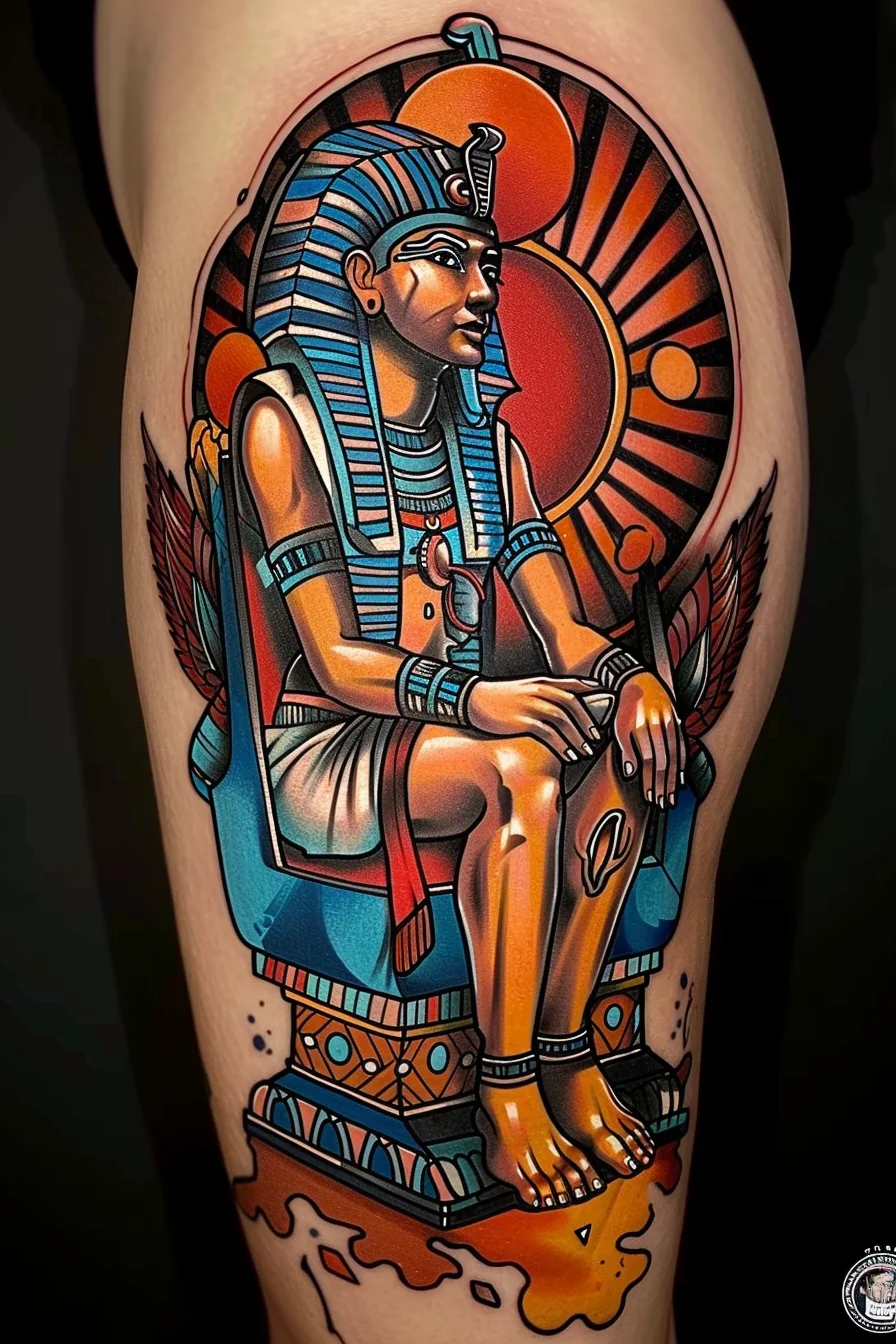
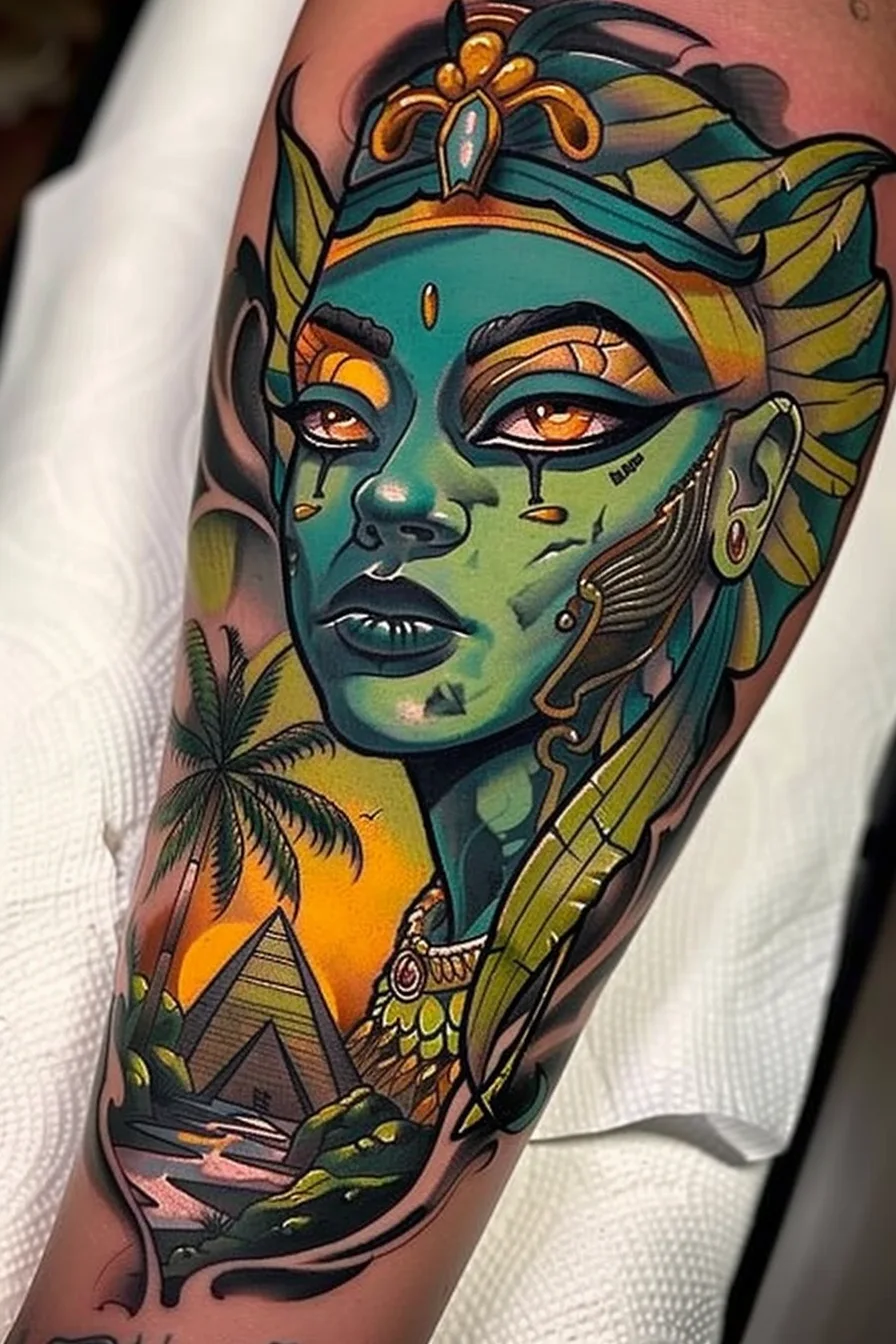
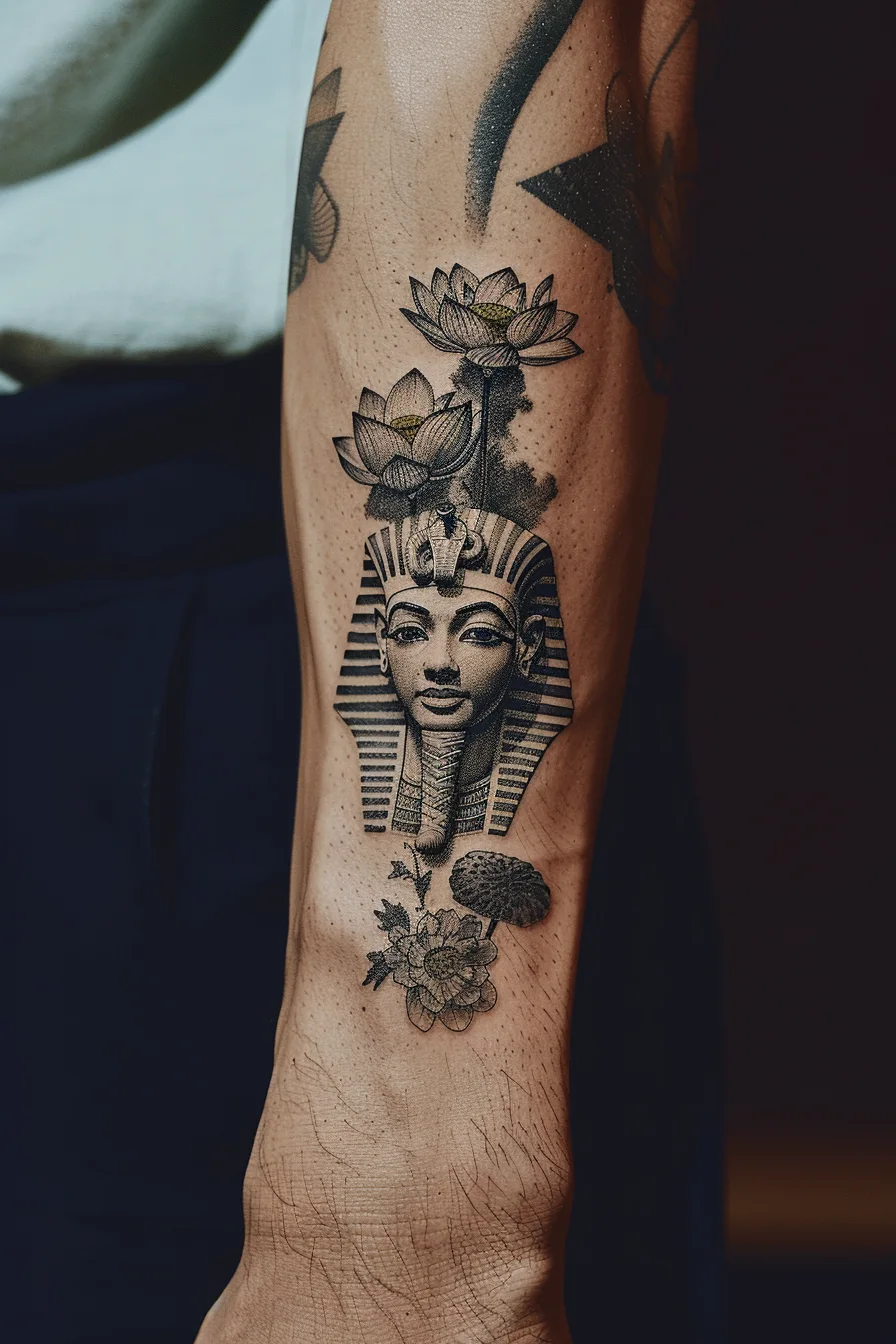
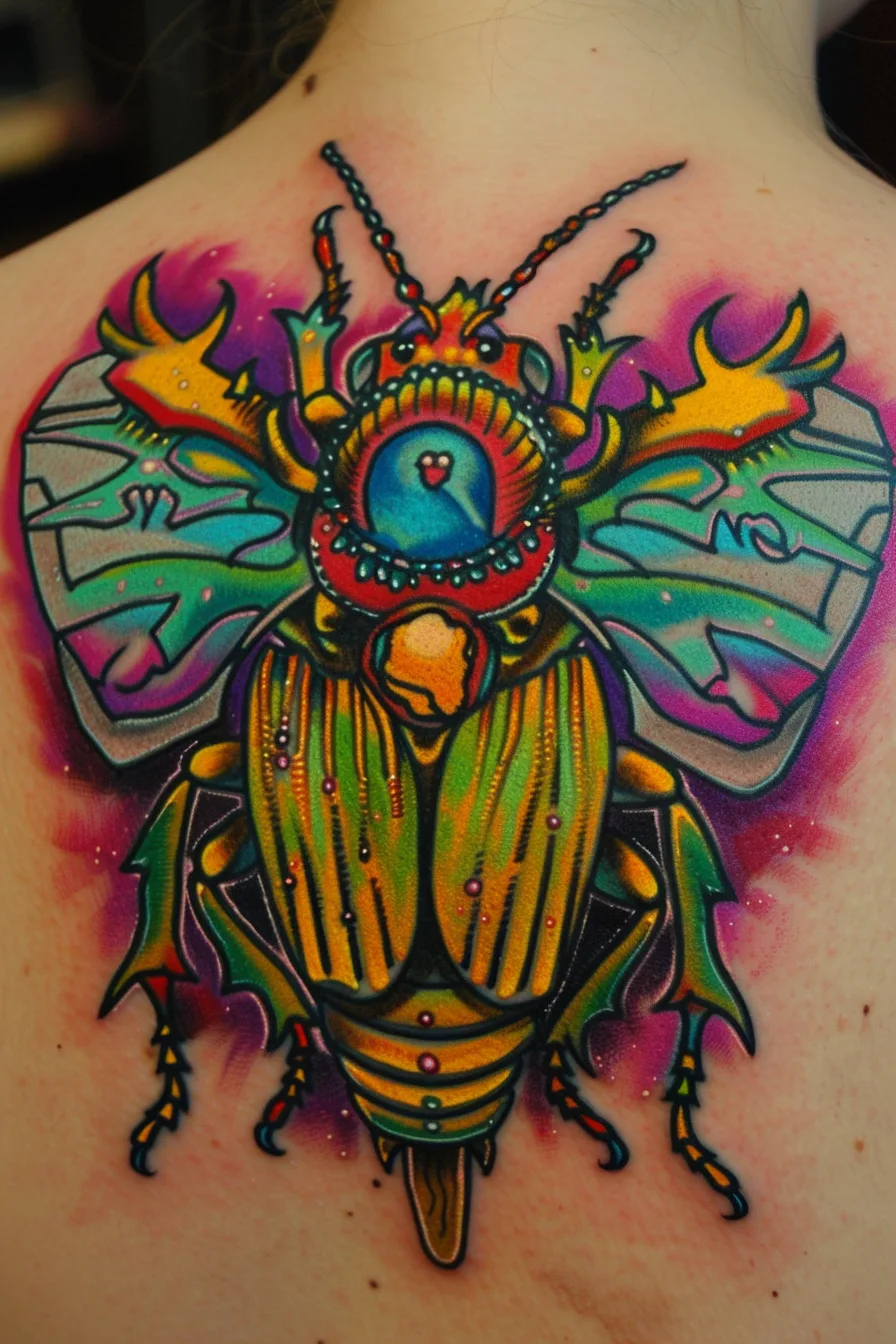

Red
Across the vibrant tapestry of ancient Egyptian art and culture, the color red held a multifaceted symbolic significance, encompassing a diverse range of associations and interpretations.
From the bold, burgundy shades adorning the ceremonial garments of the pharaohs to the deep, crimson hues adorning the walls of sacred temples, red was a color imbued with power, vitality, and even divine reverence.
This captivating hue was believed to represent the life-giving essence of the sun, the blood of the gods, and the eternal cycle of birth, death, and rebirth that permeated the Egyptian worldview.
Artfully woven into the fabric of this ancient civilization, the meaning of red continues to captivate and inspire those who seek to unravel the mysteries of the past.
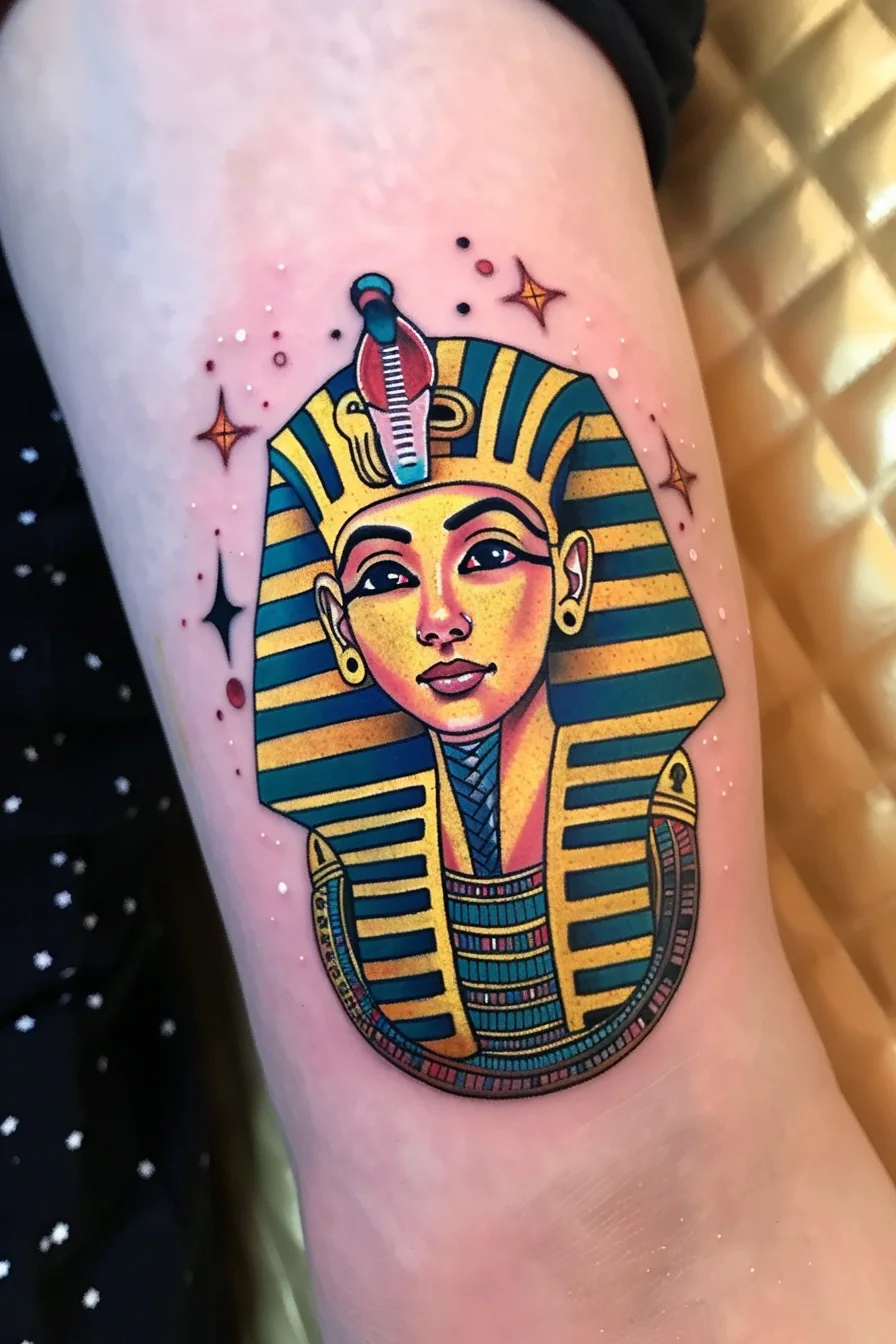
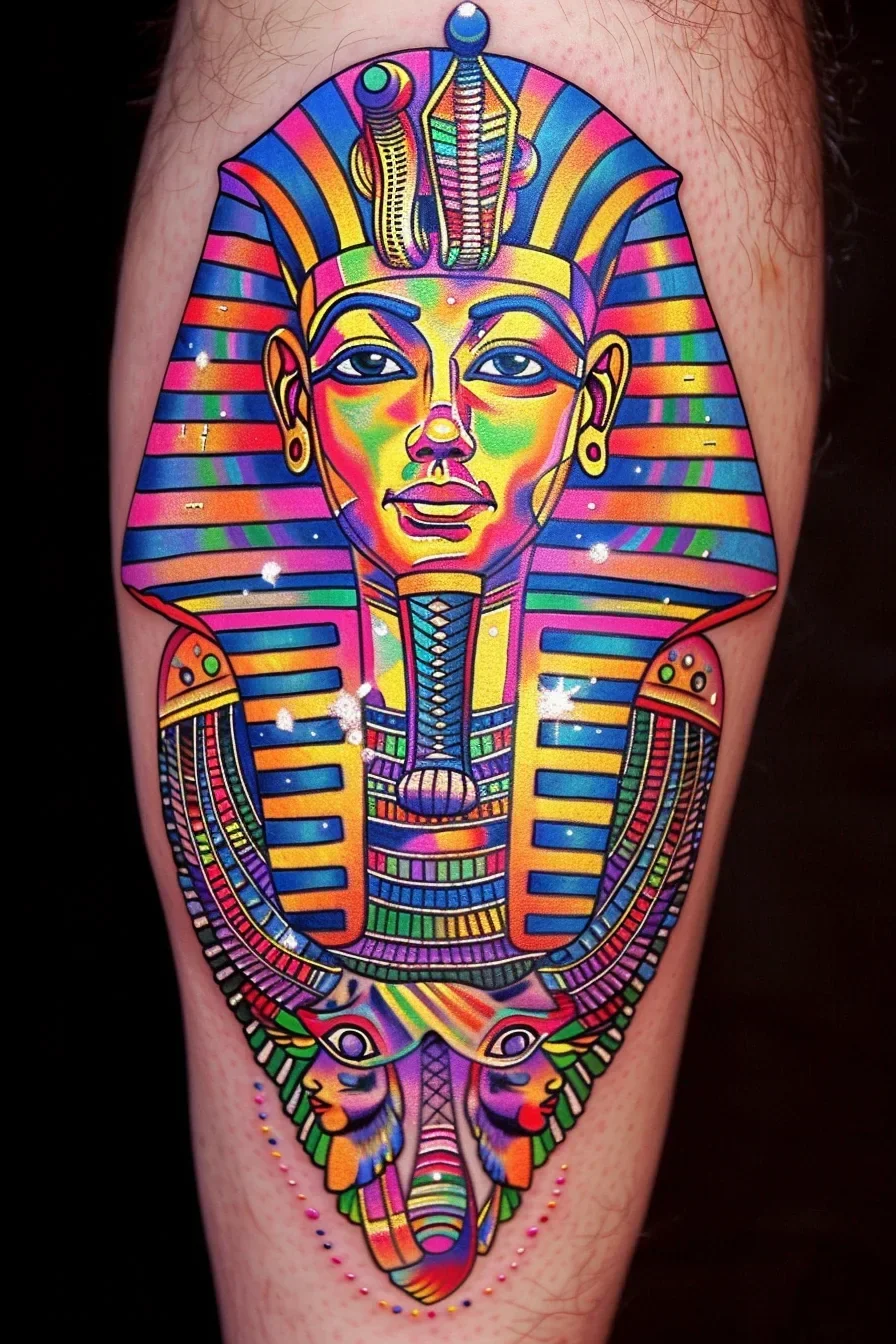
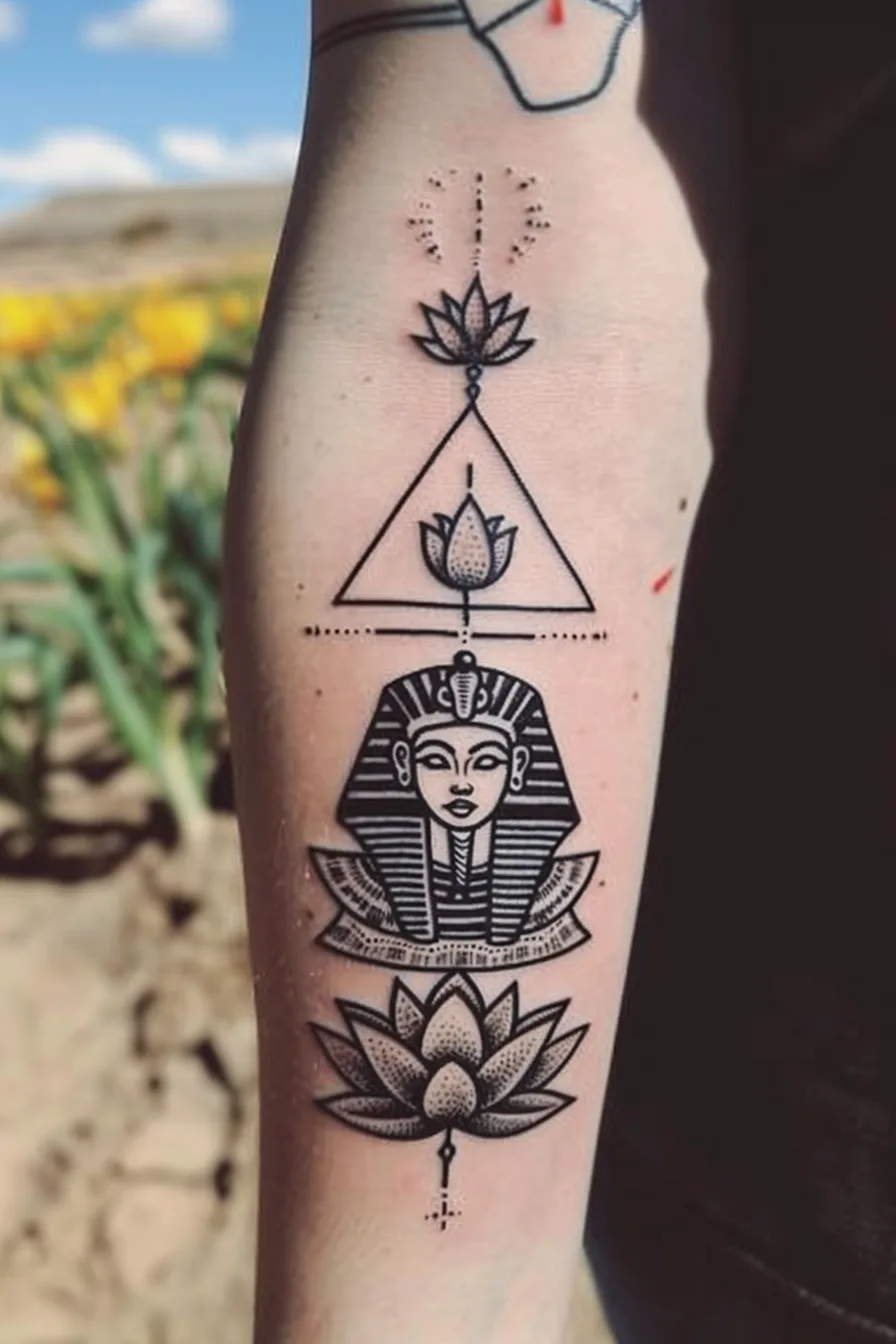

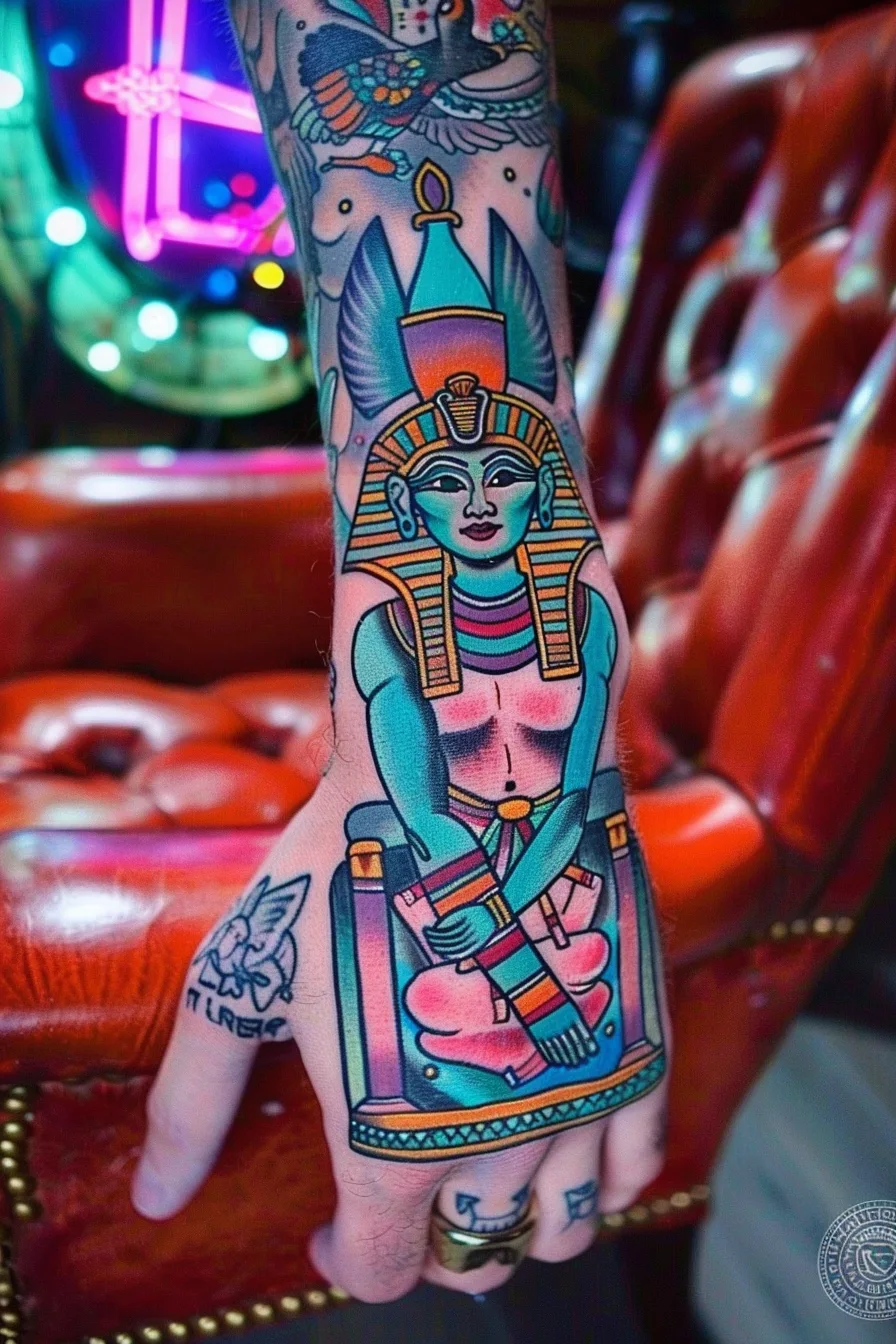
Blue
Hues of blue, ranging from the deep, sapphire shades to the delicate, azure tones, held a profound symbolic significance within the rich tapestry of ancient Egyptian culture.
The vibrant hues were often incorporated into striking designs, adorning the walls of temples, the adornments of the elite, and the sacred artwork that celebrated the divine.
Blue was closely associated with the Nile River, the bountiful source of life, as well as the vast, celestial expanse of the heavens.
This connection to the heavens and the divine imbued blue with a sense of reverence and spirituality, making it a cherished color in the artistic and cultural expressions of ancient Egypt.
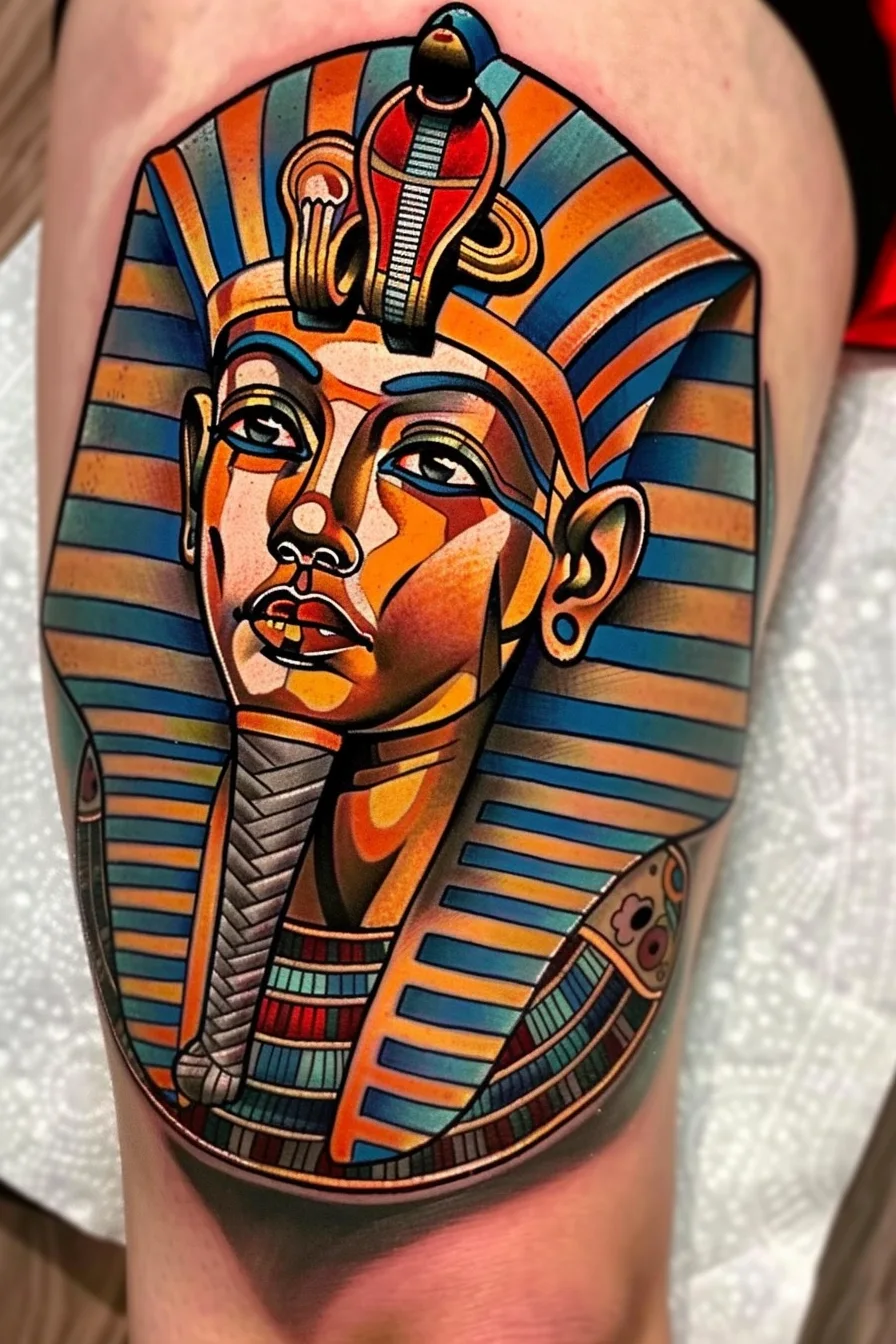

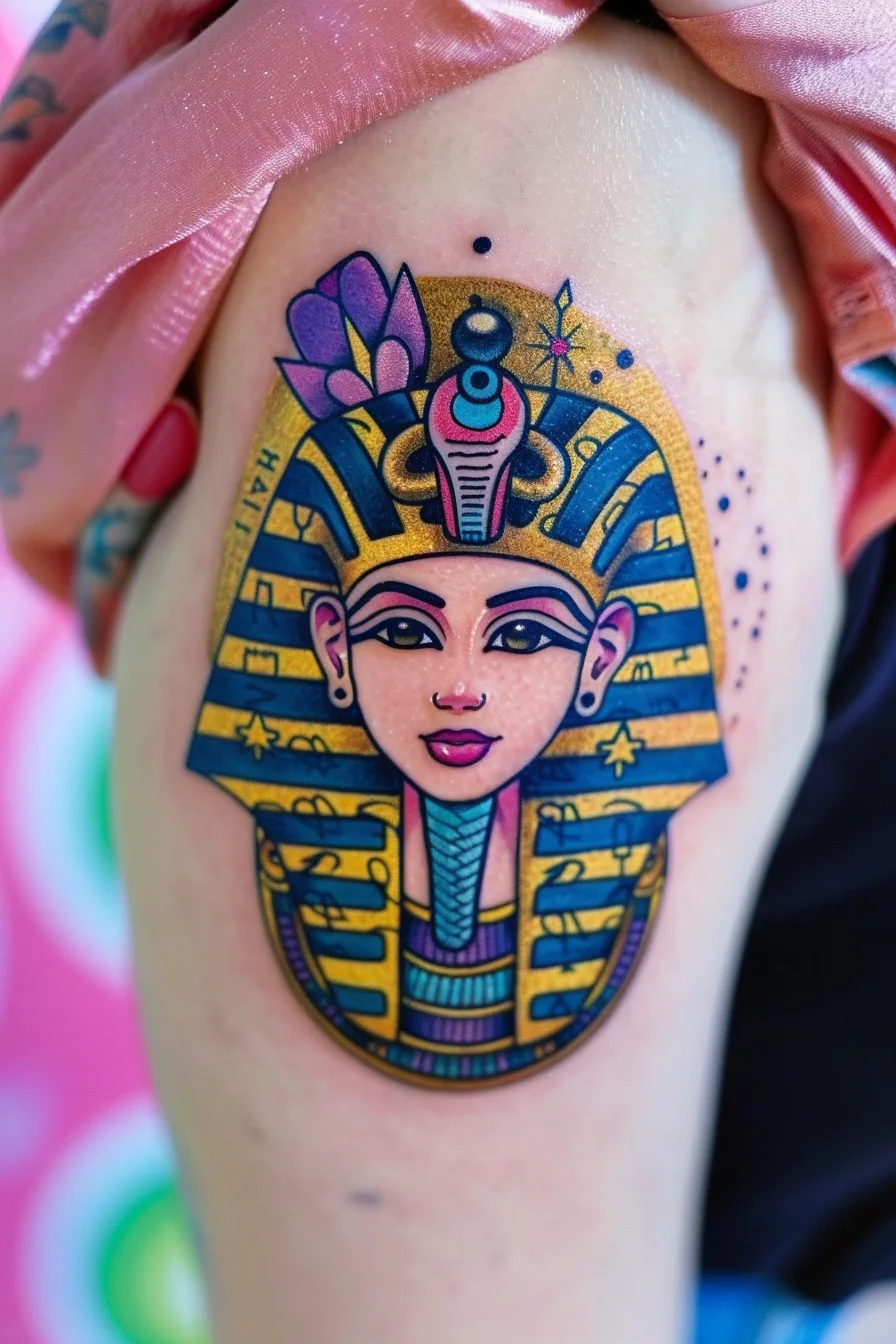
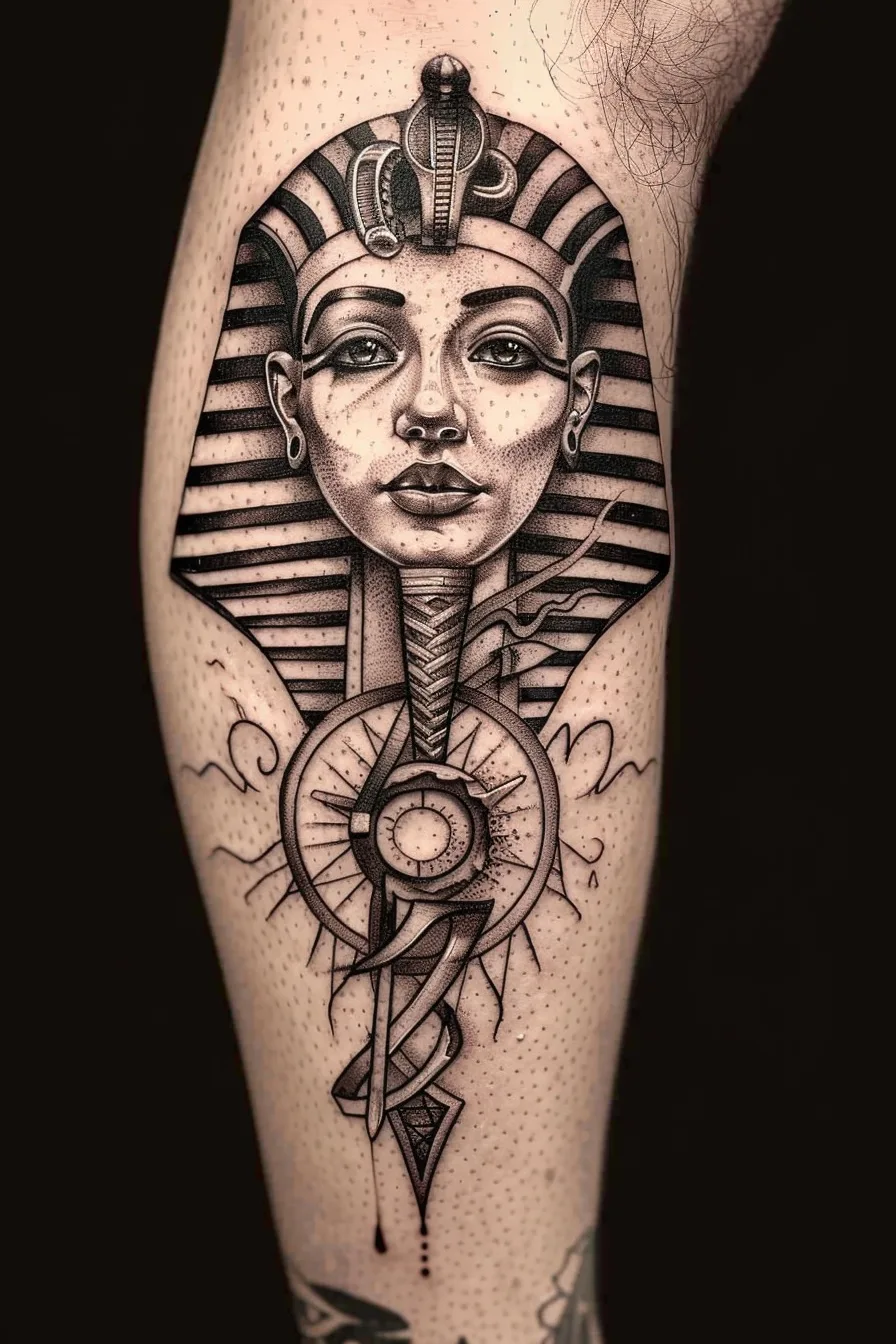
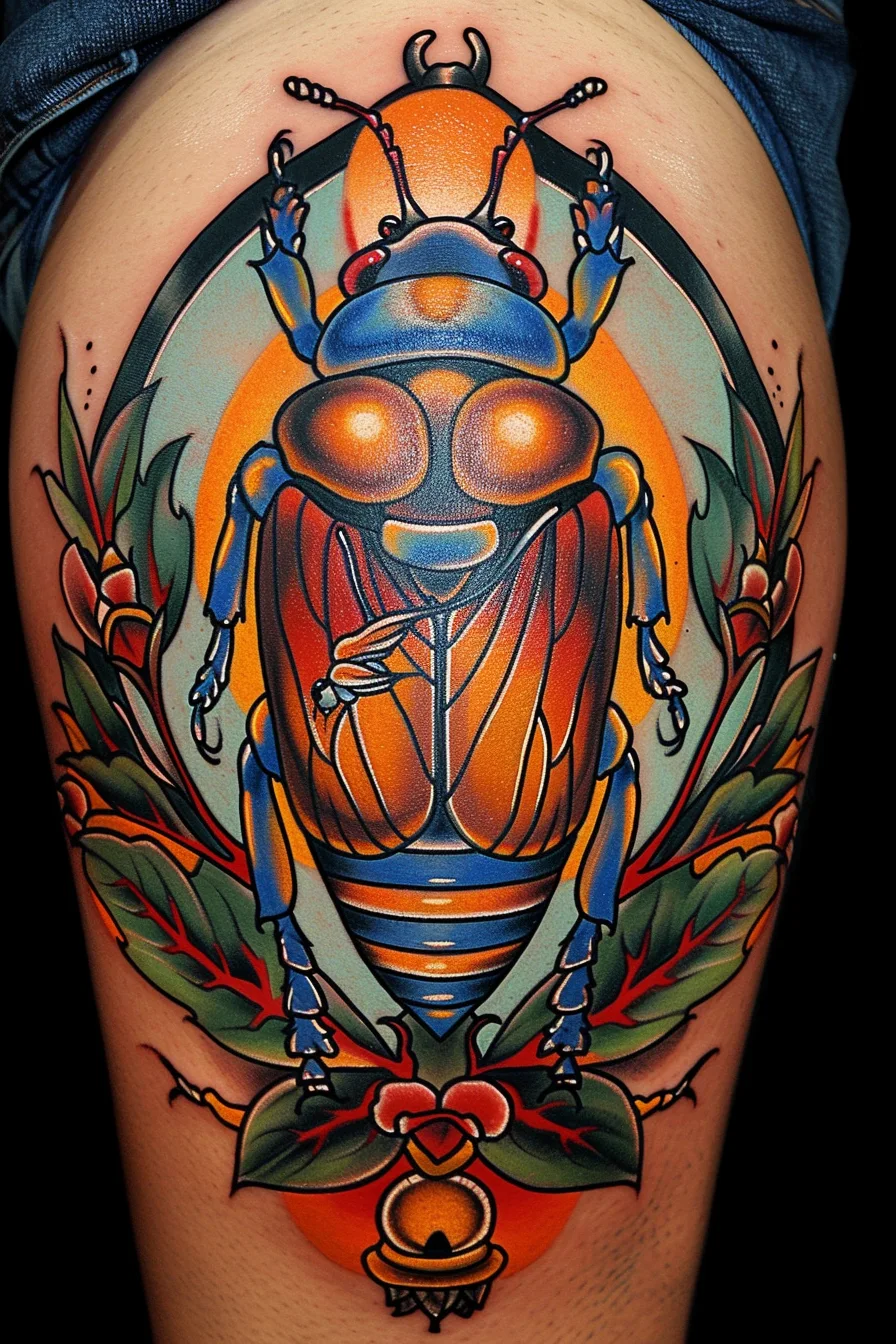
Purple
While the deep, celestial hues of blue held reverence in ancient Egyptian culture, the regal and mystical tones of purple also carried profound symbolism and significance within their artistic traditions.
Vibrant violet hues were often associated with royalty, spirituality, and the divine, while delicate lavender shades represented purity, tranquility, and a connection to the divine realm.
The versatility of purple allowed it to be used in a wide range of artistic expressions, from the ornate adornments of the pharaohs to the intricate patterns woven into sacred textiles.
This captivating color palette served as a visual manifestation of the Egyptians' reverence for the mysteries of the universe and their deep spiritual beliefs.


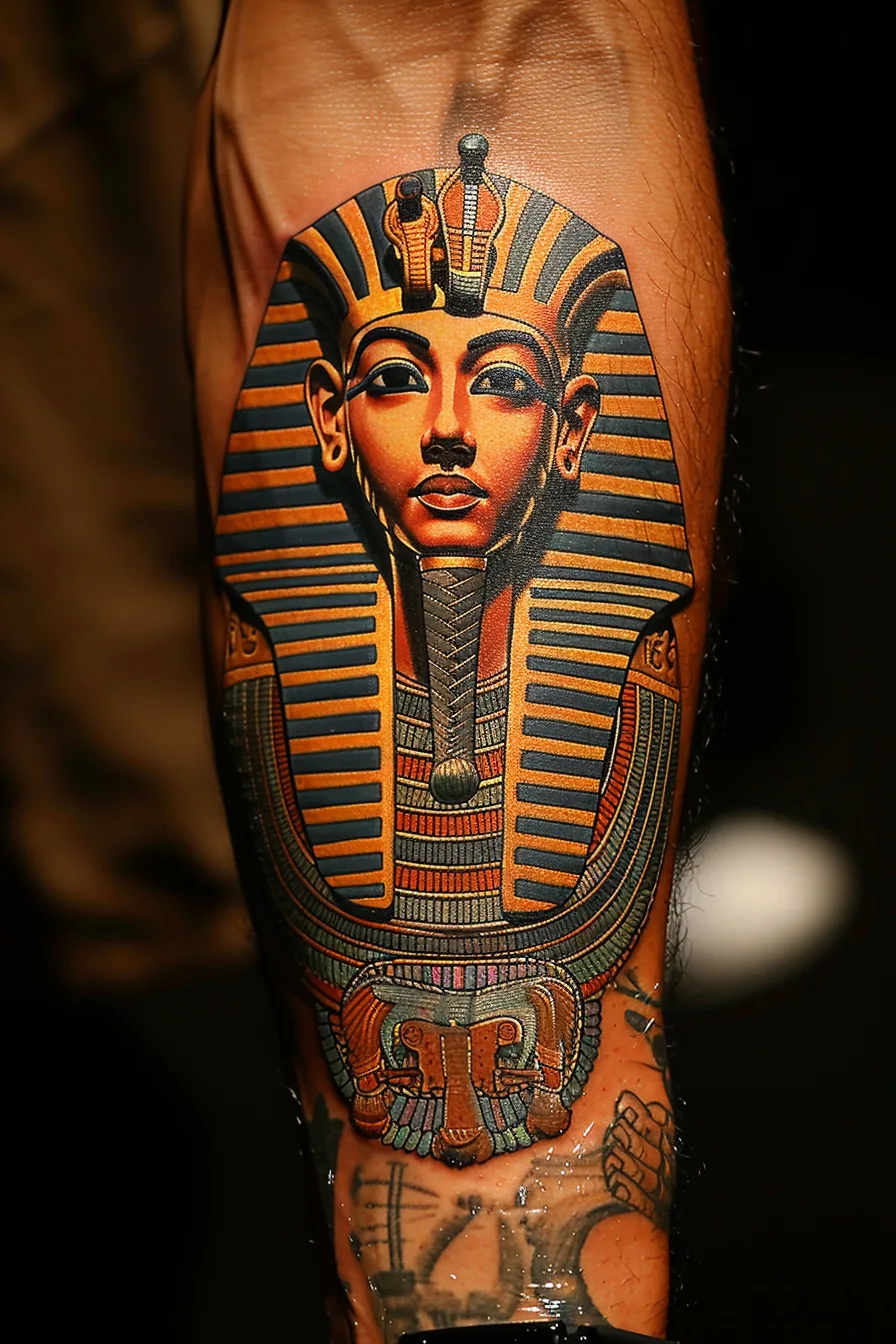
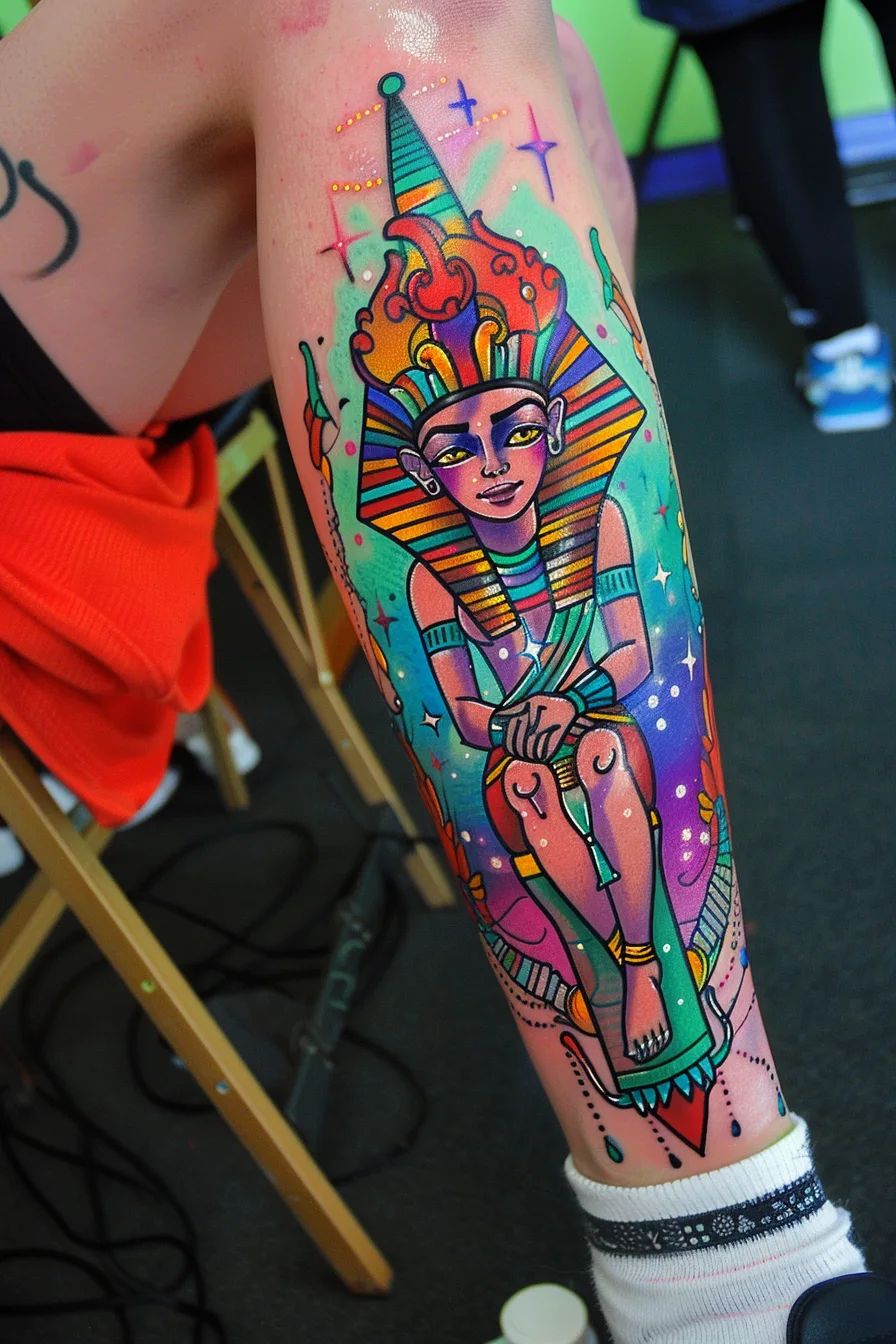
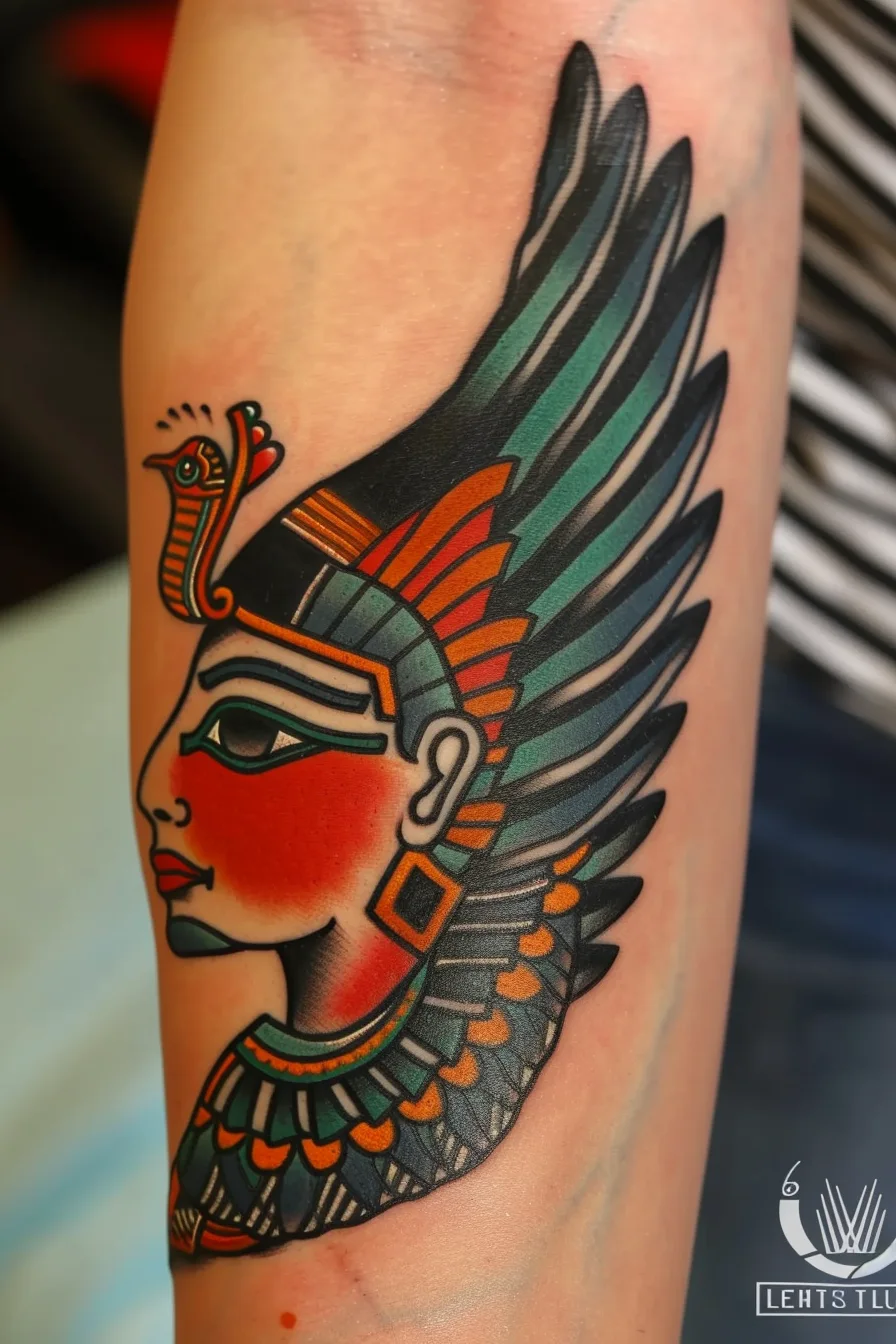
Pink
The shades of pink in ancient Egyptian art and culture ranged from delicate blush tones to vibrant fuchsia hues, each variation carrying distinct symbolic meaning and significance.
Soft pink hues were often associated with regal elegance and the divine feminine, while bolder pinks evoked a sense of timeless allure and passion.
In the context of King Tut's iconic tattoo designs, the use of pink could signify a connection to the divine, or perhaps a representation of the pharaoh's powerful yet graceful nature.
Regardless of the specific interpretation, the vibrant pinks found in Egyptian artistry continue to captivate and inspire modern audiences with their enduring beauty and cultural significance.
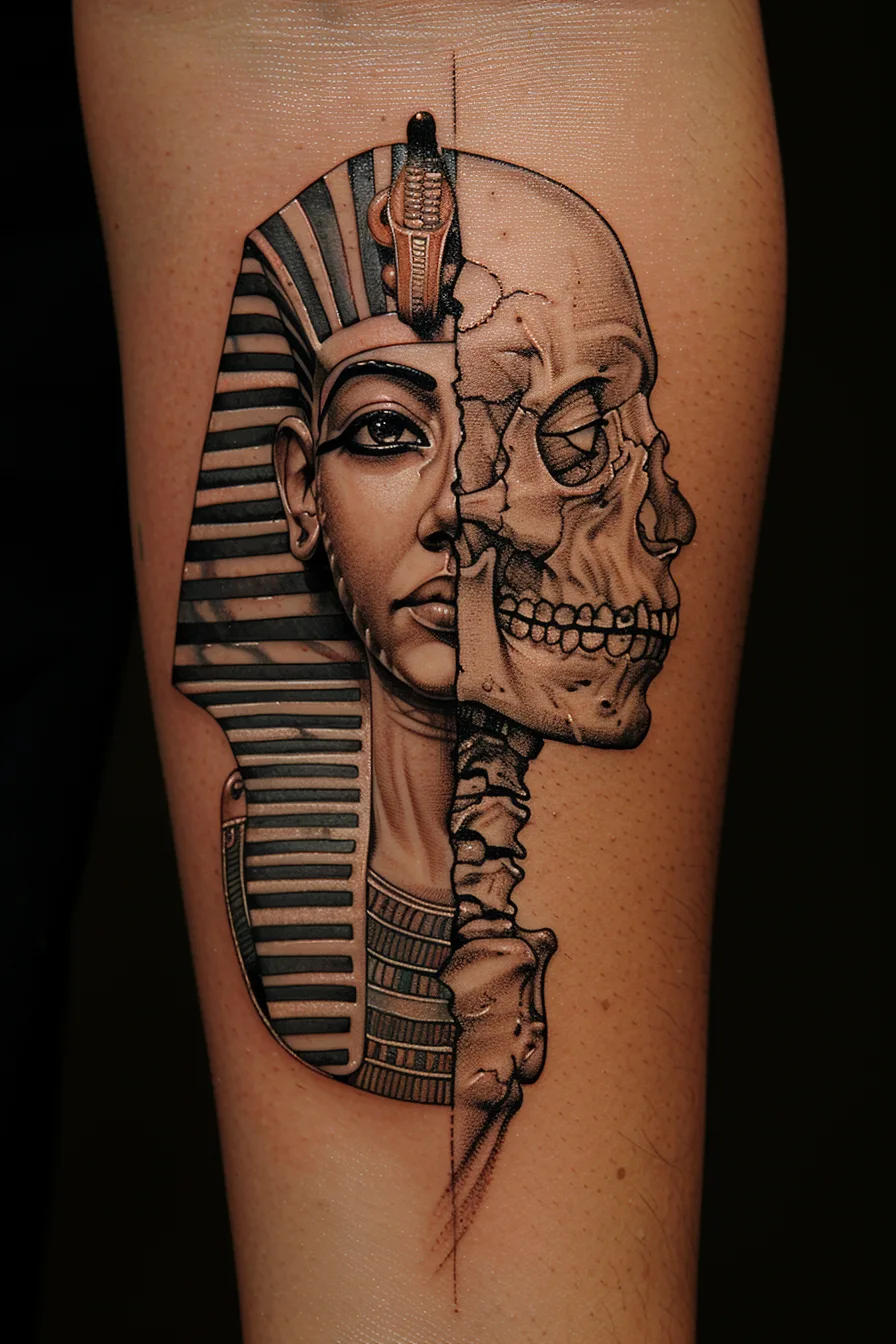
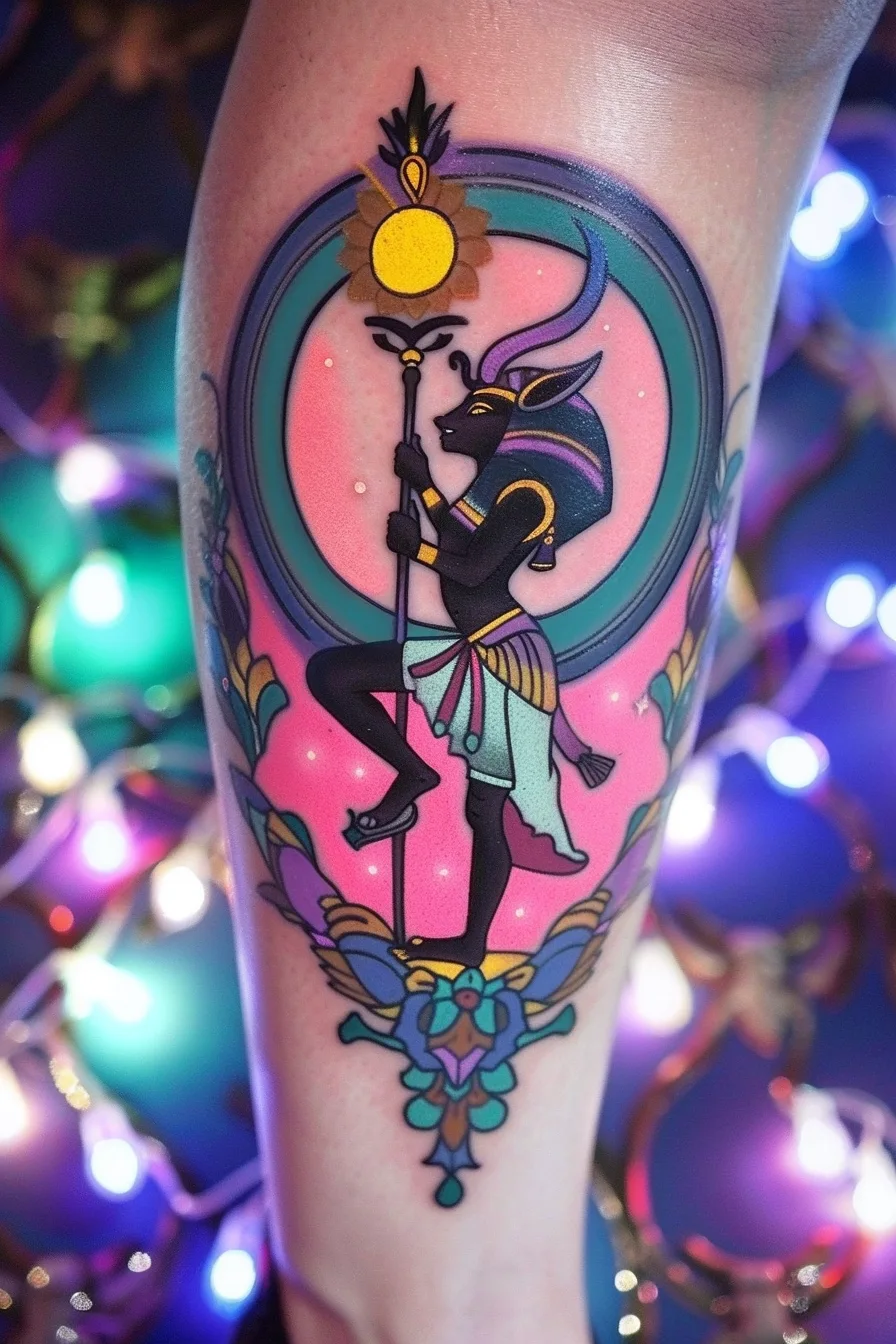
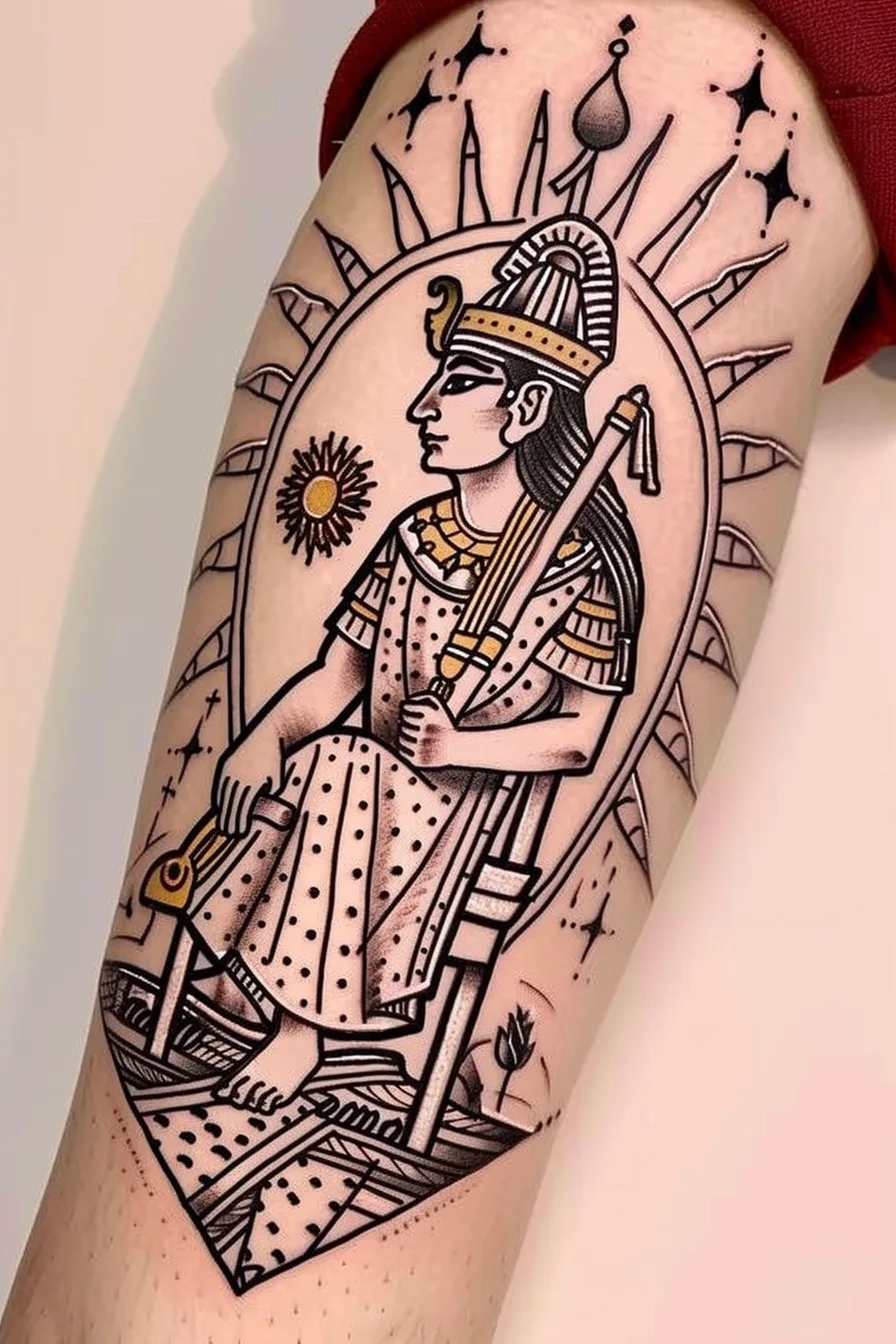
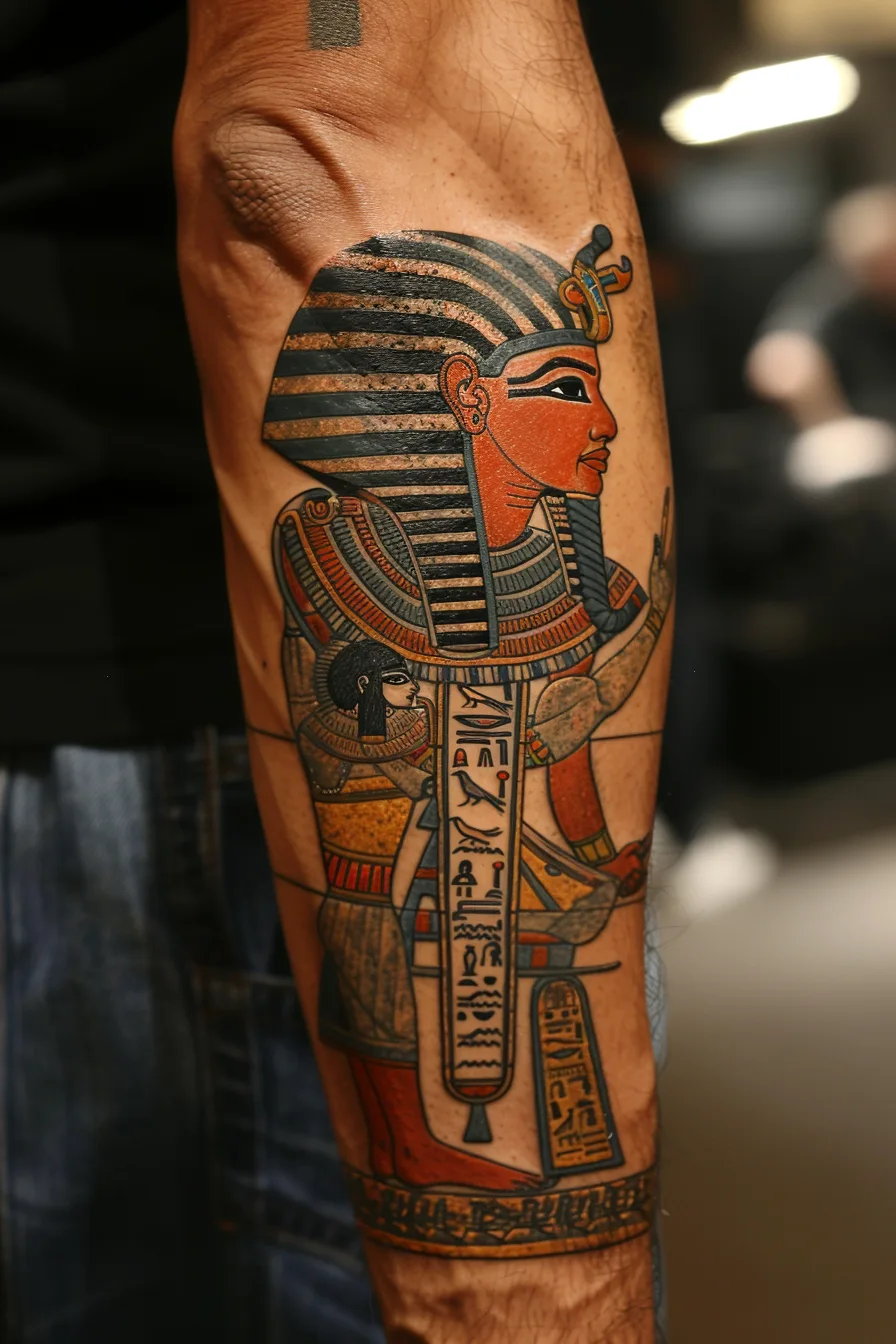
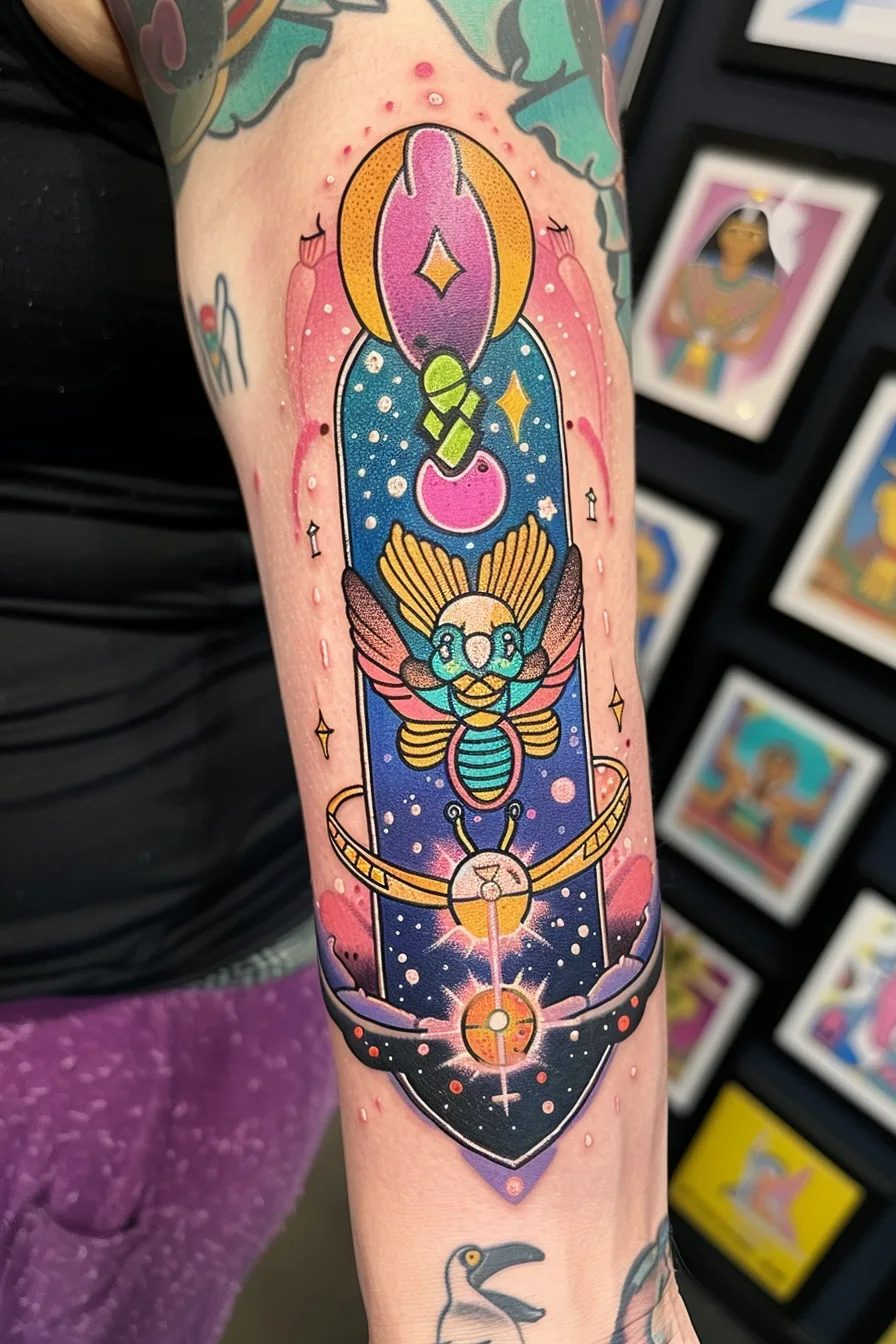
Orange
Alongside the vibrant pinks that captivated ancient Egyptian culture, the versatile and symbolically rich hues of orange also played a significant role in the artistic and spiritual expressions of the time. From the ornate symbolism of the sun god Ra to the vibrant hues adorning royal attire and ceremonial artifacts, orange was a color infused with profound meaning.
Representing warmth, energy, and vitality, orange tones were often associated with fertility, harvest, and the cycle of life. These vibrant pigments were meticulously incorporated into intricate wall paintings, hieroglyphic inscriptions, and decorative elements, imbuing spaces with a radiant and uplifting ambiance.
The multifaceted symbolism of orange continues to captivate and inspire modern interpretations of ancient Egyptian aesthetics and beliefs.
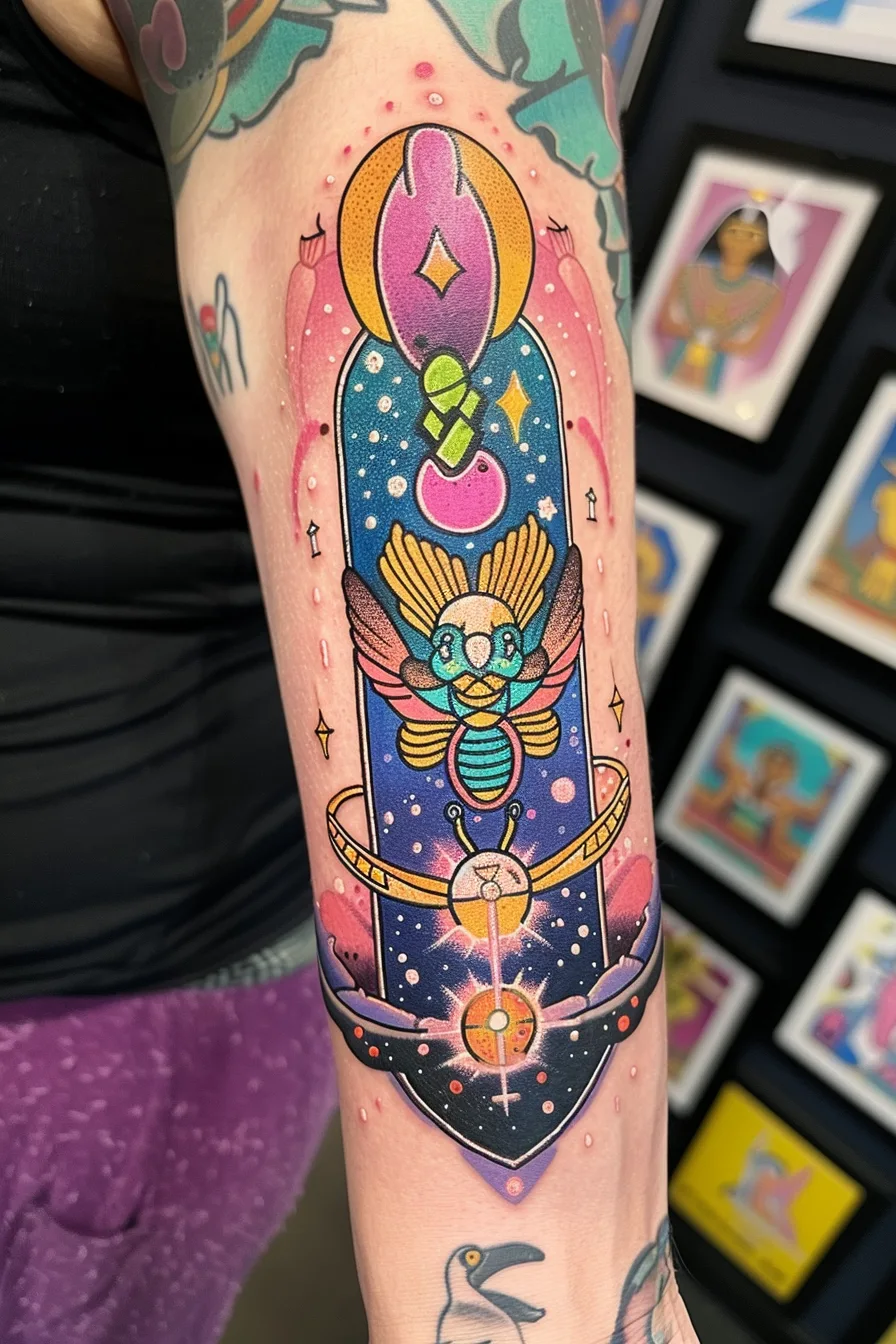
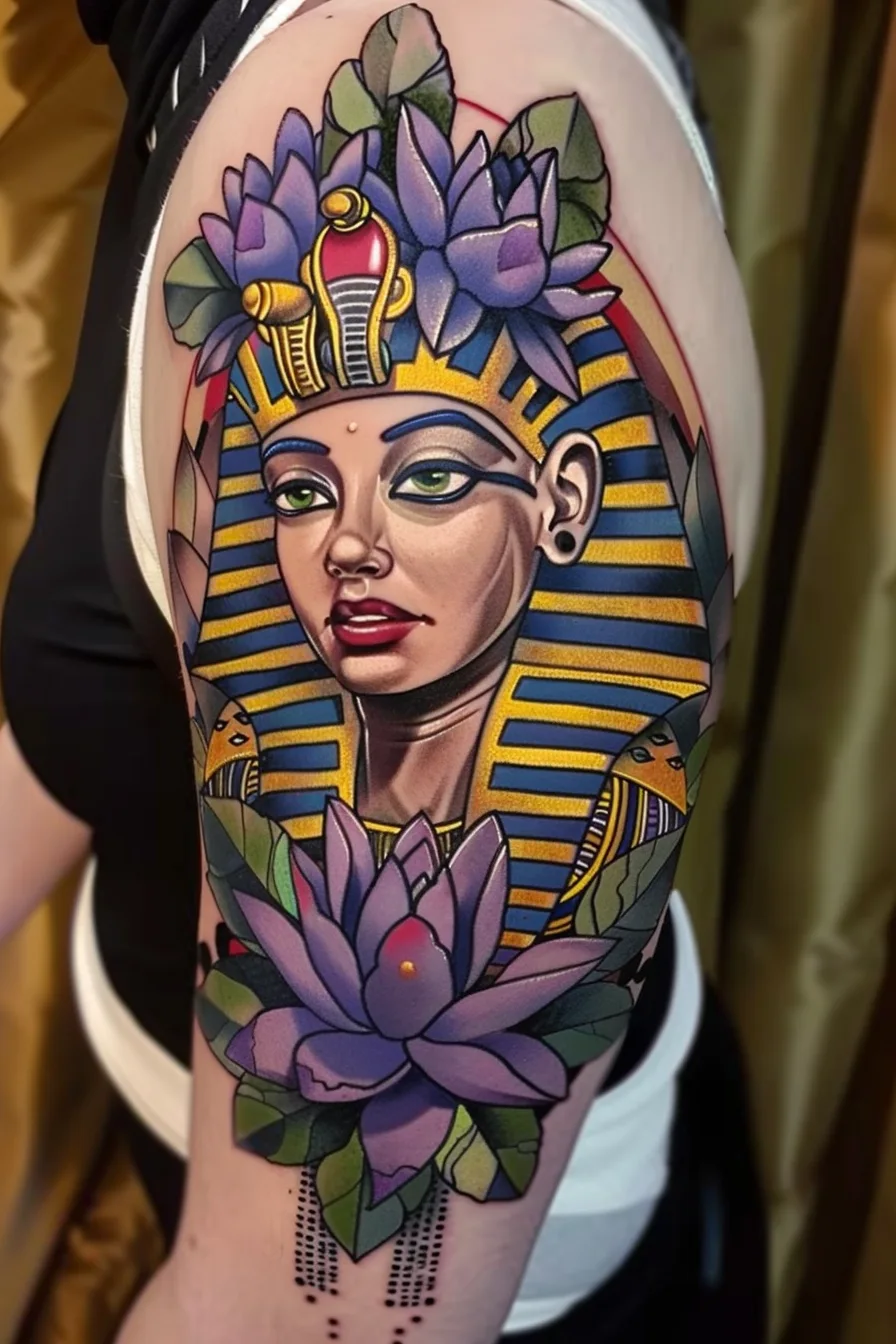
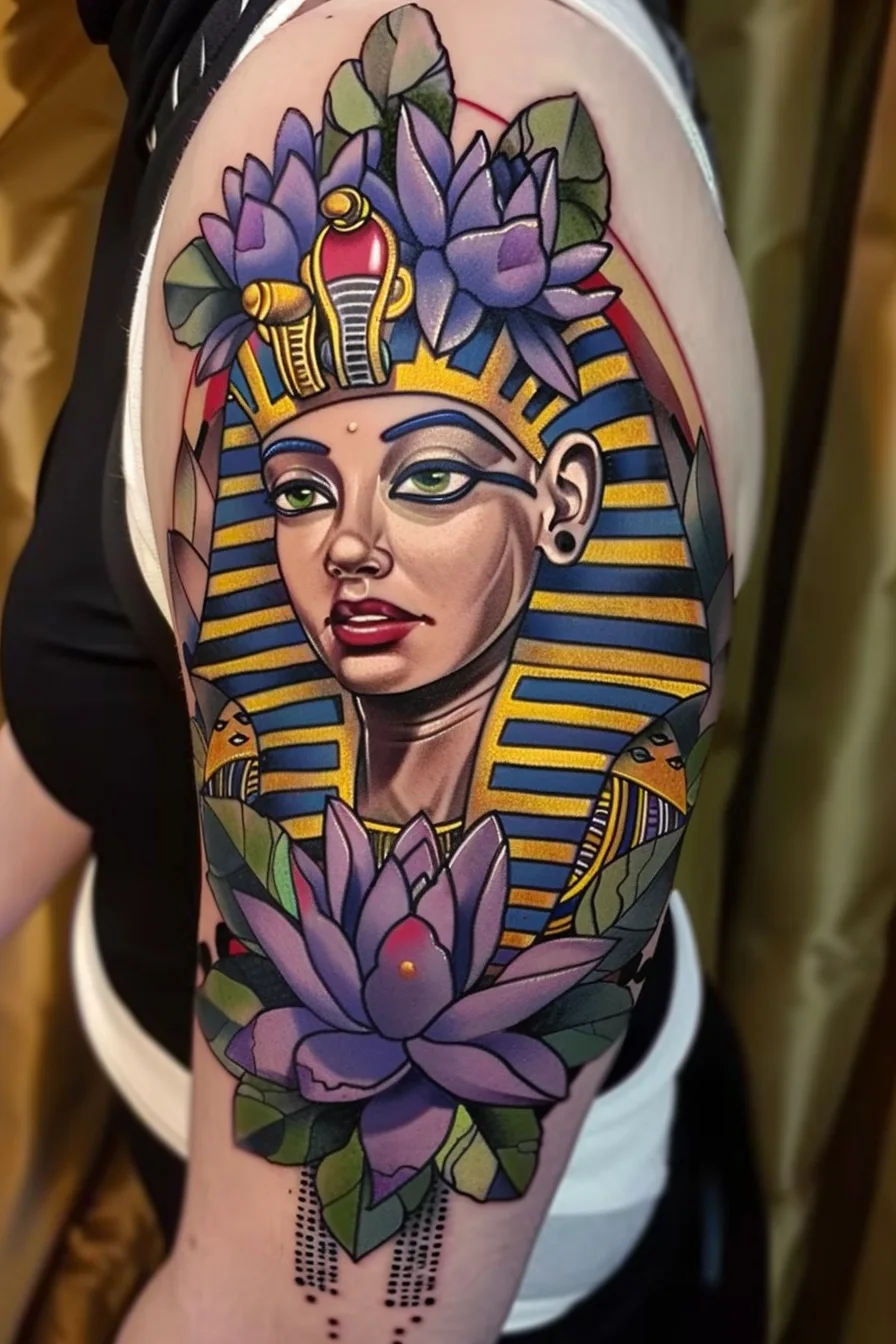
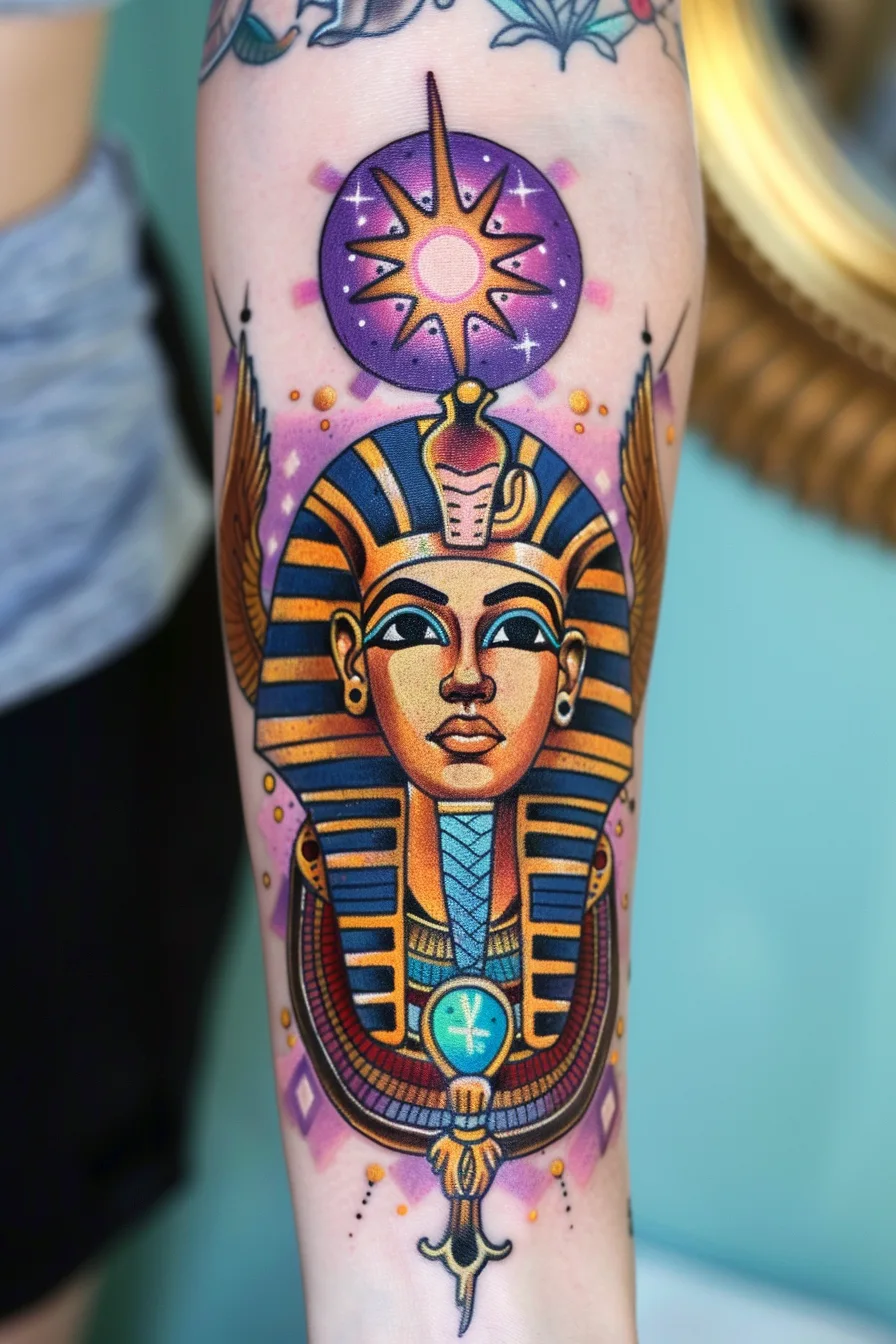
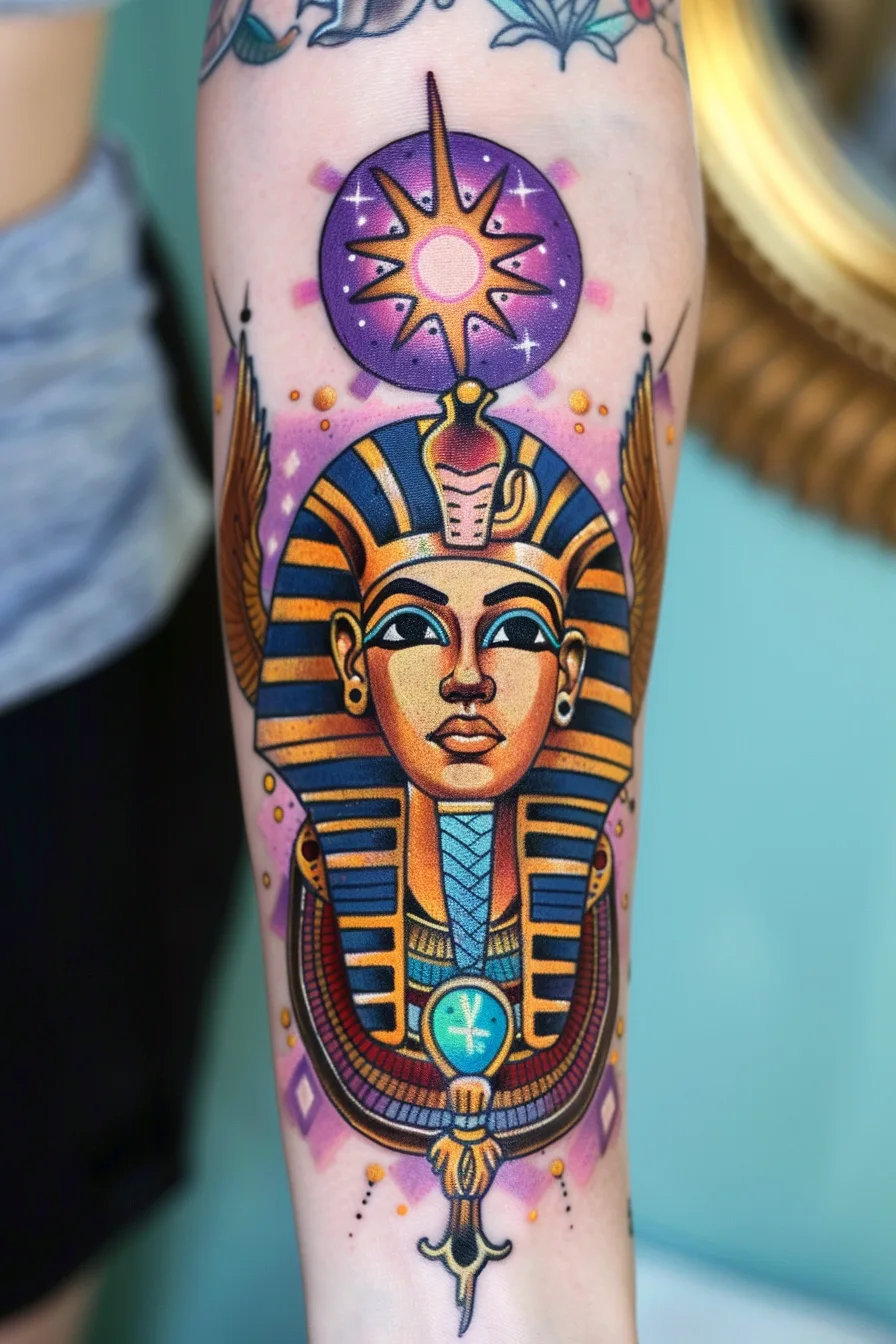
Ankh and Hieroglyphics
The ancient Egyptian hieroglyphics and the iconic ankh symbol often feature prominently in King Tut-inspired tattoos. These ancient symbols hold deep cultural significance, representing concepts like life, the sun, and divine kingship.
Exploring the meanings behind these powerful design elements can help individuals create a tattoo that truly captures the essence of King Tutankhamun's legacy.

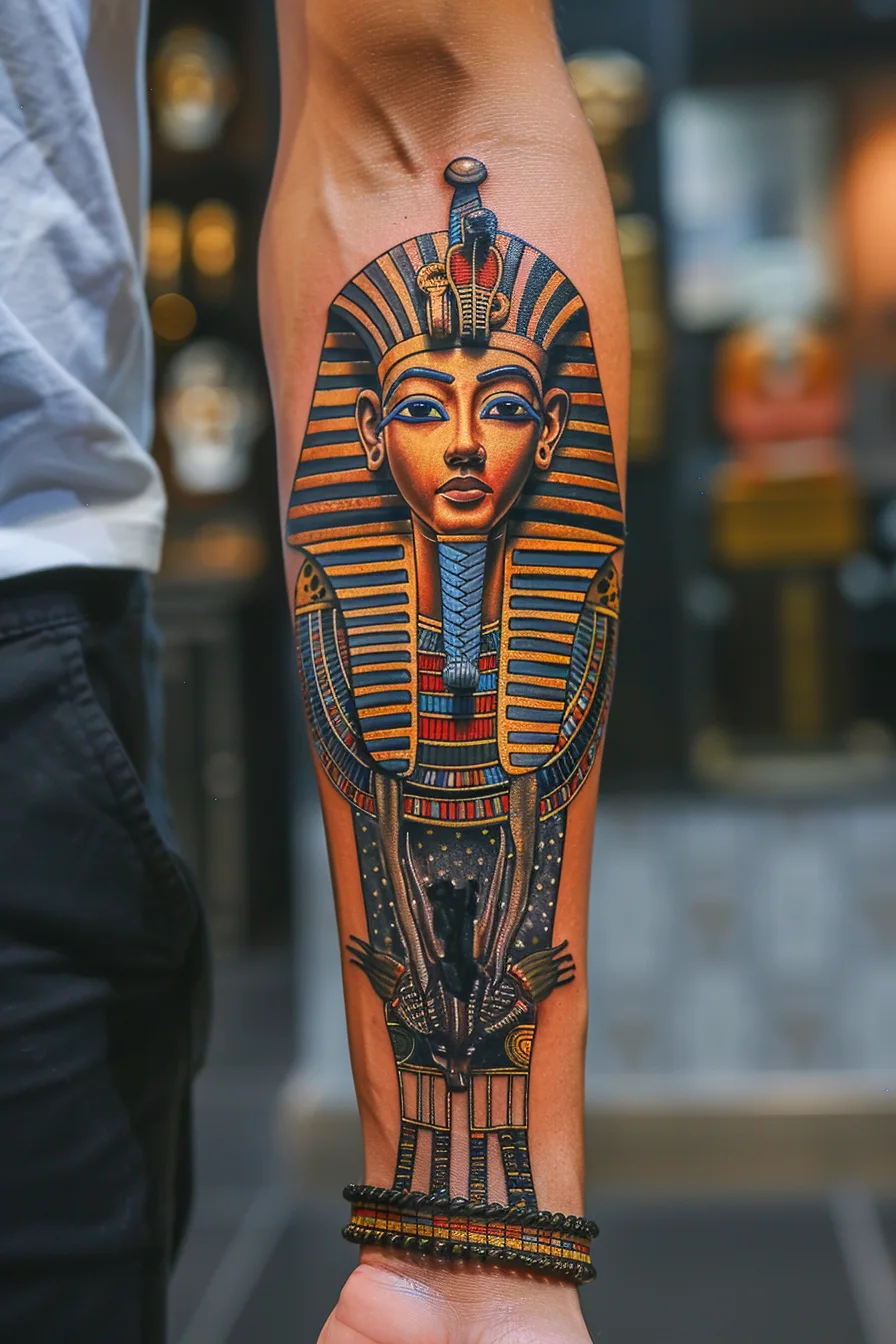
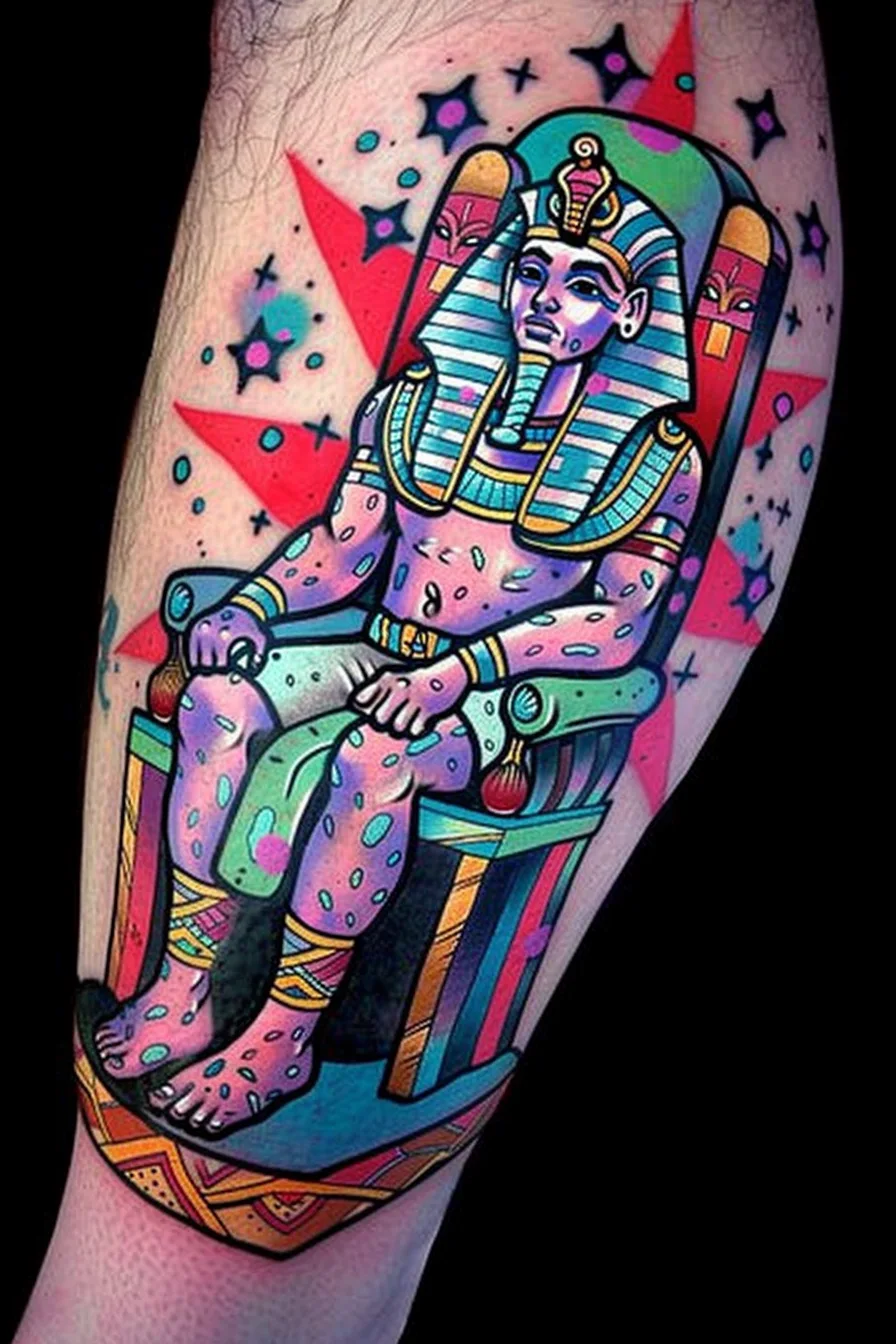
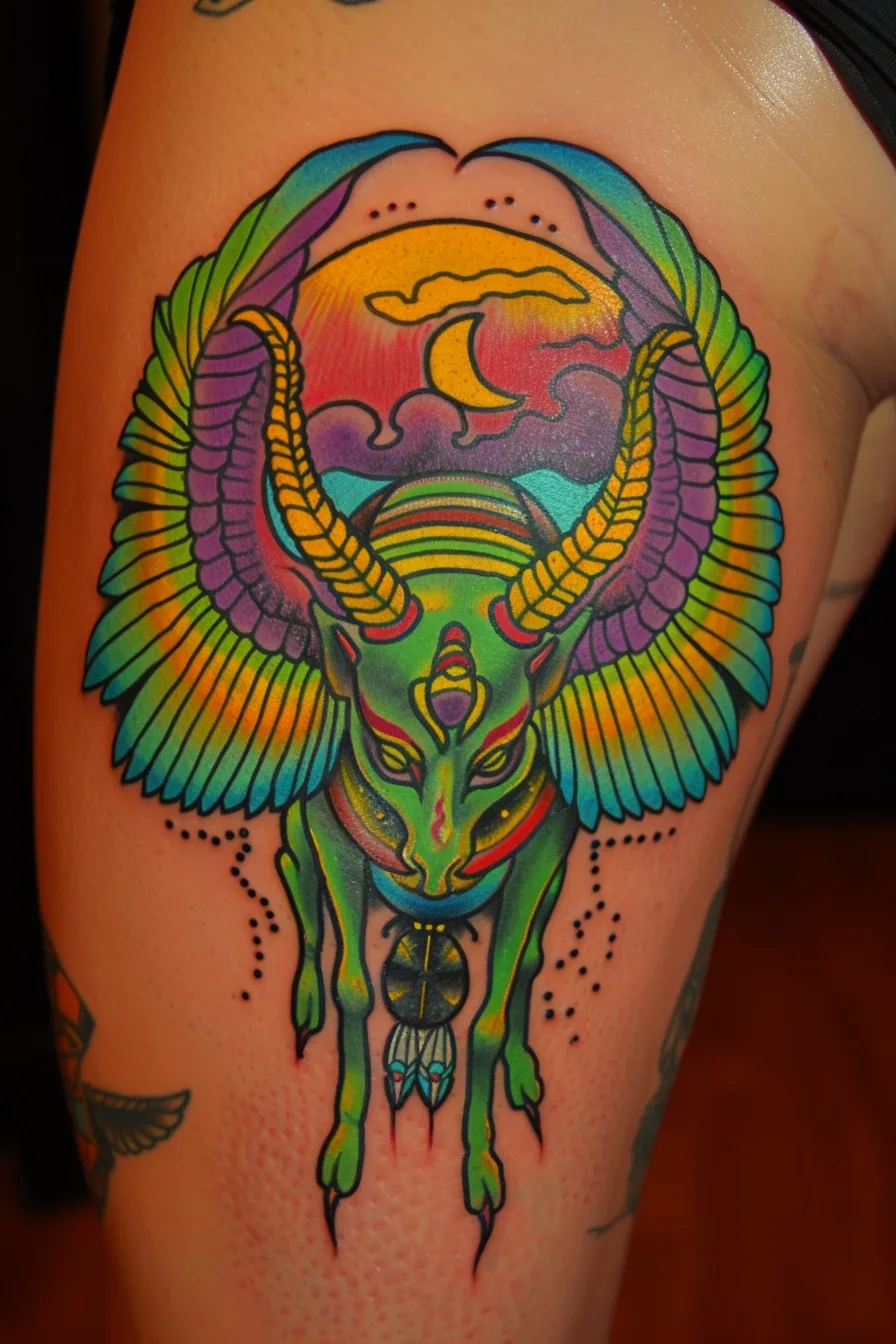
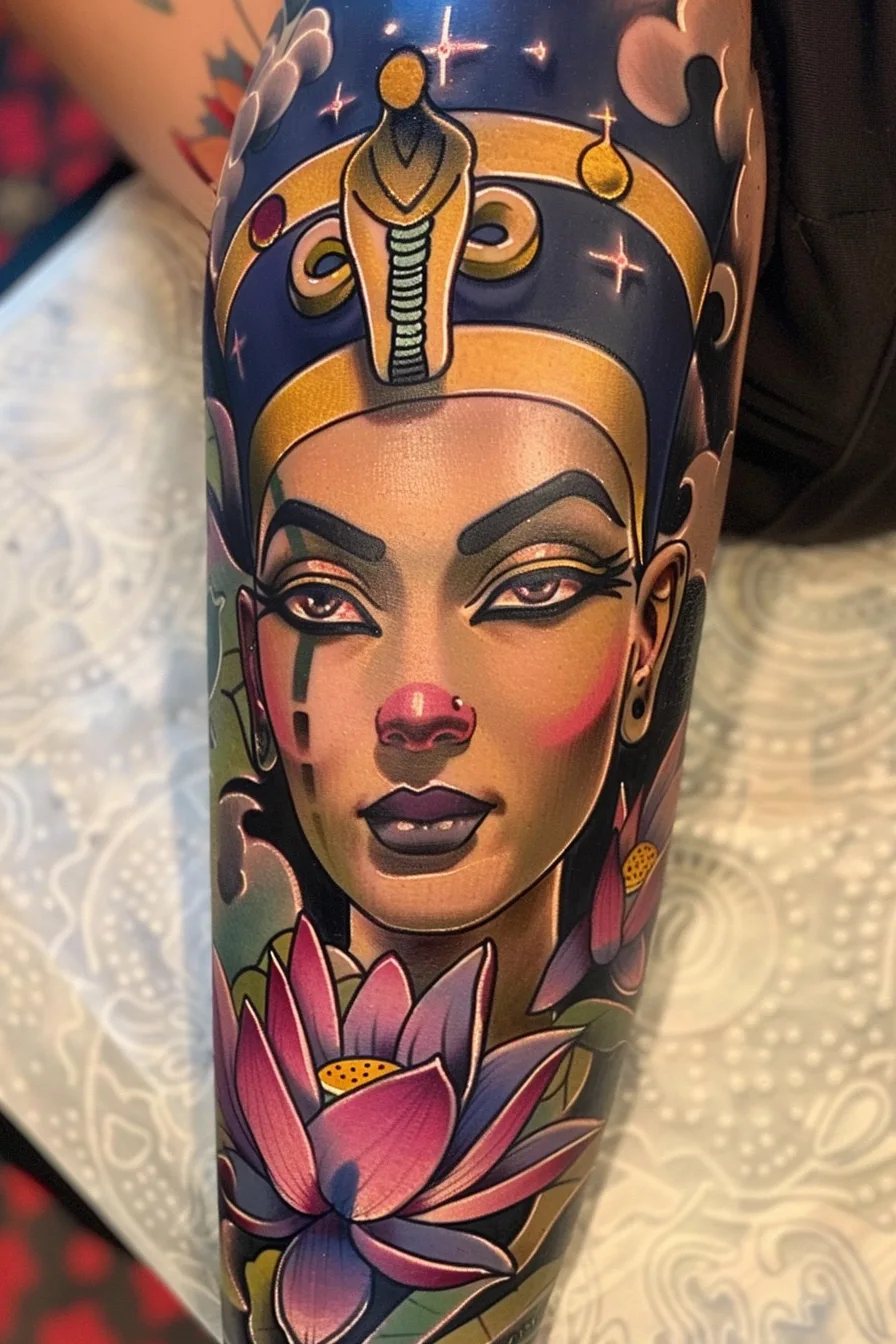
Eye of Ra
An iconic and sacred symbol, the Eye of Ra holds immense significance within the ancient Egyptian mythology and spiritual beliefs. Representing the powerful solar deity Ra, the Eye of Ra symbolizes the divine authority, protection, and the all-seeing nature of the sun god.
This esoteric symbol is often depicted as a distinctive eye shape with a pupil, surrounded by a distinctive outline. Deeply rooted in the rich tapestry of ancient Egyptian culture, the Eye of Ra is believed to possess profound metaphysical properties, offering safeguard and enlightenment to those who honor its energy.
Its presence in various ancient artifacts, artwork, and hieroglyphics underscores the reverence and mystique associated with this captivating symbol.
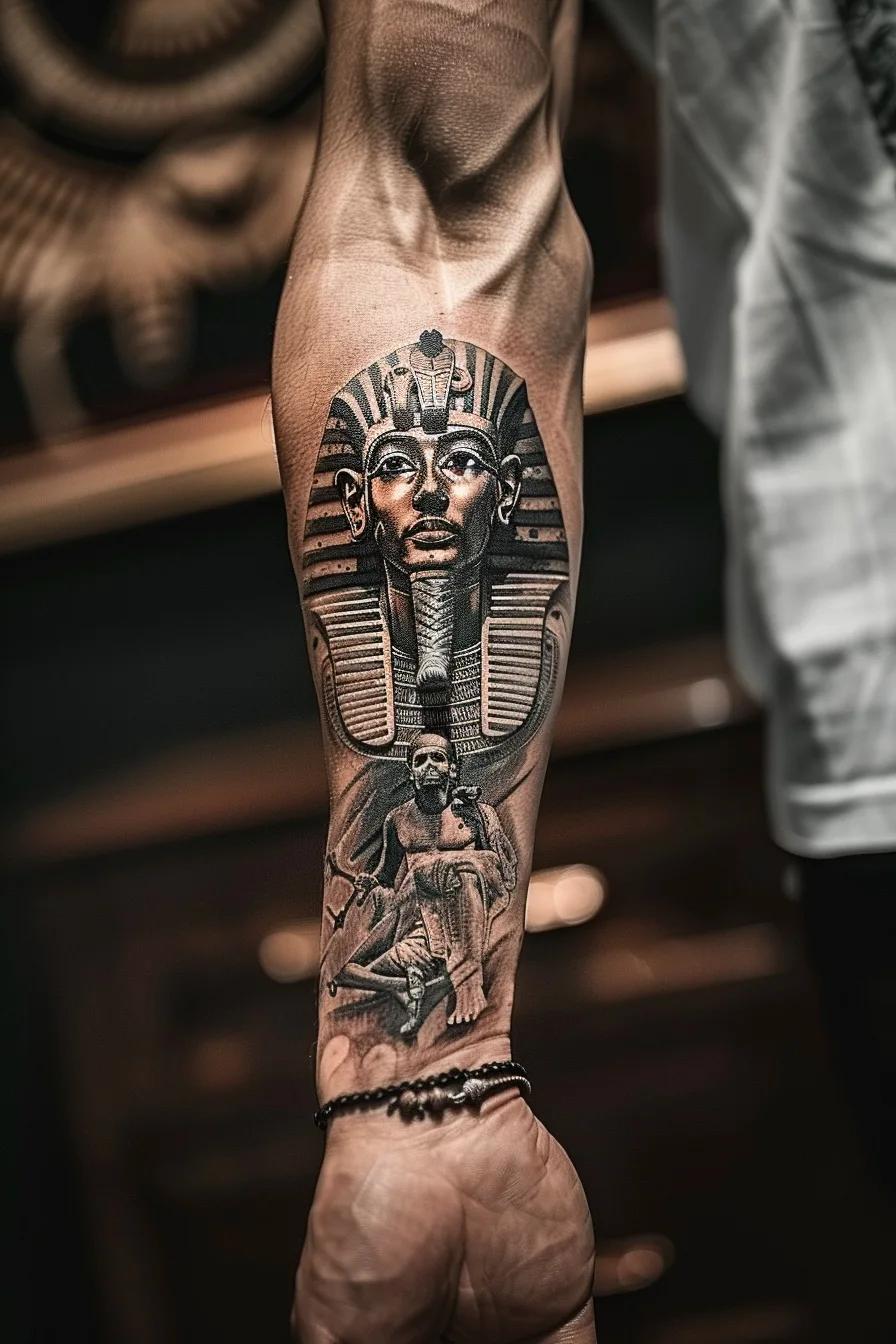
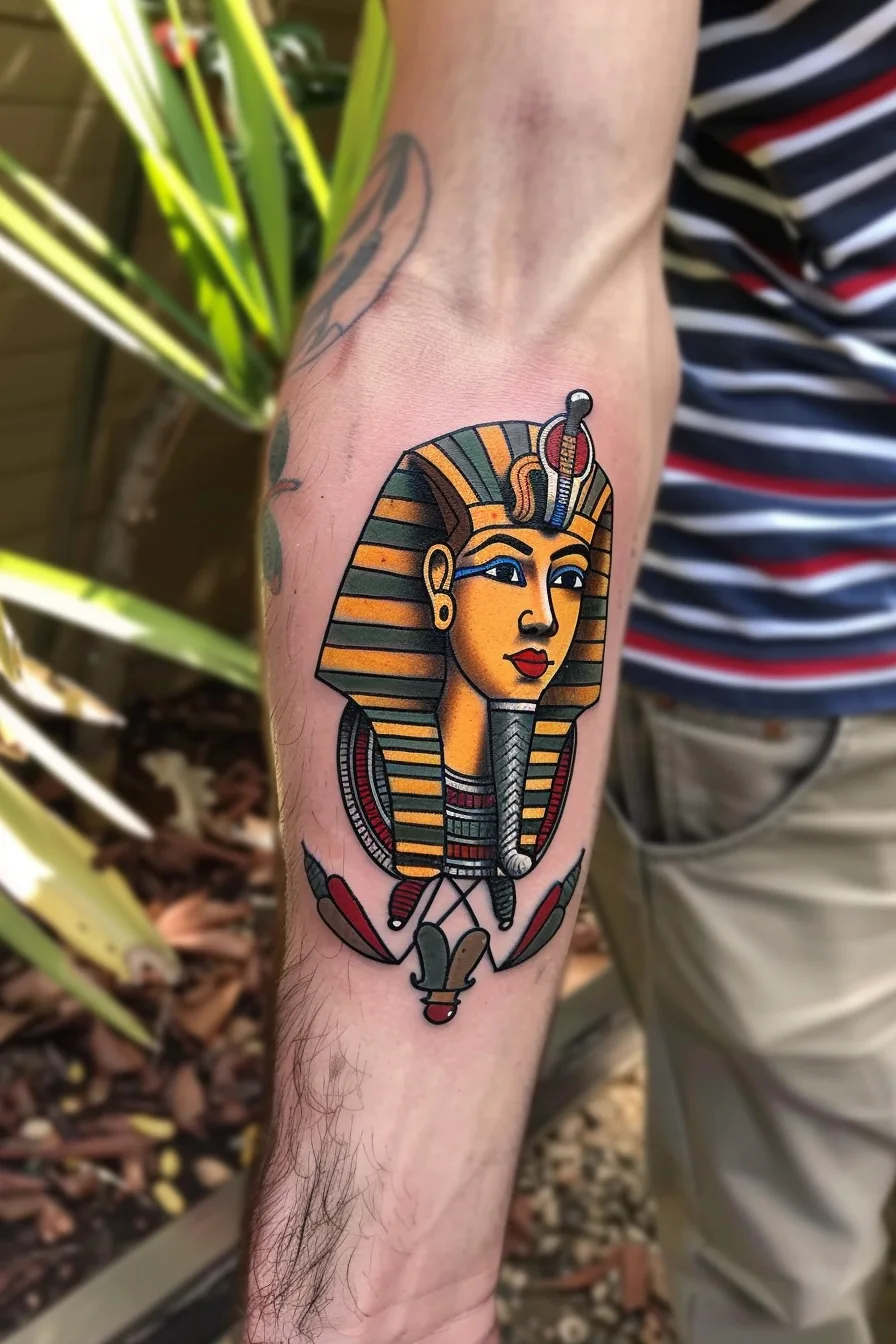
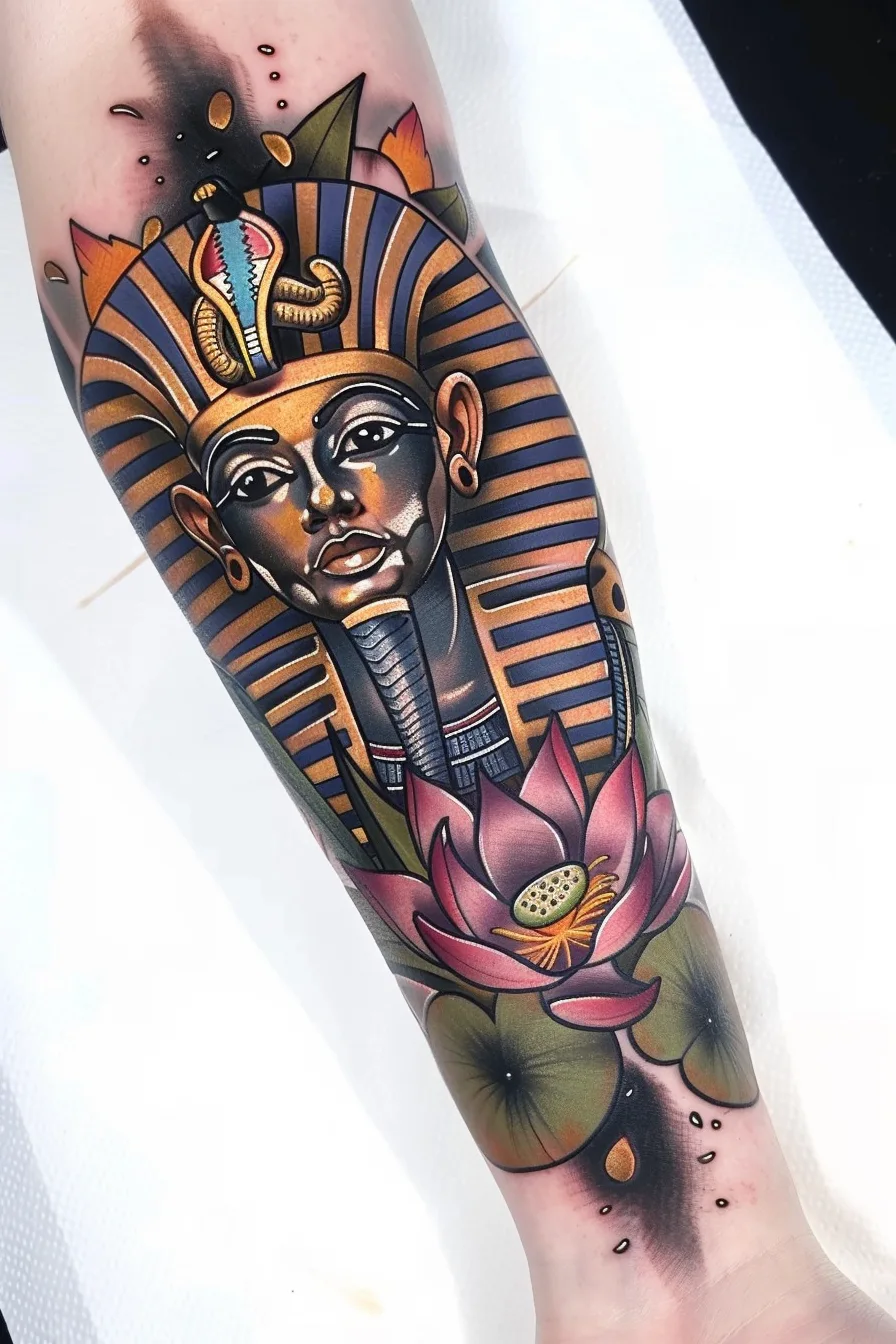
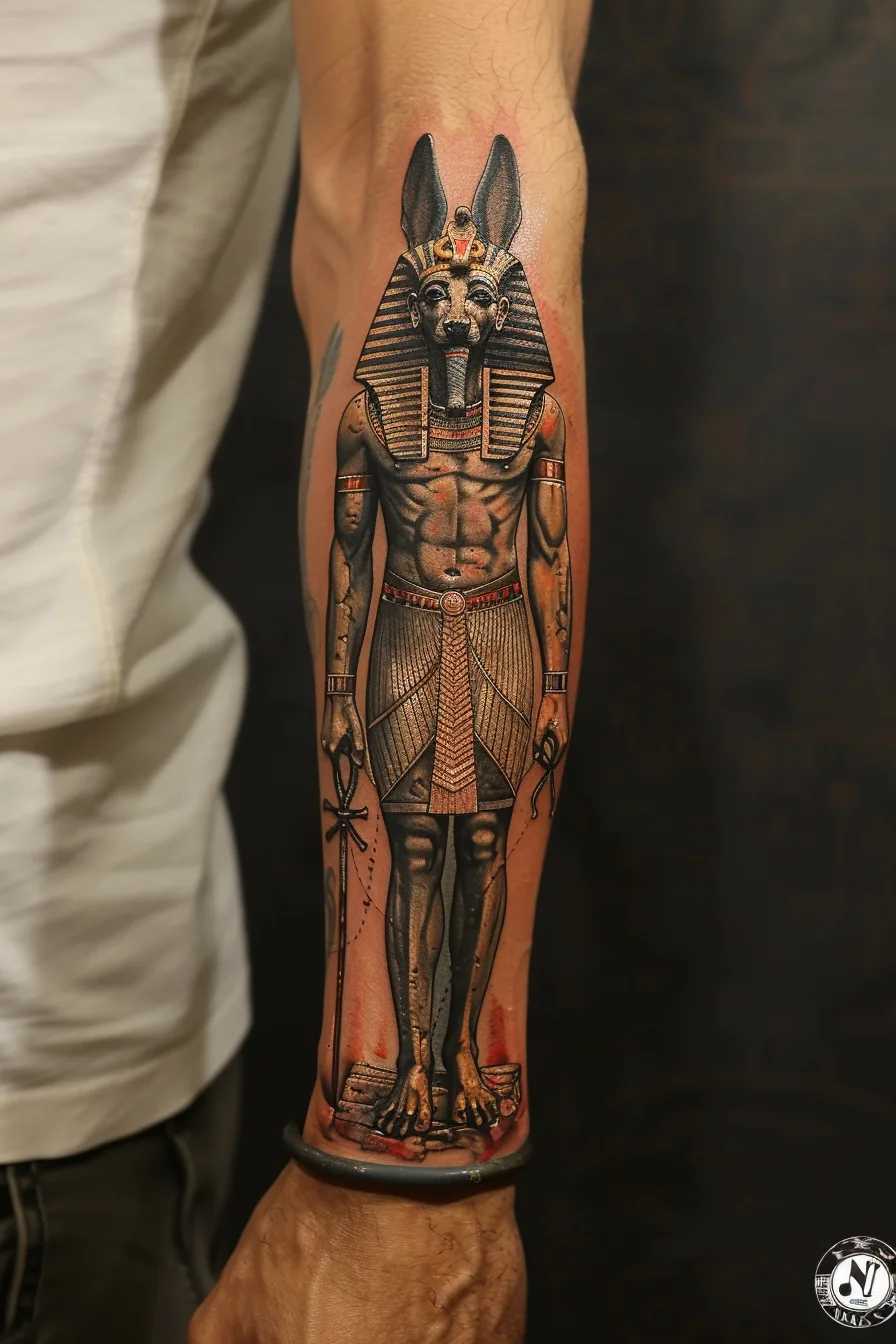
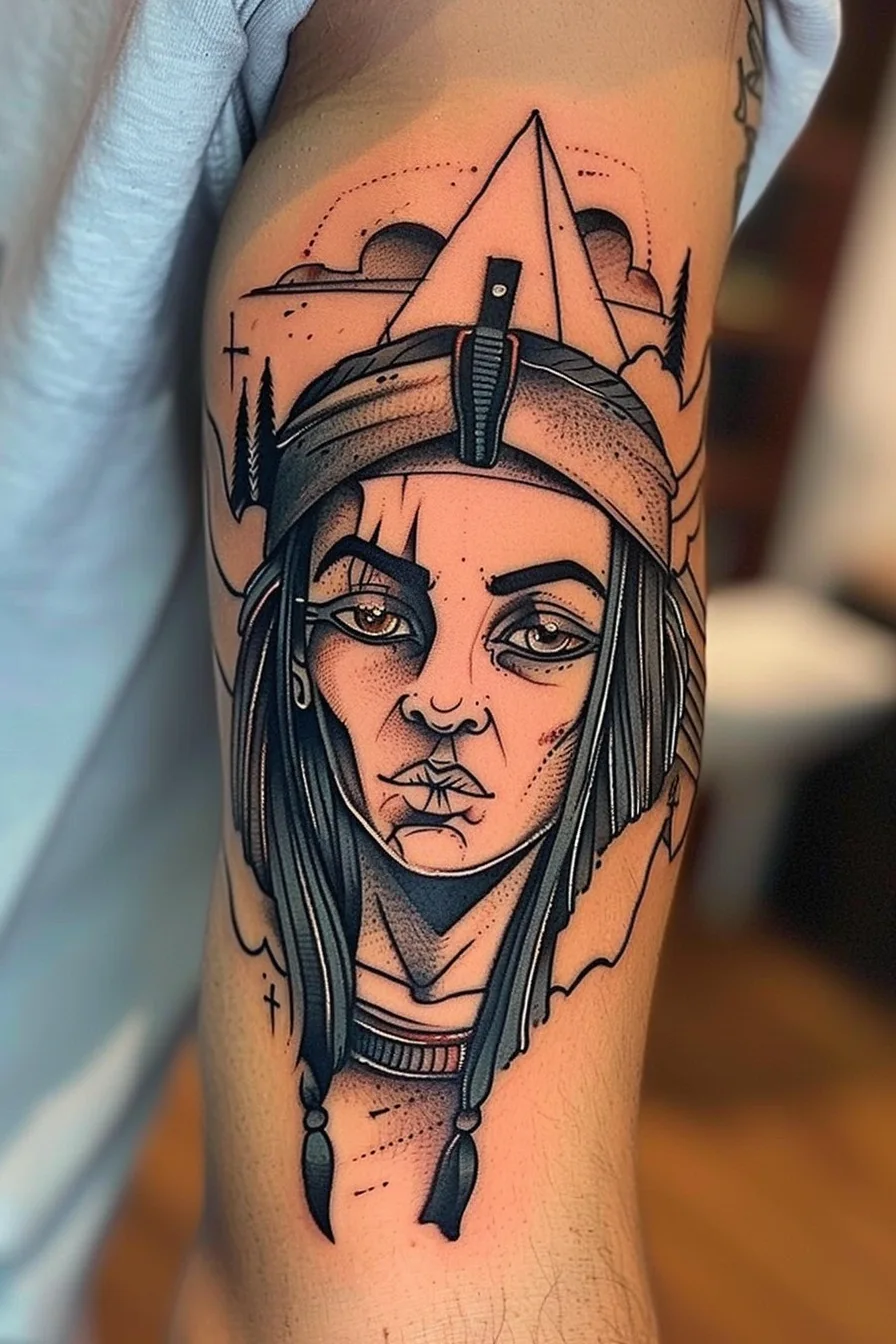
Scarab Beetle and Hieroglyphics
Another integral component of ancient Egyptian symbolism was the revered scarab beetle, which held profound cosmic and spiritual significance. The scarab was closely associated with the sun god Ra, as it was believed to symbolize the daily rebirth of the sun. This connection to the celestial cycle and the concept of eternal renewal made the scarab a powerful talisman.
Hieroglyphics, the intricate written language of the Nile civilization, also featured prominently in the rich visual tapestry, with iconic symbols such as the ankh conveying deep metaphysical concepts. These ancient hieroglyphic scripts not only communicated literal meanings but also encoded layers of symbolic and esoteric knowledge.
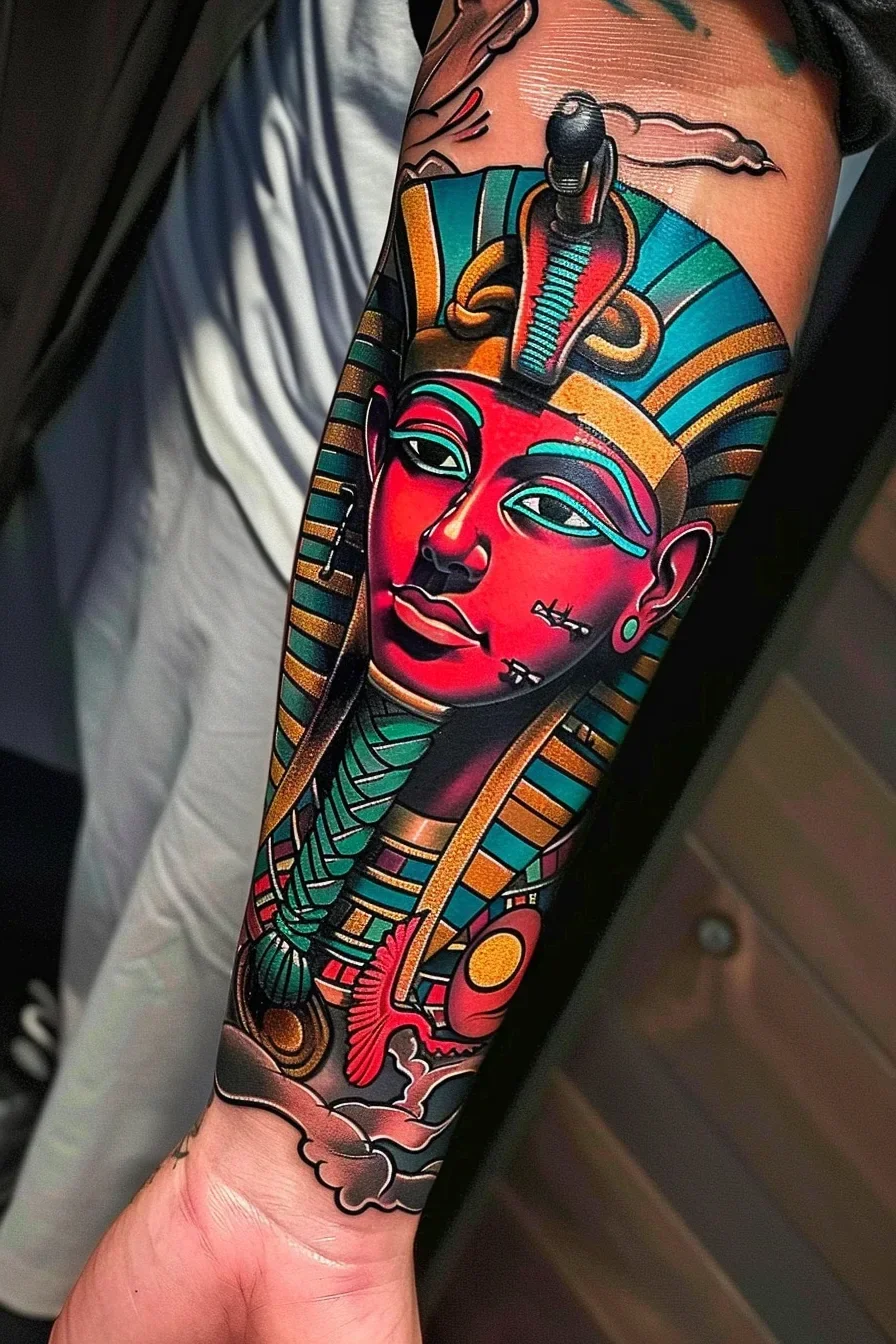
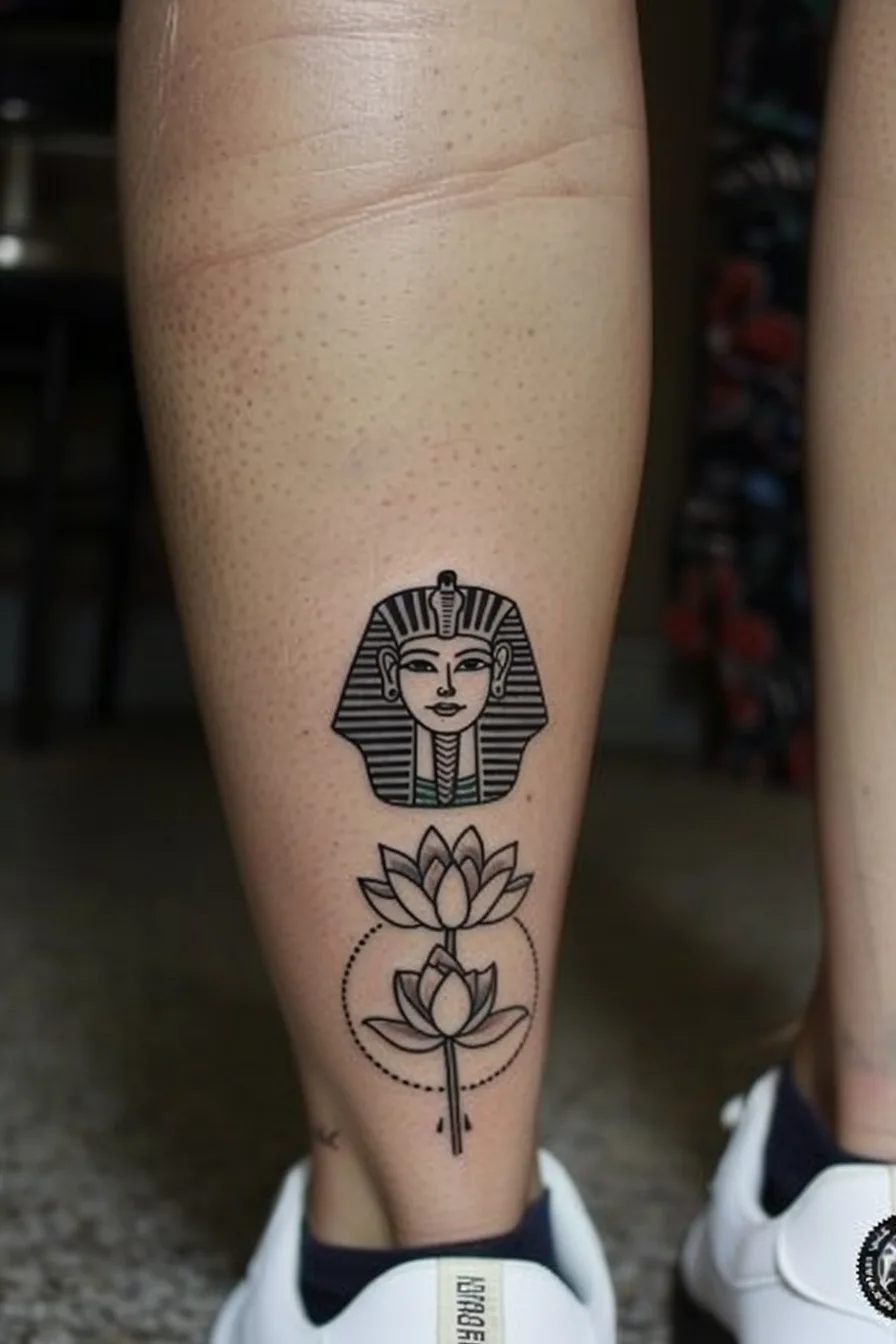
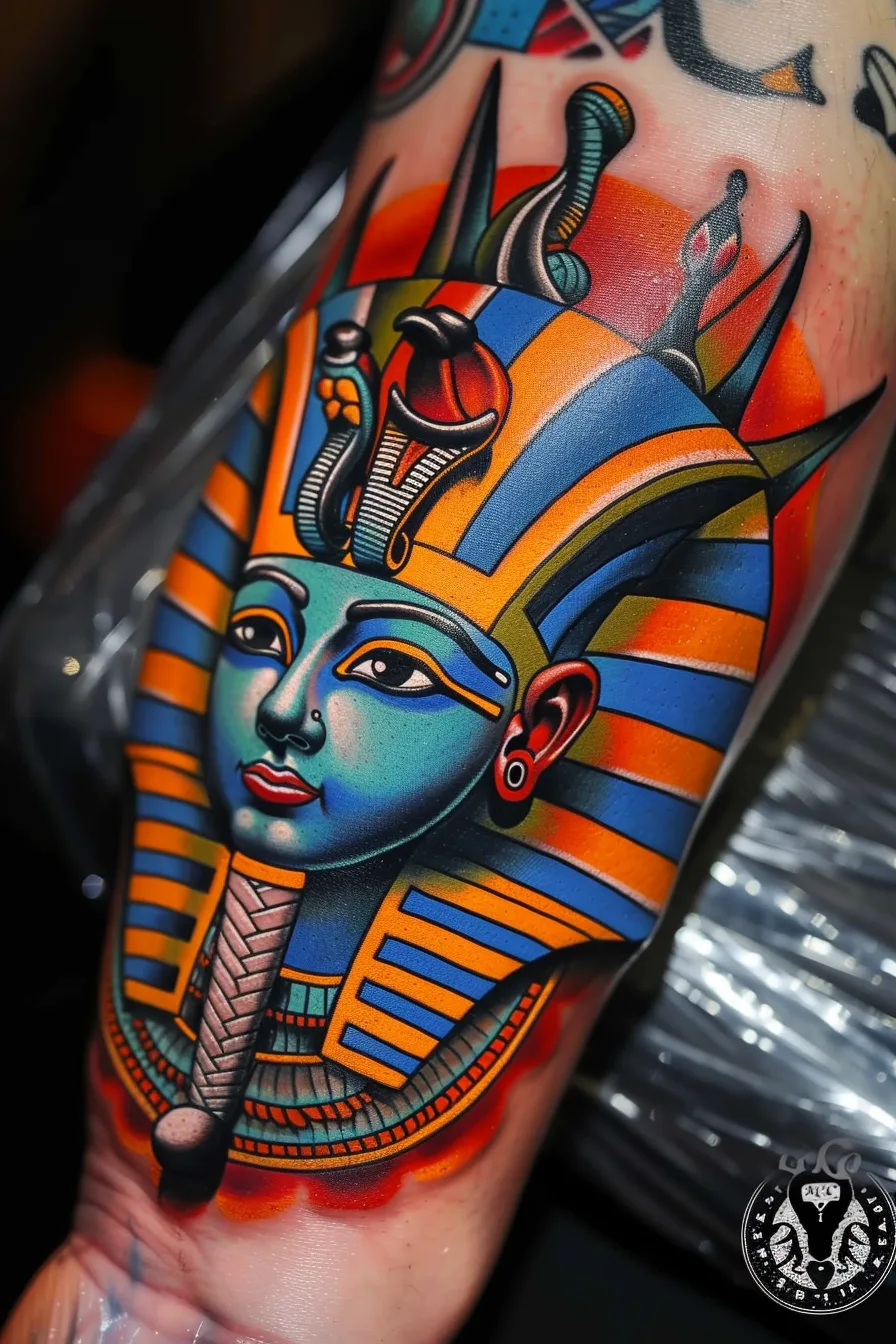
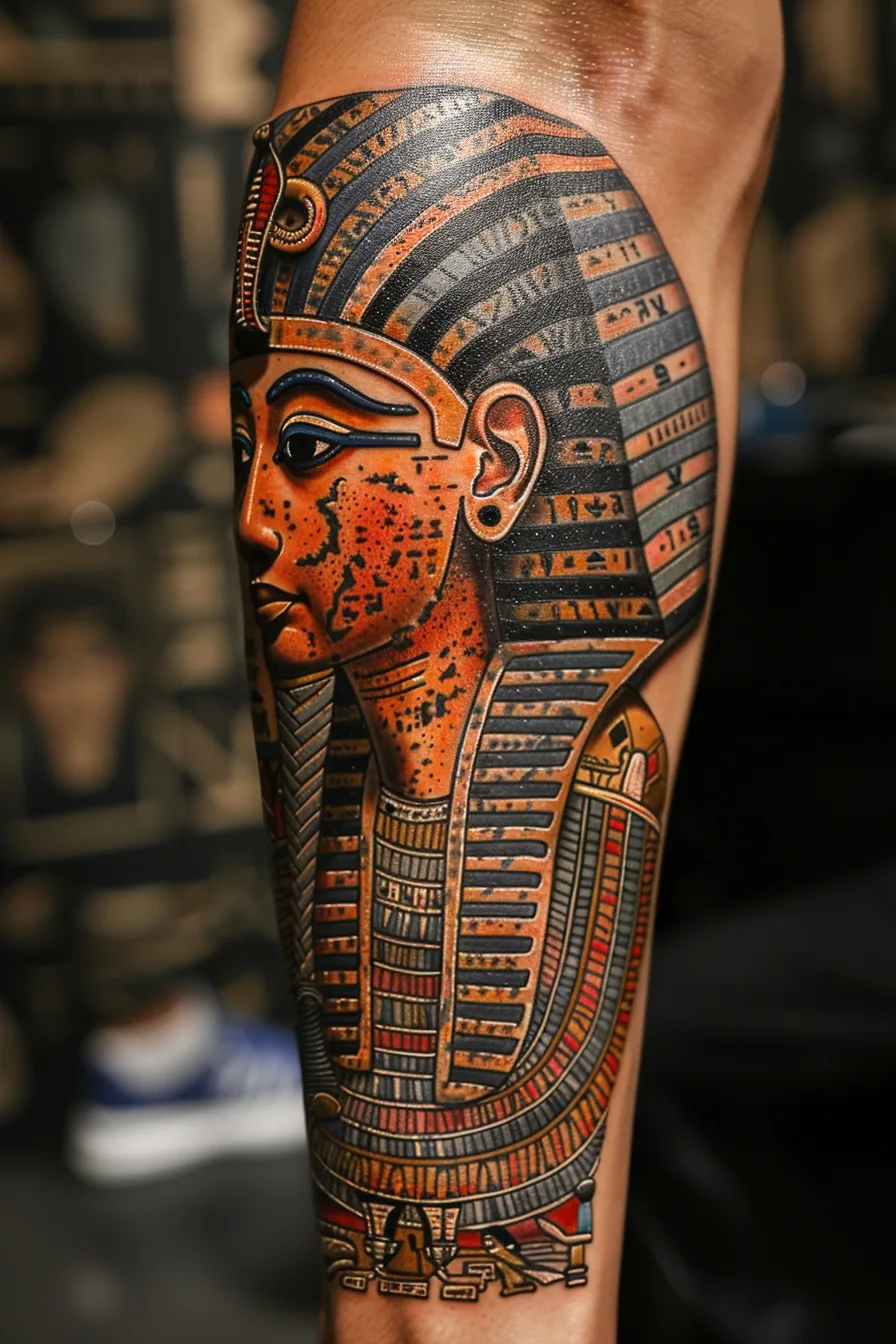
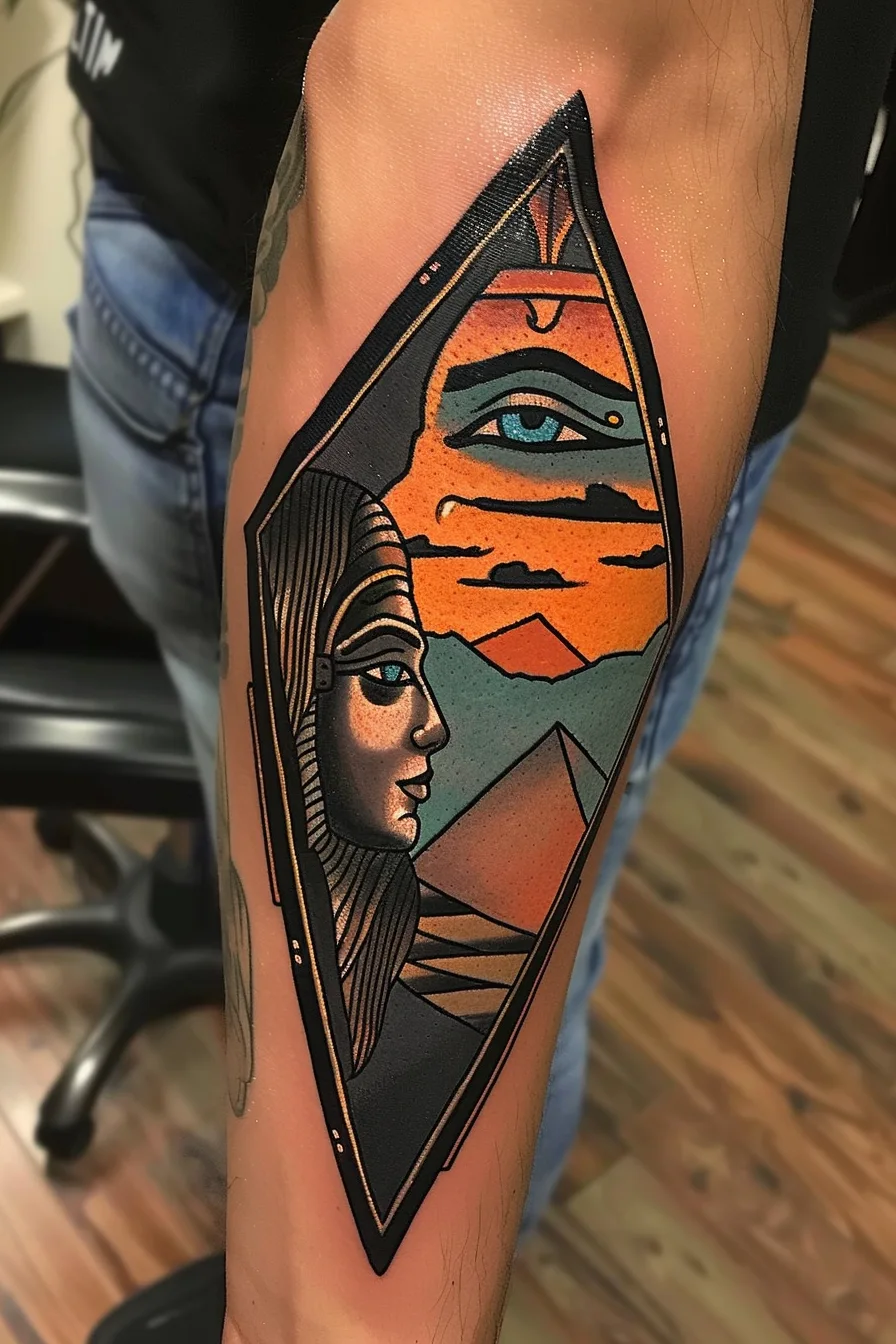
Winged Sun Disk Symbol
Prominently featured within the rich visual symbolism of ancient Egyptian culture was the enigmatic winged sun disk, a potent icon imbued with profound cosmic and spiritual significance.
Known as the Aten, this celestial emblem represented the solar deity, a powerful force associated with the sun's life-giving warmth and radiance. The spread wings symbolized the sun's dominion over the heavens, while the solar disk itself signified the divine light that sustains all creation.
This revered symbol appeared in various contexts, from temple architecture to royal regalia, underscoring its central importance in Egyptian religious and cultural traditions.
The winged sun disk's enduring legacy continues to captivate and inspire, serving as a visual gateway into the rich tapestry of ancient Egyptian beliefs and cosmology.

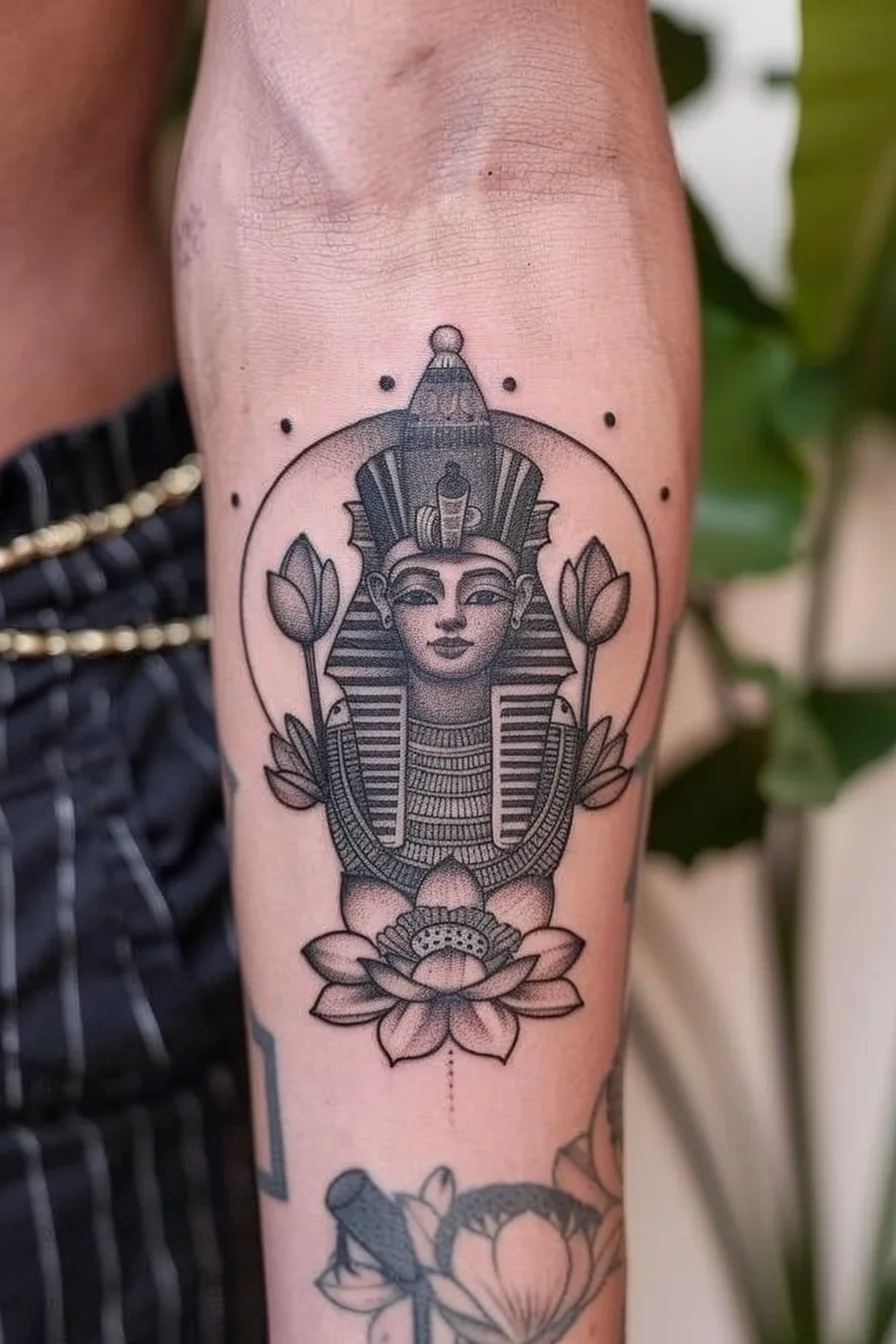
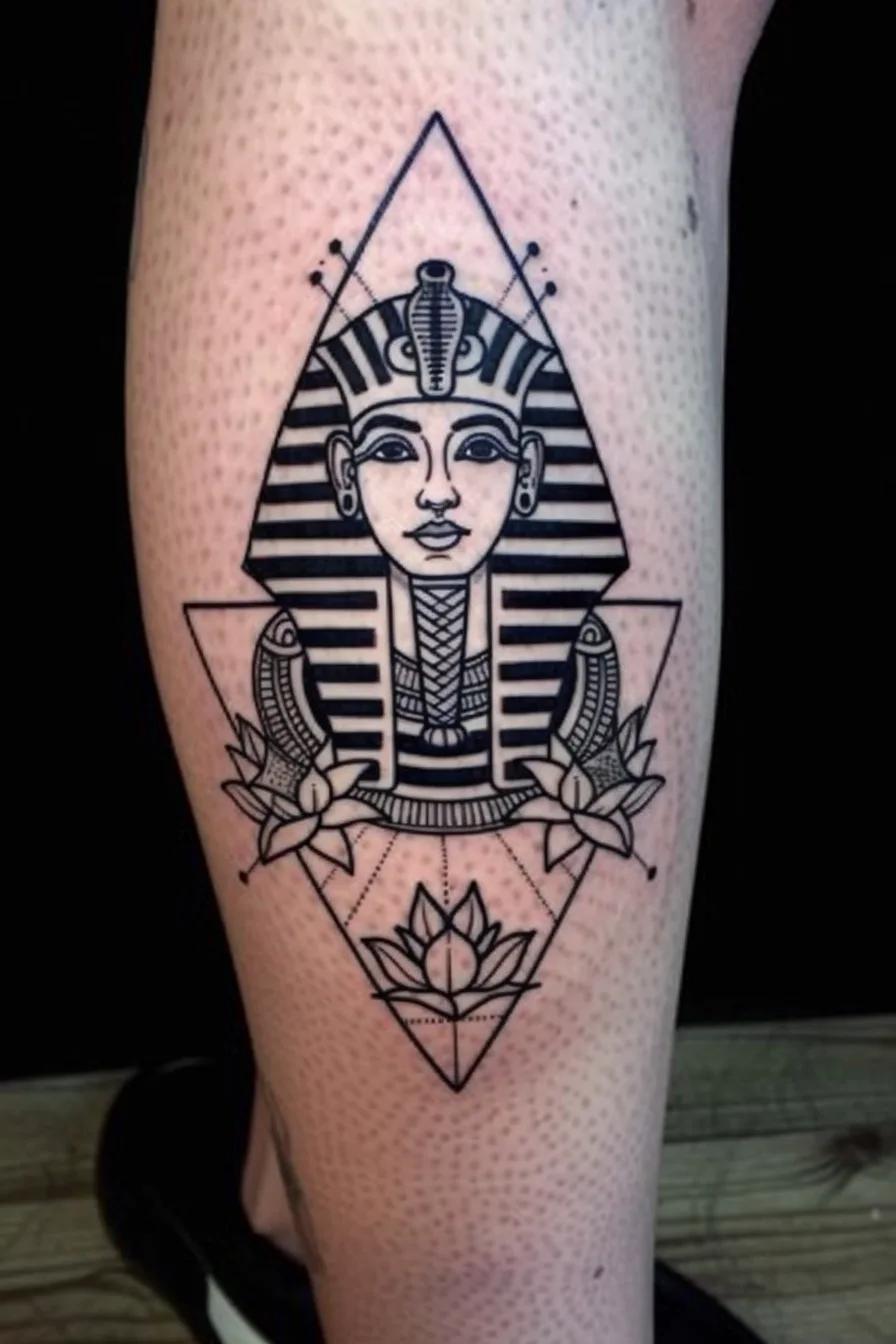

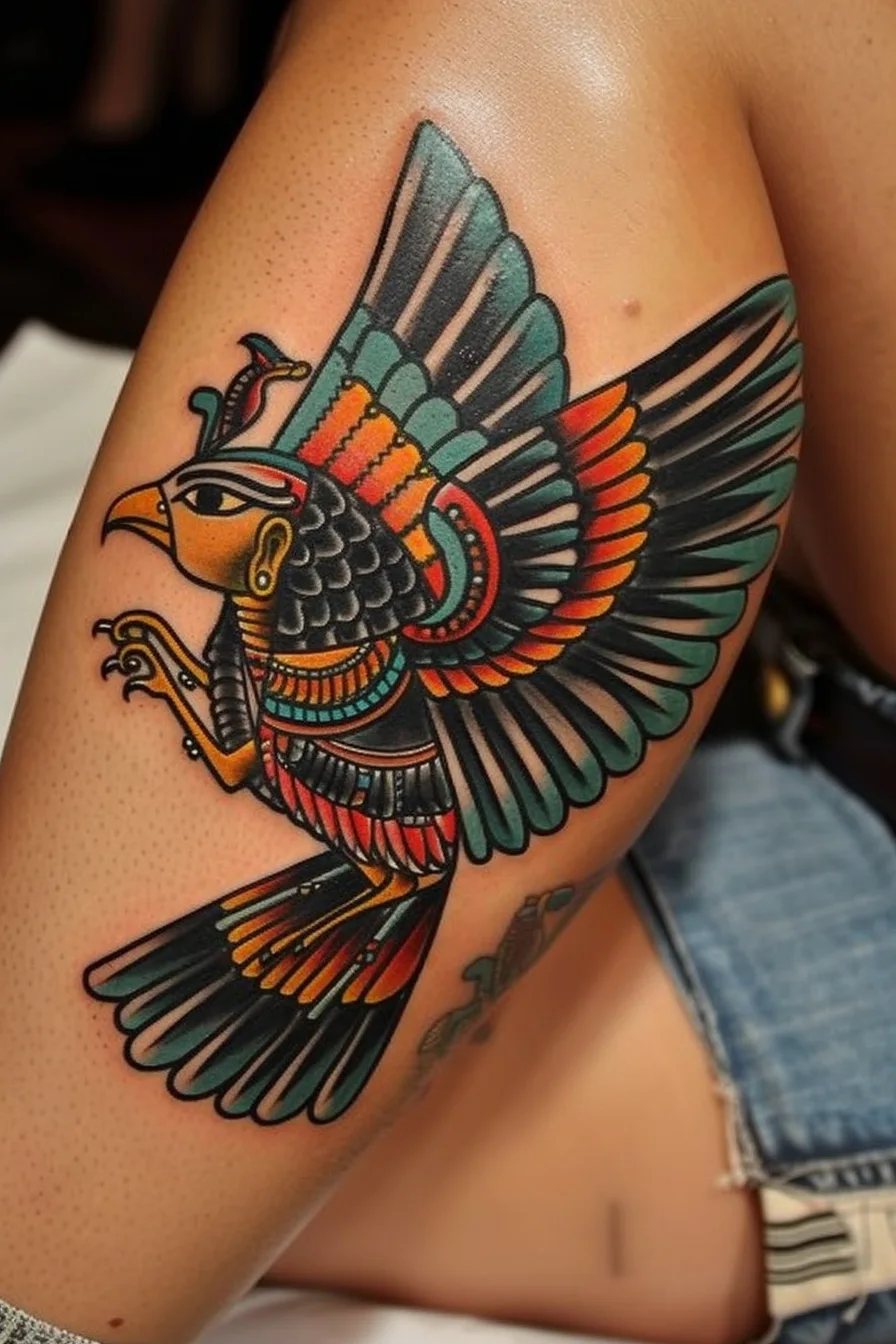
Obelisk and Hieroglyphics
Alongside the winged sun disk, the obelisk and hieroglyphic script were equally fundamental elements in the rich visual lexicon of ancient Egyptian culture.
Obelisks, towering stone monuments adorned with peaked summits, were often situated at the entrances of temples, serving as symbolic gateways to the divine realm. These imposing structures were imbued with associations of the sun god Ra, their tapered forms mirroring the sun's rays as they reached skyward.
Complementing the obelisk's prominence, the hieroglyphic script - a sophisticated writing system comprising stylized pictorial symbols - conveyed the sacred knowledge and cosmological mysteries of ancient Egyptian civilization.
The obelisk and hieroglyphics were integral parts of the architectural symbolism that permeated ancient Egyptian culture.
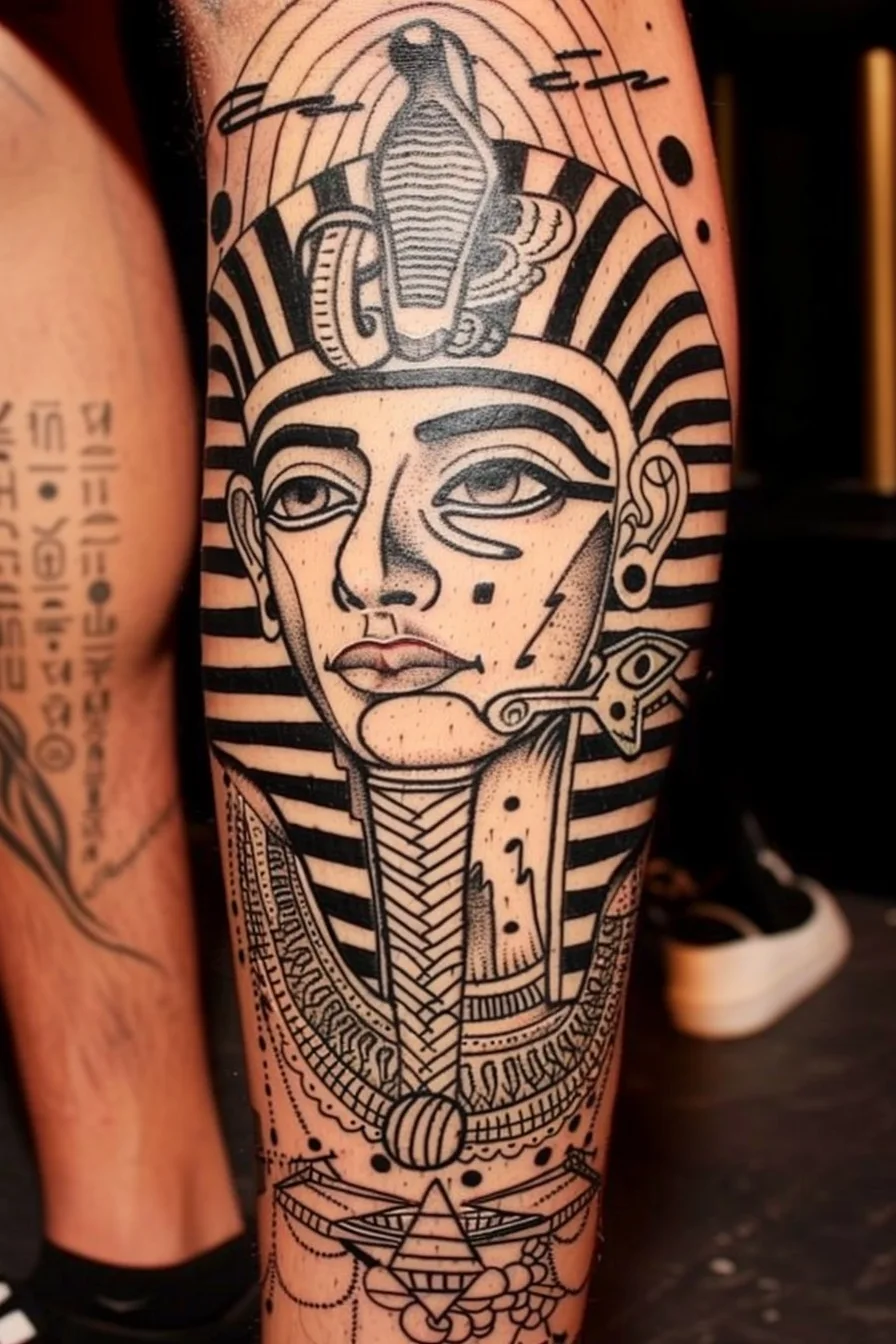
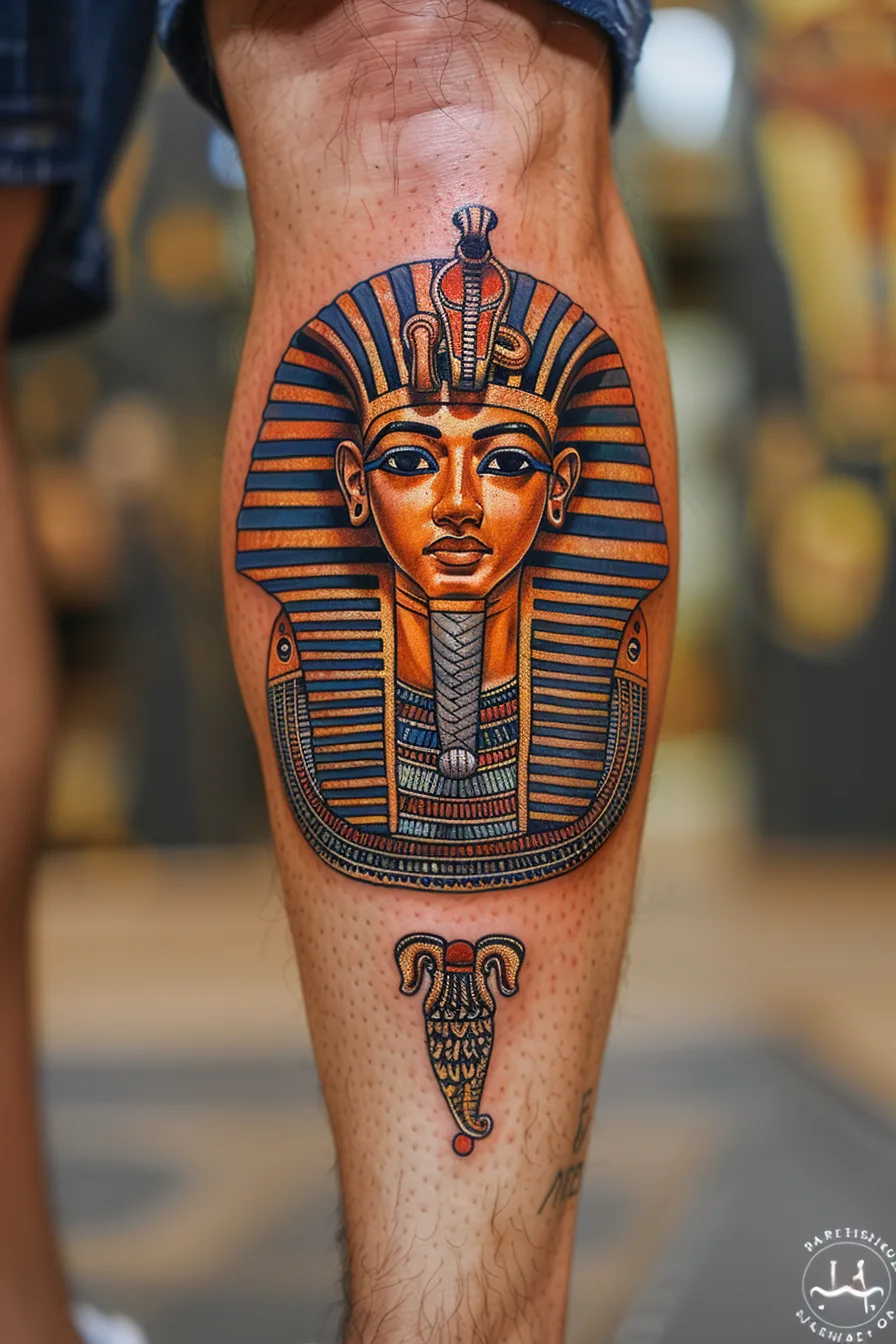
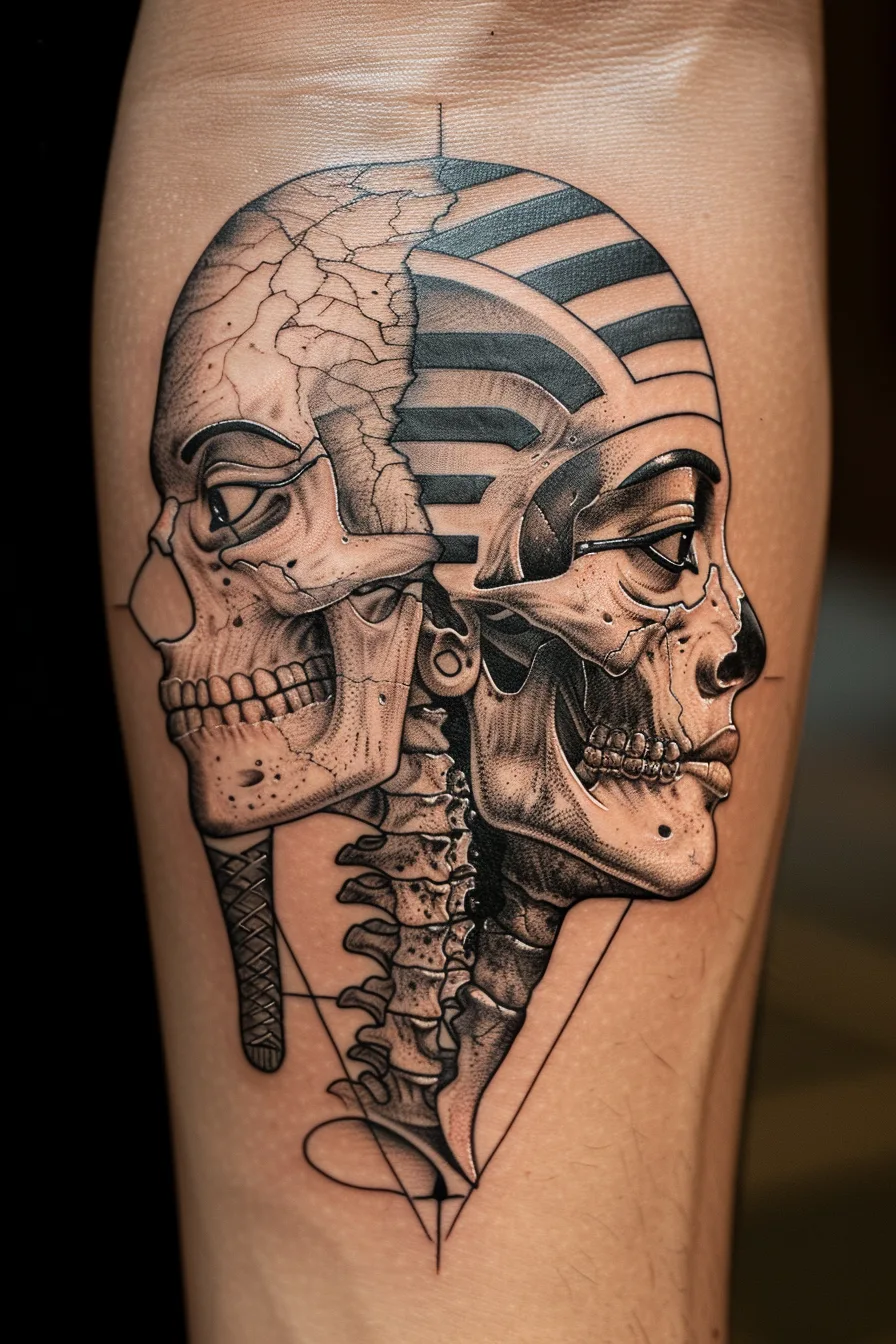
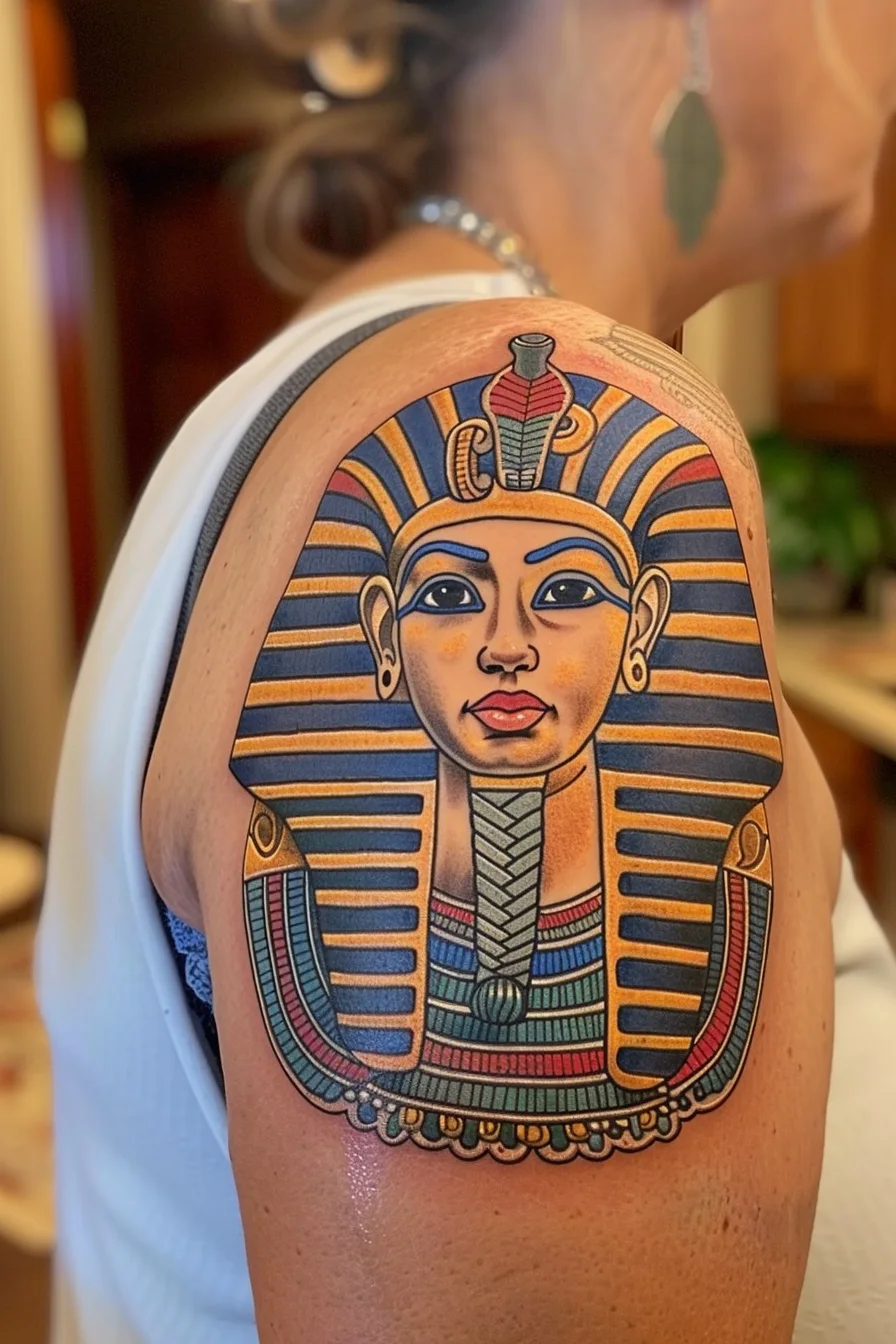
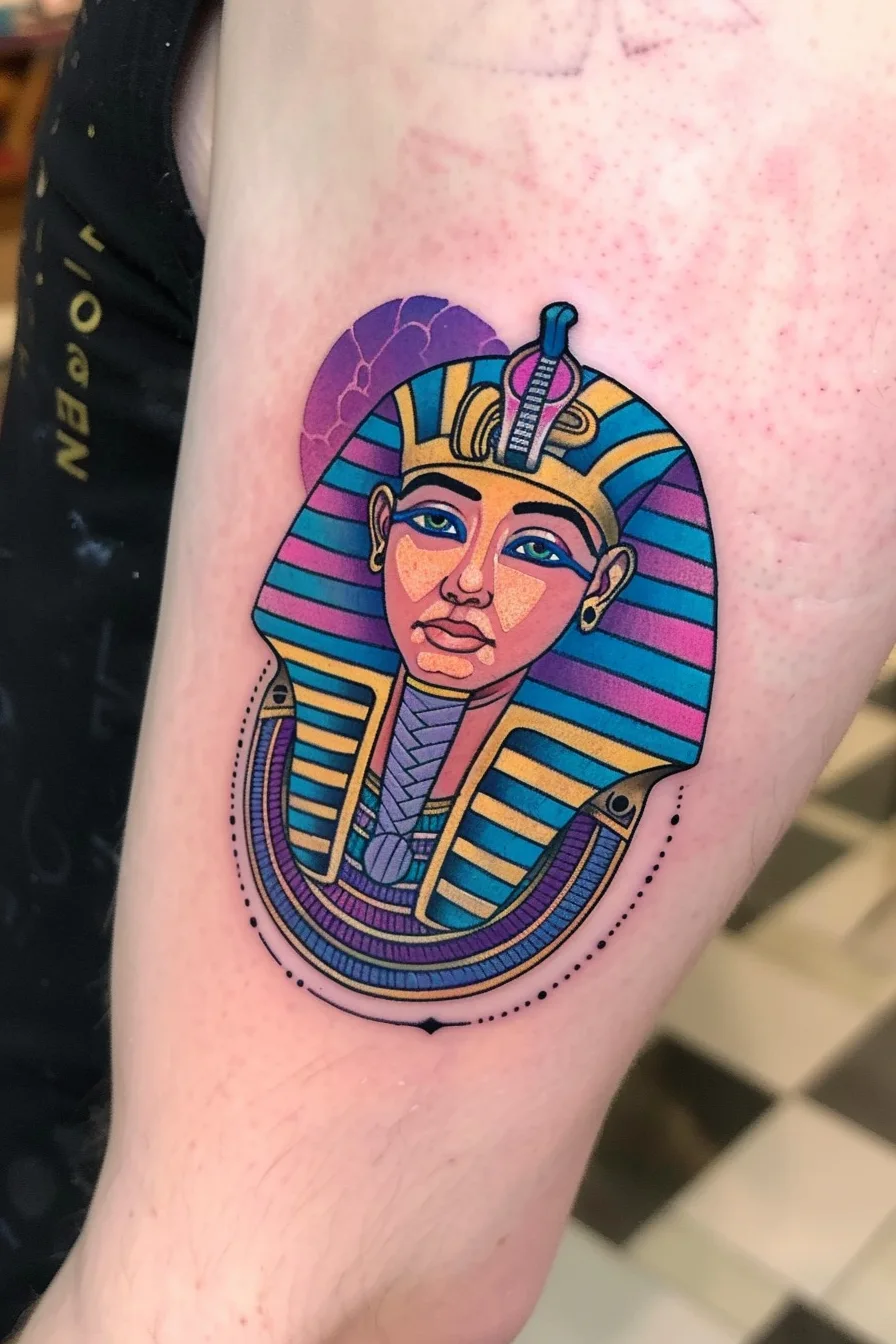
History & Origins
The King Tut tattoo has a rich historical and cultural significance, rooted in the enduring legacy of ancient Egyptian civilization. This iconic design has been shaped by the influences of both ancient and modern cultures, becoming a canvas for artistic interpretation and personal expression.
The image of King Tutankhamun, the famous young pharaoh, has captivated the imaginations of people worldwide, inspiring a fascination with the mysteries and splendor of ancient Egypt. Whether as a symbol of regal power, a connection to a storied past, or a statement of personal identity, the King Tut tattoo reflects the timeless allure of this remarkable figure and the profound impact of his enduring legacy.
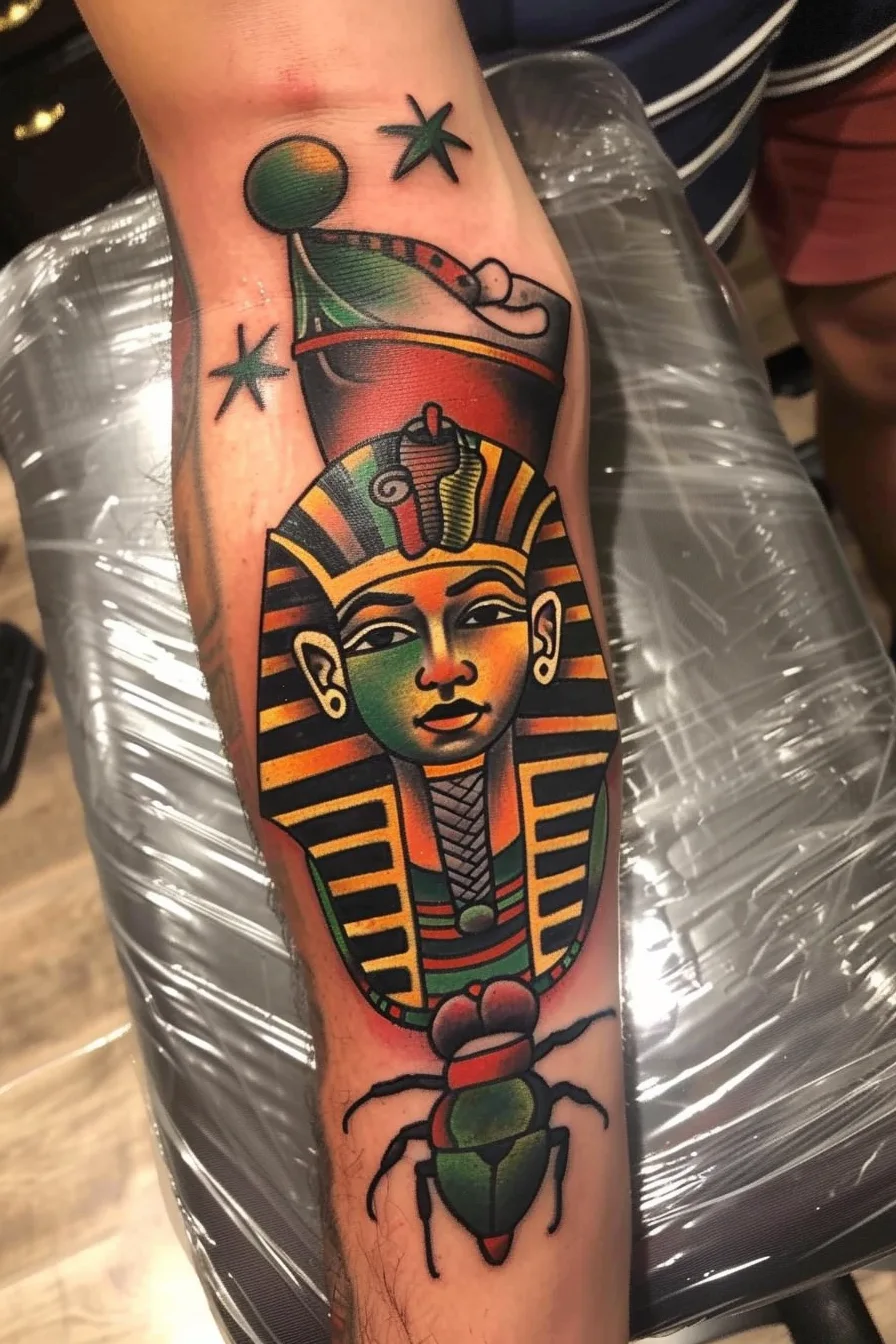
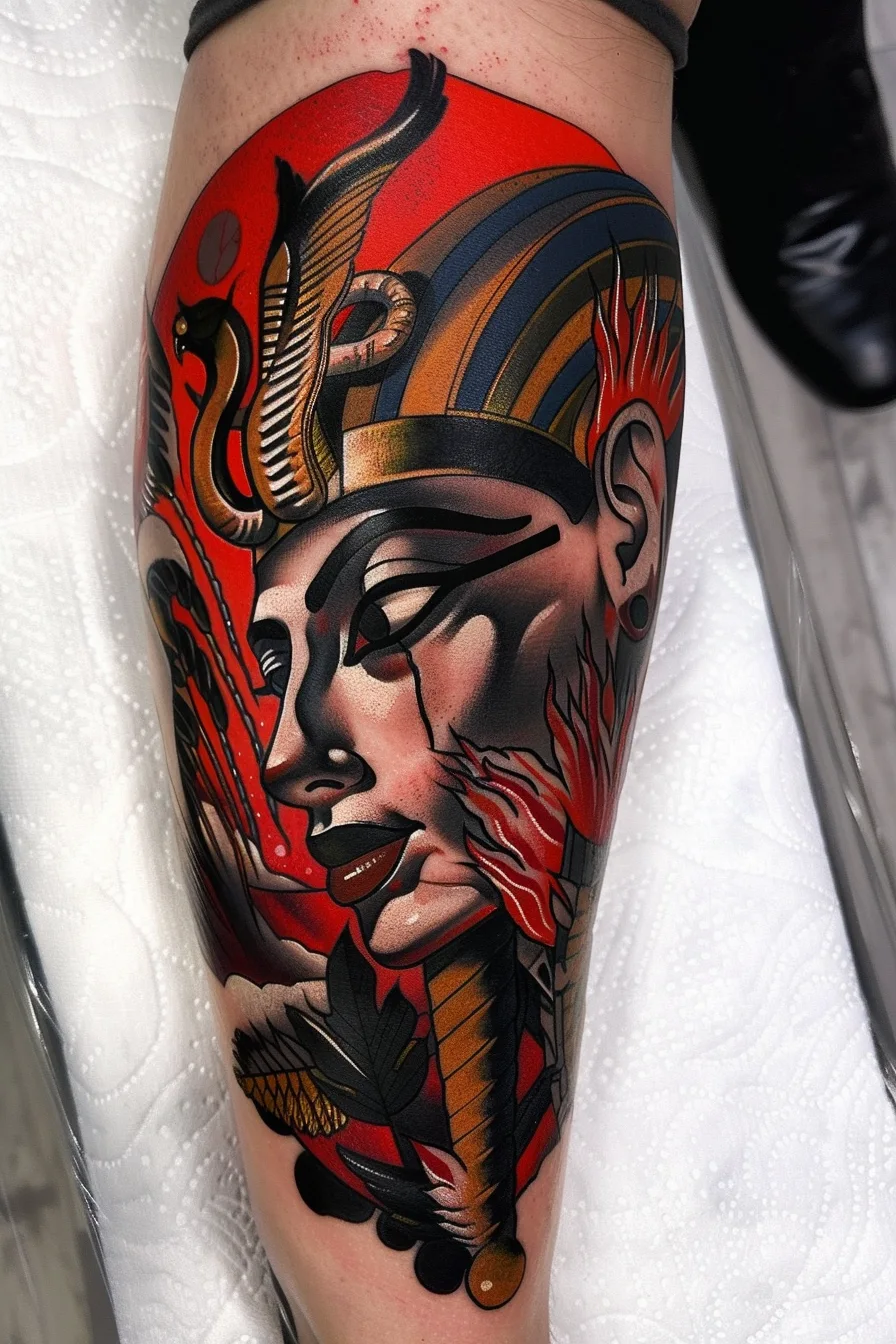
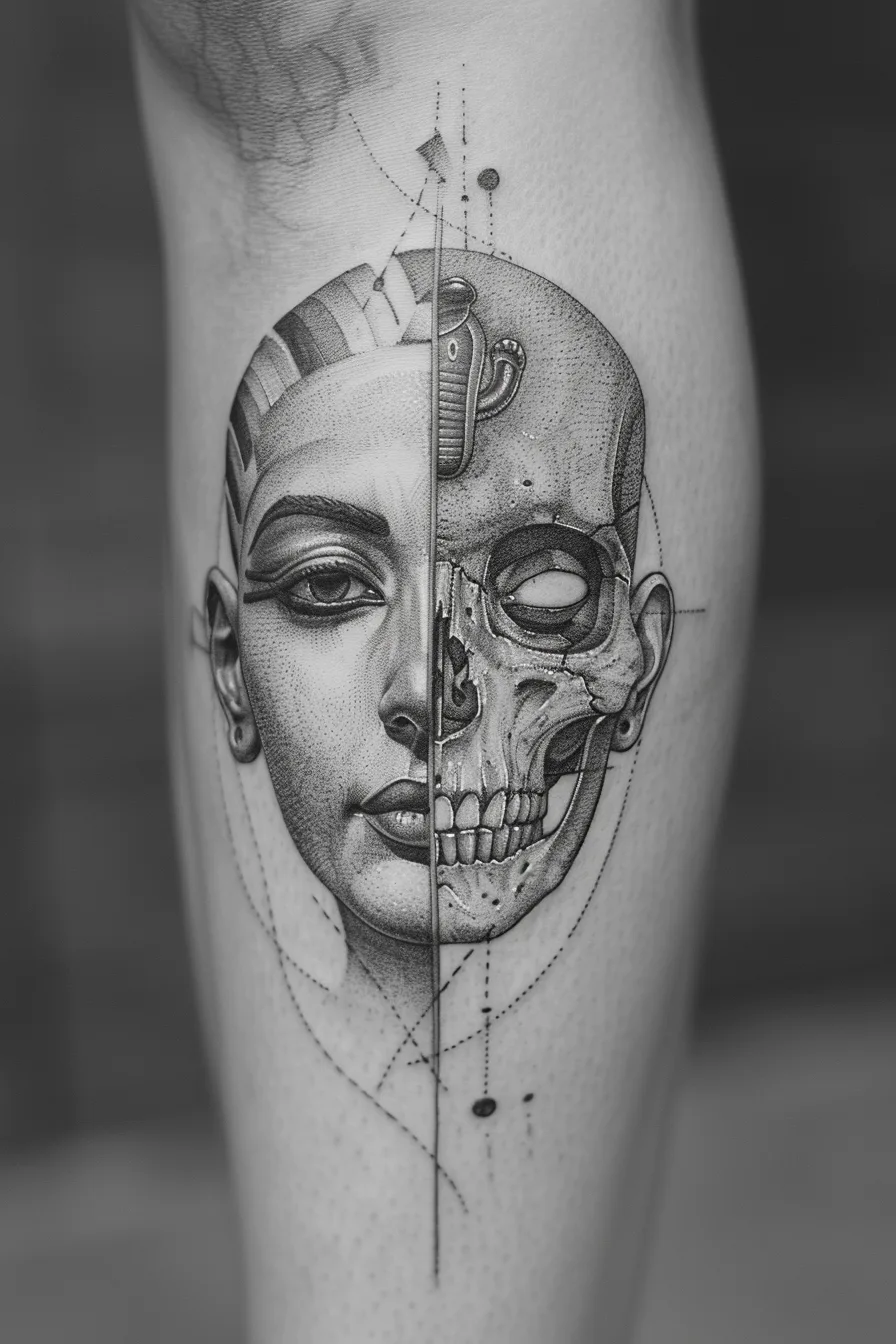
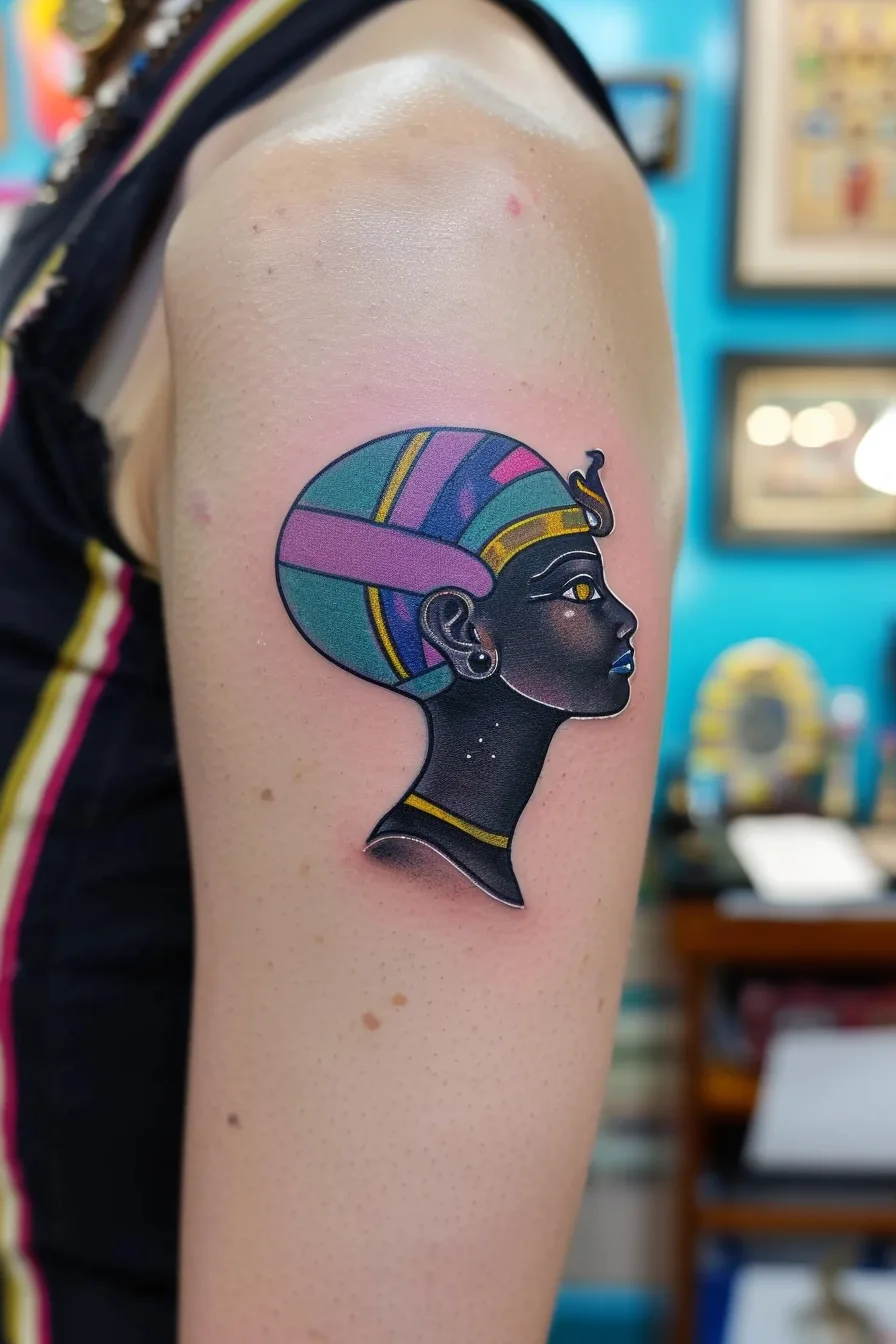

Best Placements For Tattoo
When it comes to getting a King Tut tattoo, you have several options for placement.
The arm, leg, neck, chest, and back are all great areas to consider.
Each location offers its own unique advantages, so it's important to choose the one that best fits your personal style and preferences.
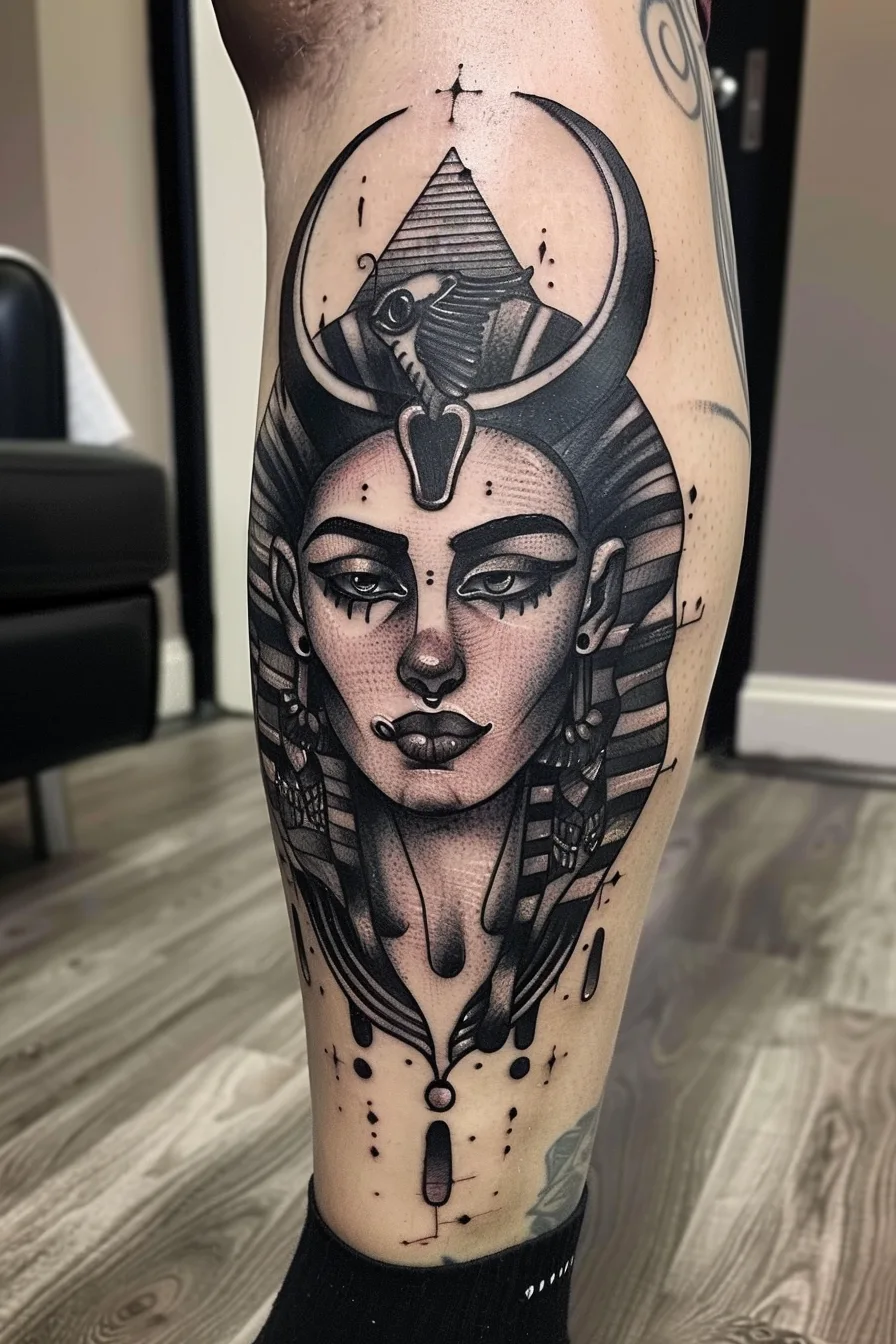
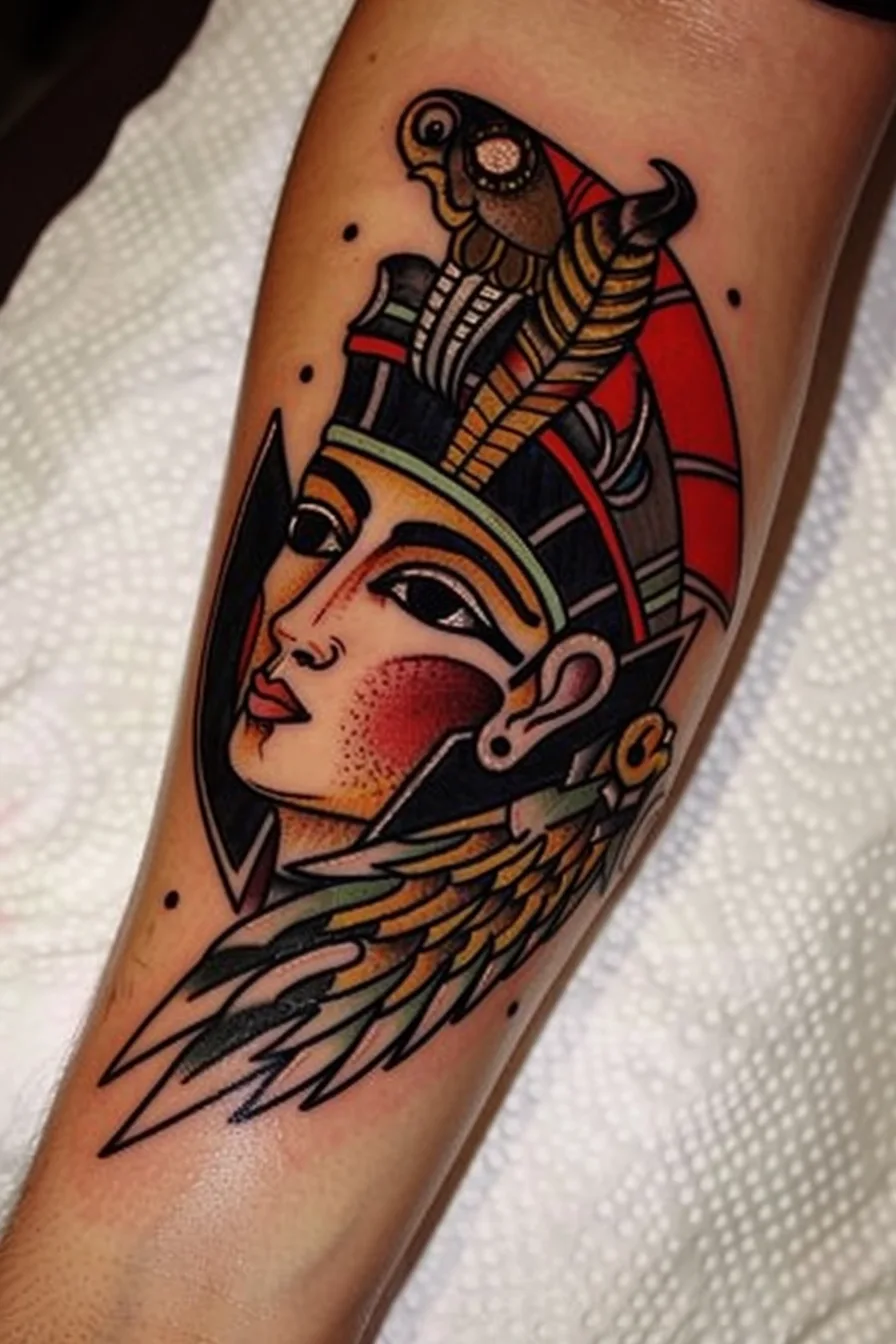
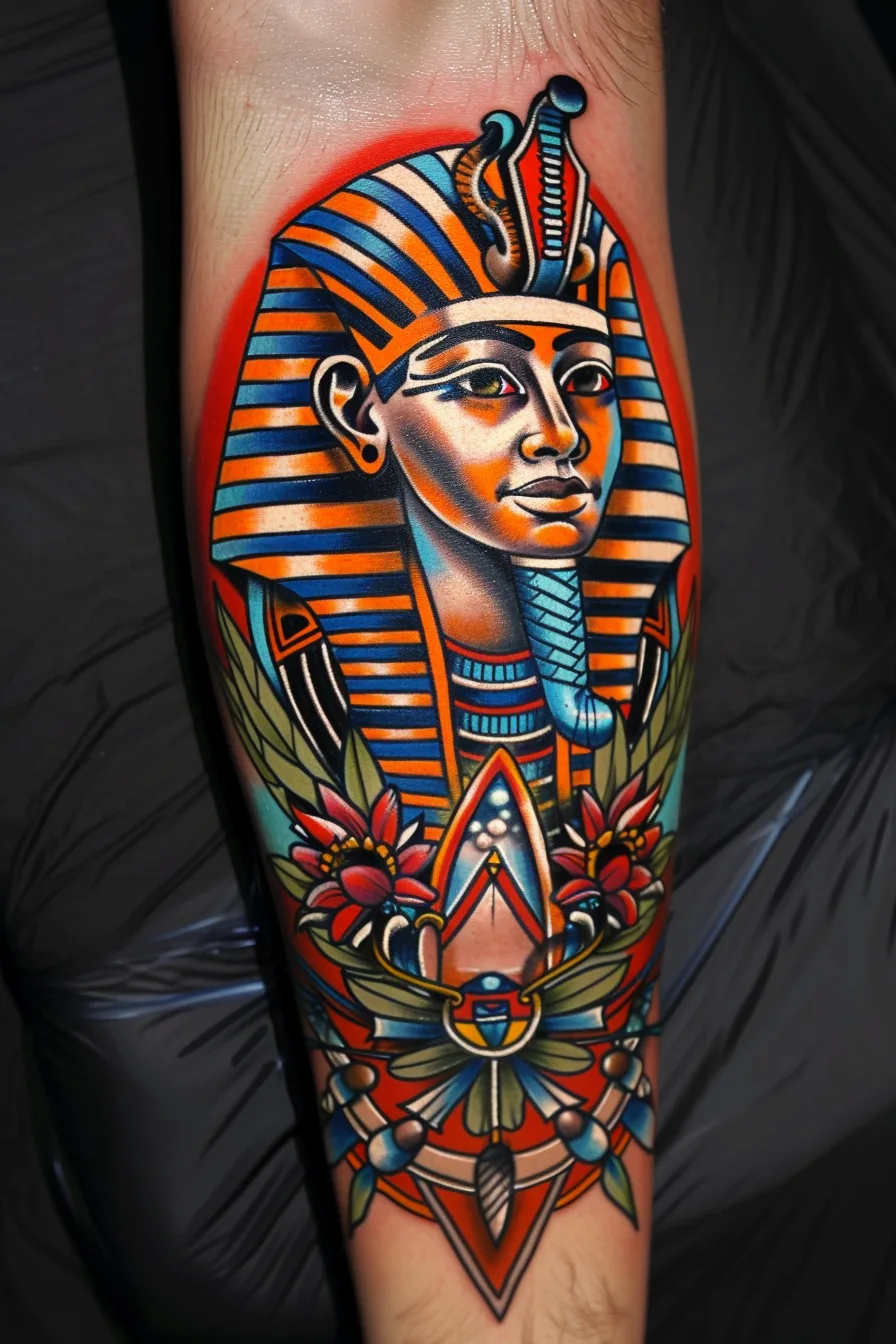
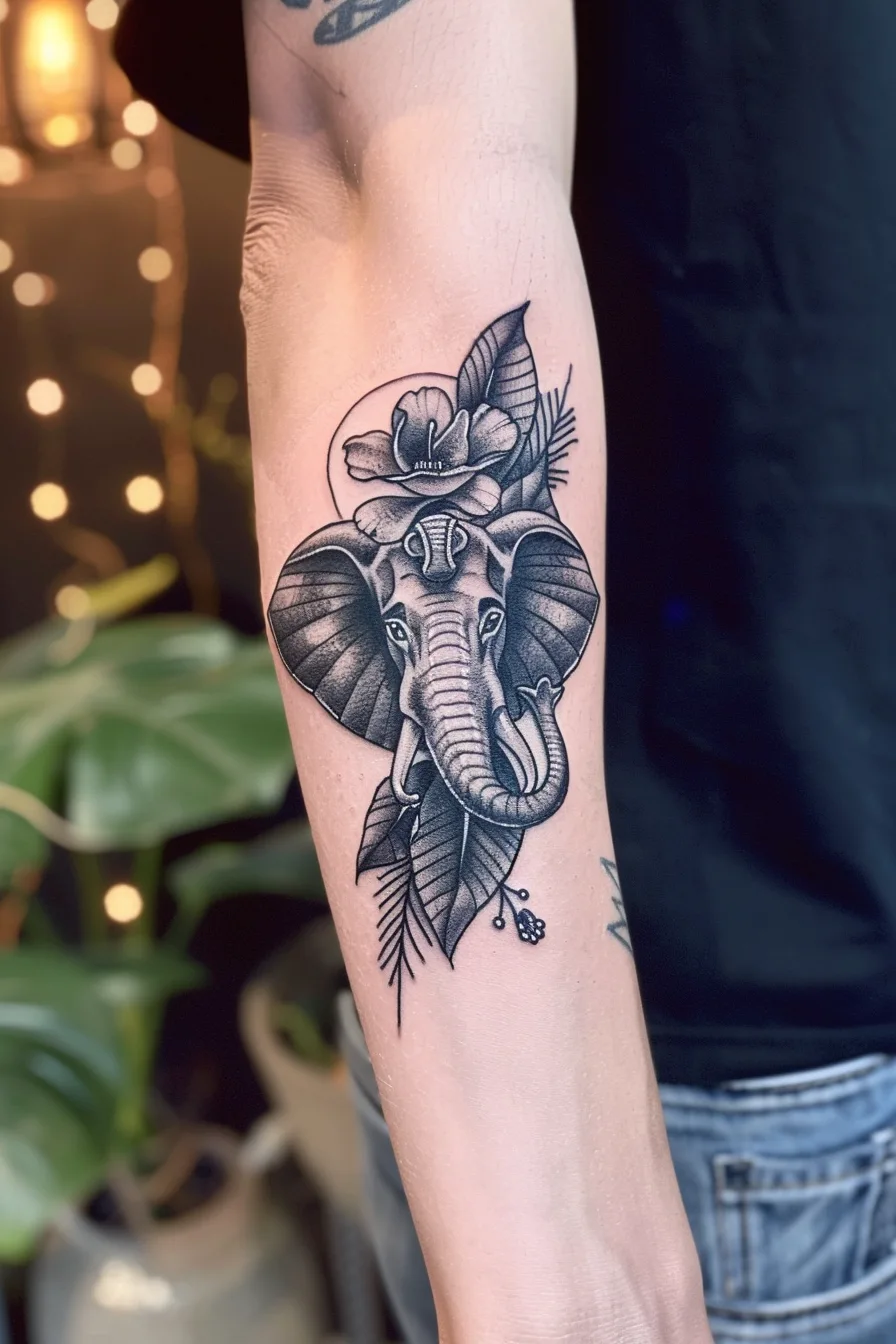
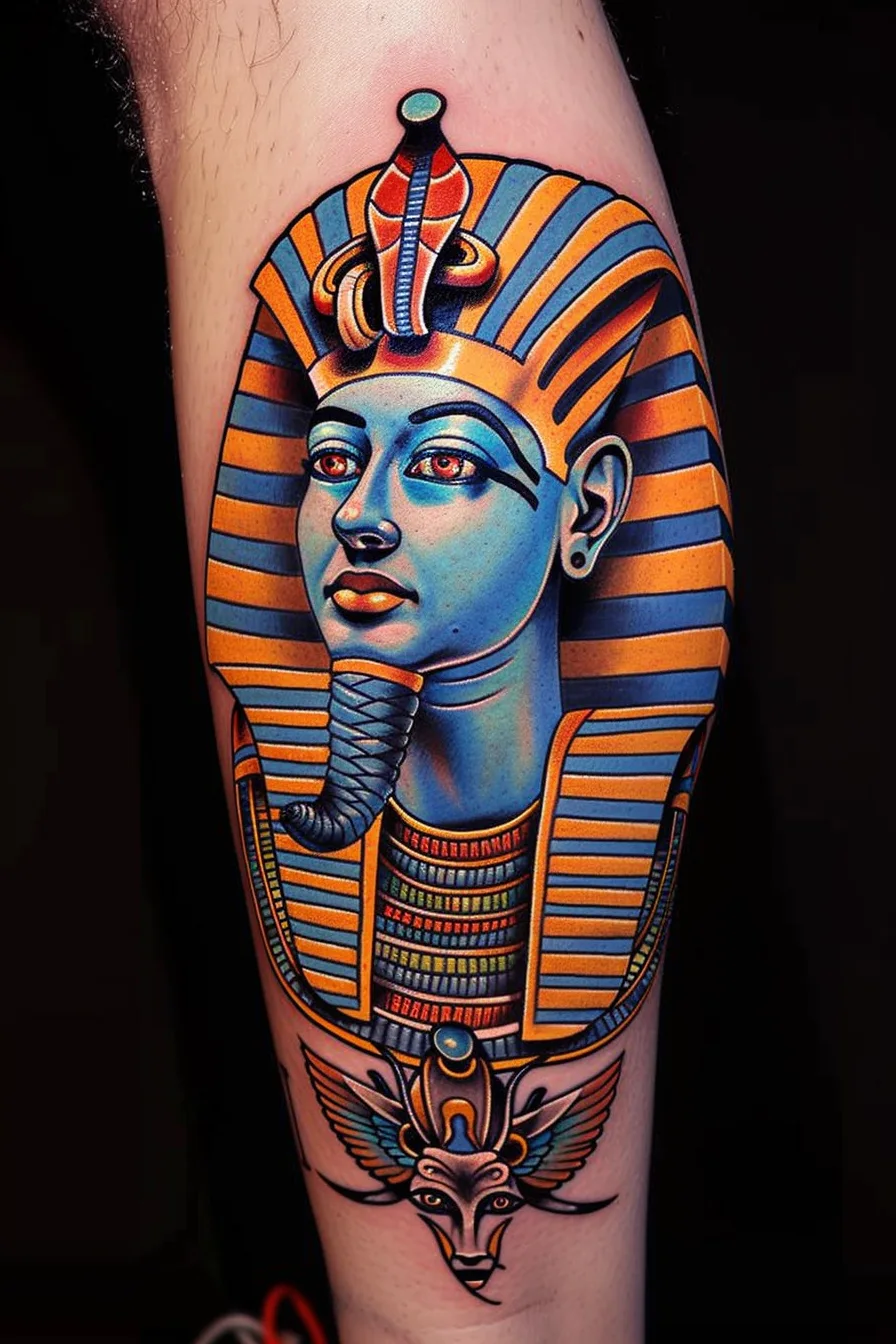
Arm
Among the most popular placement choices for a King Tut tattoo are the arm and forearm, which offer ample canvas space to showcase the intricate details and symbolic imagery associated with this iconic figure from ancient Egyptian history.
The muscular definition of the arm provides an ideal canvas, allowing the tattoo to be sized and positioned in a way that complements the natural contours of the body.
Whether you opt for a detailed portrait of the pharaoh himself or a more abstract design incorporating Tut's famous golden mask and other Egyptian motifs, the arm offers a visually striking and meaningful location for this timeless tattoo.
The exposed placement also makes it easy to show off your ink to family and friends.
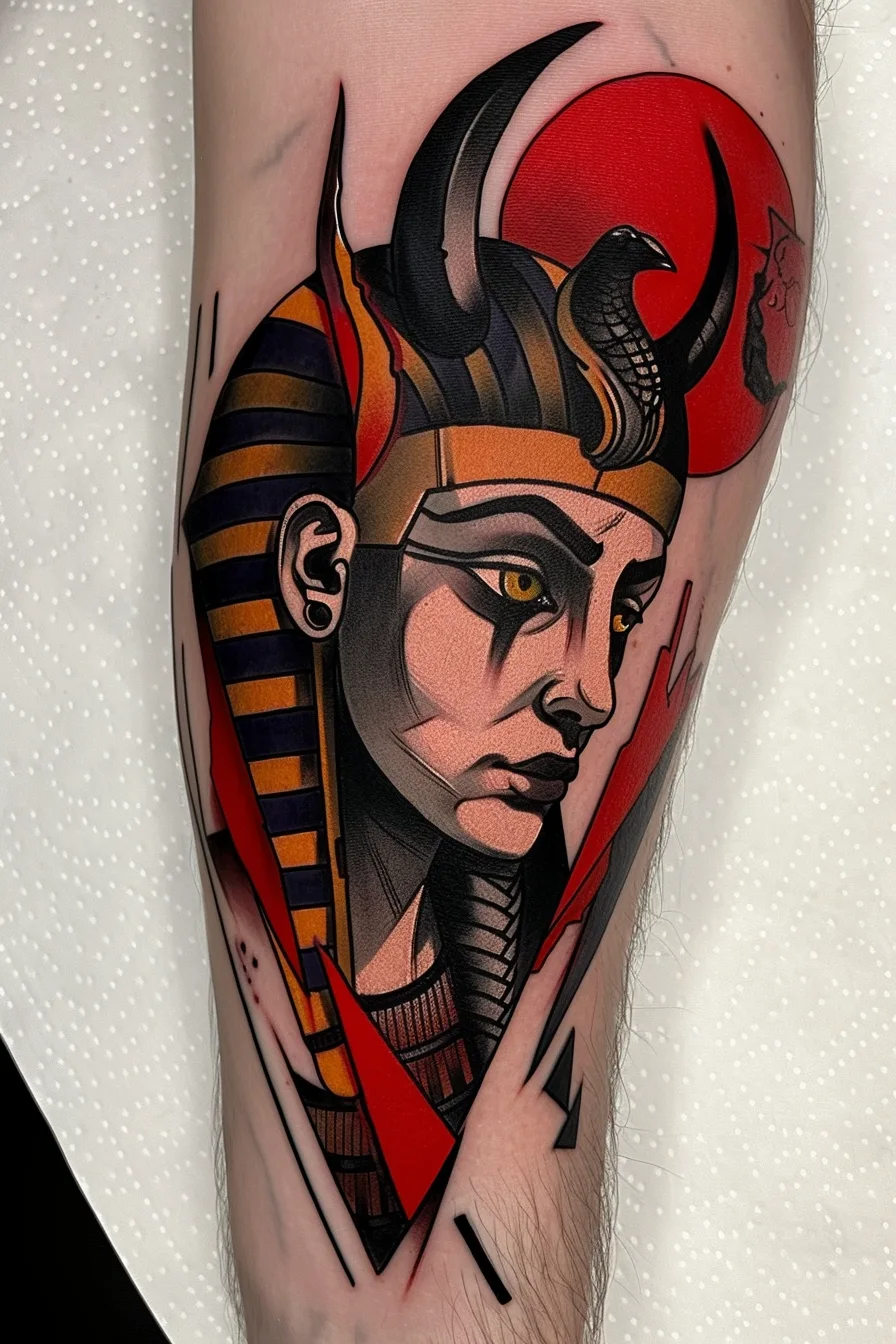
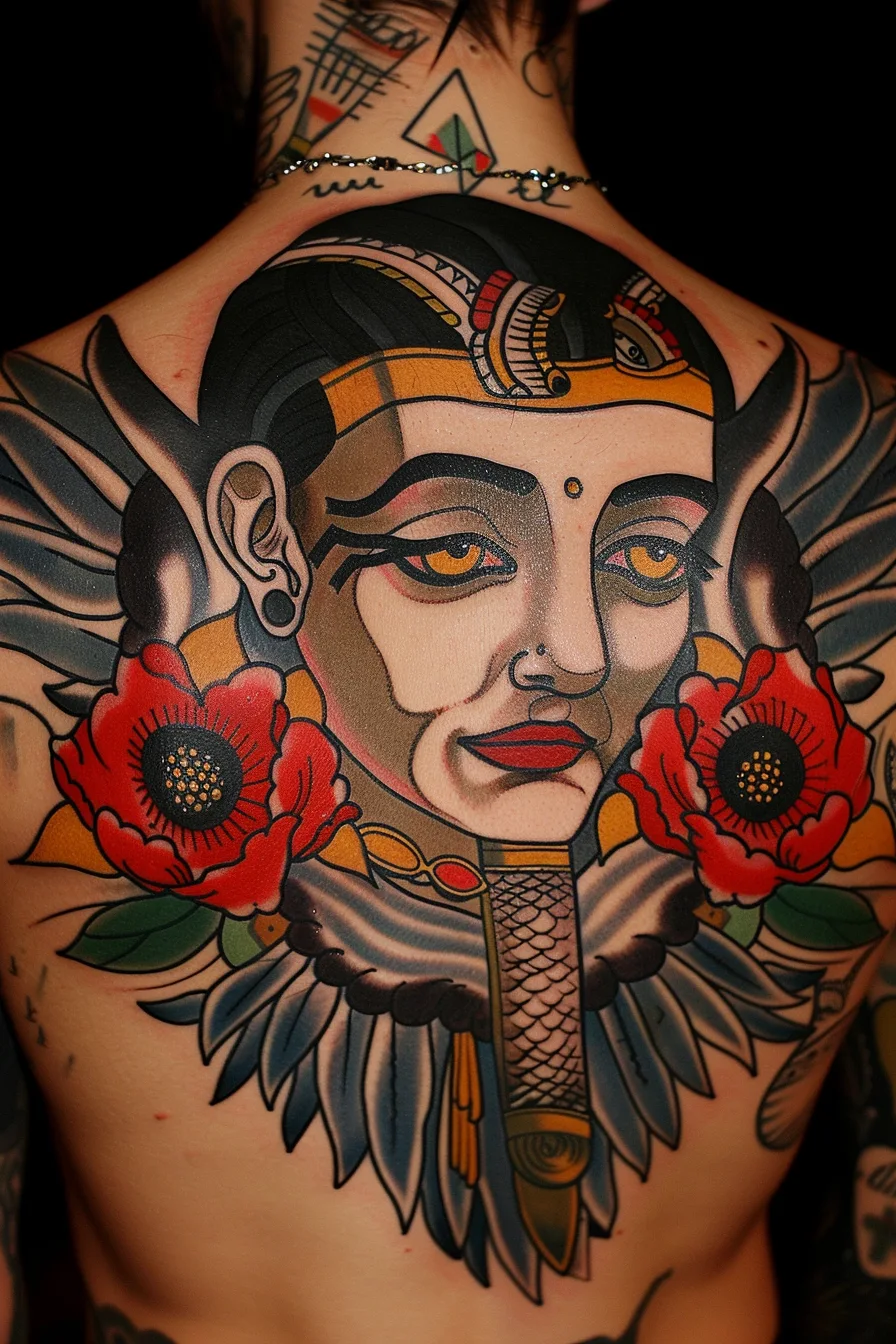
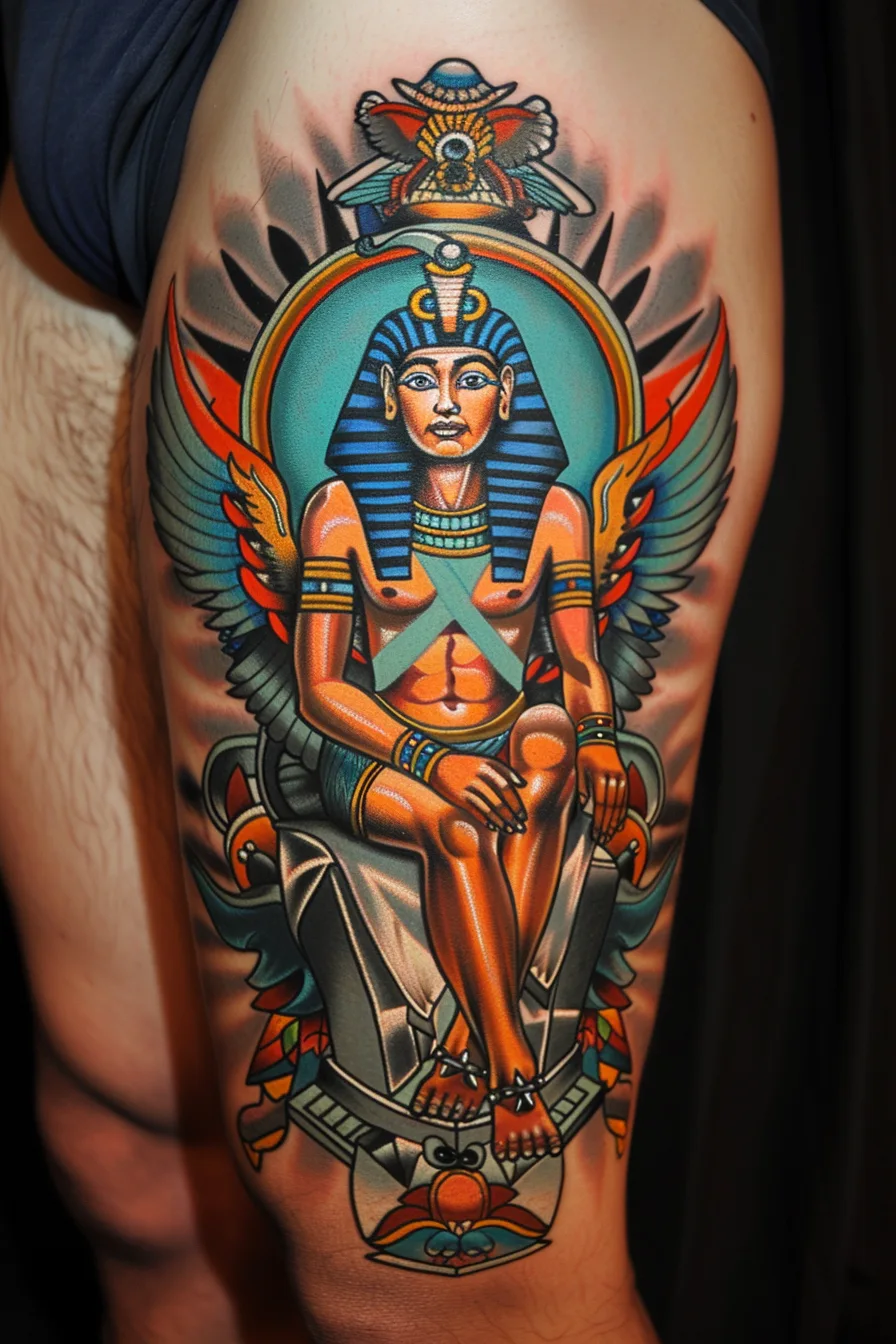
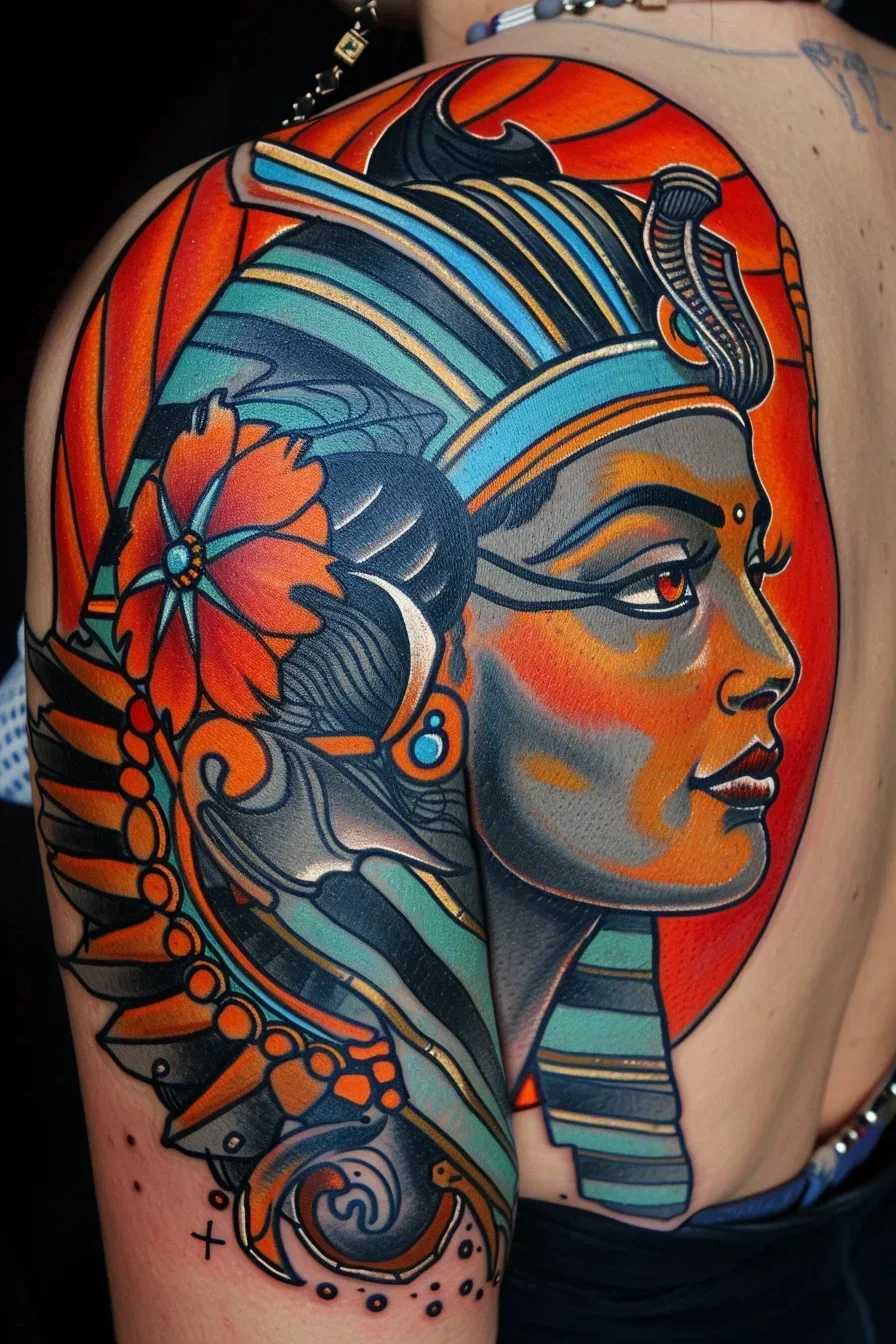
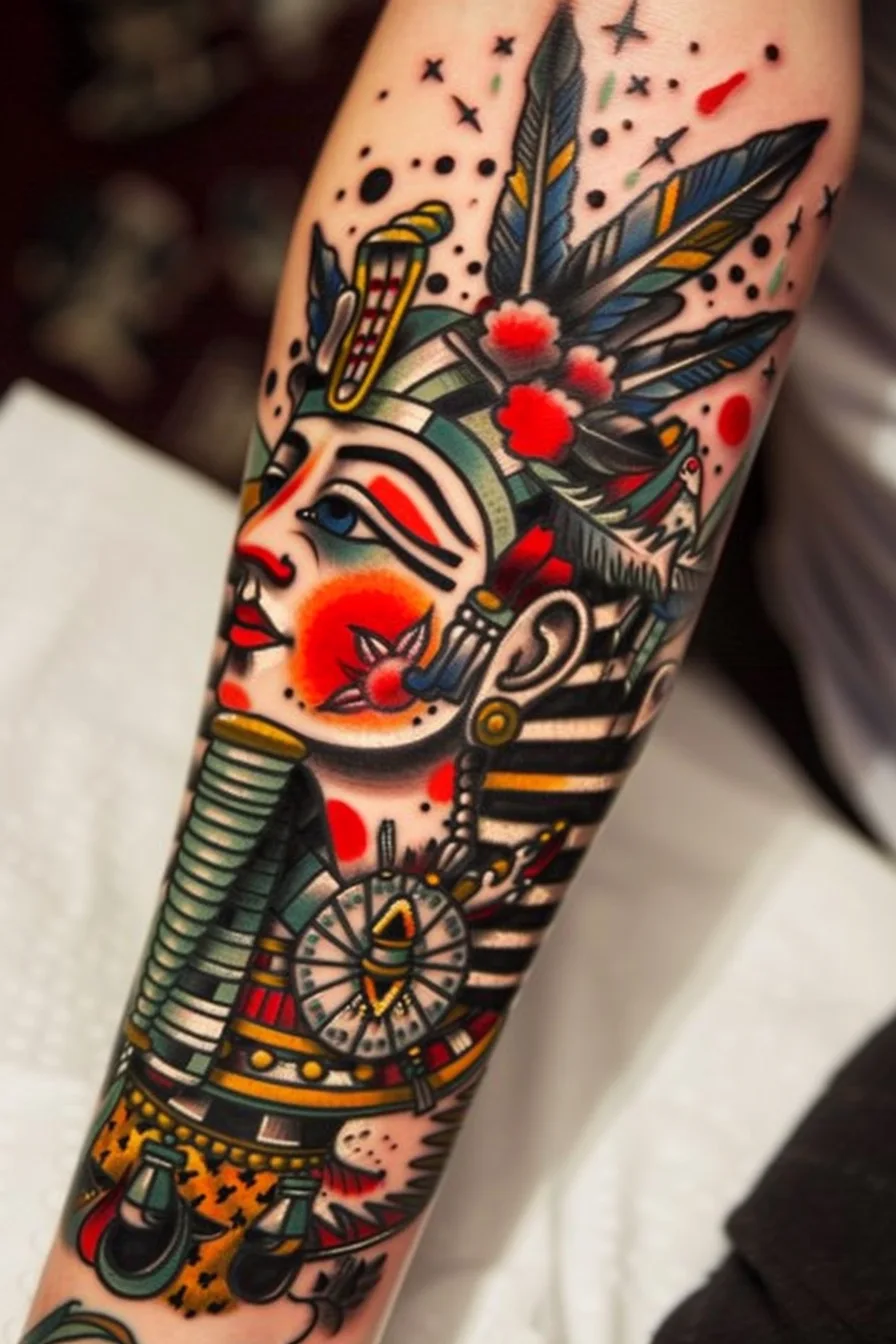
Leg
Alternatively, the leg provides an attractive canvas for a King Tut tattoo, offering versatile placement options that can showcase the design prominently.
The leg allows for various leg designs, from a small, subtle depiction on the ankle to a larger, more impactful piece cascading down the calf or wrapping around the thigh.
Leg placement can be both practical and visually striking, depending on your personal preferences and the intended impact of the tattoo.
Whether you envision a King Tut tattoo peeking out from beneath shorts or proudly displayed on your lower leg, the leg presents an engaging canvas to commemorate this iconic pharaoh.
With thoughtful placement, the King Tut tattoo can become a captivating addition to your leg art.
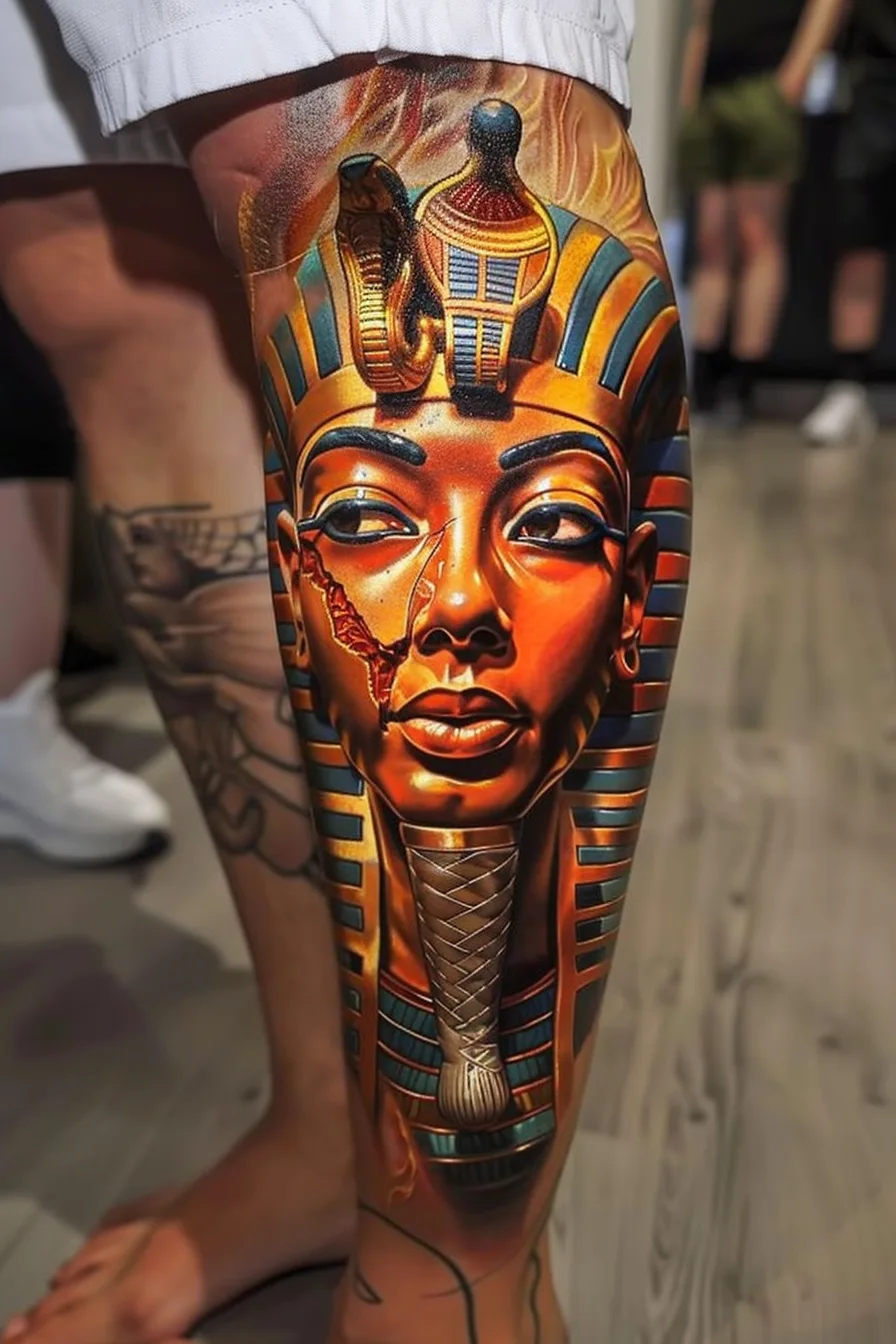
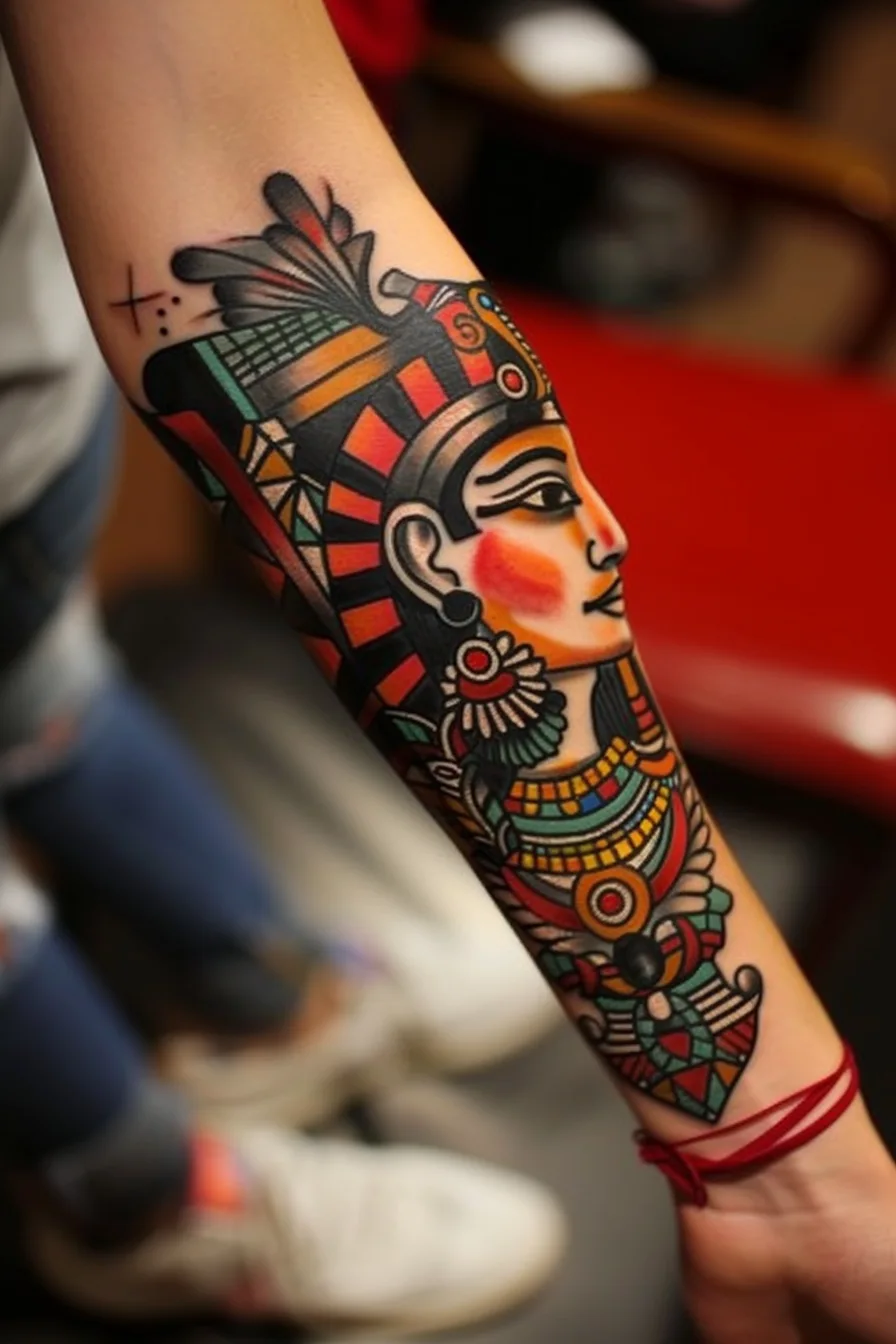
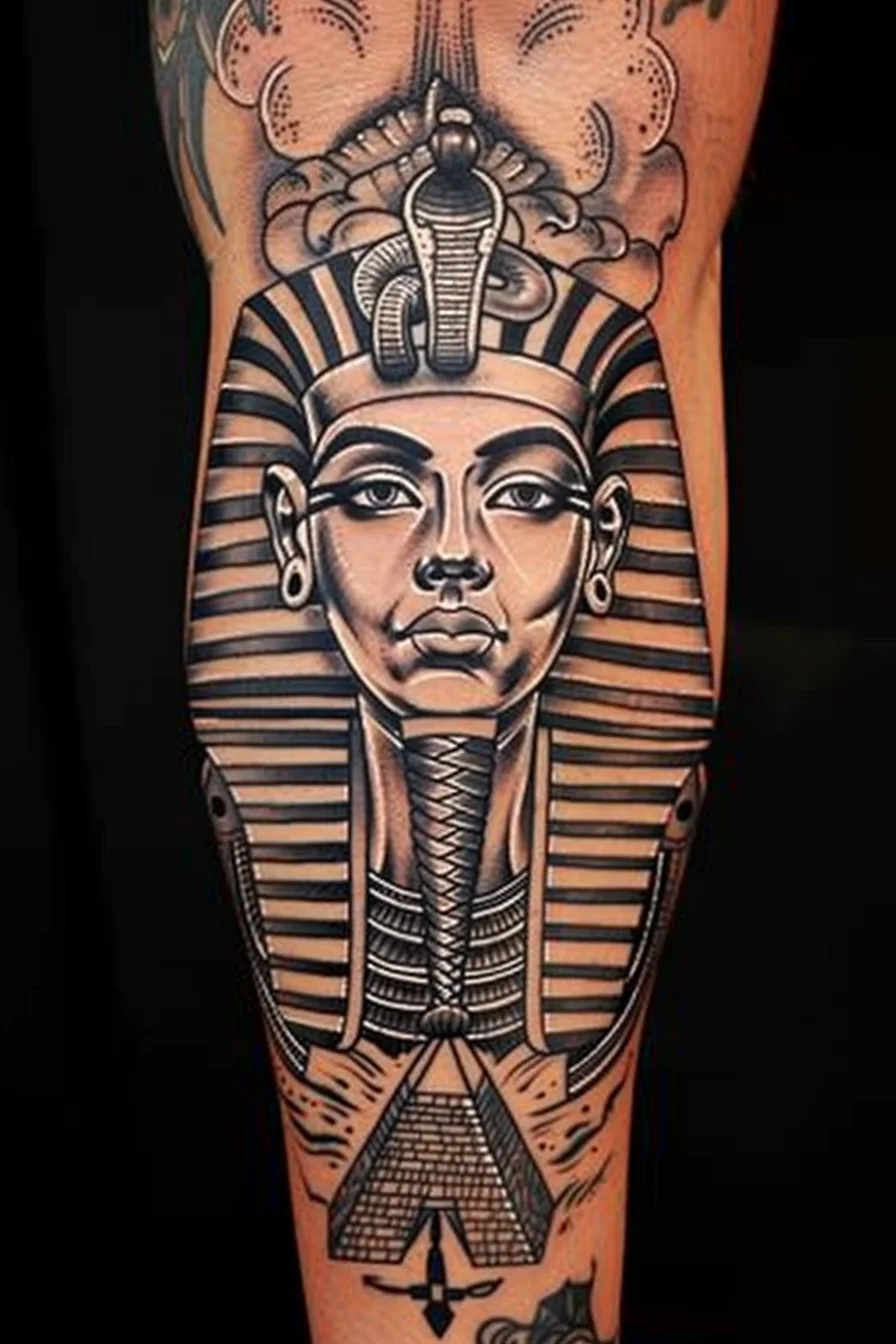
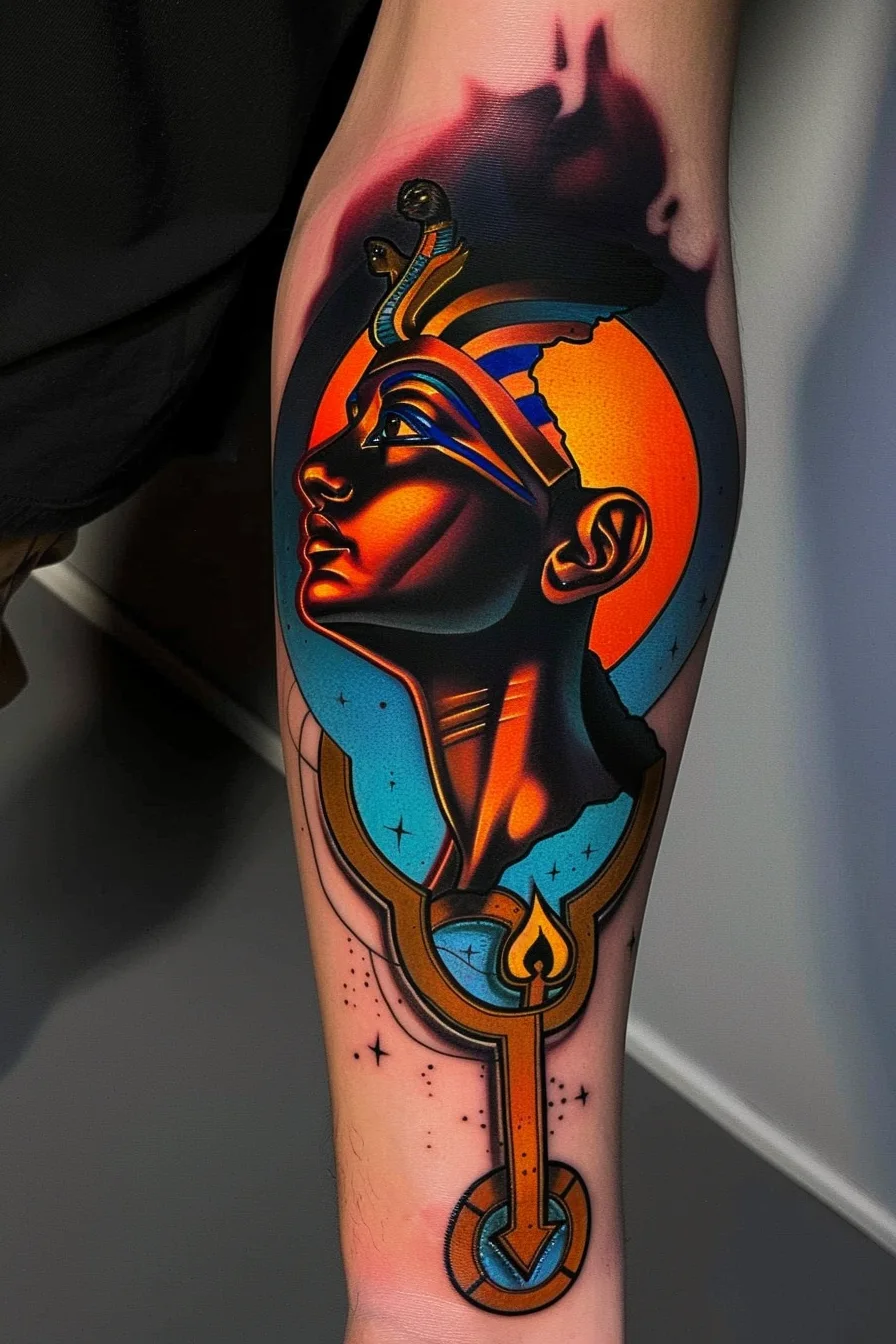

Neck
The neck presents a prominent and highly visible canvas for a King Tut tattoo, allowing the design to command attention and become a bold personal statement.
The chin placement is a captivating option, with the hieroglyphic artwork sitting prominently just beneath the jawline.
Alternatively, the behind the ear placement creates a striking and unique look, with the design peeking out from the hairline for a touch of mystery.
Both placements offer the wearer the opportunity to showcase their passion for ancient Egyptian culture in a stylish and eye-catching manner.
Ultimately, the neck is an ideal canvas to bring the enigmatic visage of King Tut to life through the medium of tattoo art.
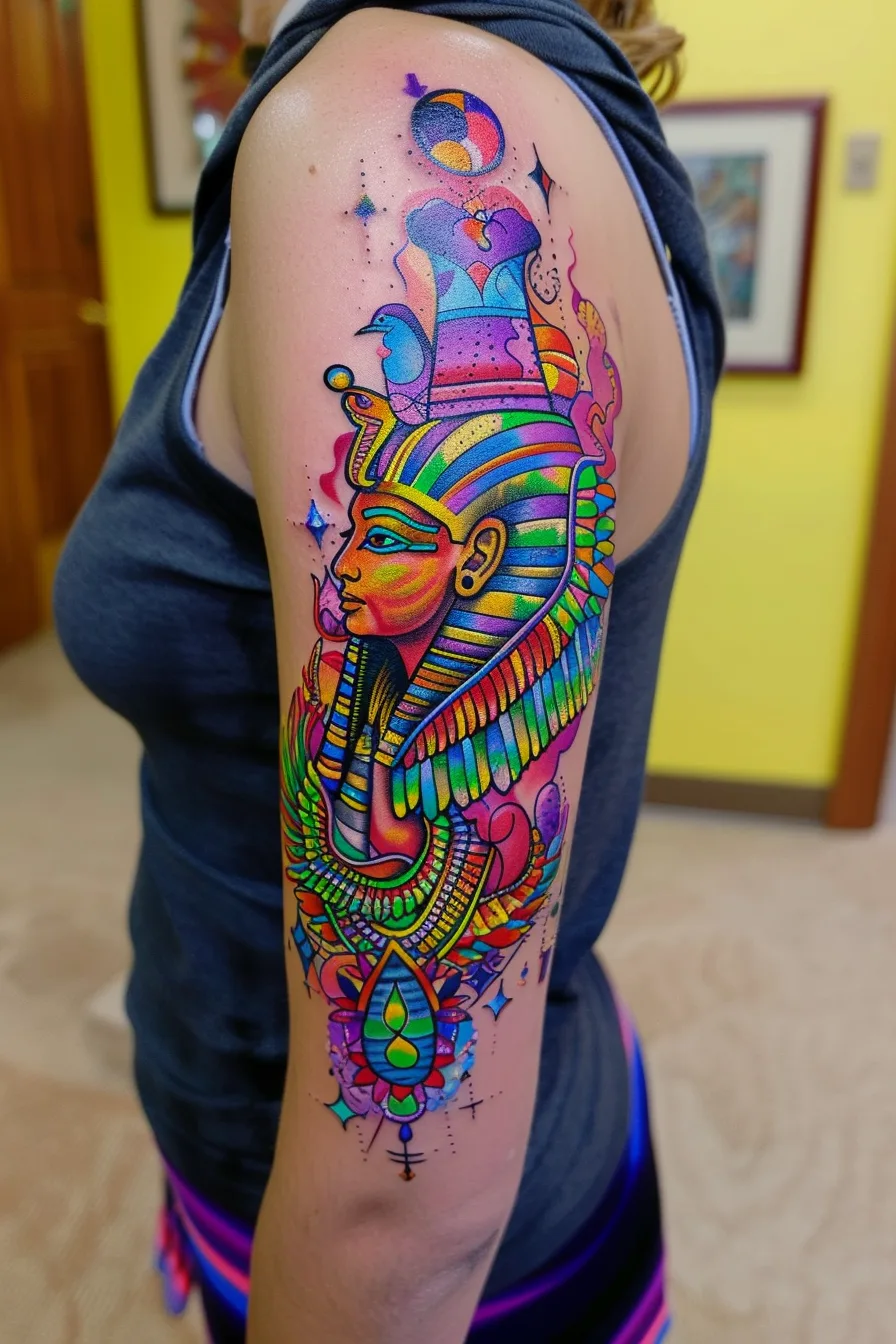
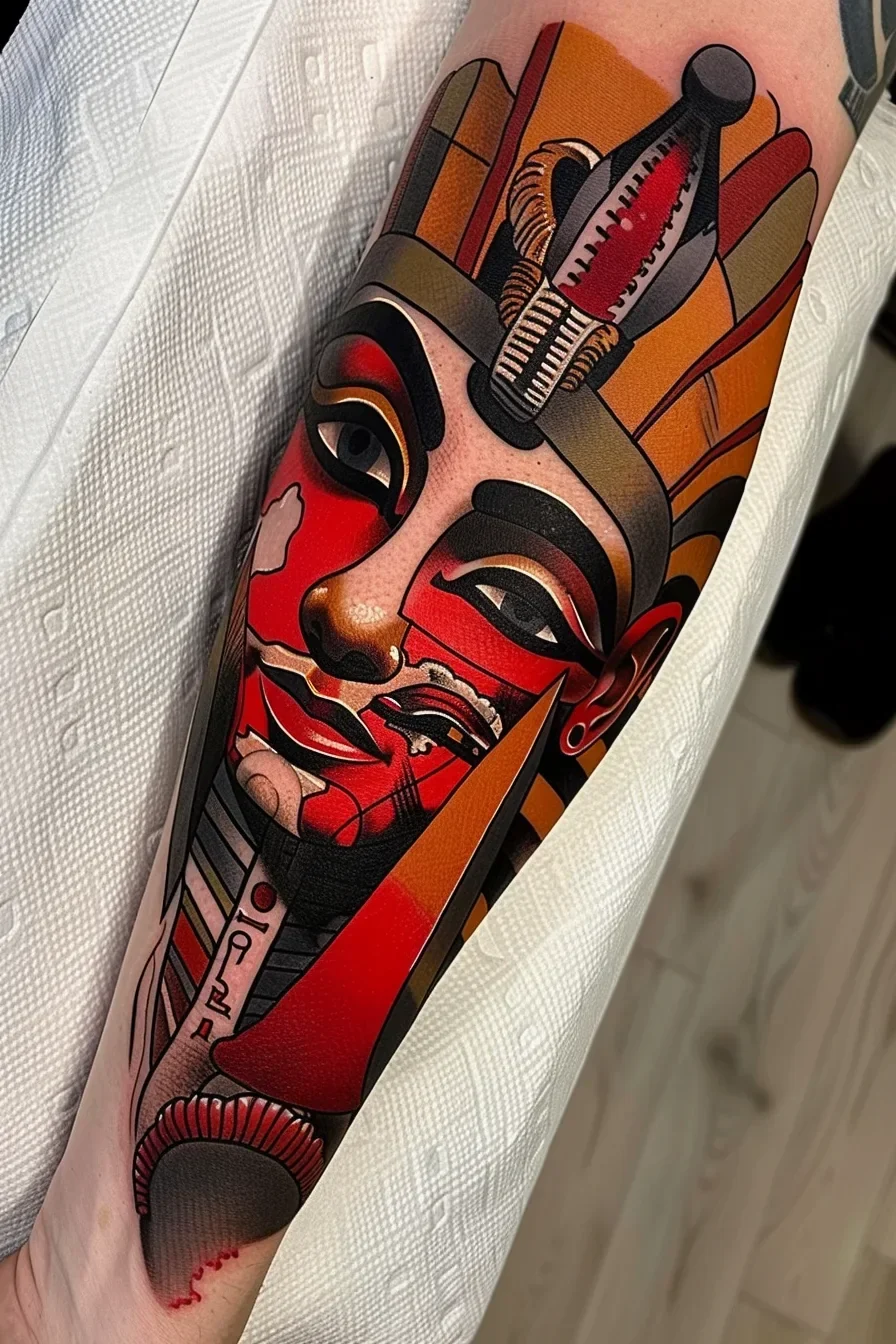
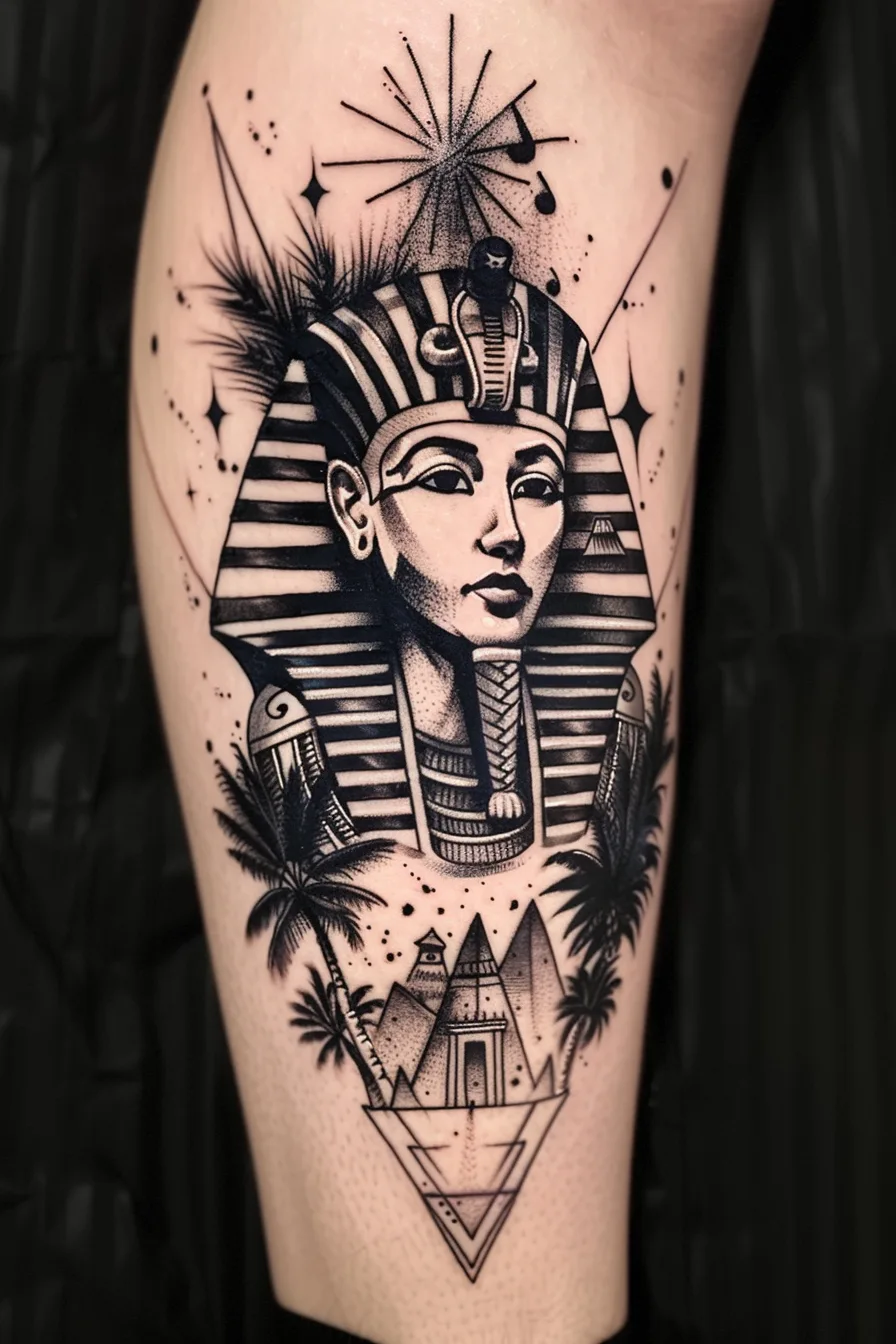
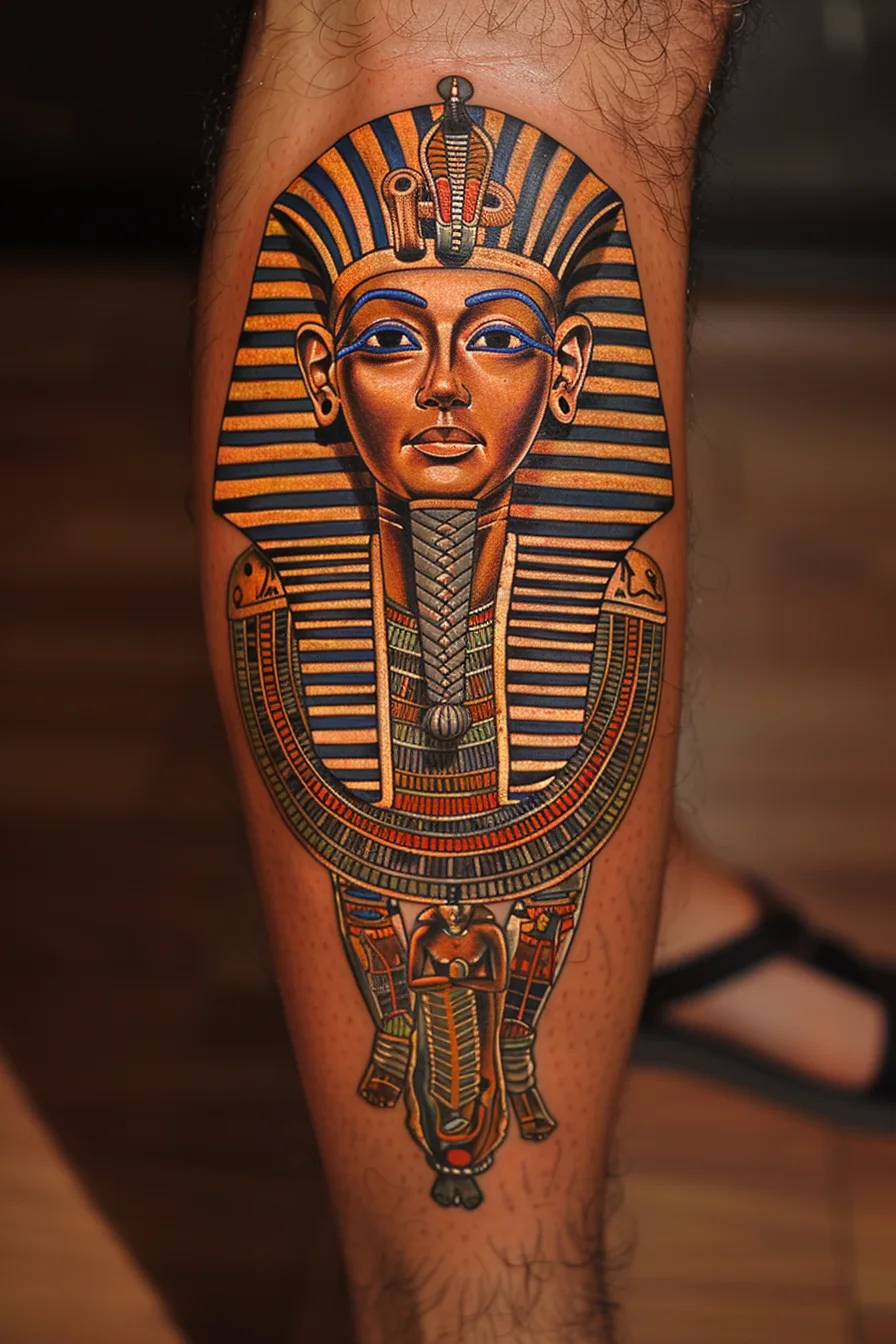
Chest
Positioning a King Tut tattoo on the chest offers a commanding and central placement, allowing the design to serve as a prominent visual focal point. The expansive canvas of the chest provides ample space to showcase intricate hieroglyphic artwork or a larger-than-life rendering of the pharaoh's iconic visage. This placement affords the wearer the opportunity to proudly display their reverence for ancient Egyptian history and culture, making the chest a popular choice for those seeking to make a bold, eye-catching statement.
The chest's central location on the body also makes it an ideal spot to commemorate the divine kingship and ceremonial rituals associated with the legendary King Tutankhamun. Placing the tattoo on this prominent area ensures the design will be visible and impactful, serving as a vibrant testament to the wearer's fascination with this iconic figure from the past.
Back
Another popular placement for a King Tut tattoo is the back, which offers a spacious canvas to showcase the grand scale and intricate details of this iconic design. Adorning the back allows the wearer to present a sweeping, majestic interpretation of the pharaoh's likeness or accompanying hieroglyphic symbolism, creating a striking visual statement that captivates onlookers.
The broad surface area of the back provides ample room to incorporate not only the pharaoh's portrait but also the rich cultural significance of ancient Egyptian hieroglyphics, adding depth and meaning to the tattoo. This placement is particularly striking, as the tattoo can be easily displayed or hidden, allowing the wearer to selectively share their connection to the legacy of King Tut.
Hand
Alternatively, individuals may choose to ink a King Tut tattoo on their hand, capitalizing on the intimate and personal nature of this placement. The hand offers a unique canvas for symbolic designs, allowing the wearer to showcase their connection to ancient Egyptian culture in a subtle yet striking way.
Symbolic hand placements, such as the palm or fingers, can imbue the King Tut tattoo with deeper meaning, representing themes of power, protection, or spirituality. Unique hand designs featuring the pharaoh's iconic profile or his renowned funerary mask can lend an air of exclusivity and personal expression.
Whether placed on the top of the hand or along the fingers, a King Tut tattoo in this intimate location becomes a constant reminder of the wearer's reverence for this legendary historical figure.
Conclusion
The King Tut tattoo is a powerful symbol of ancient Egyptian heritage and the enduring legacy of one of the most famous pharaohs.
This tattoo can be designed in various styles and colors, often incorporating additional elements like the ankh or hieroglyphics.
The placement of the tattoo can hold personal significance, making it a meaningful and visually striking body art choice.
